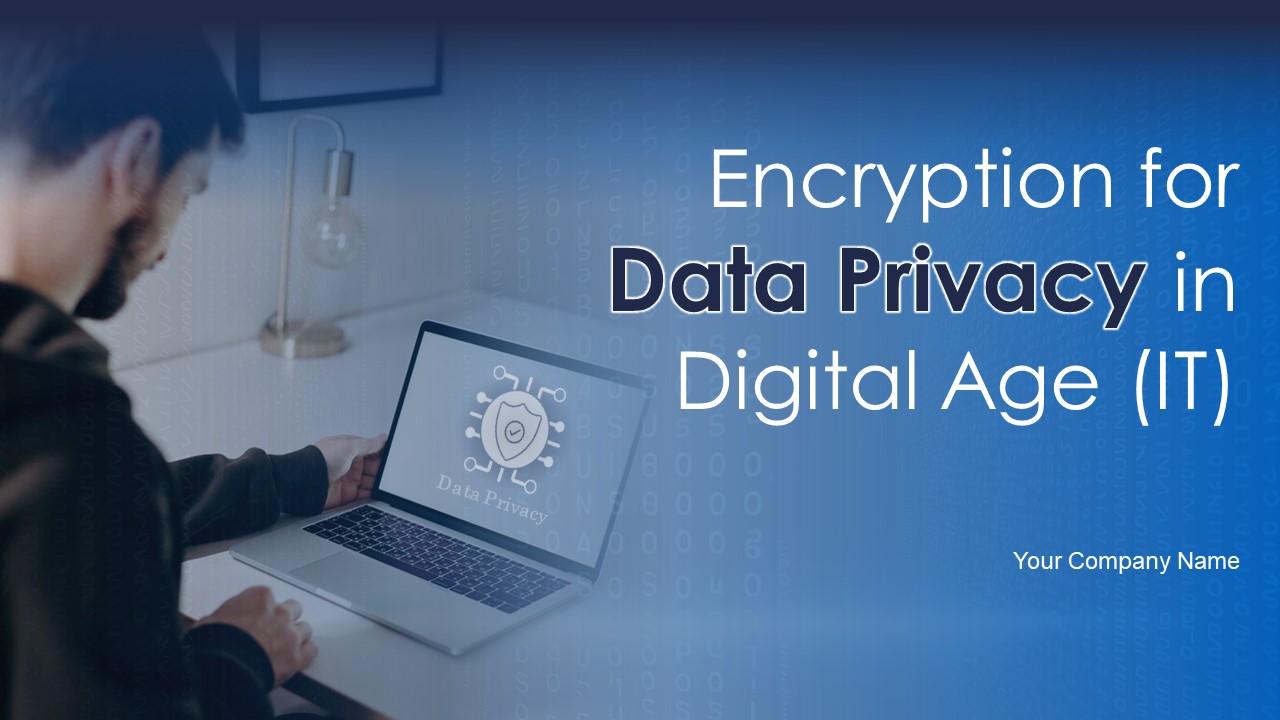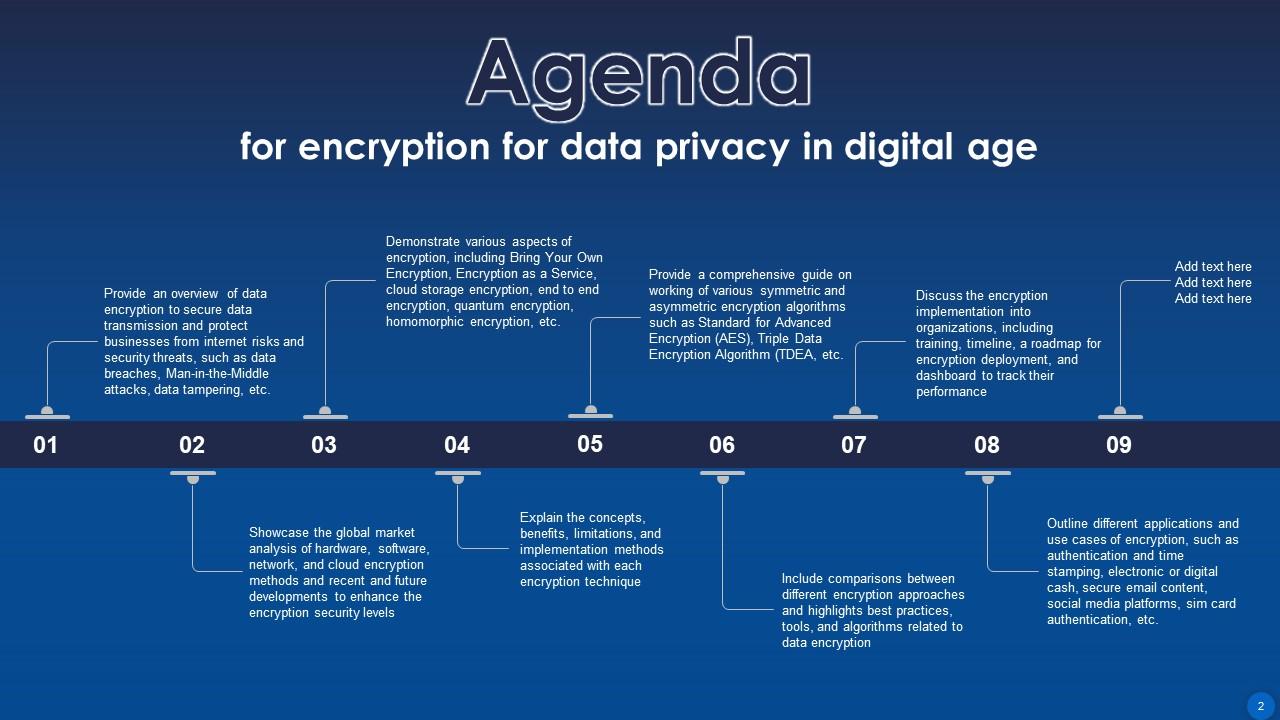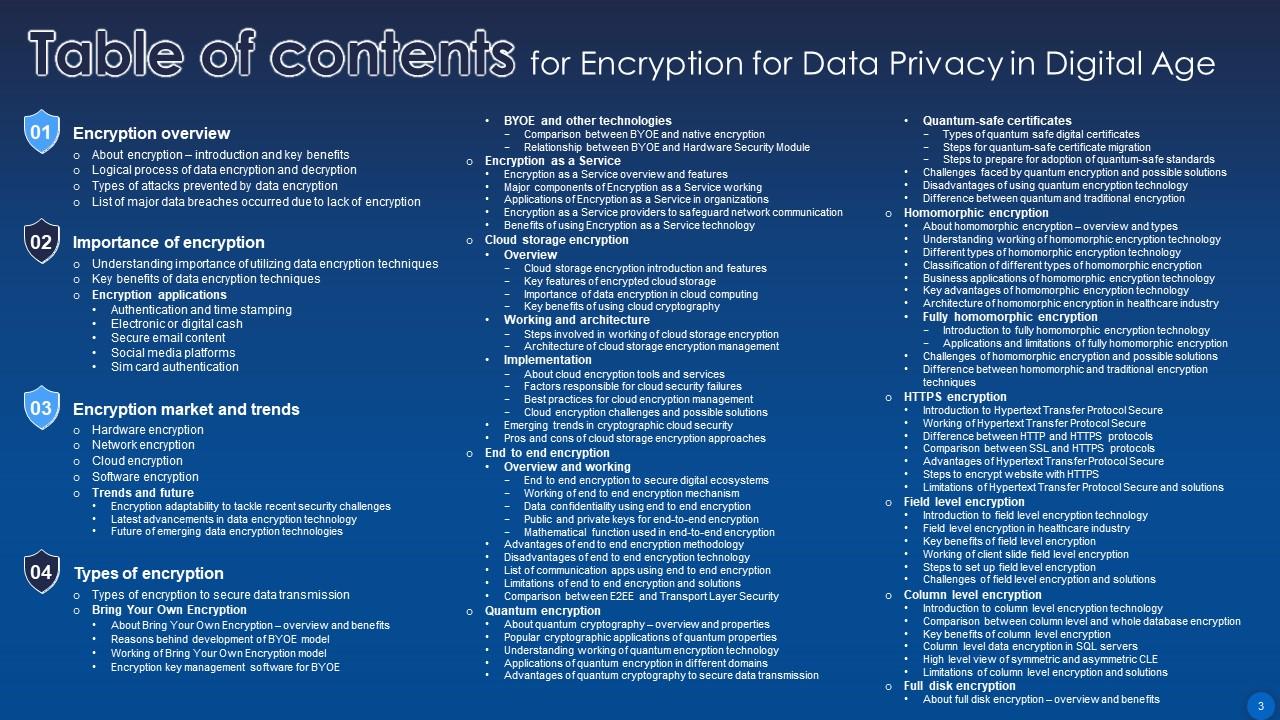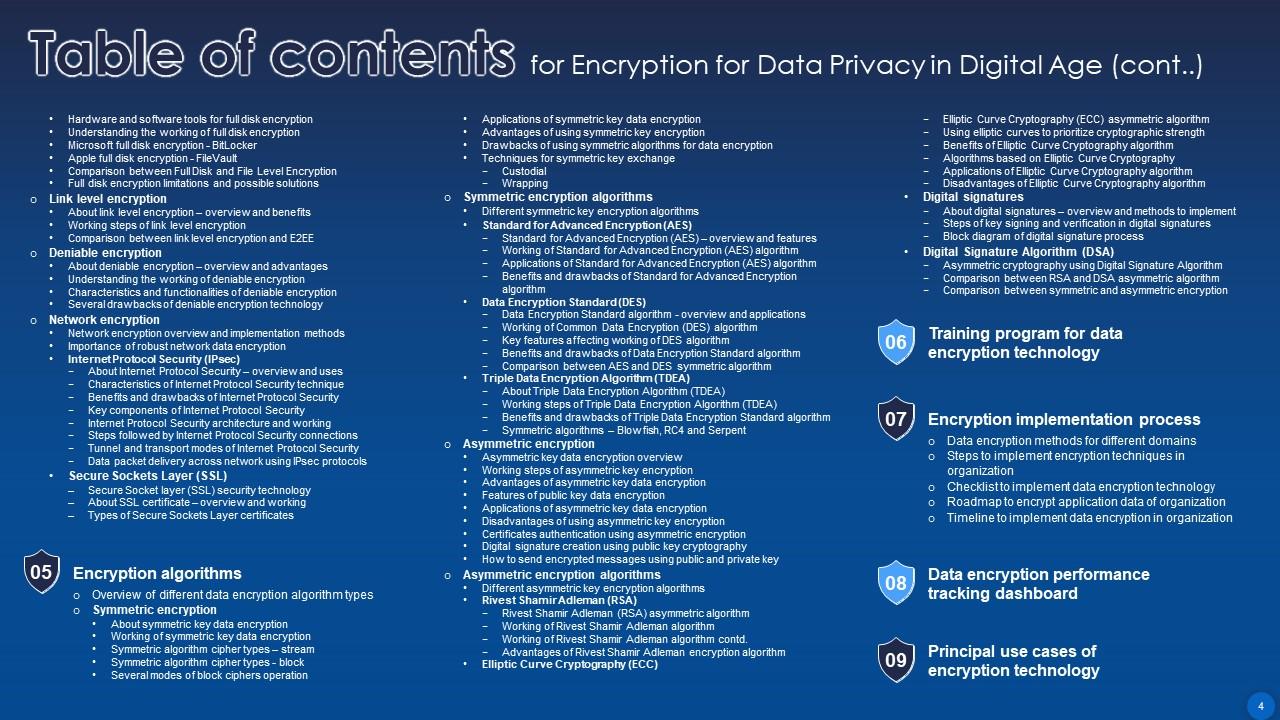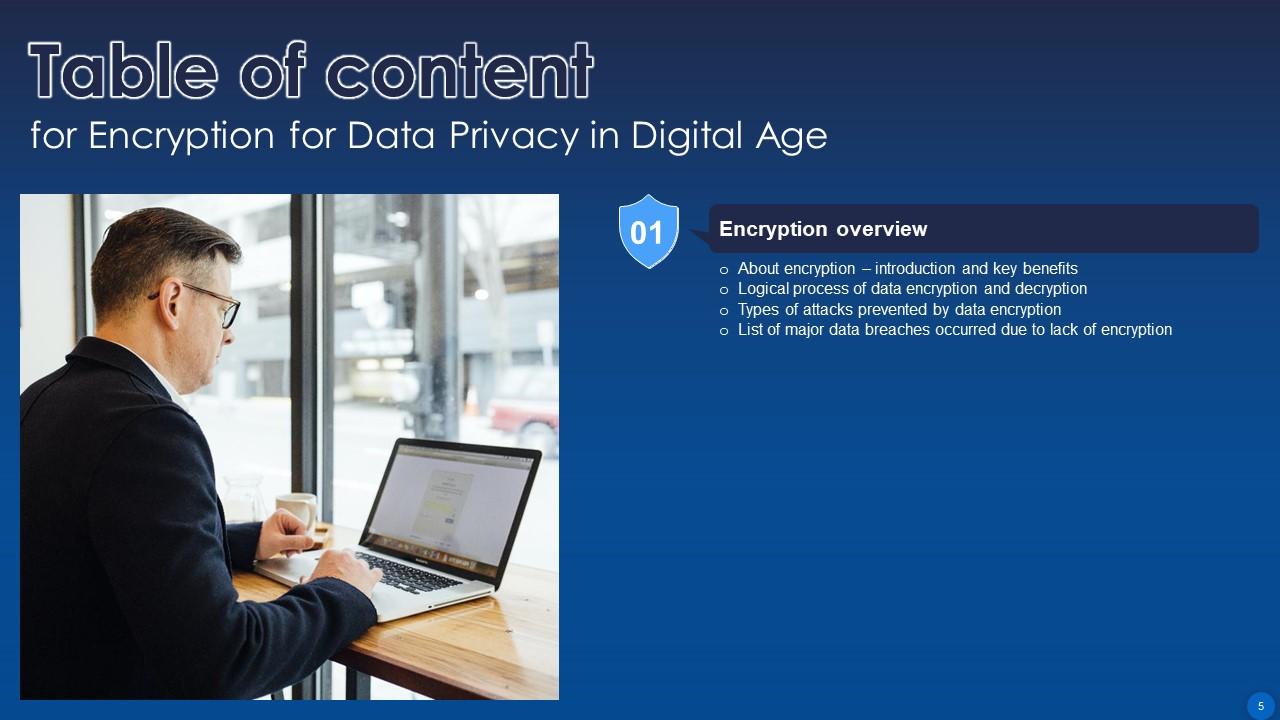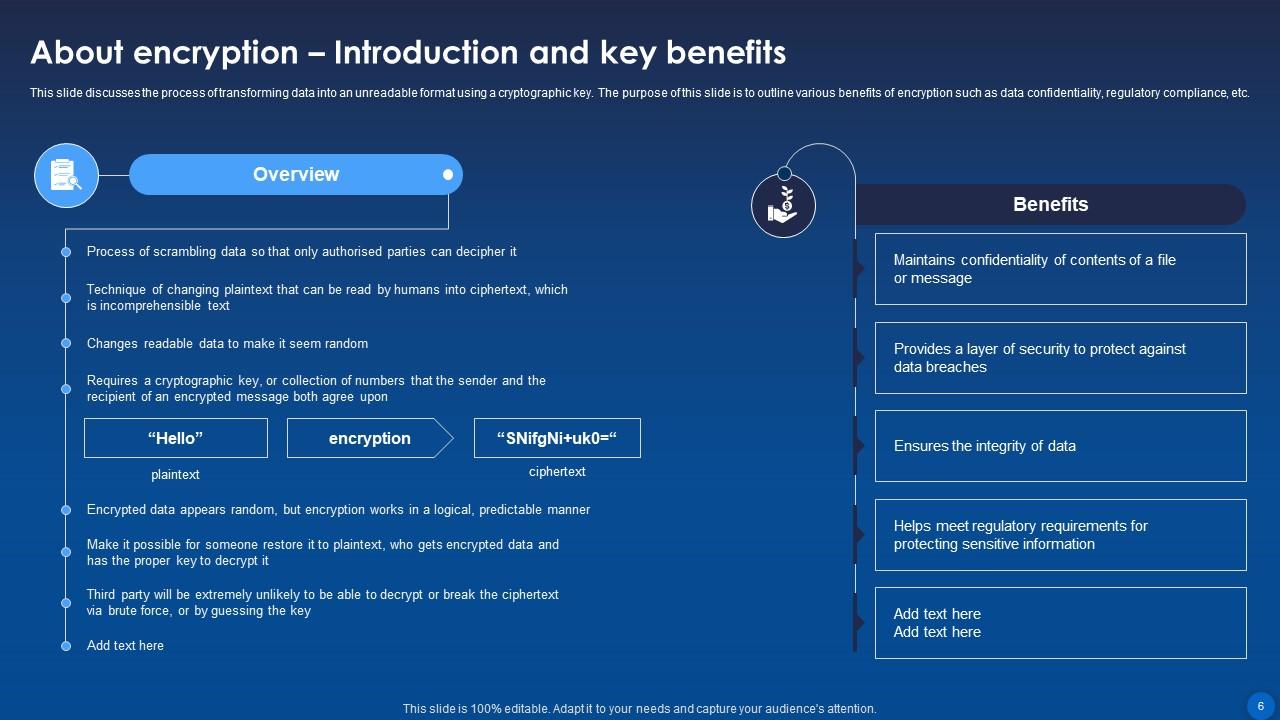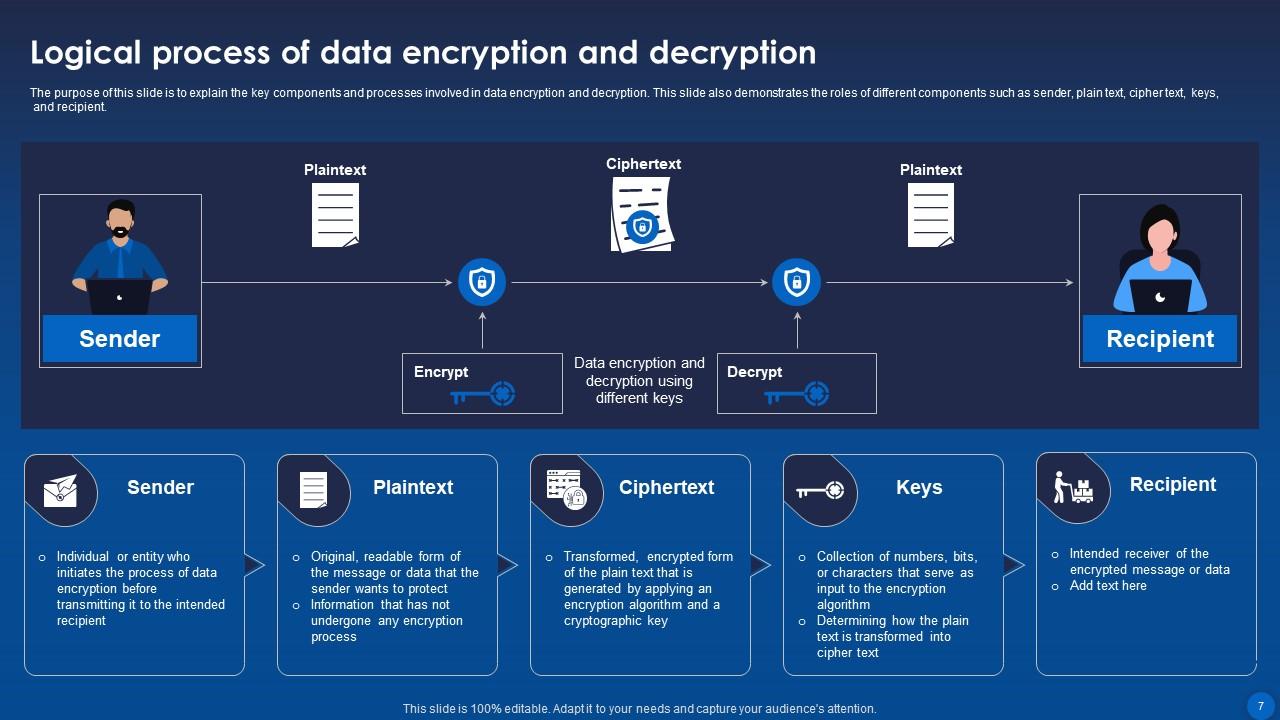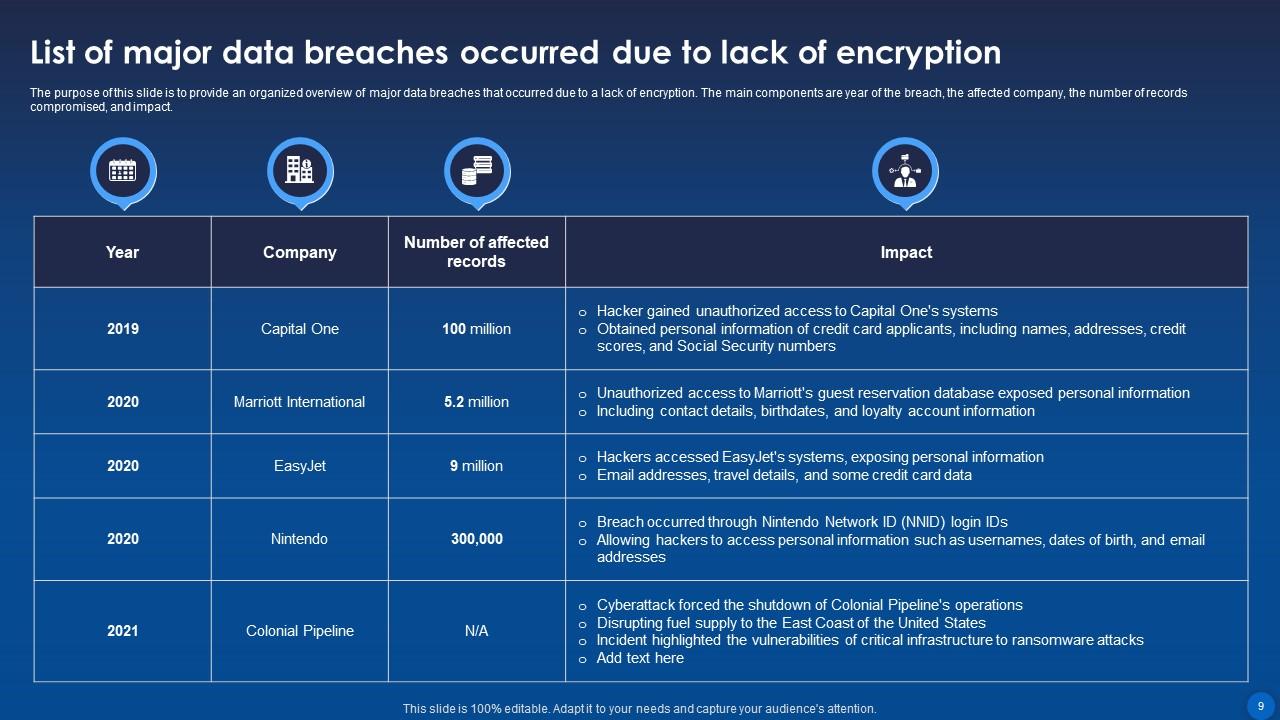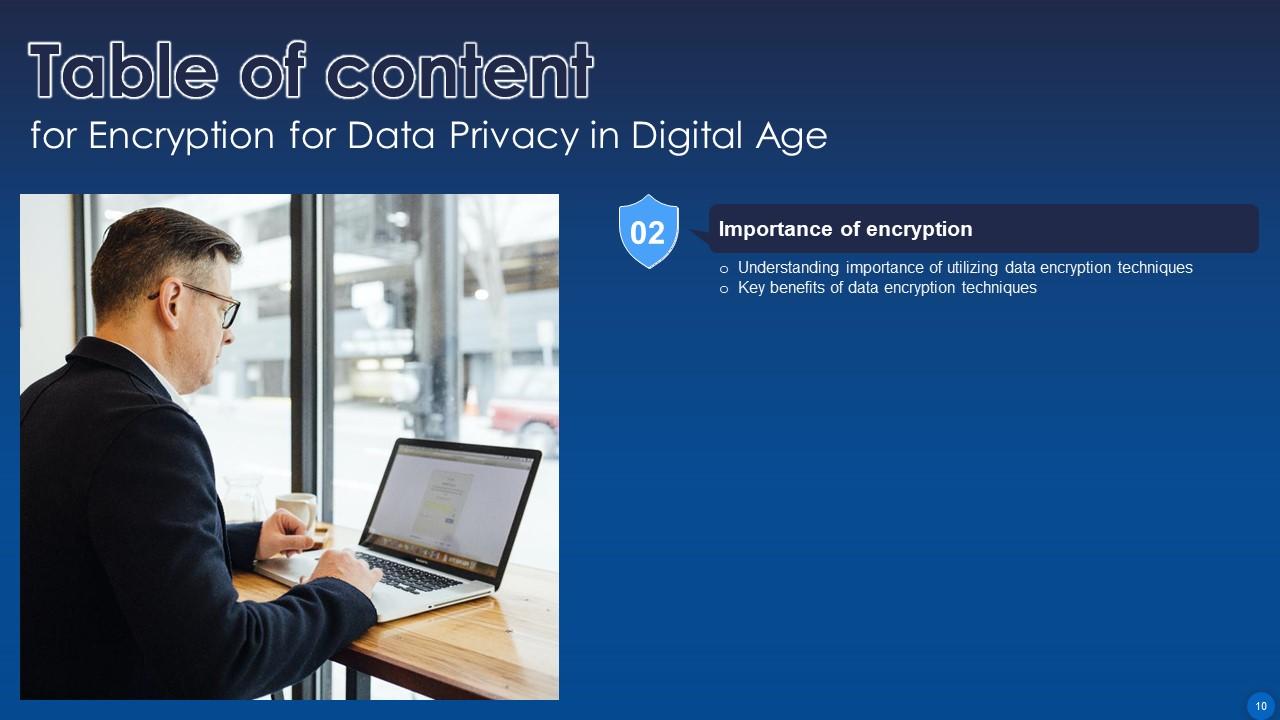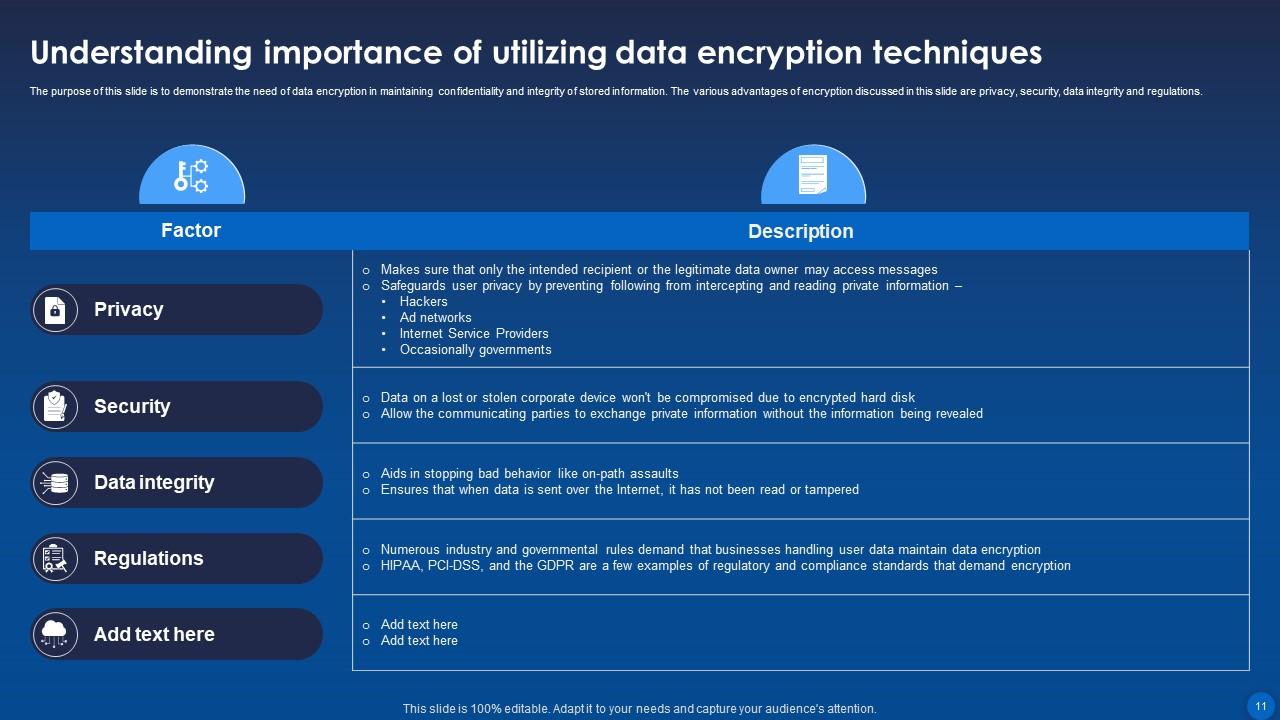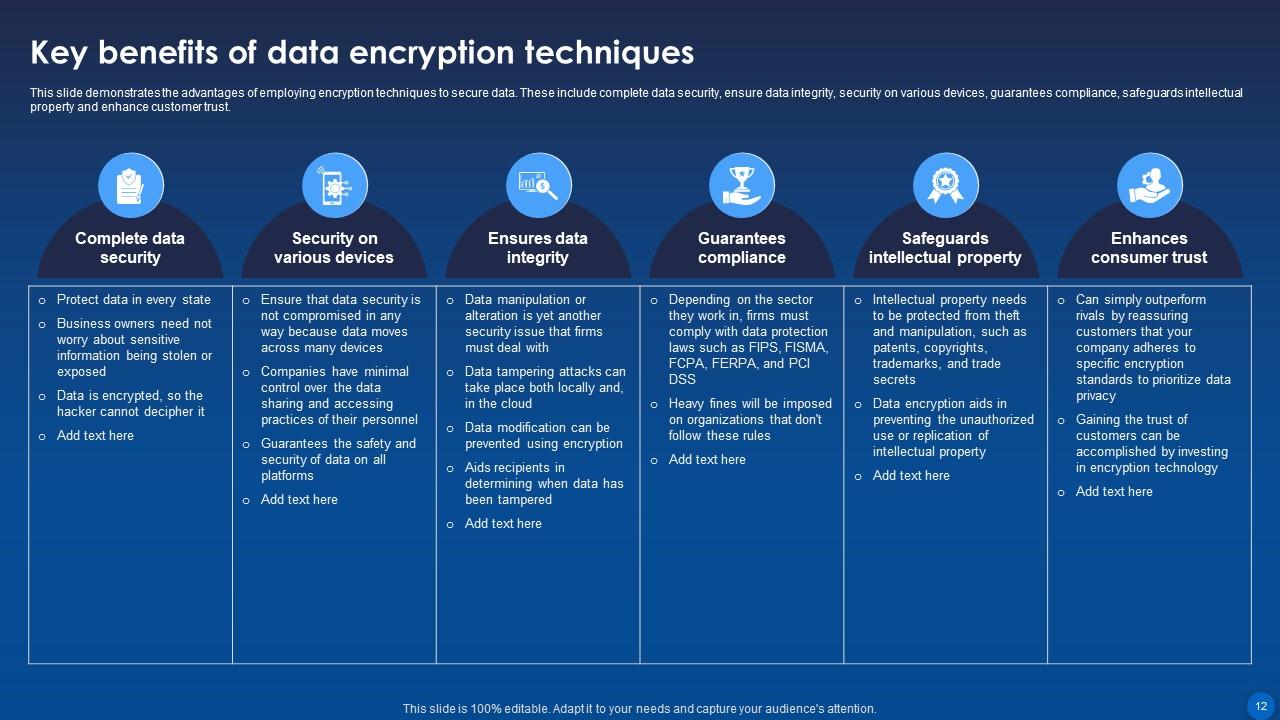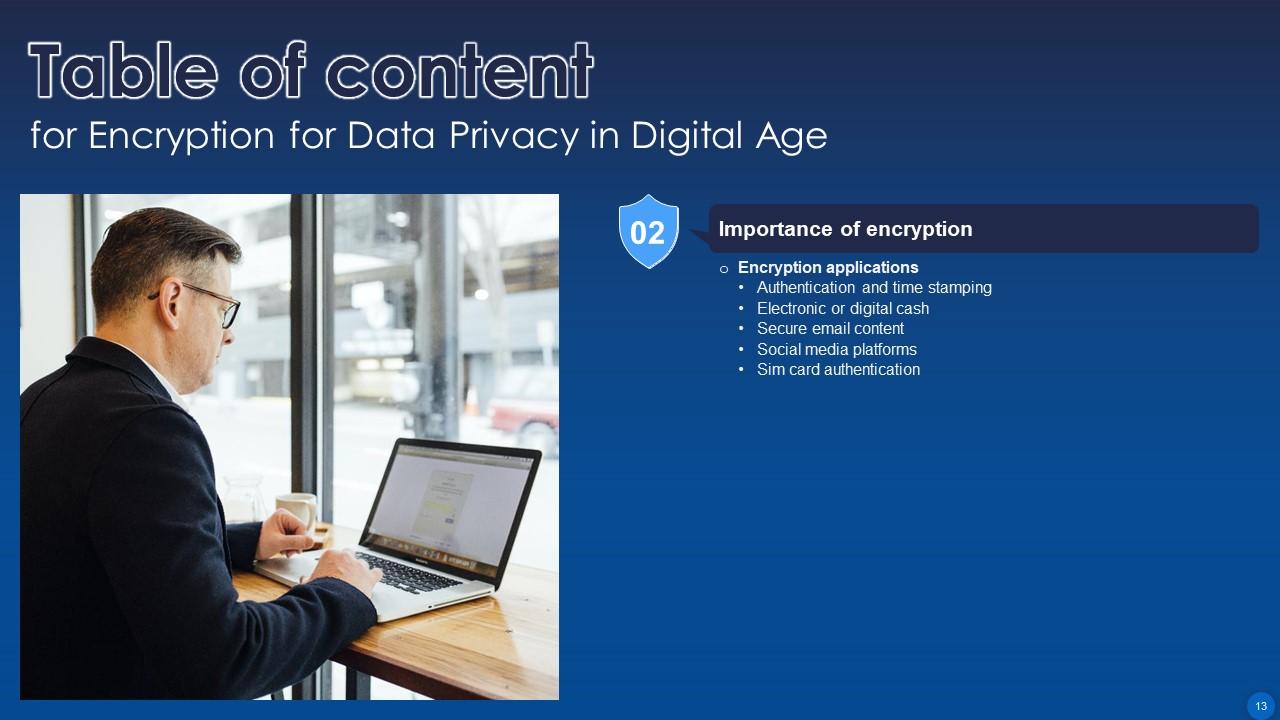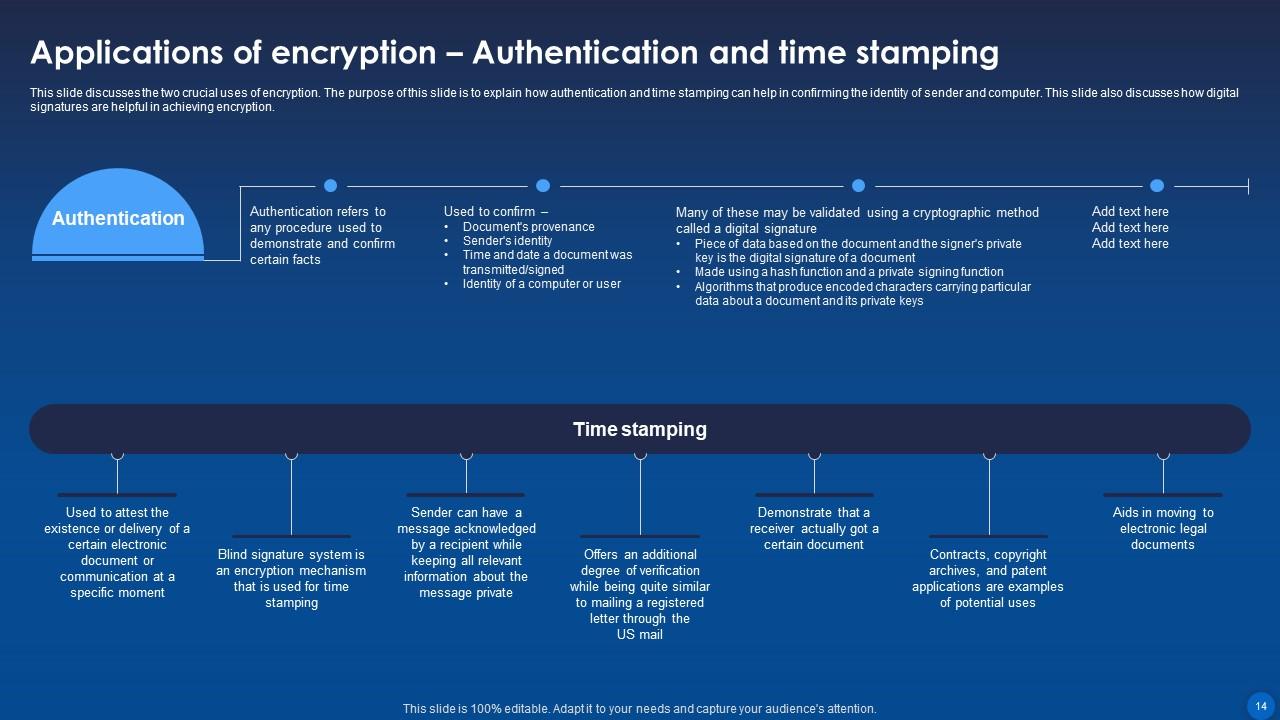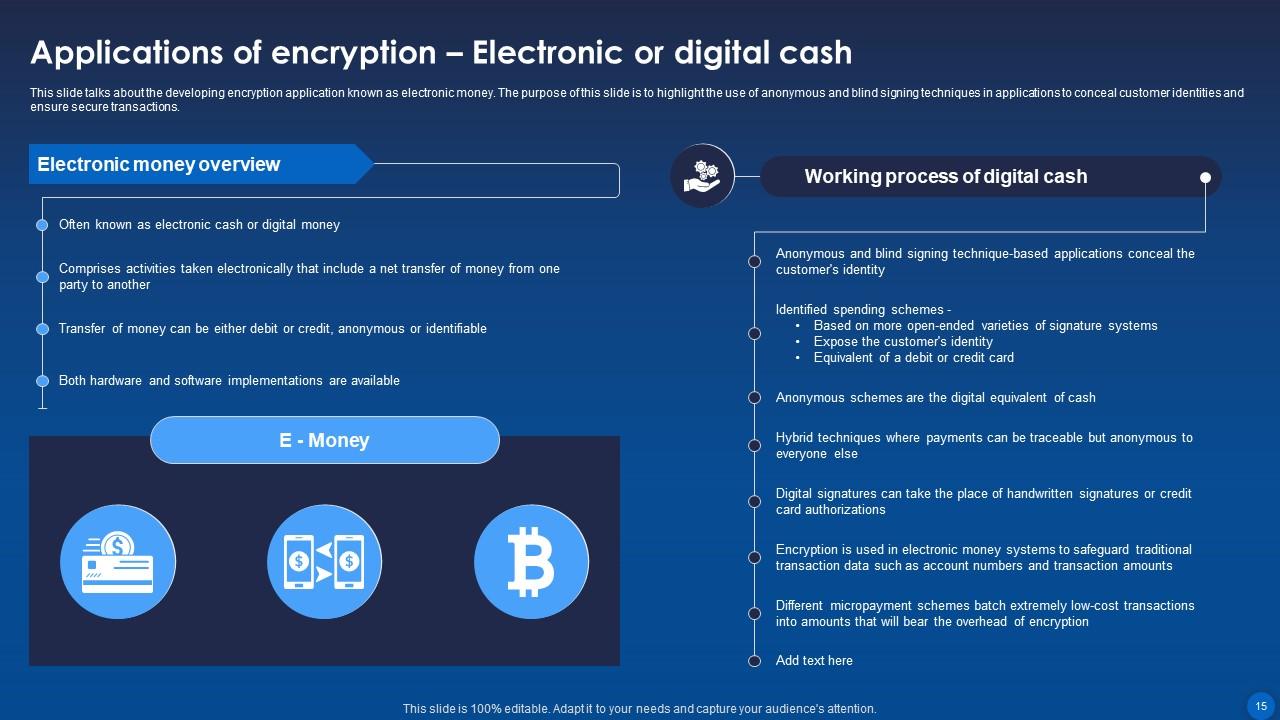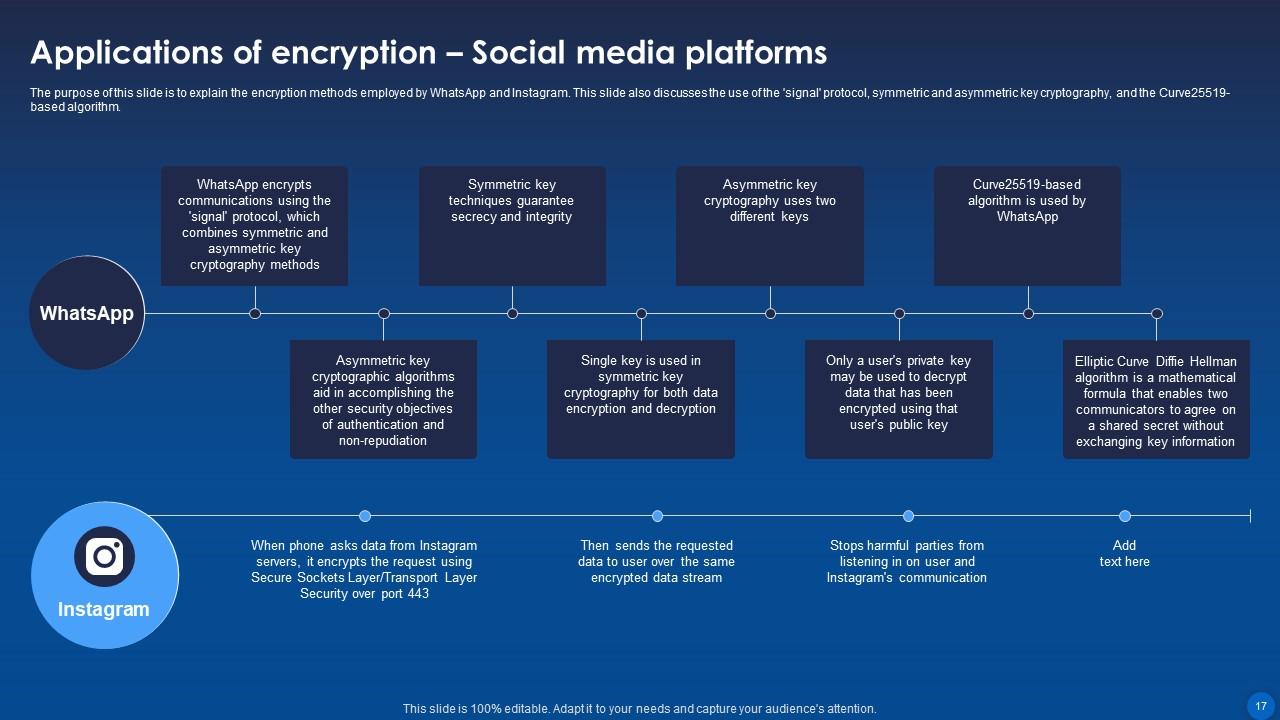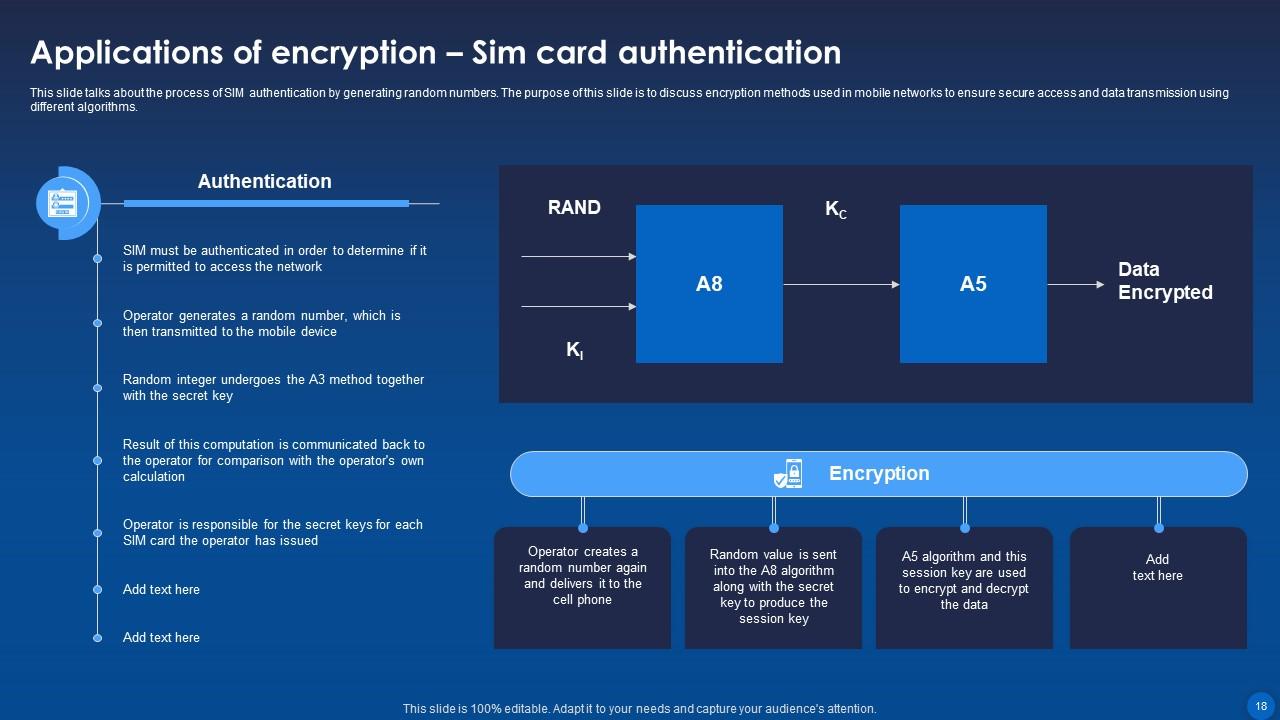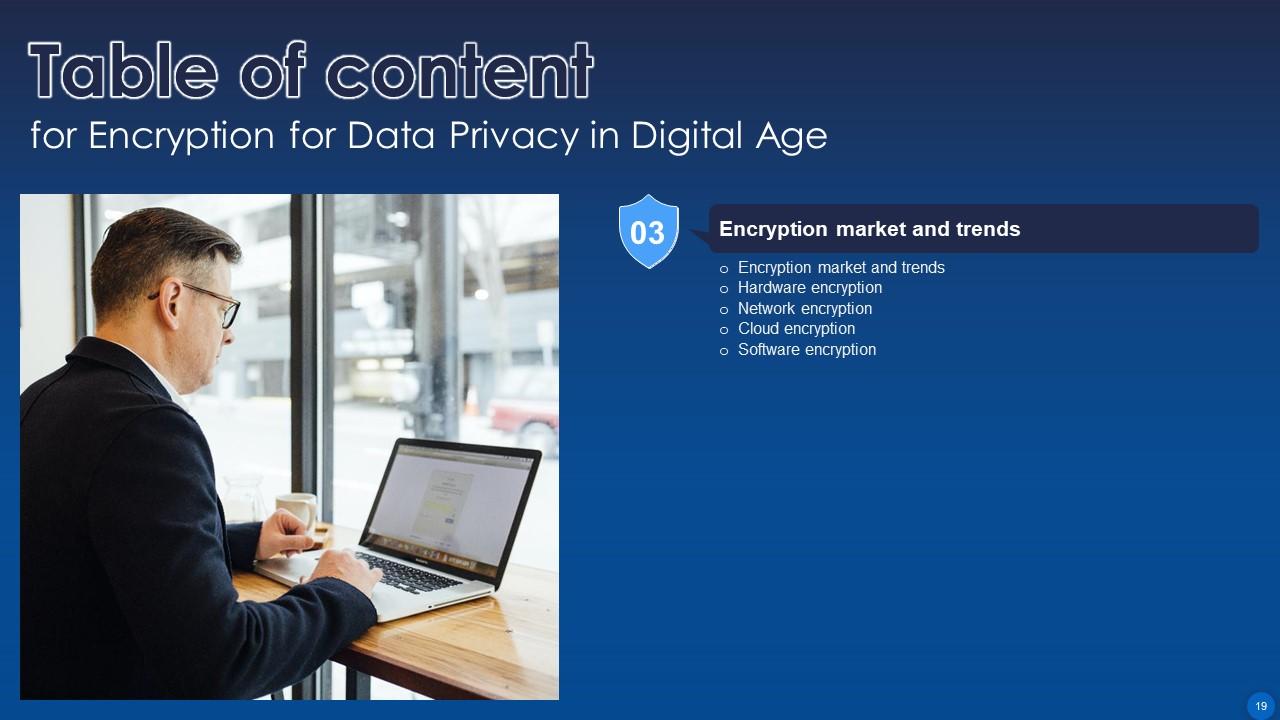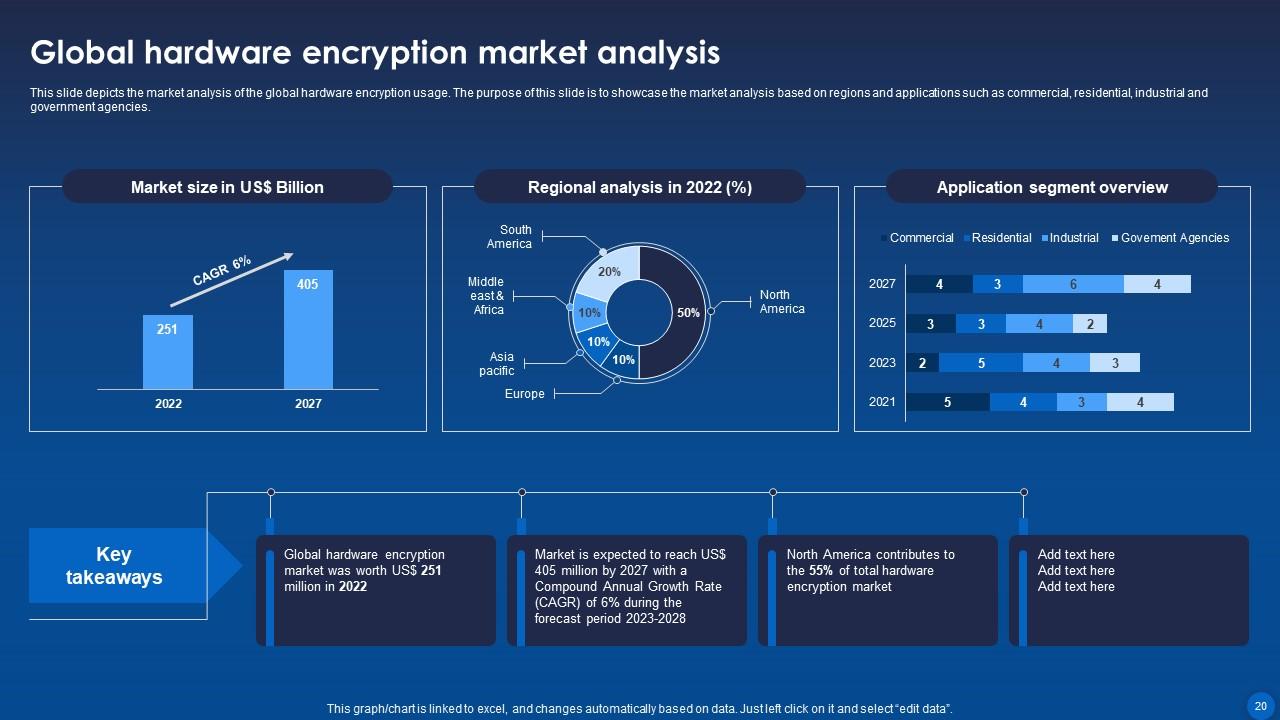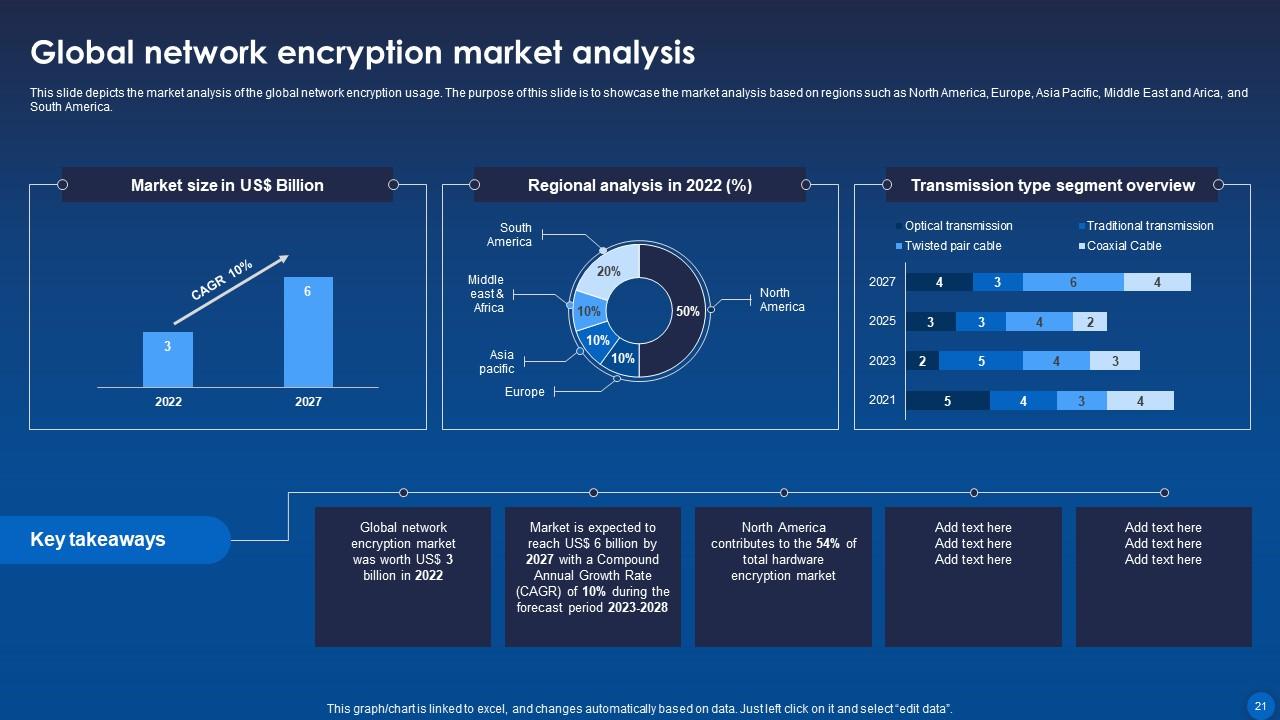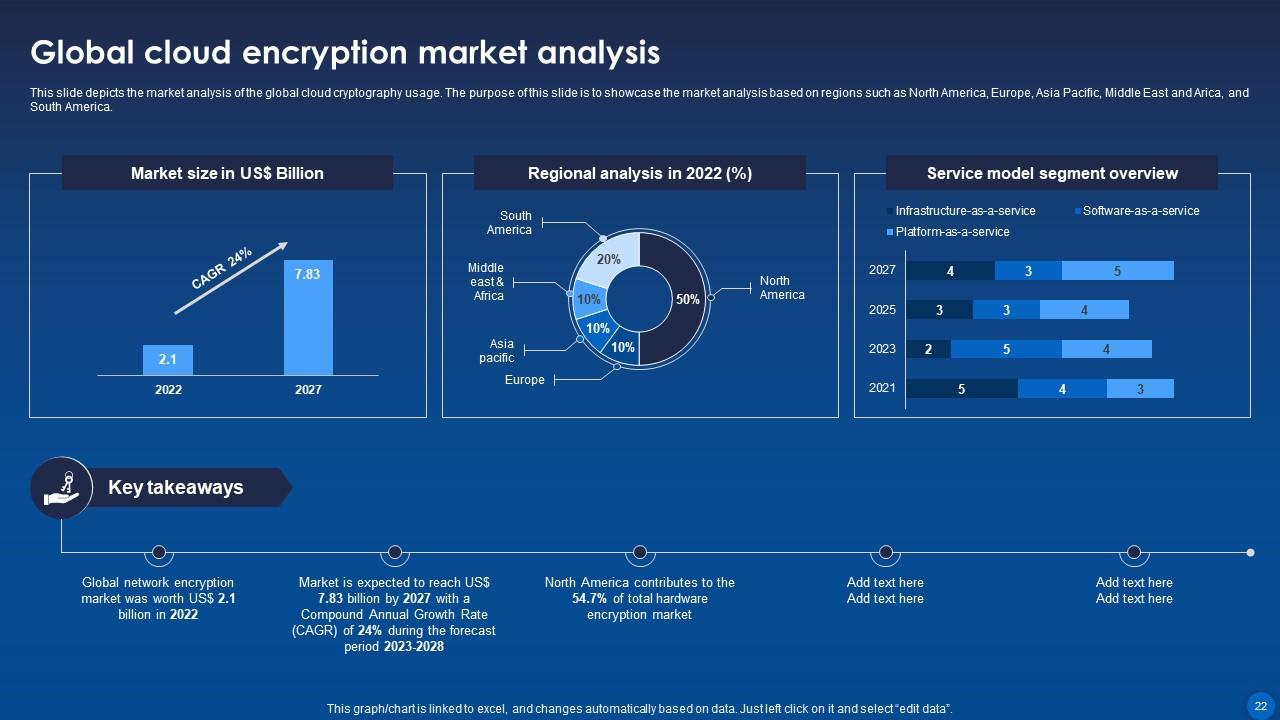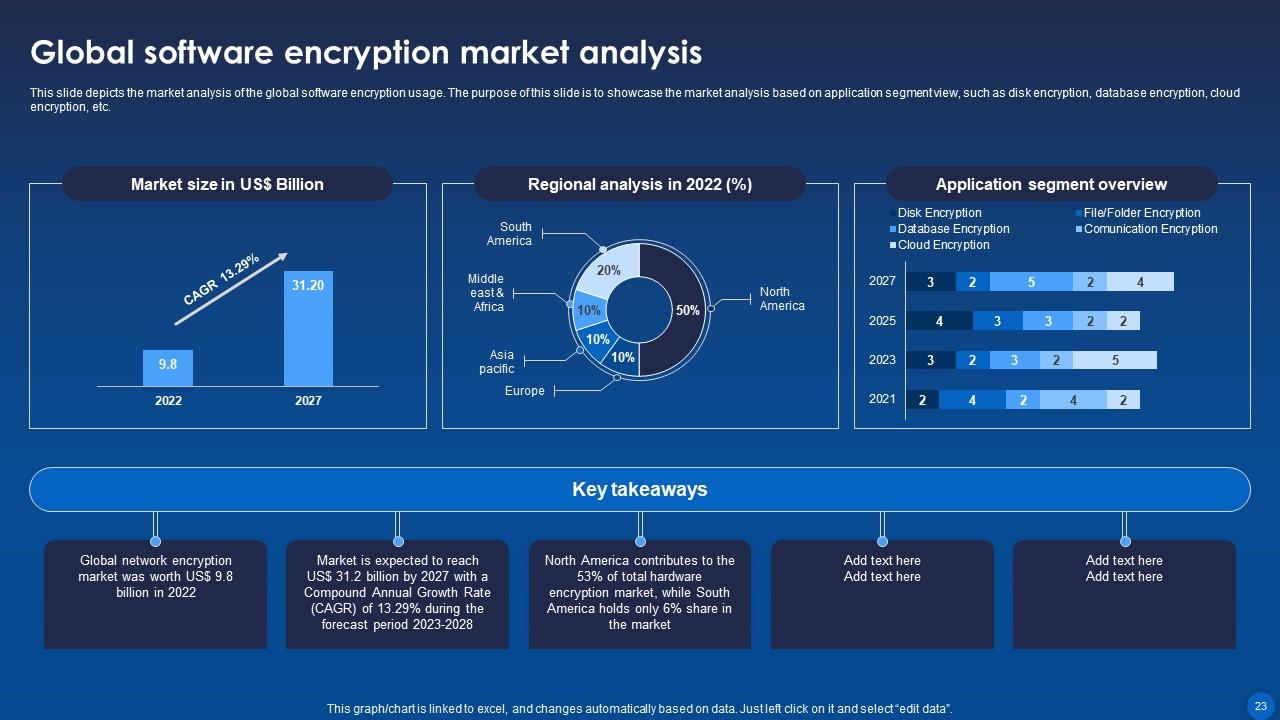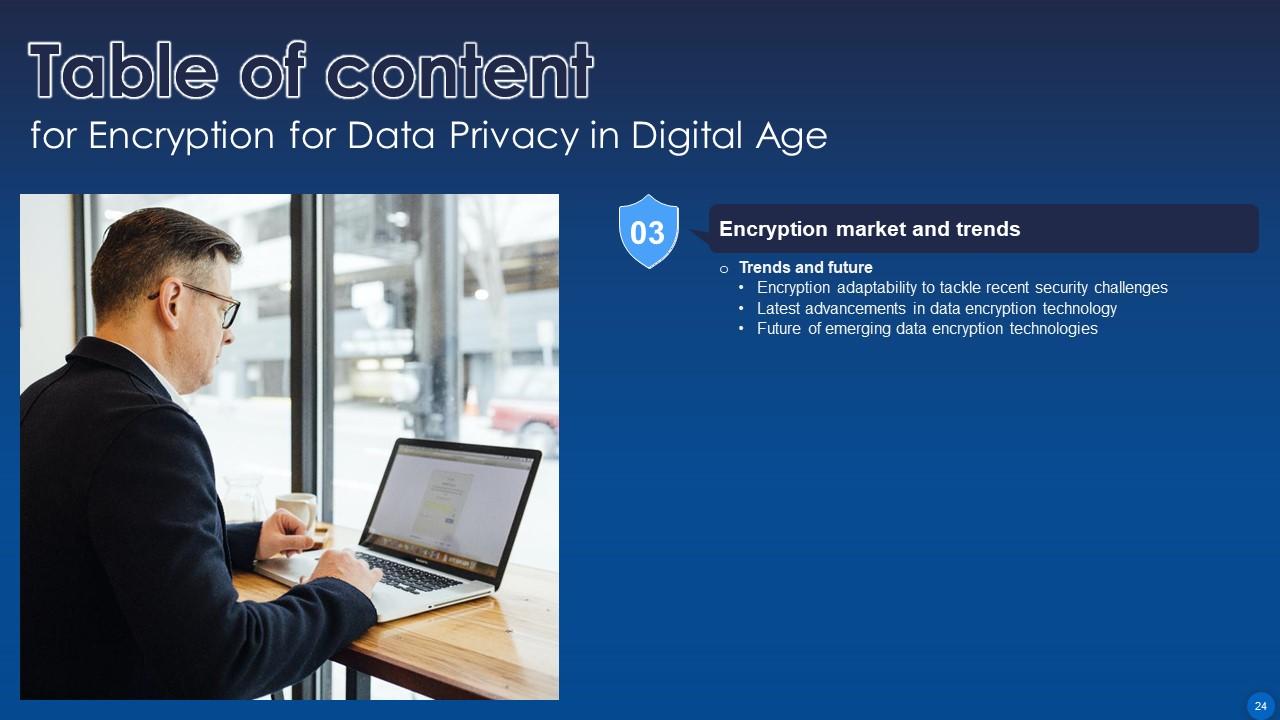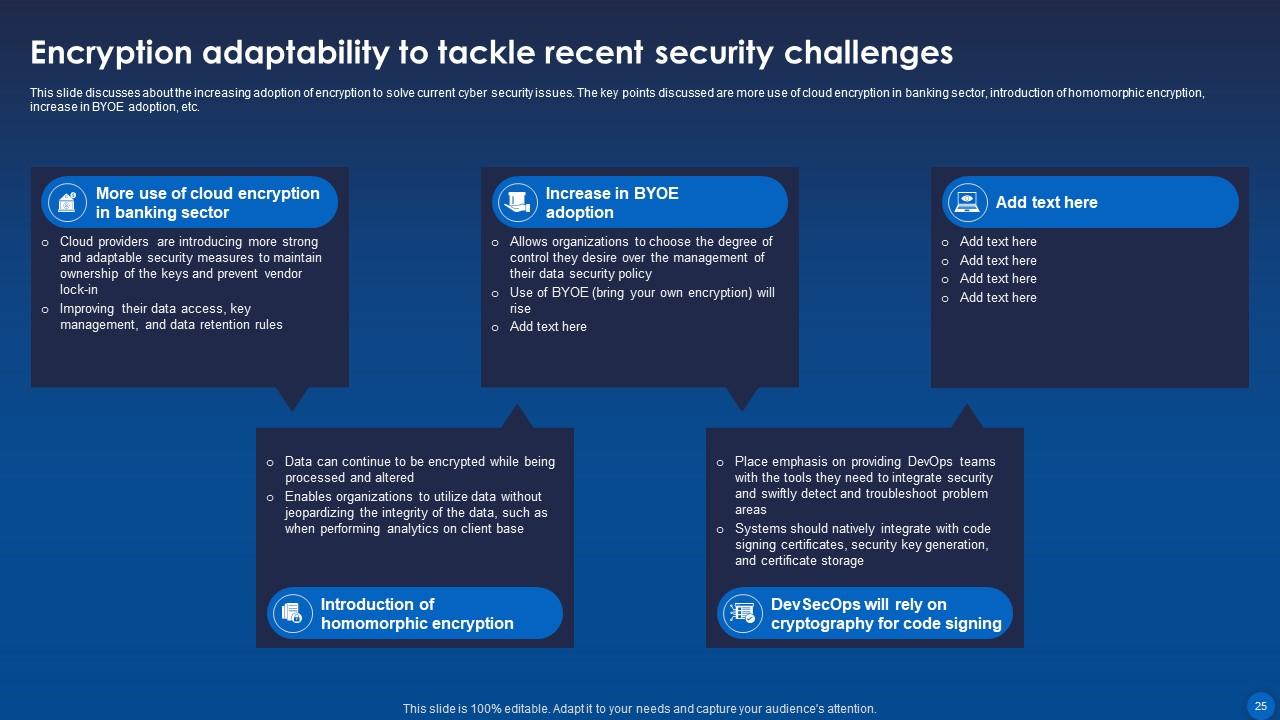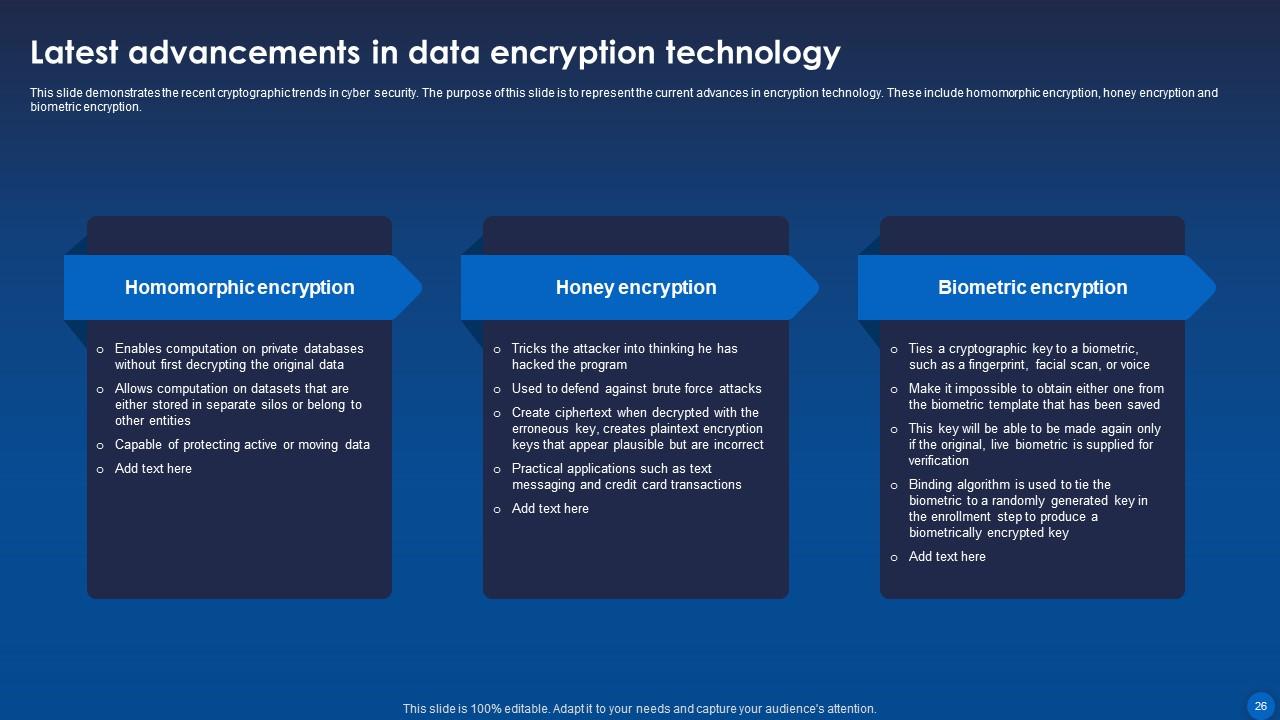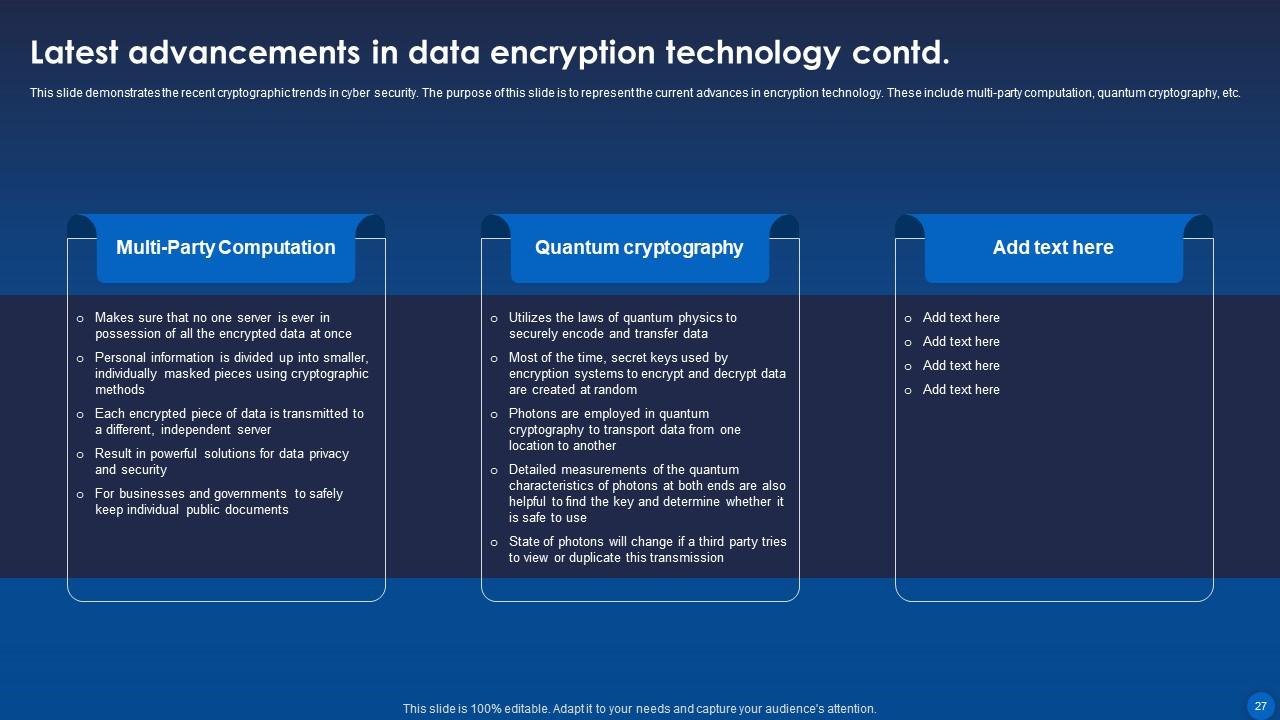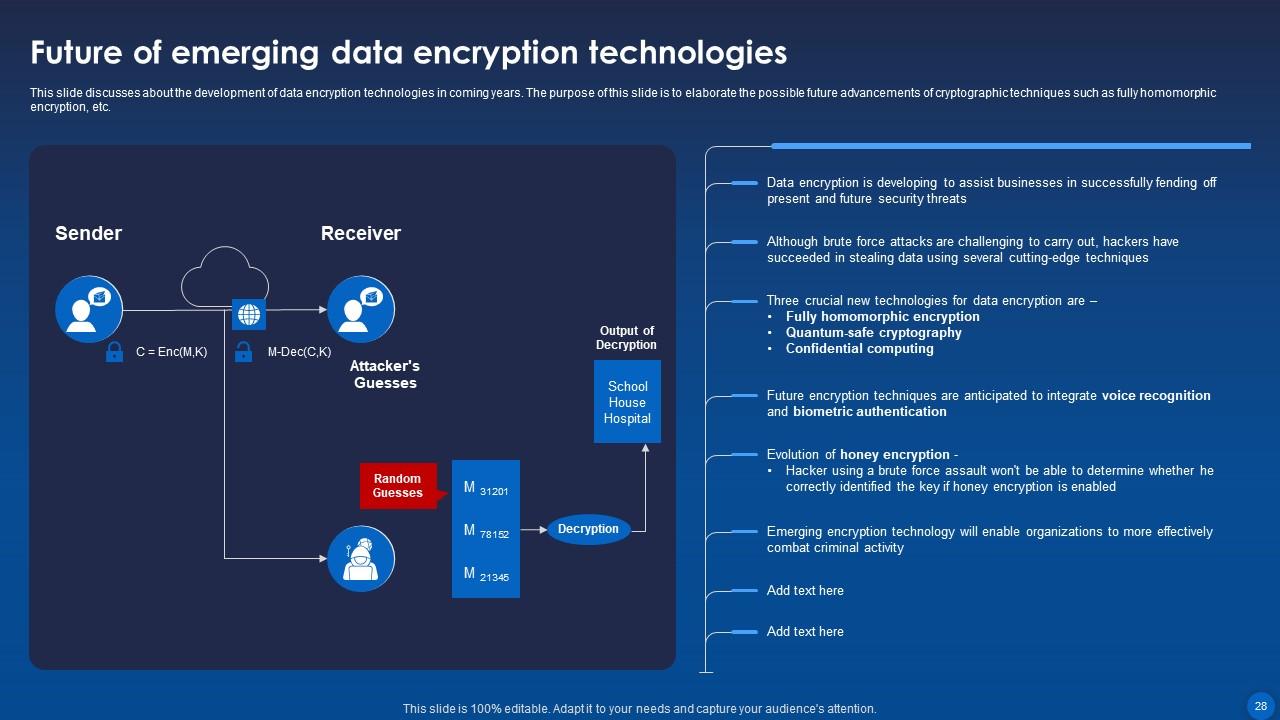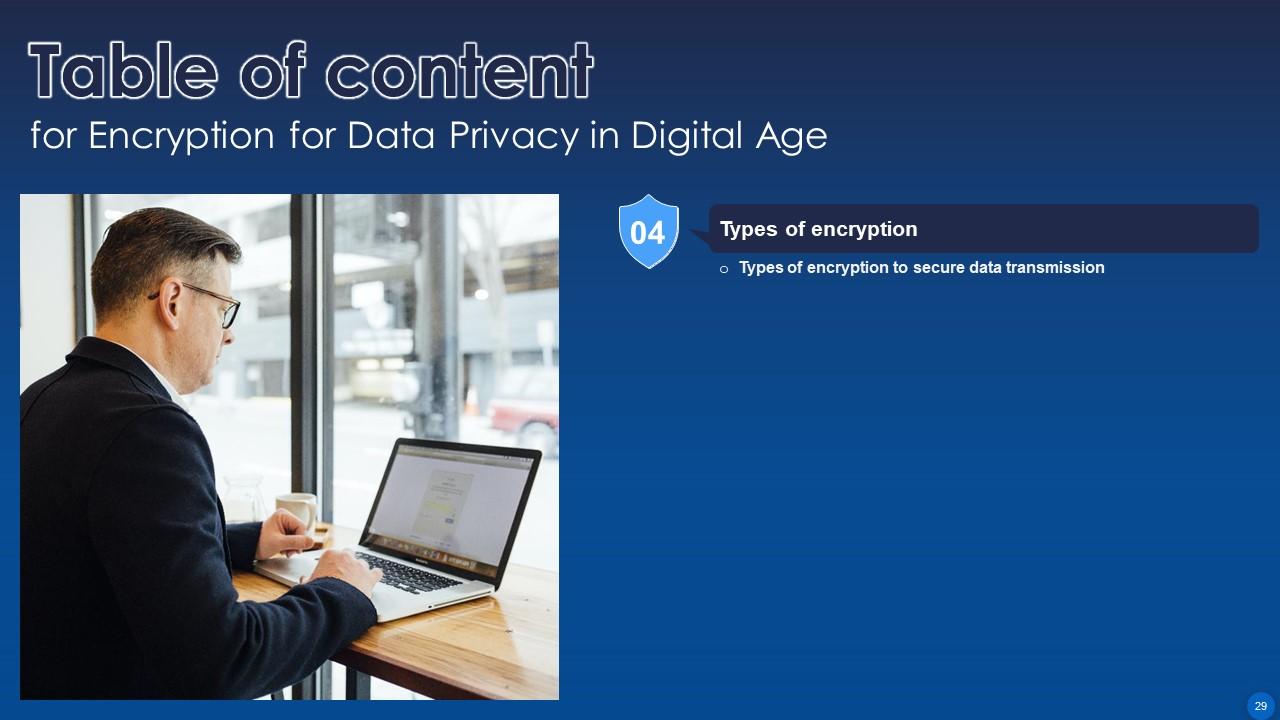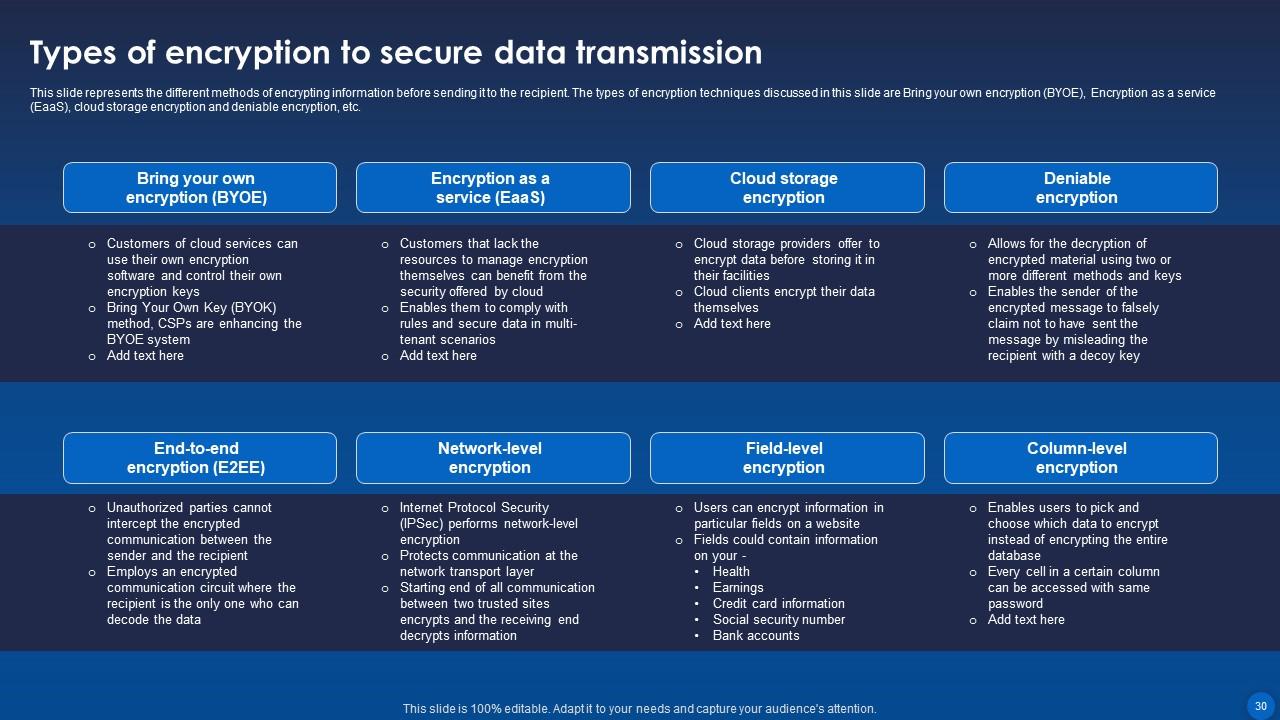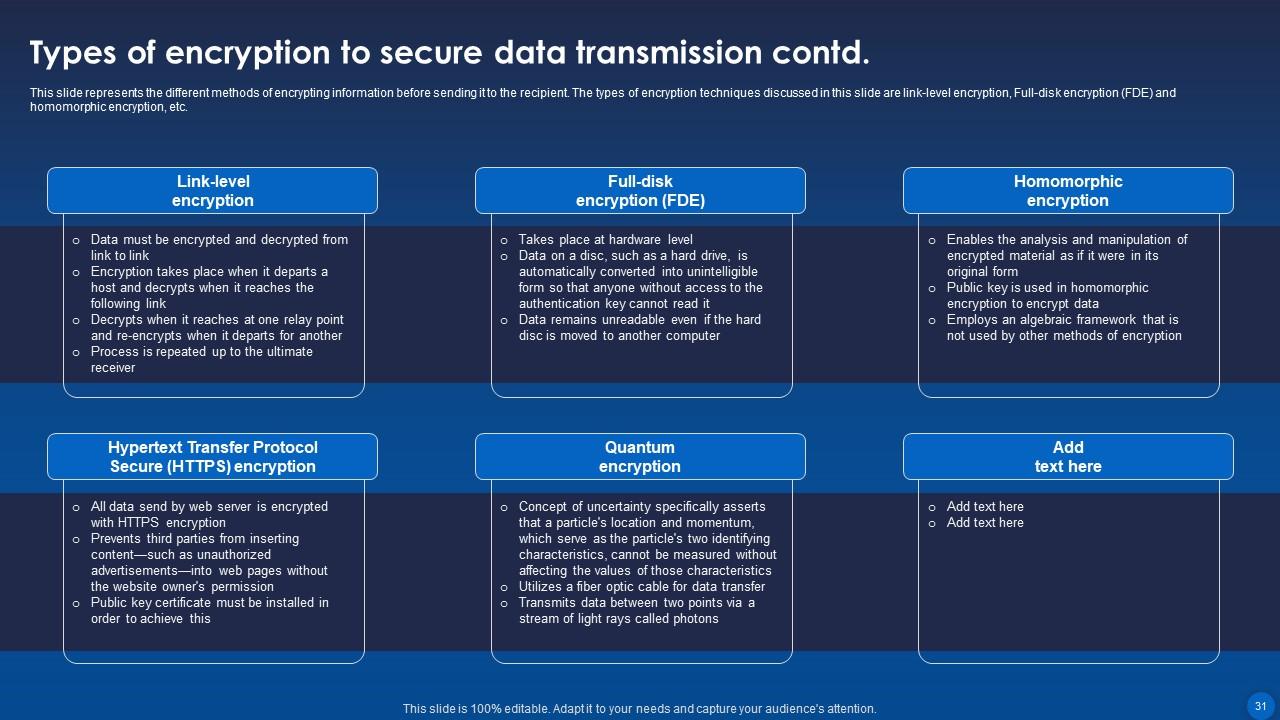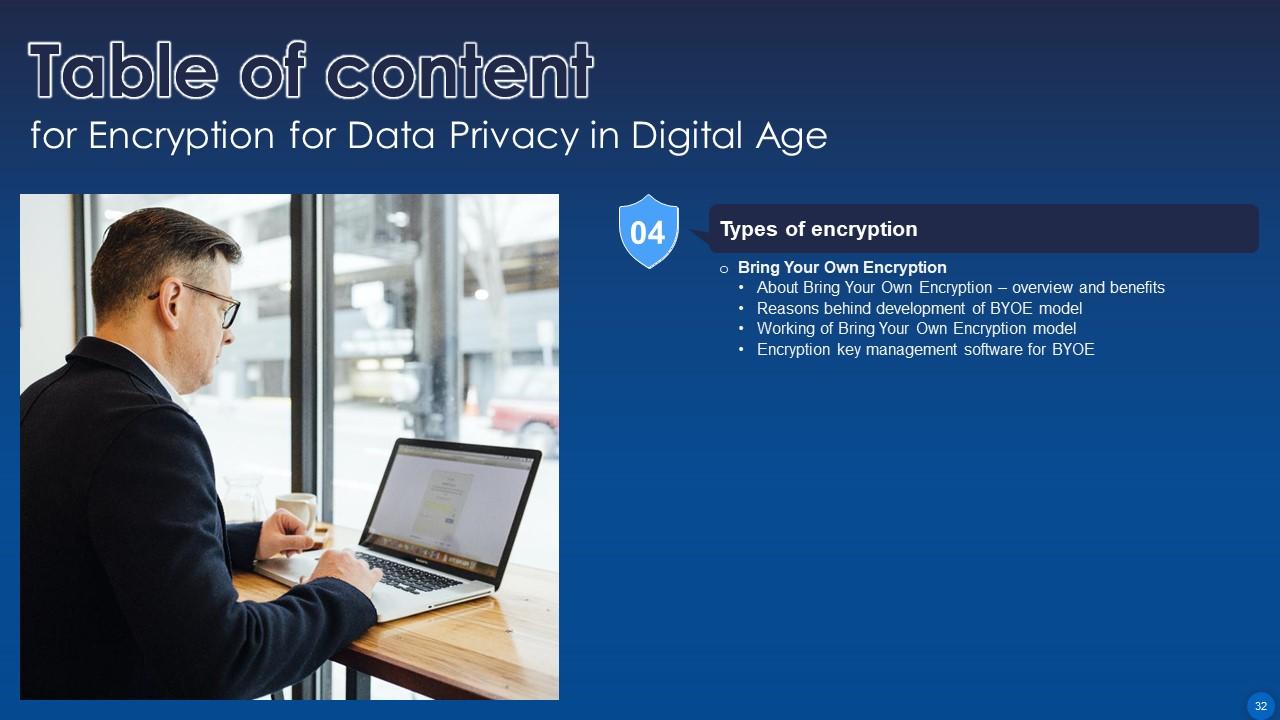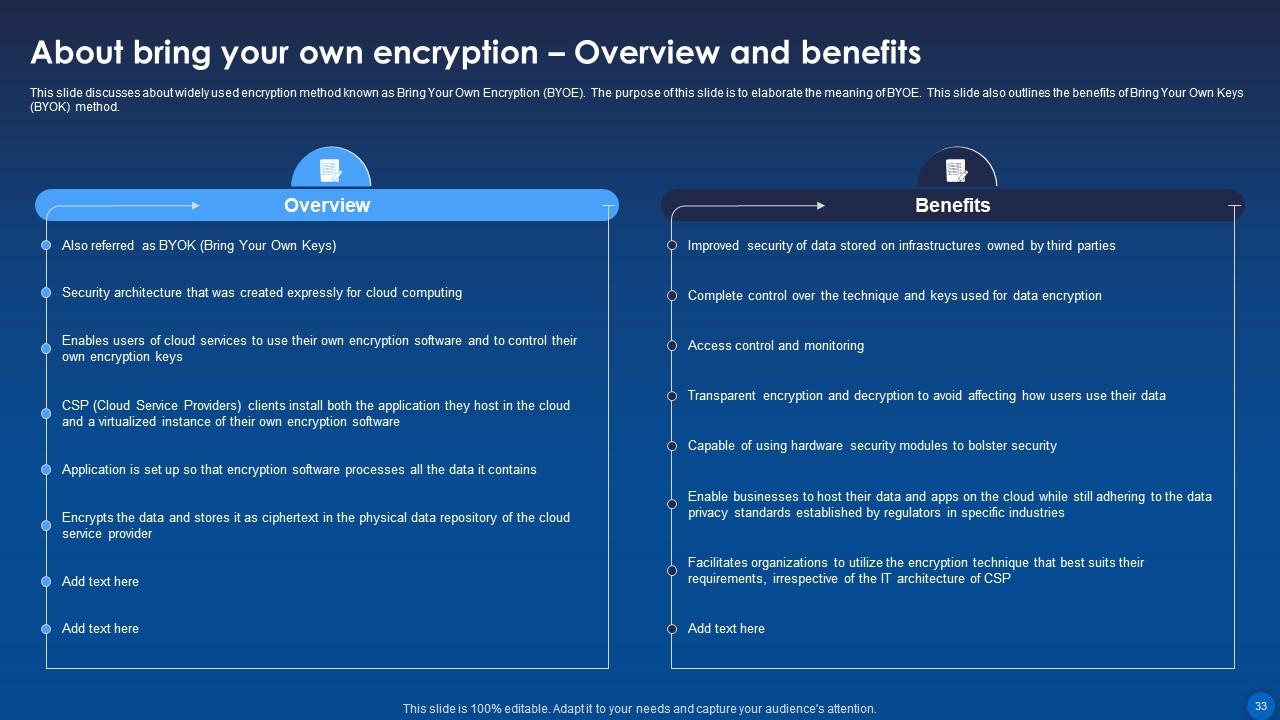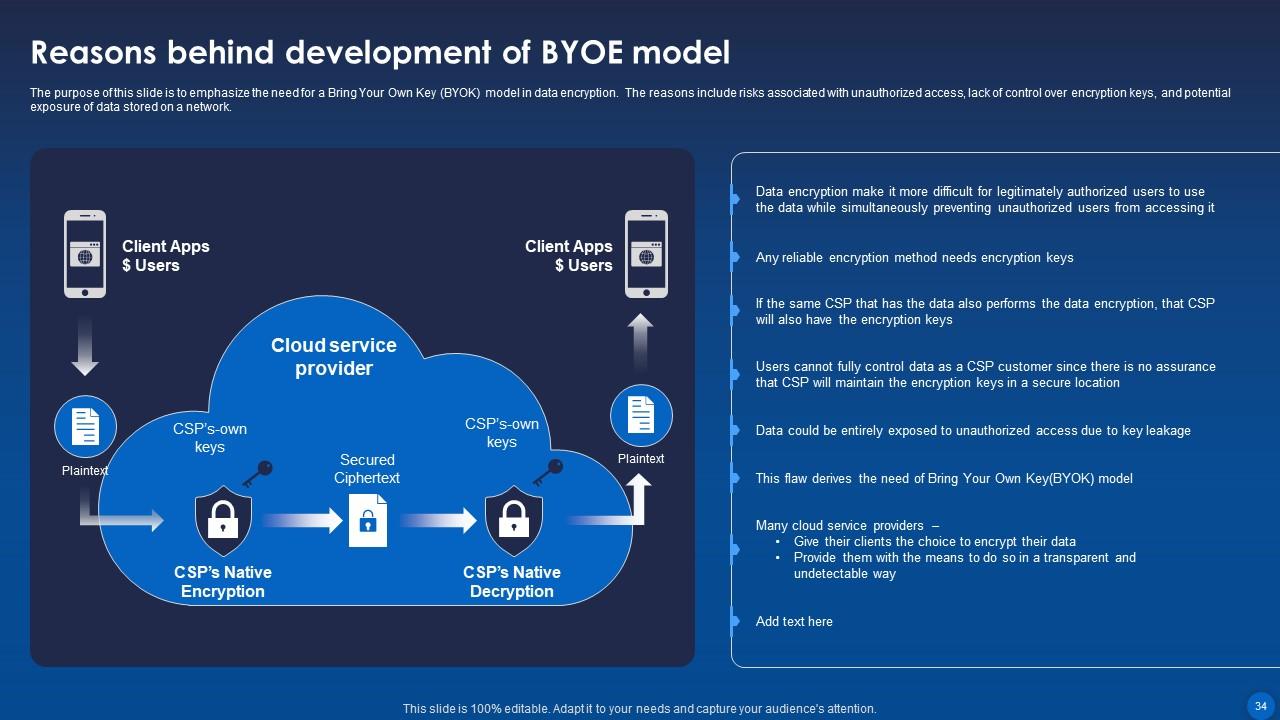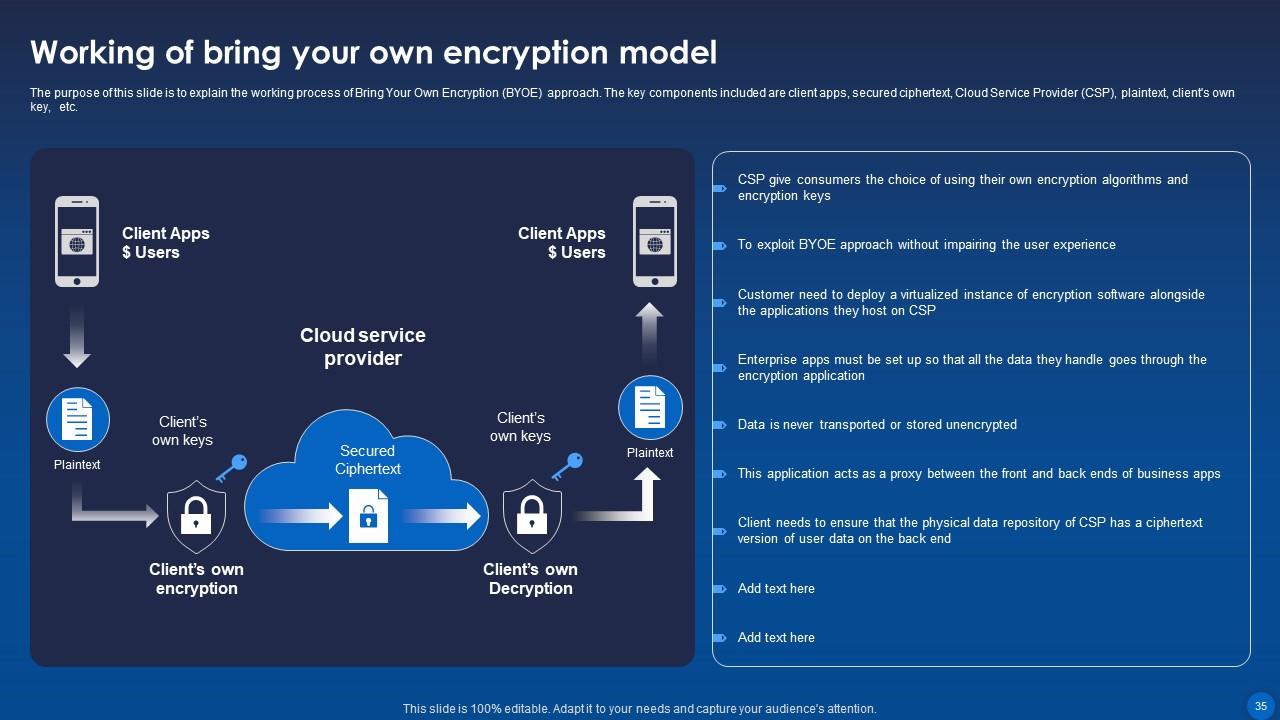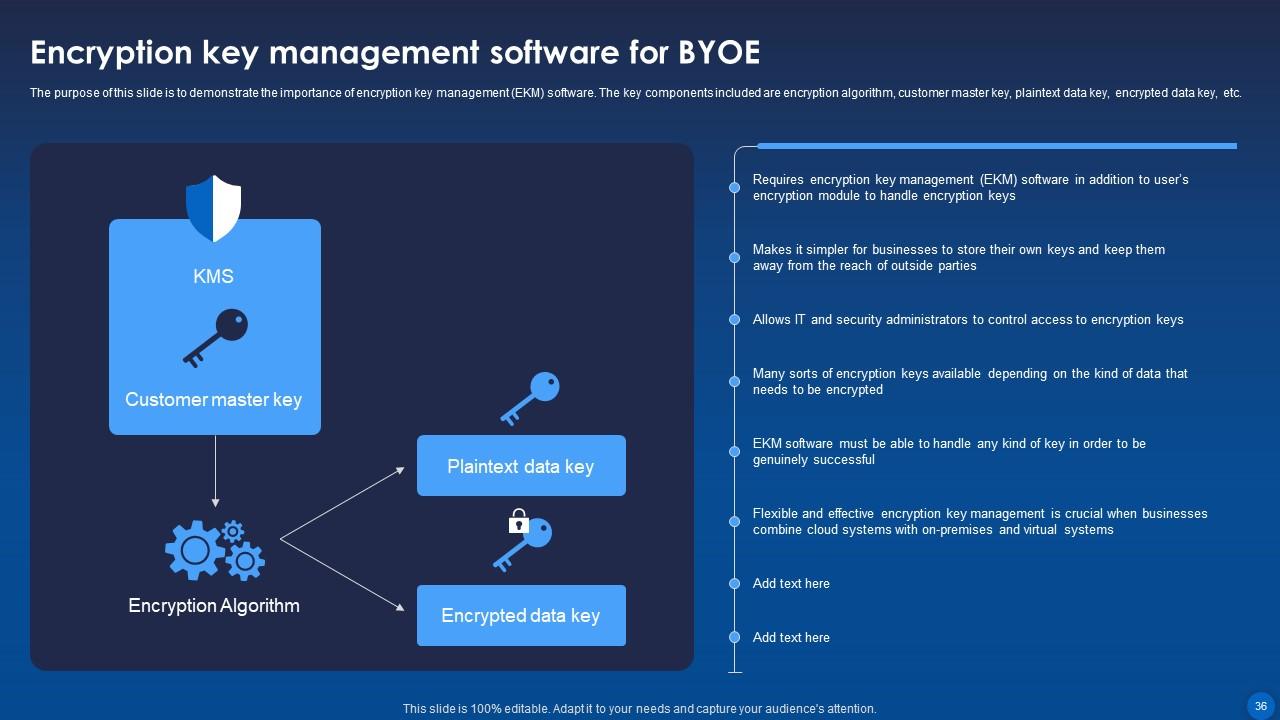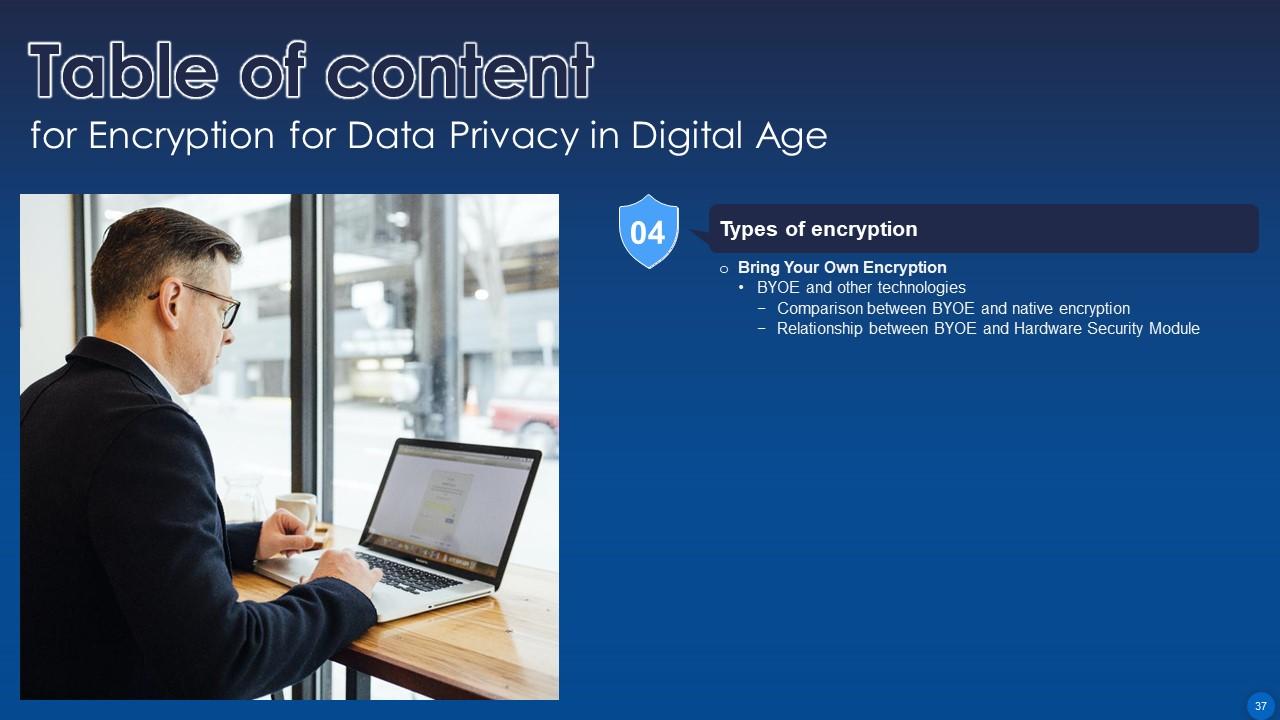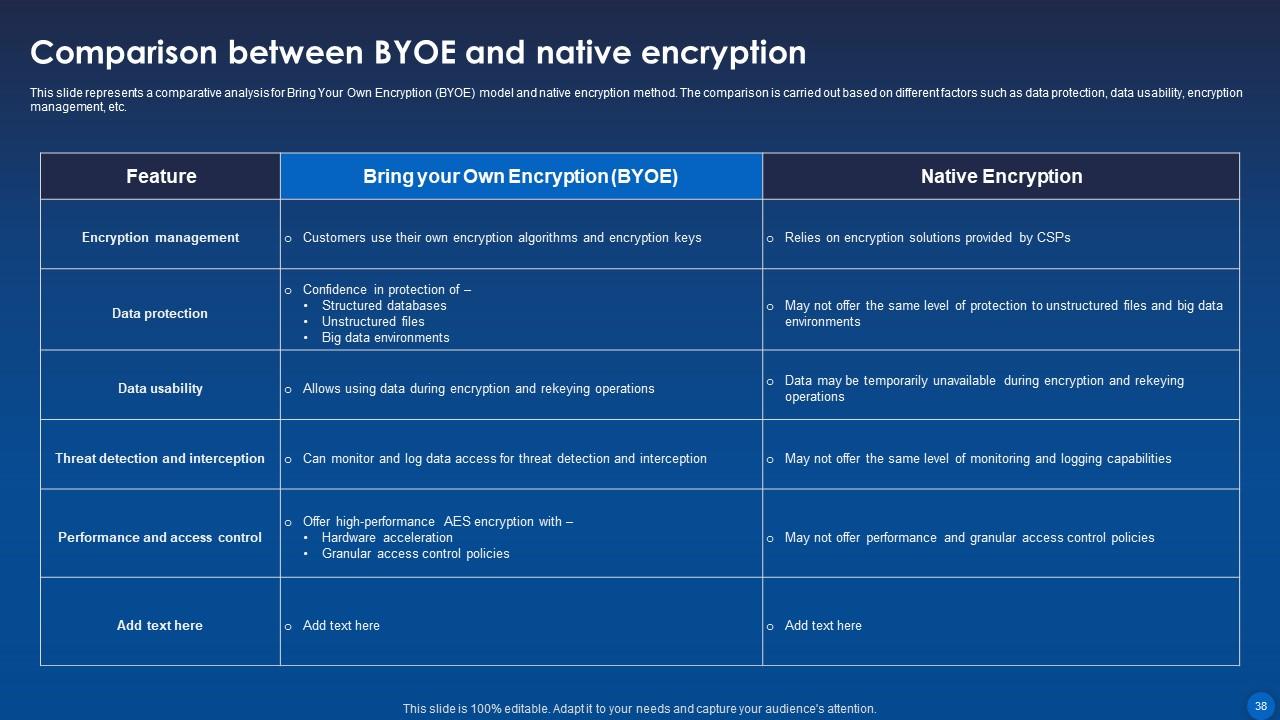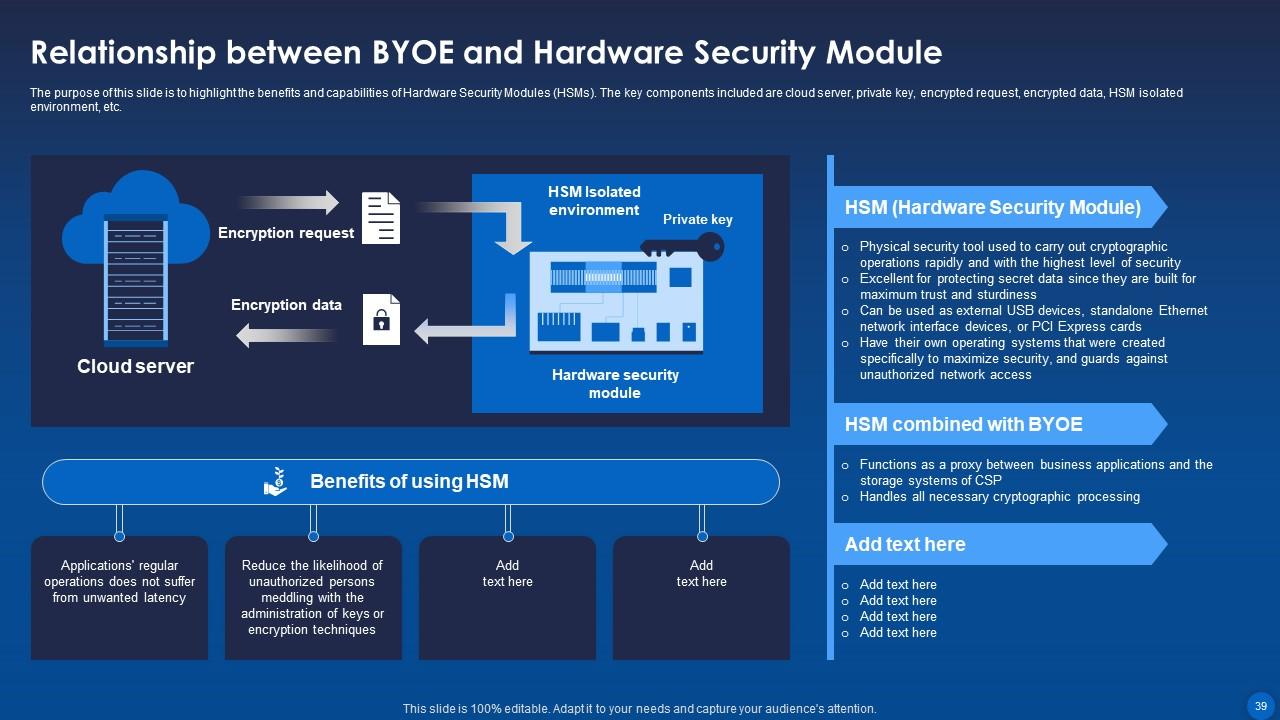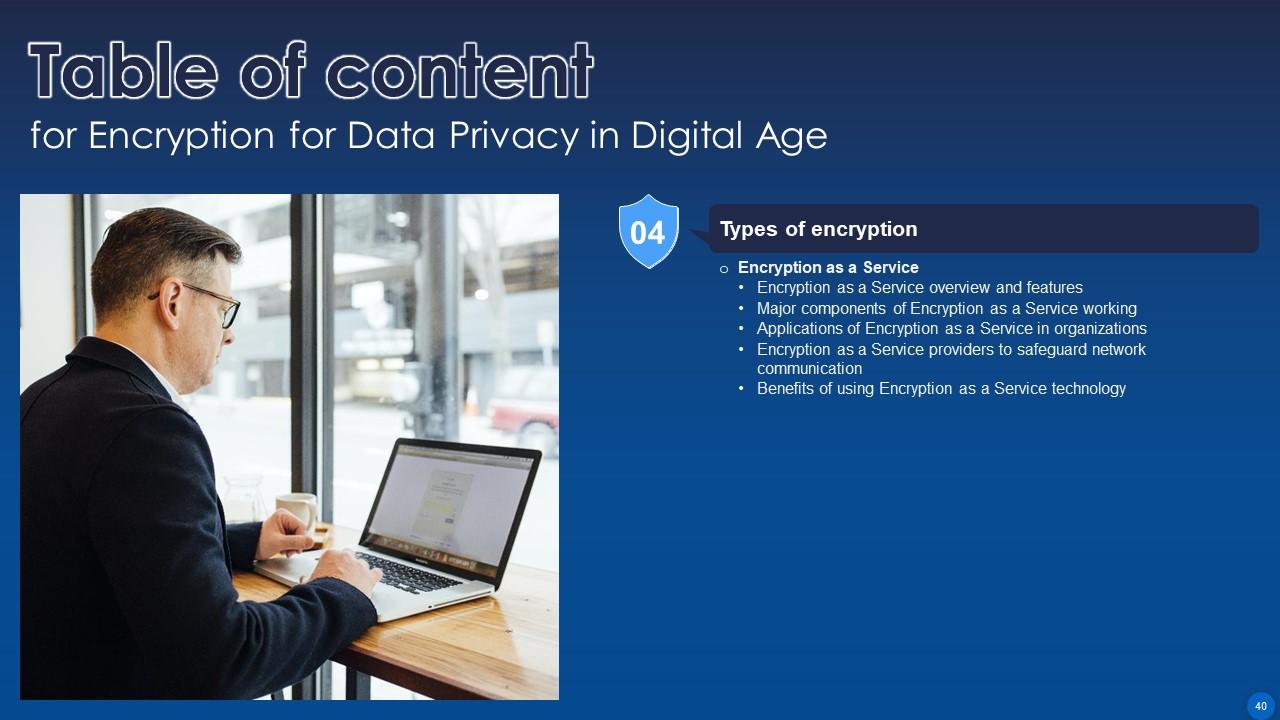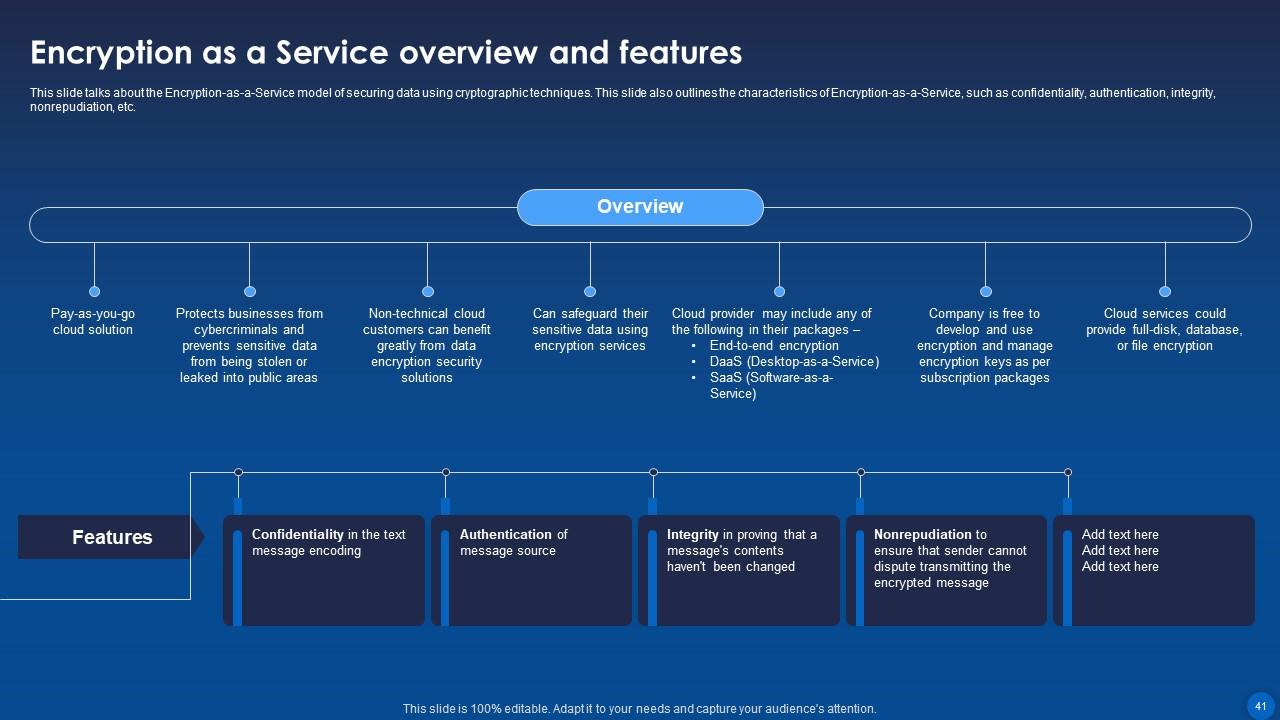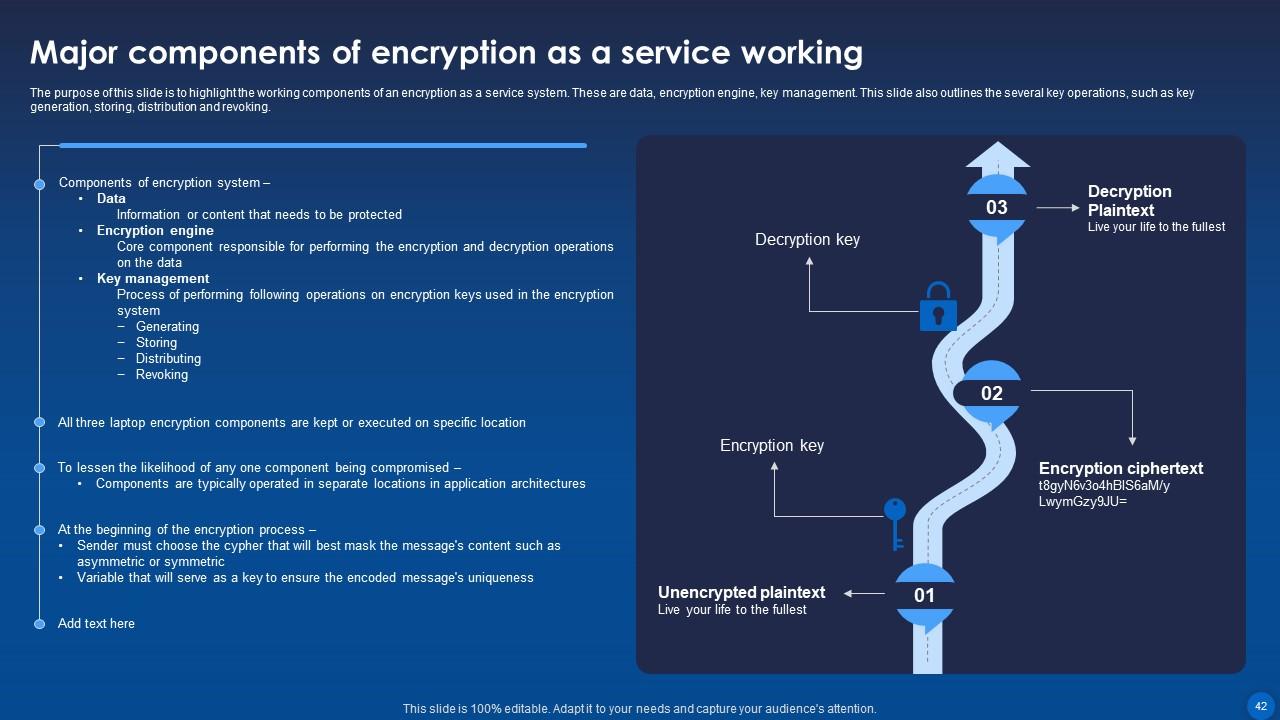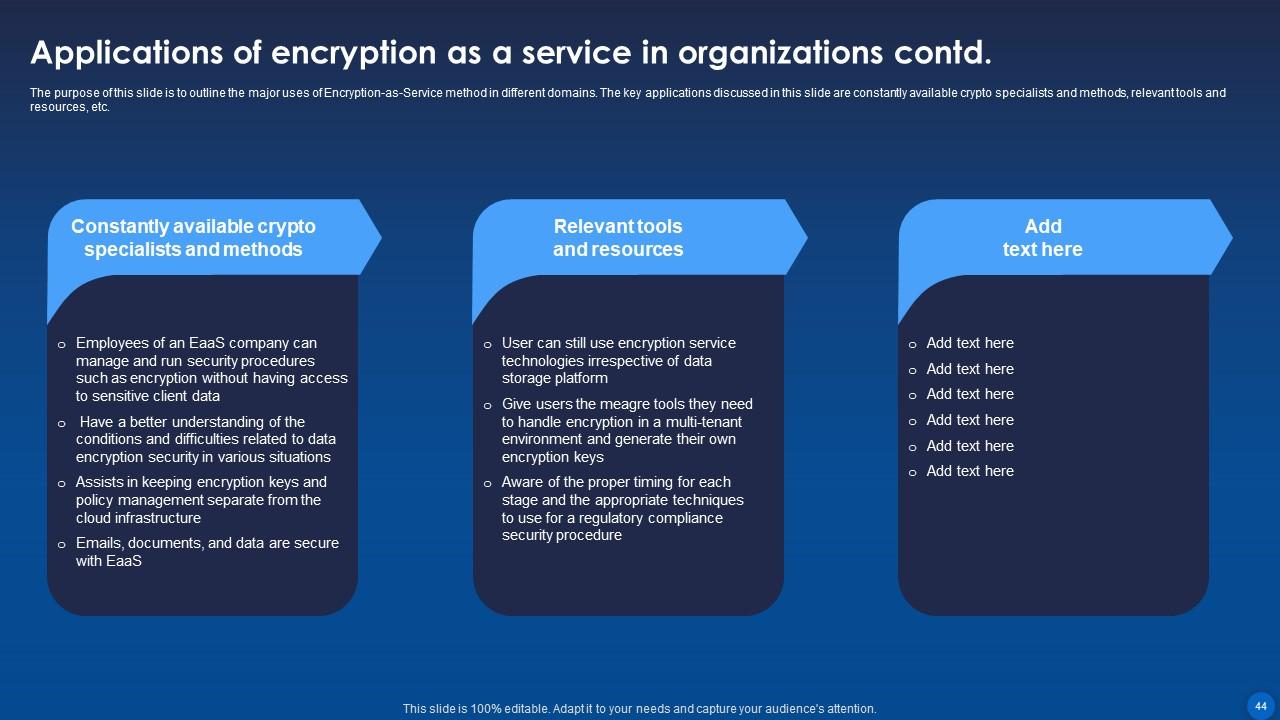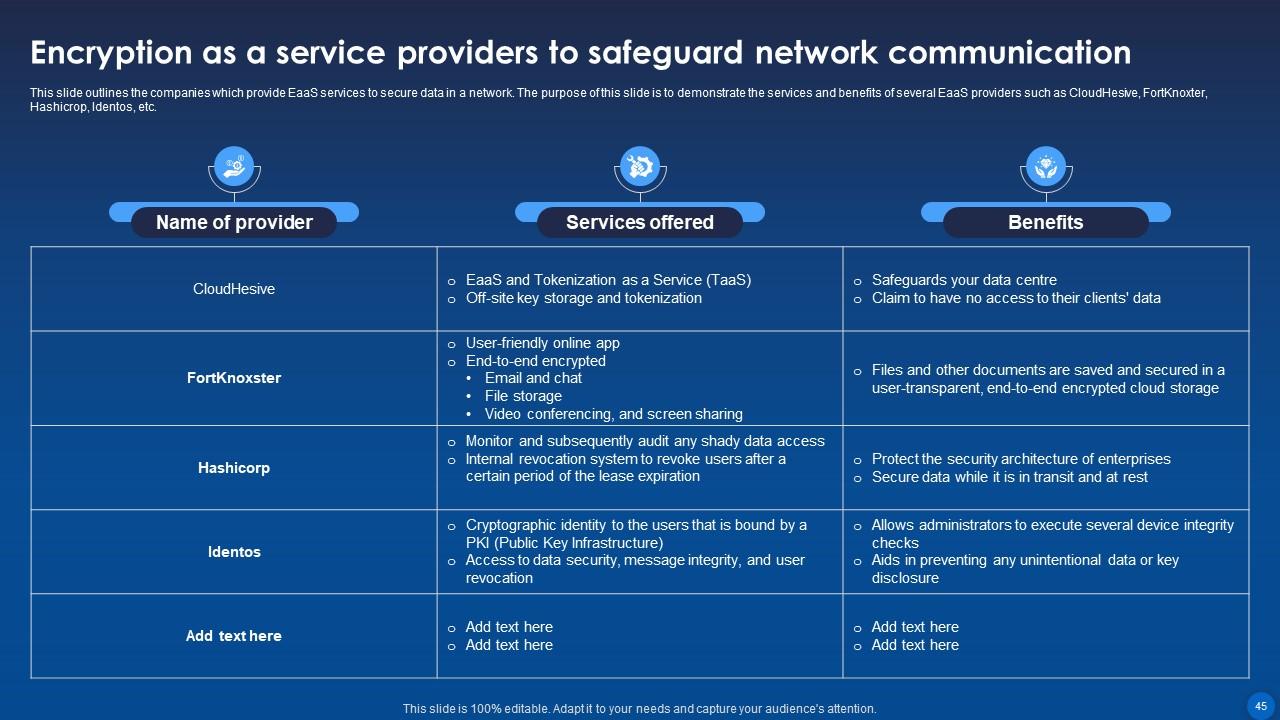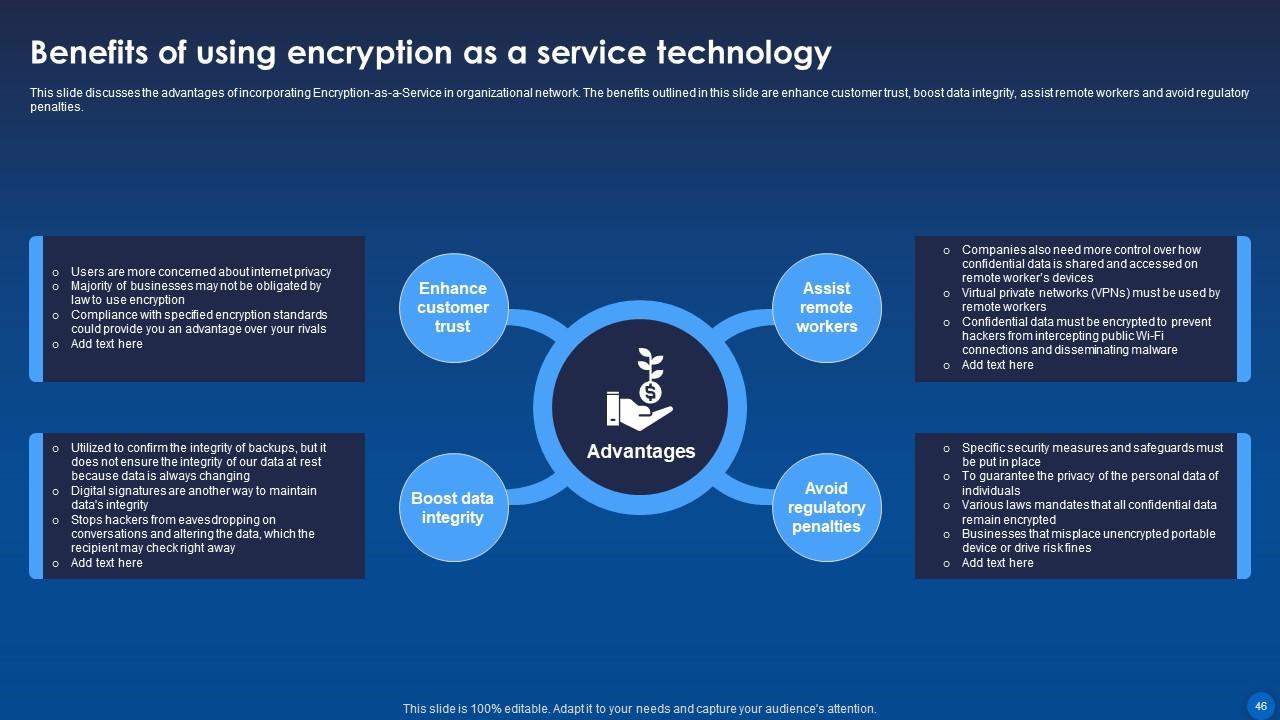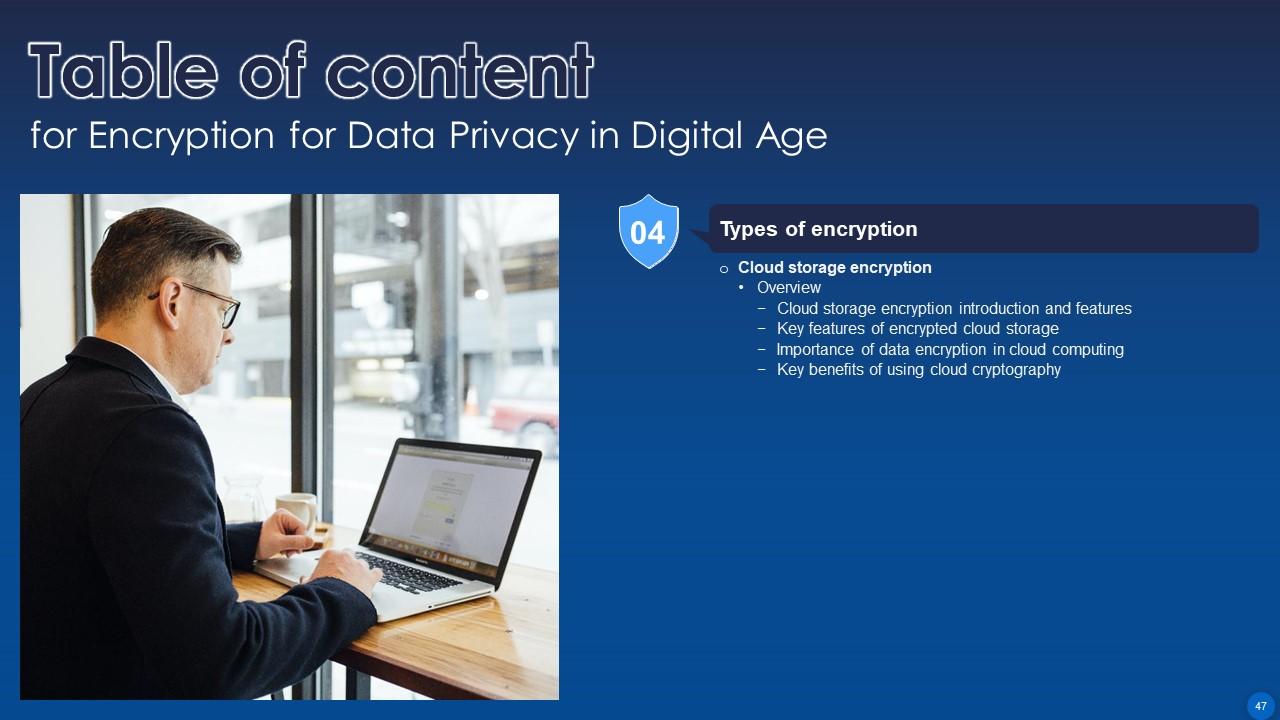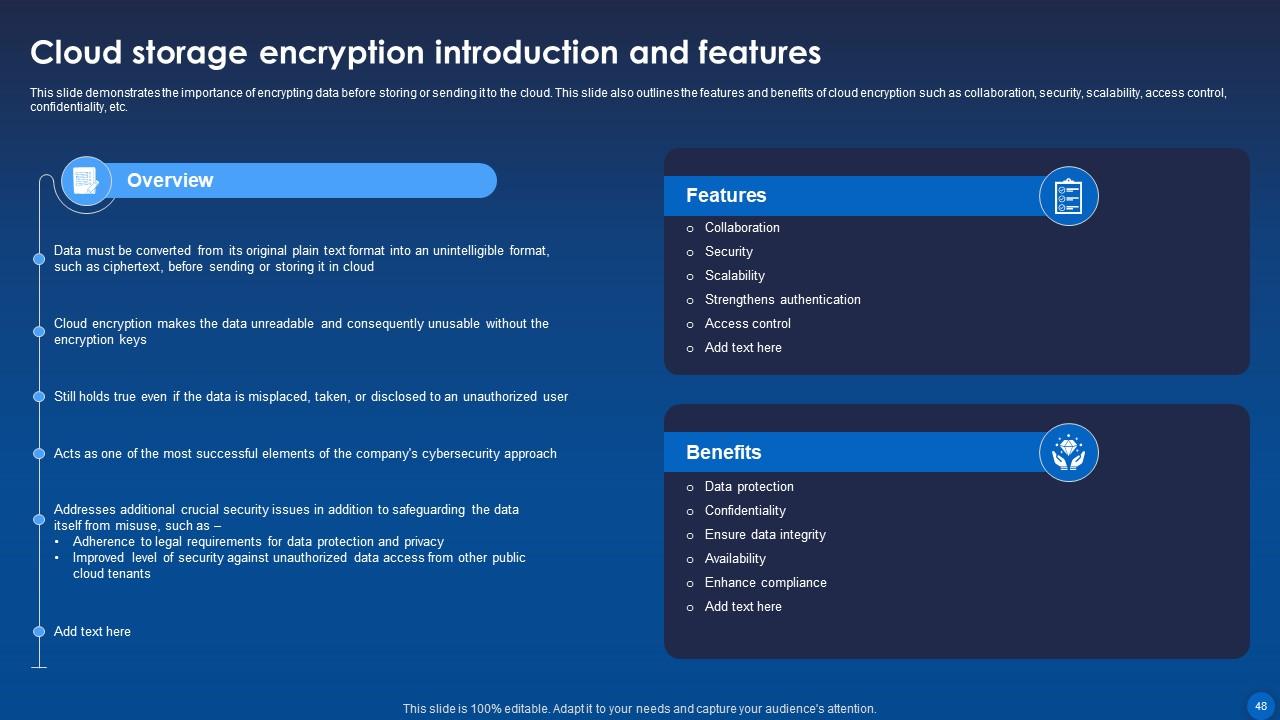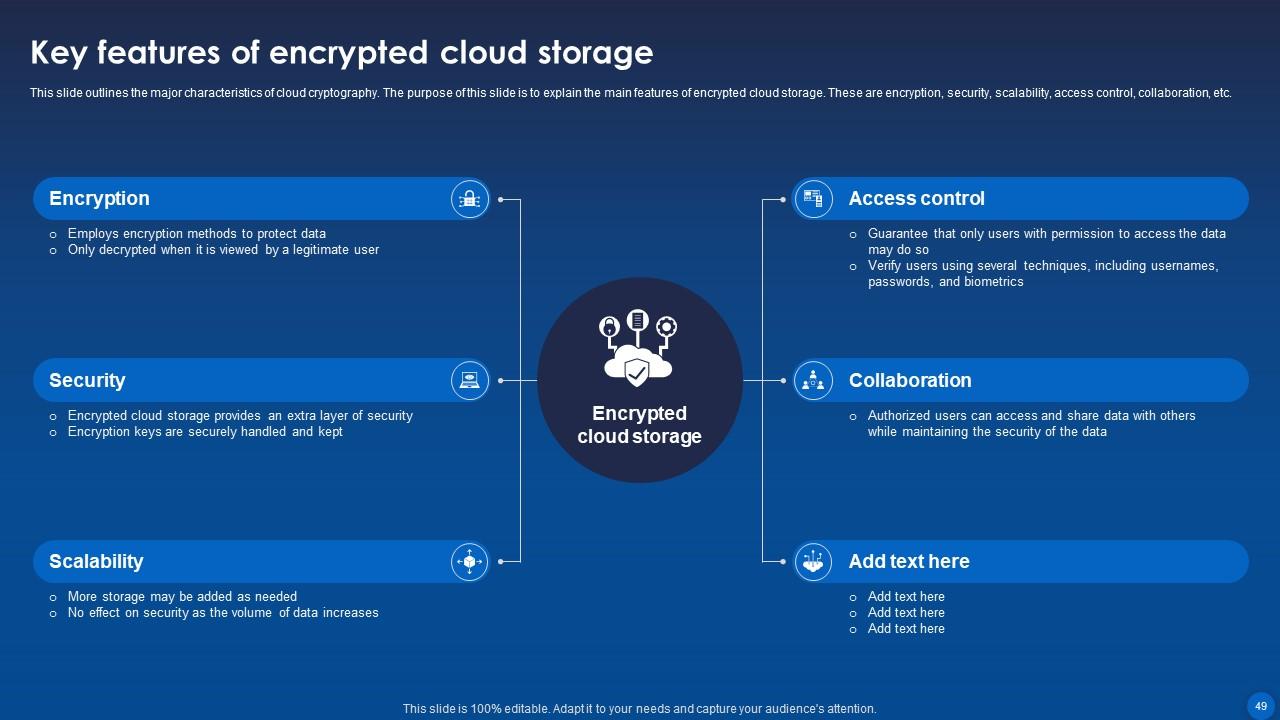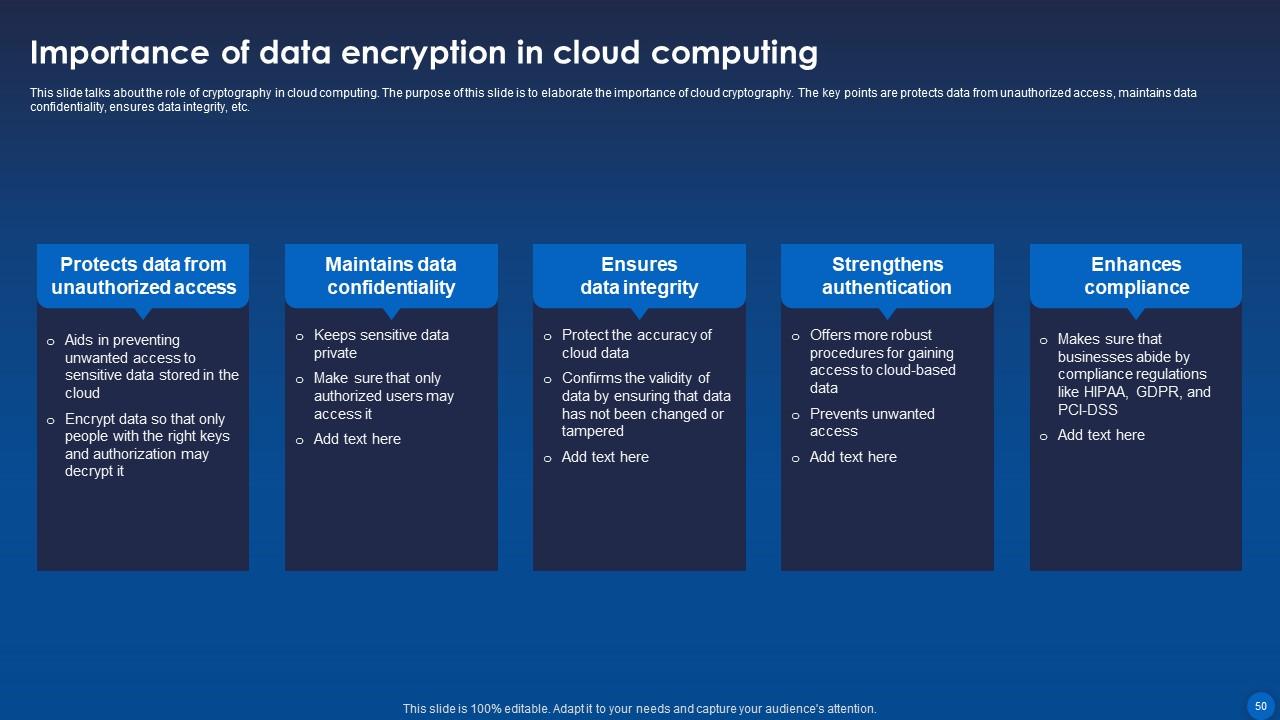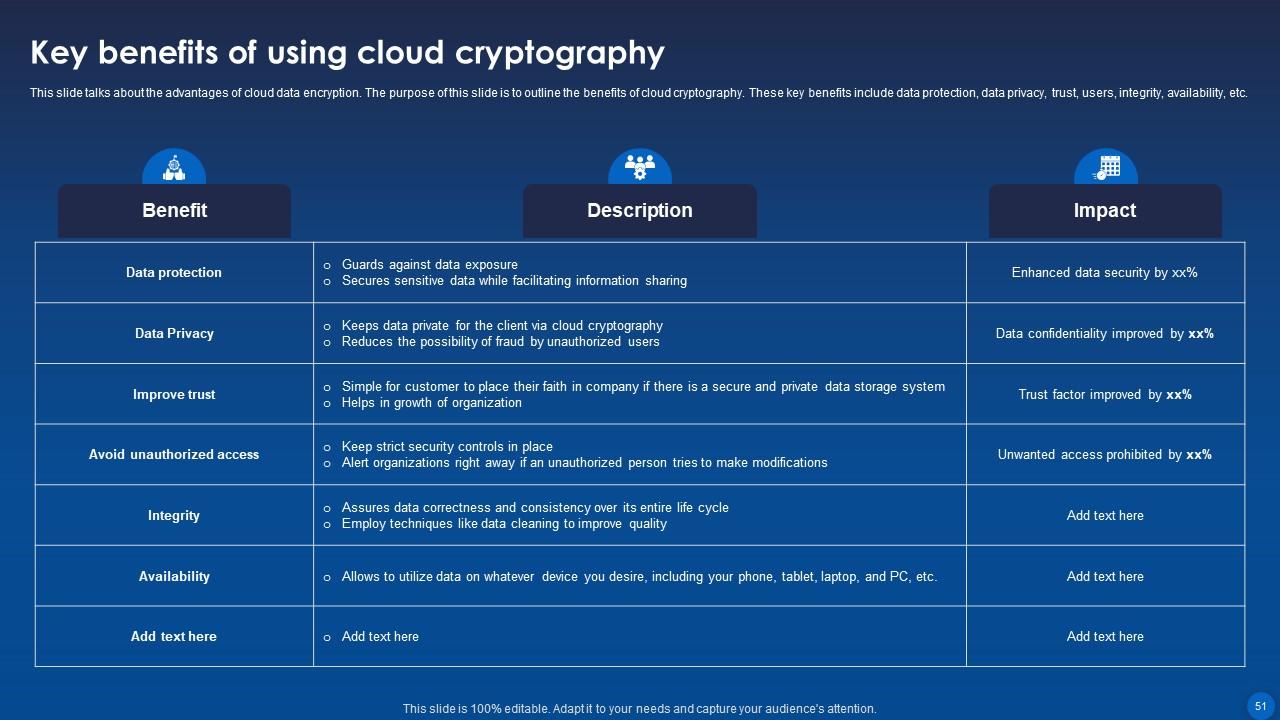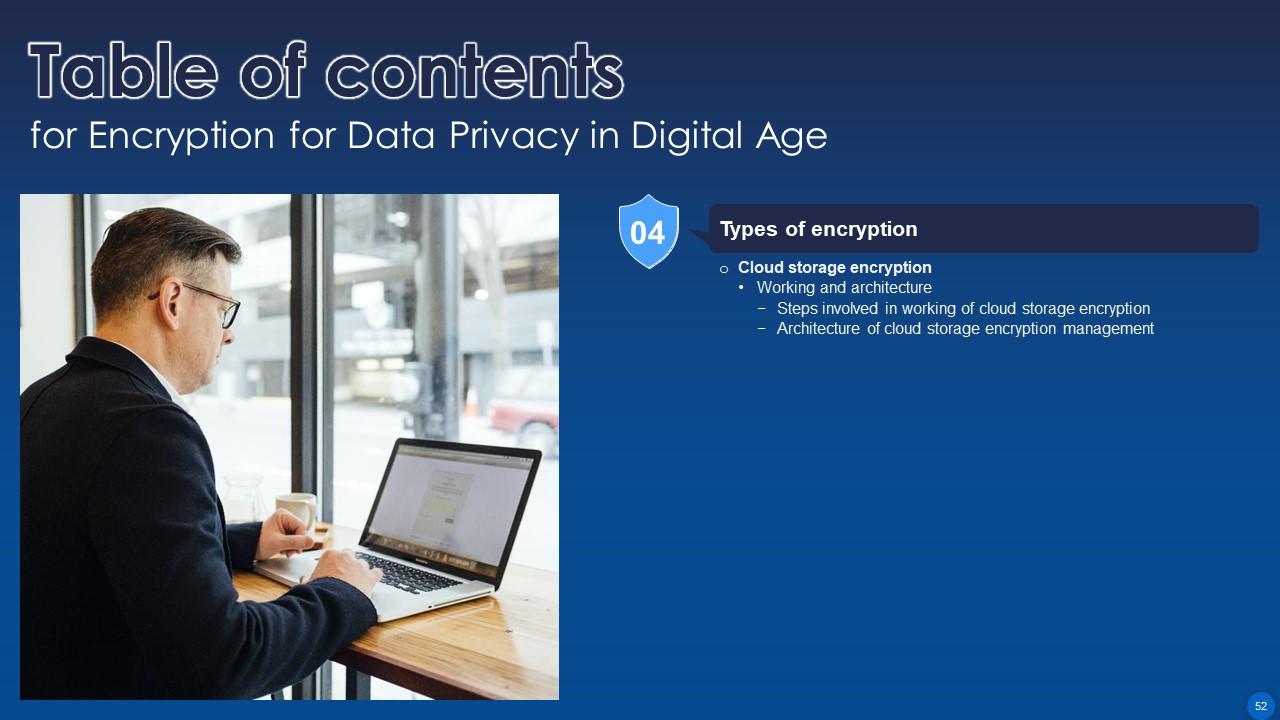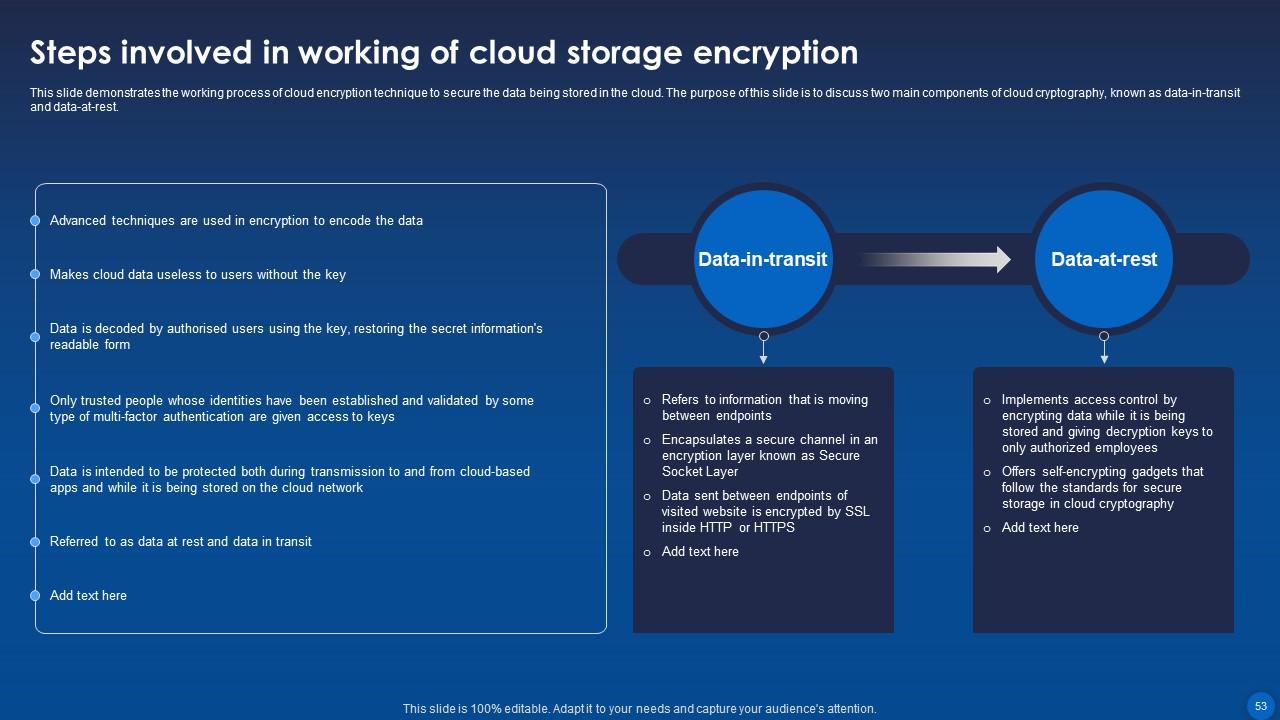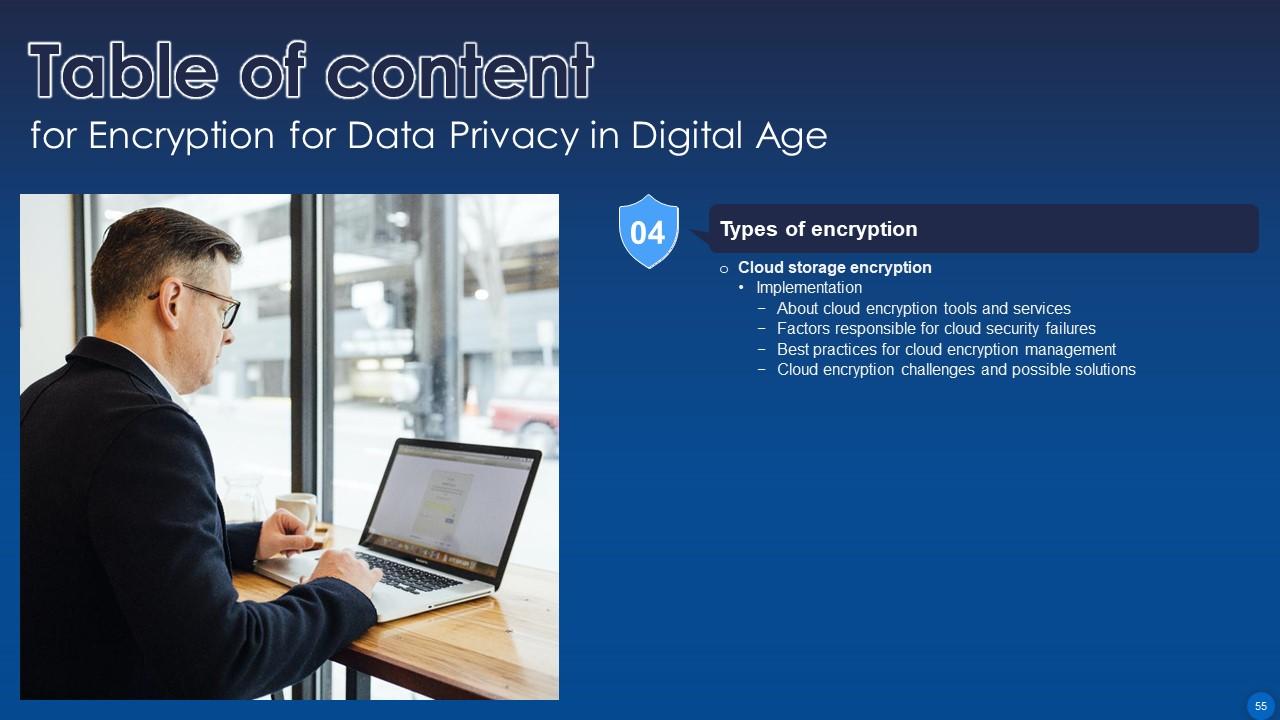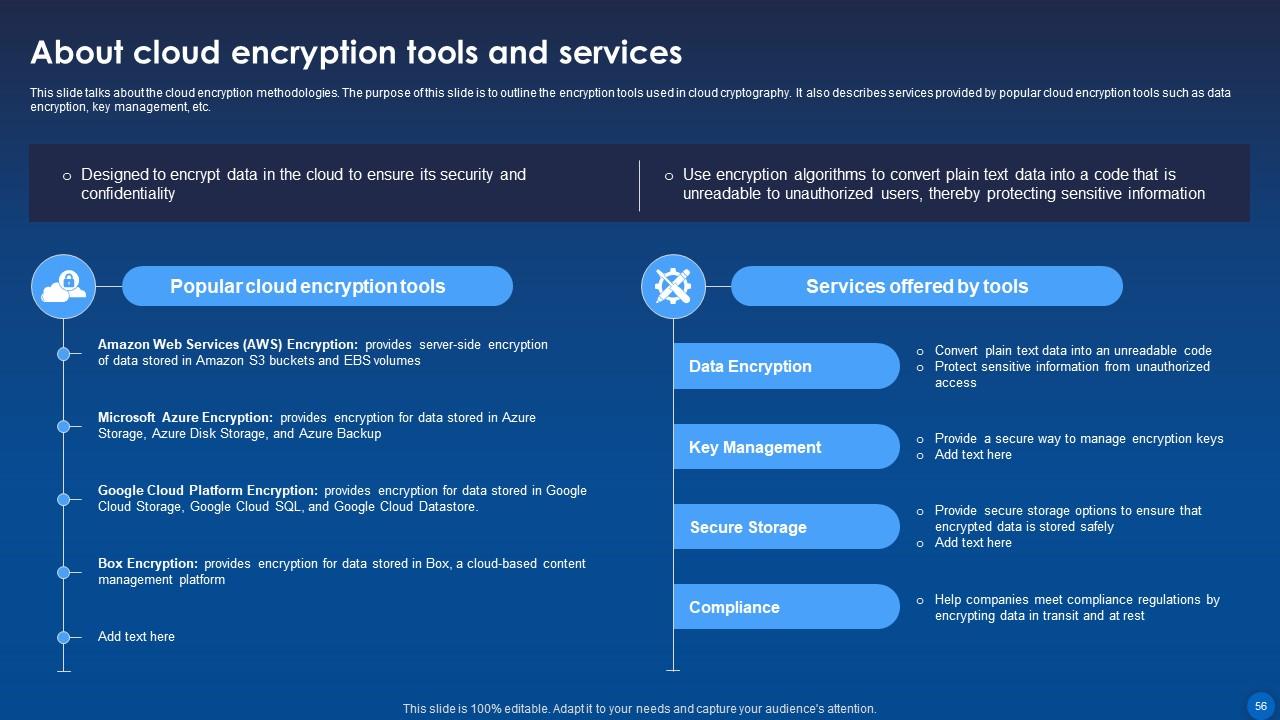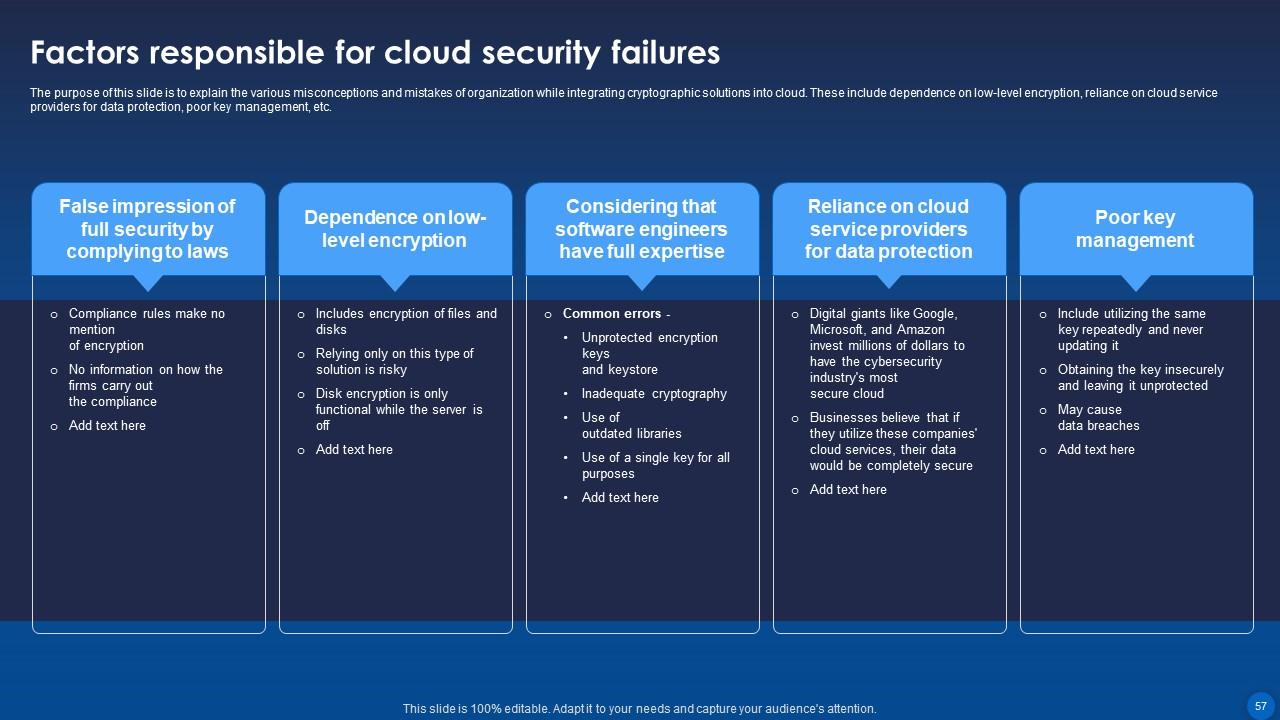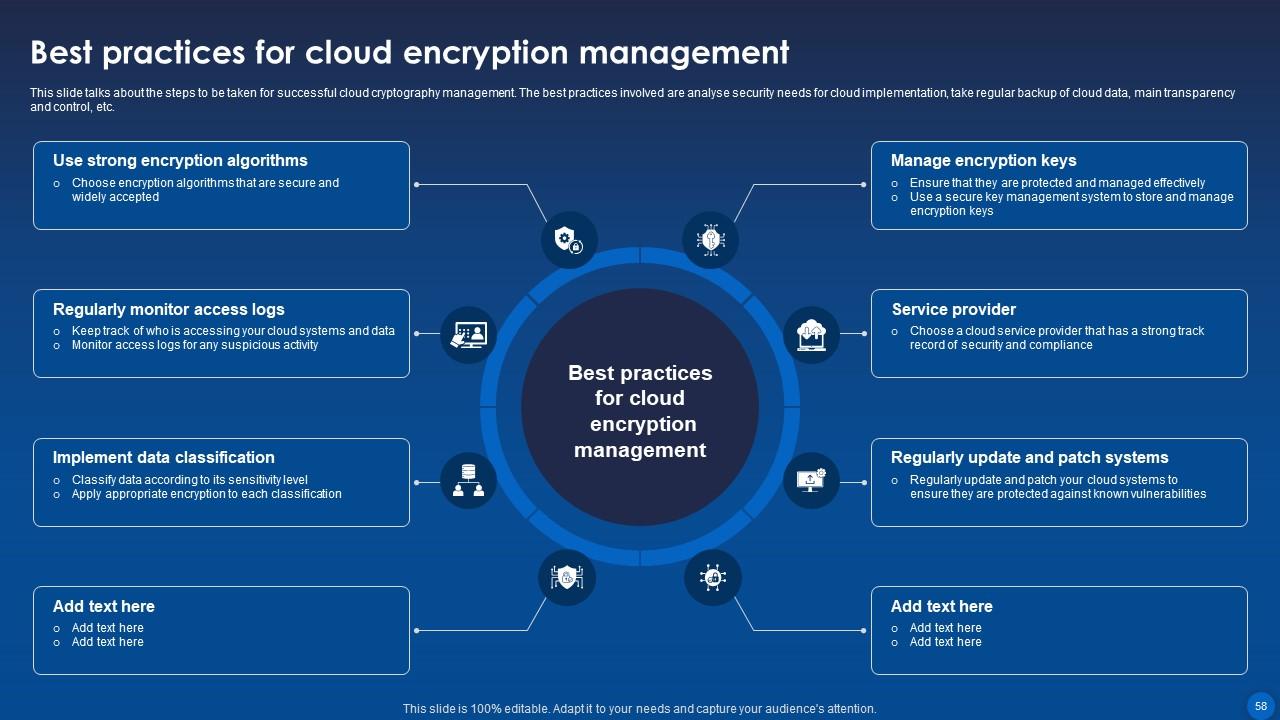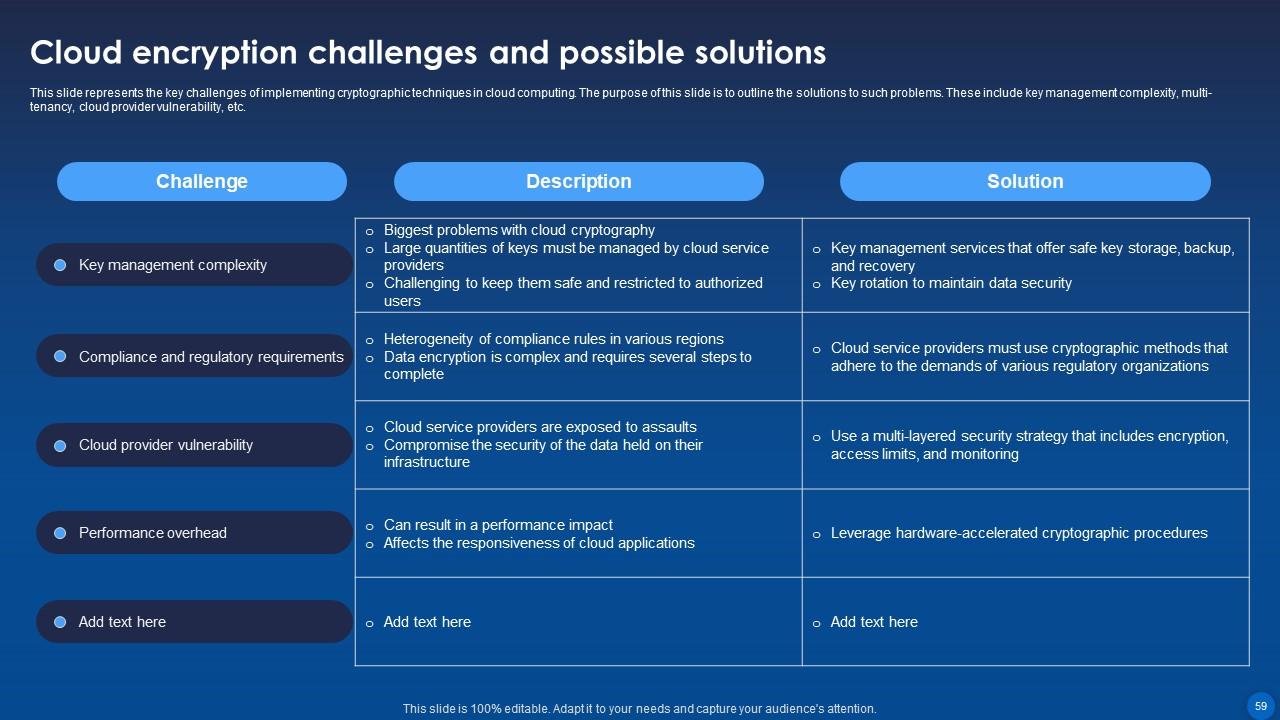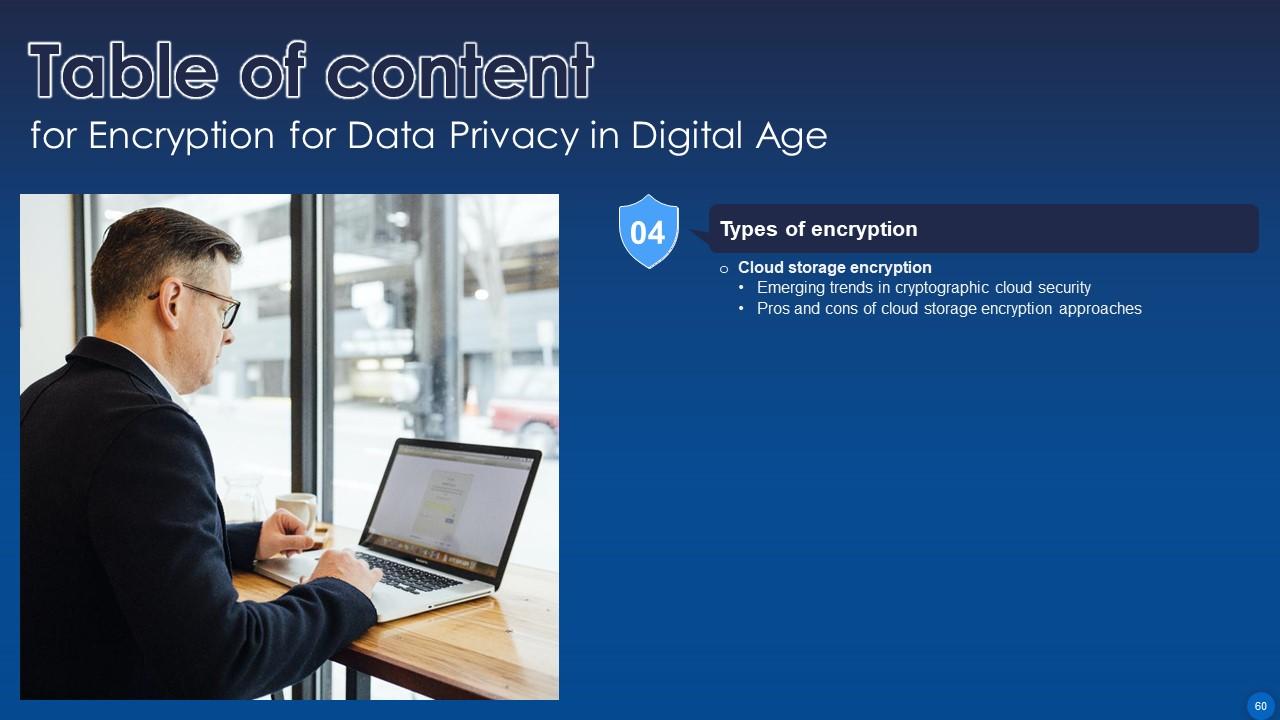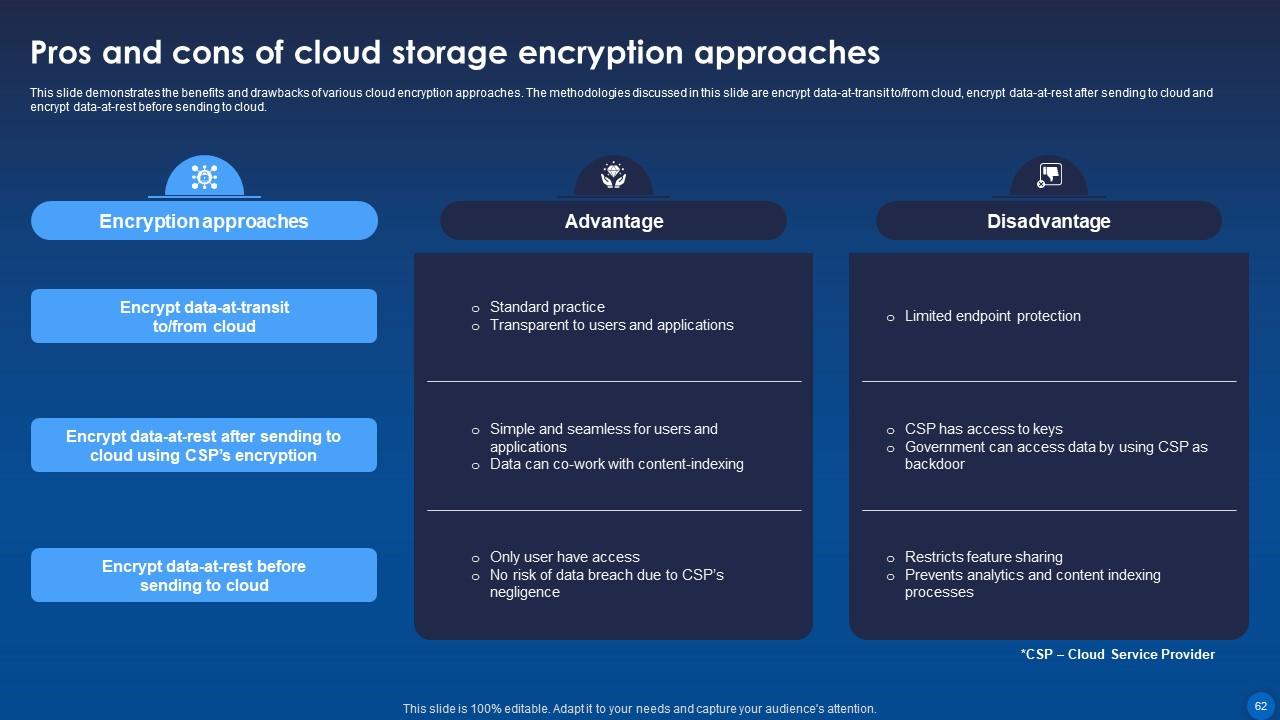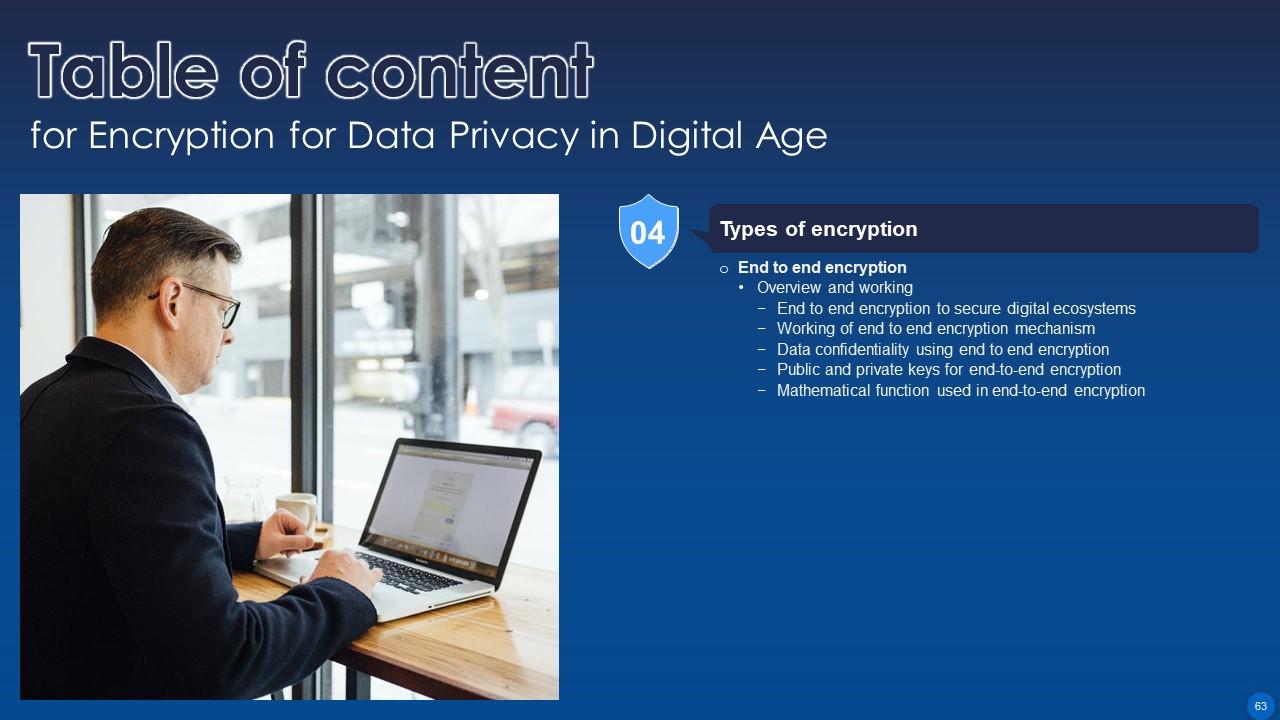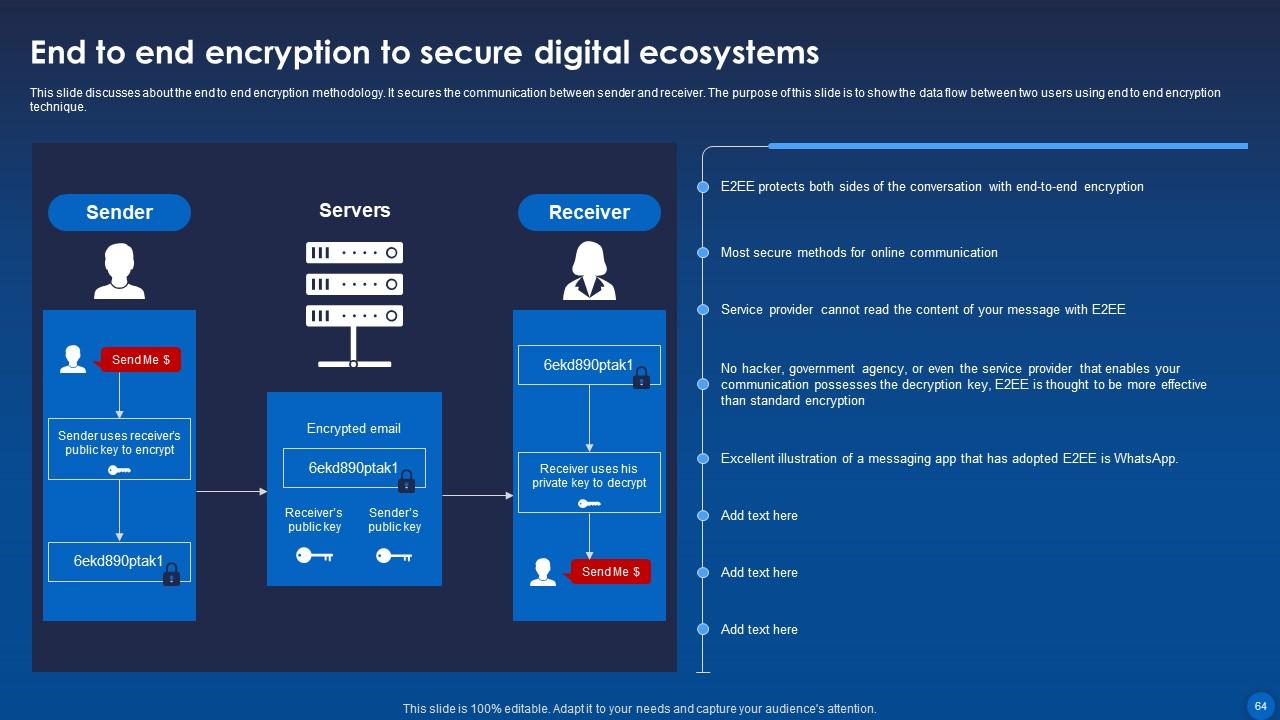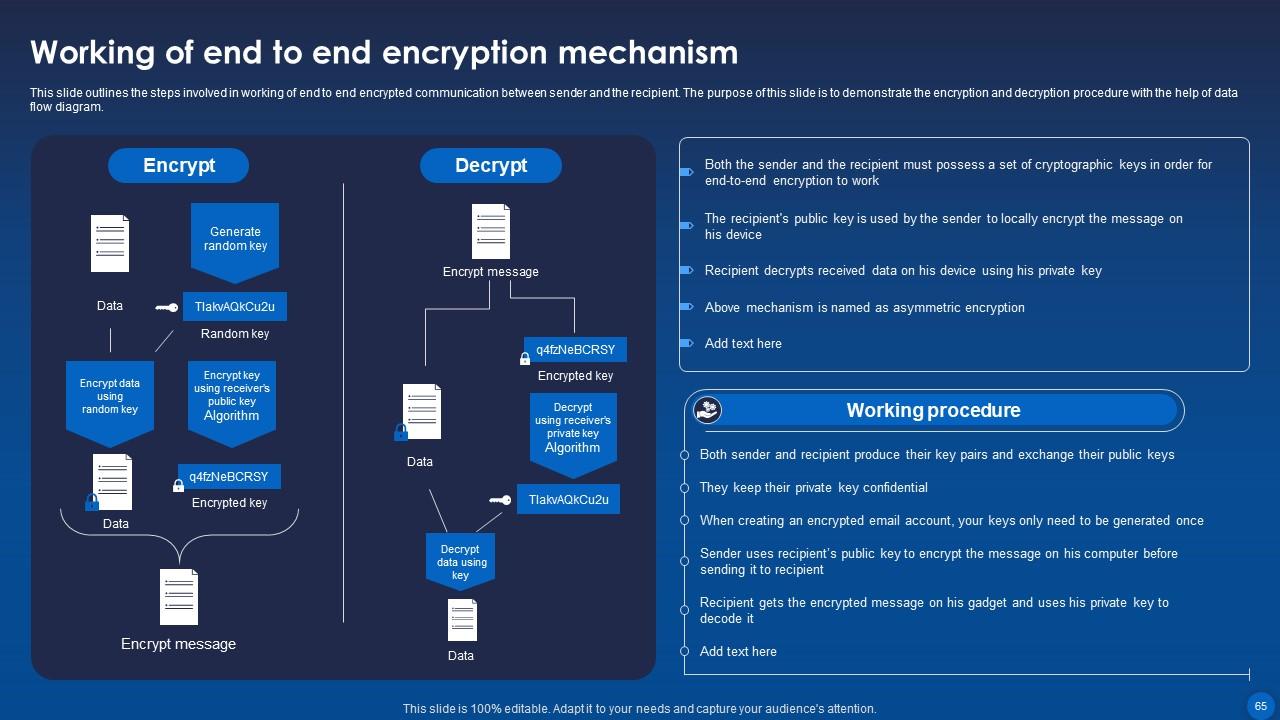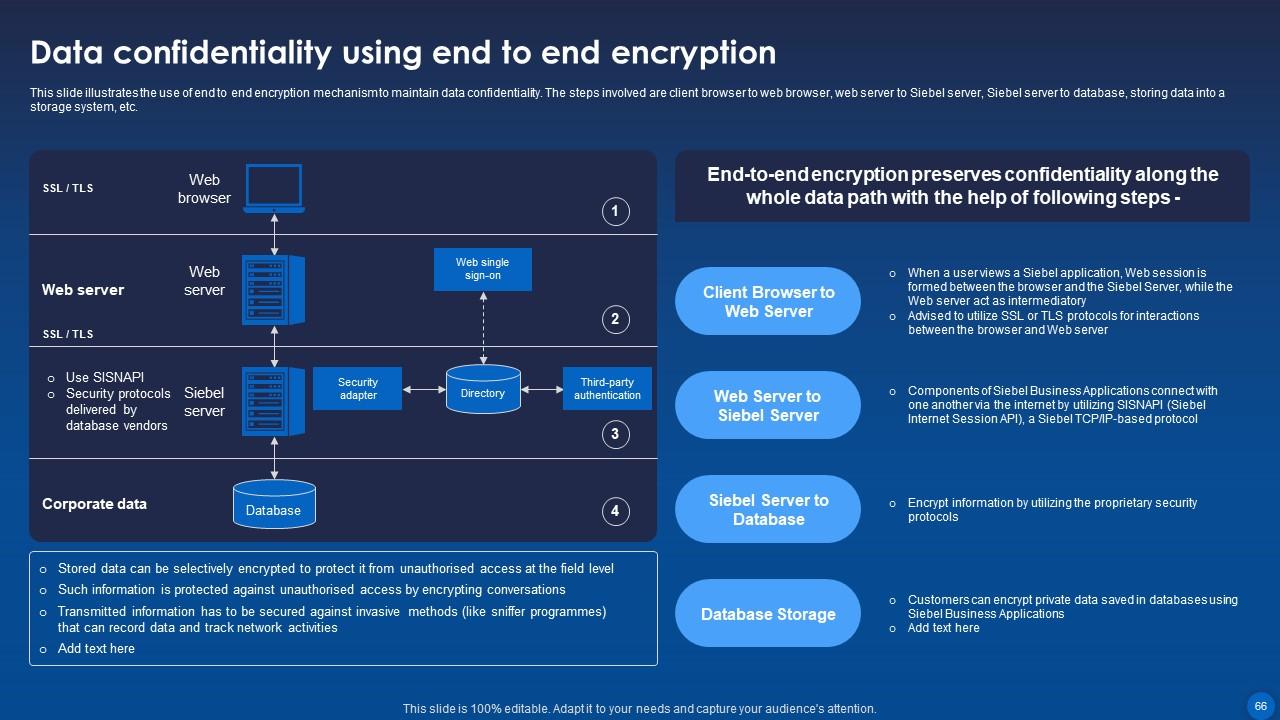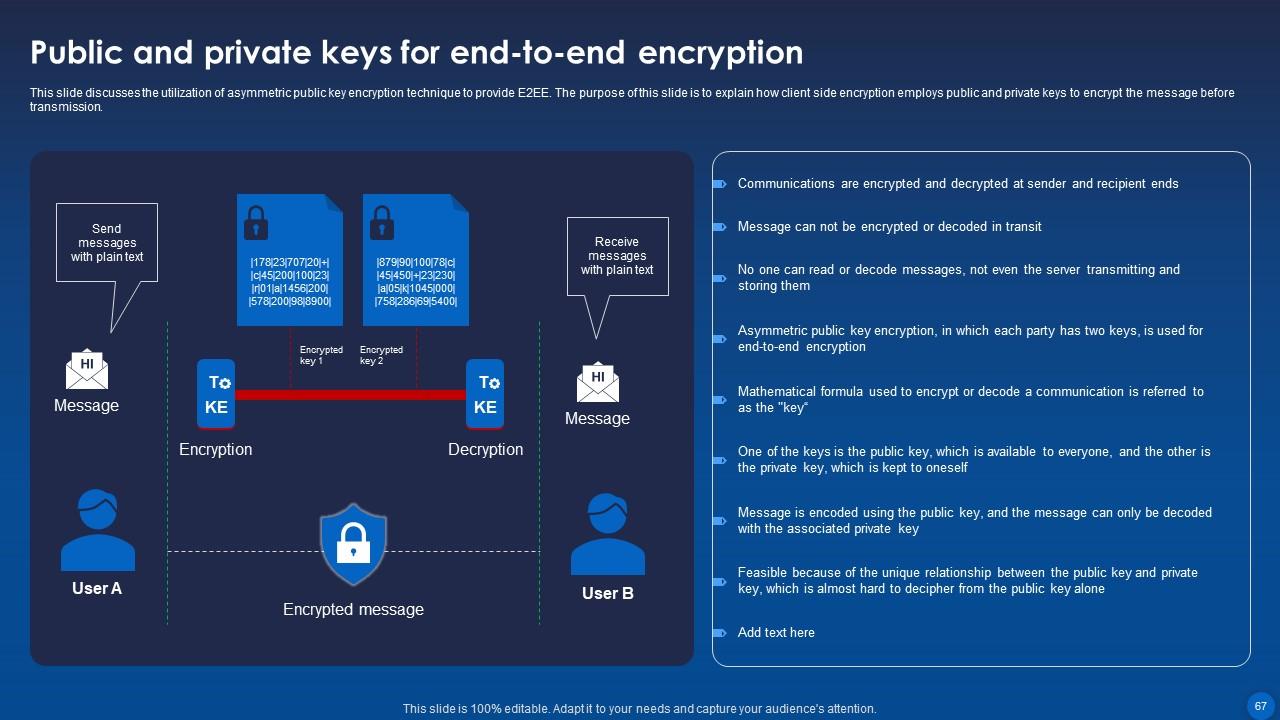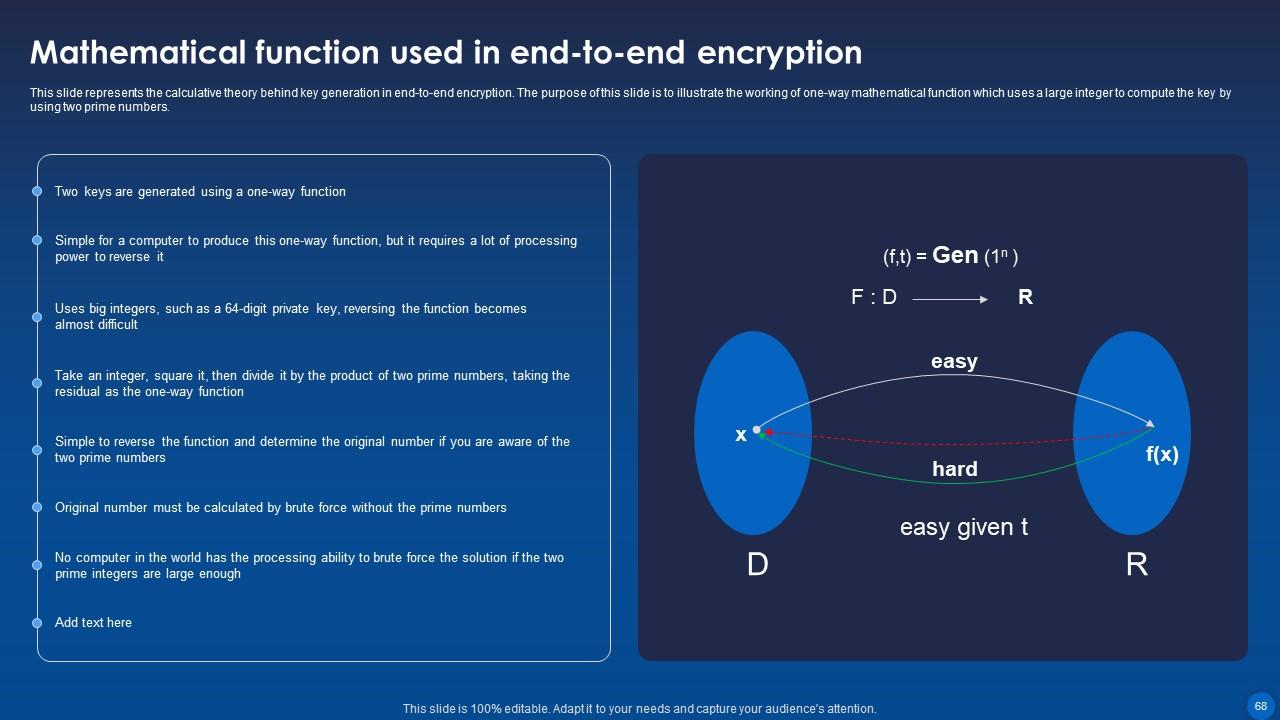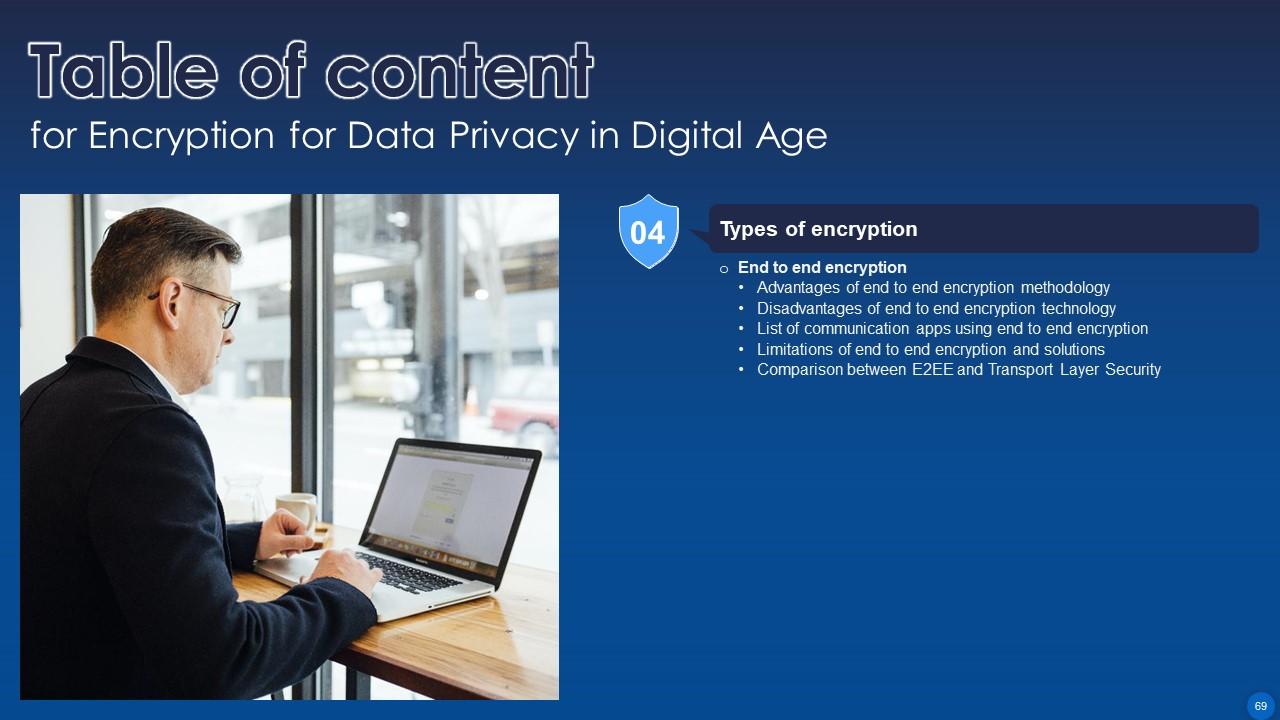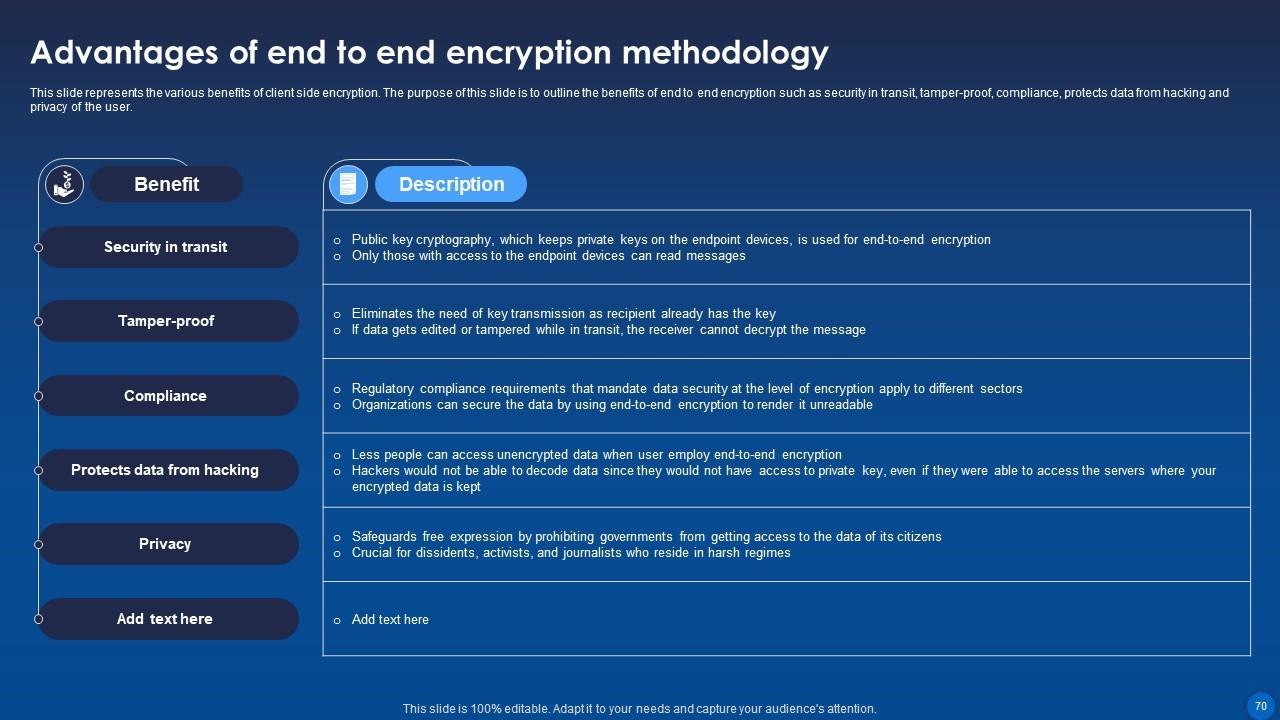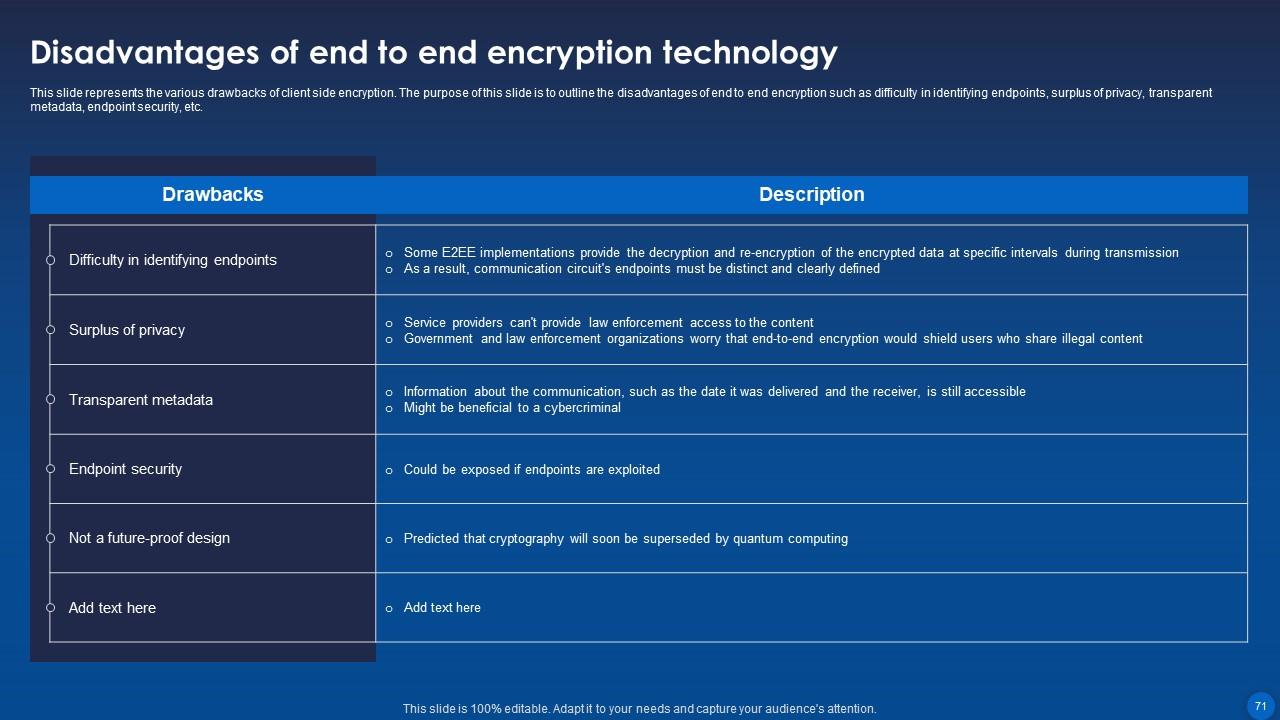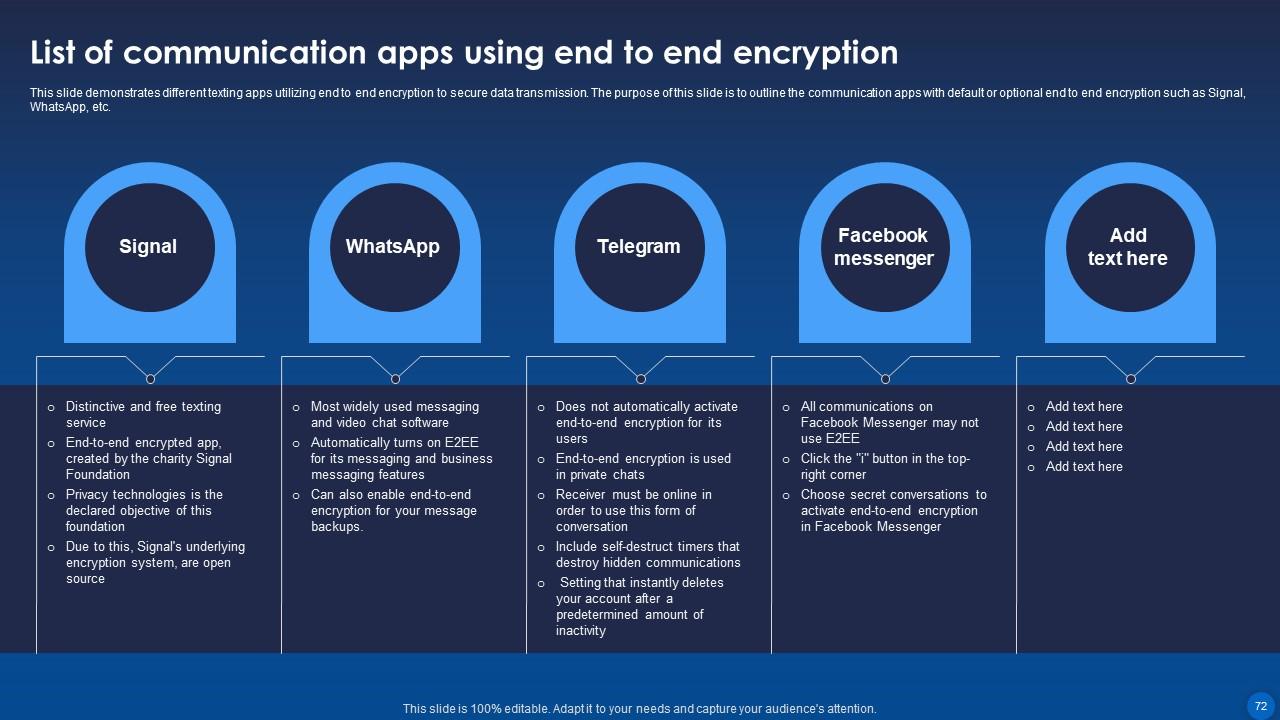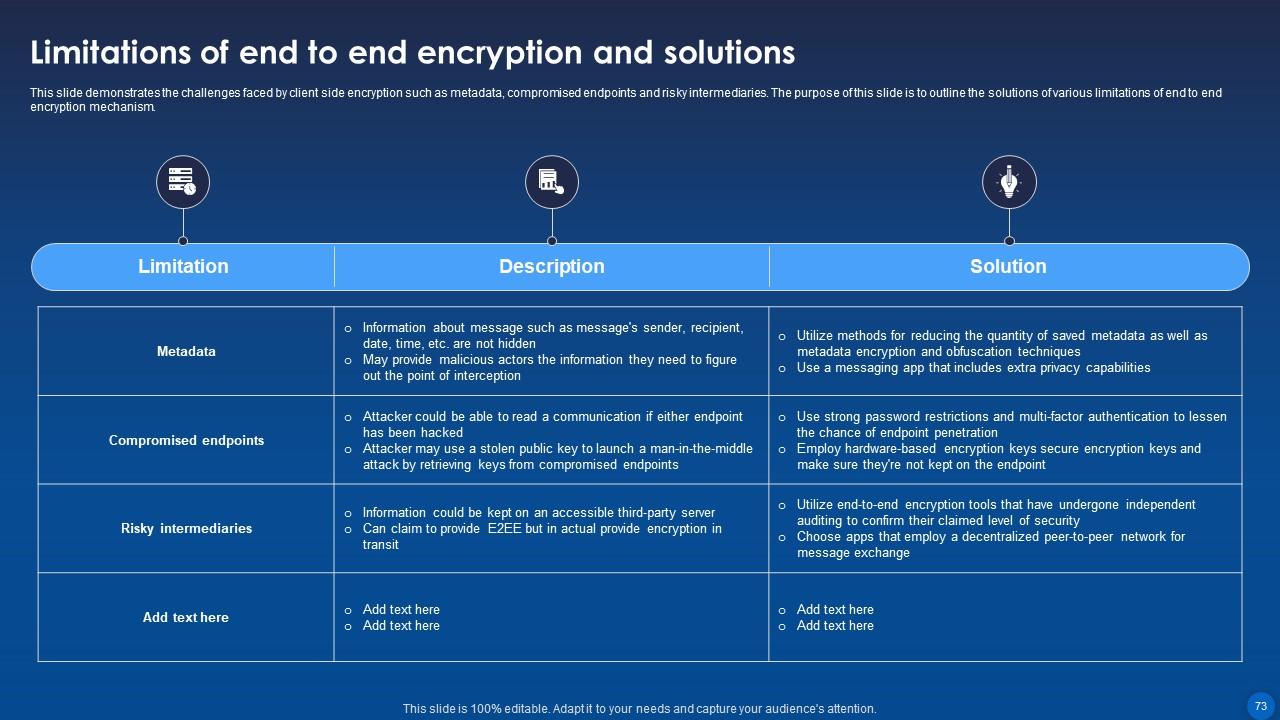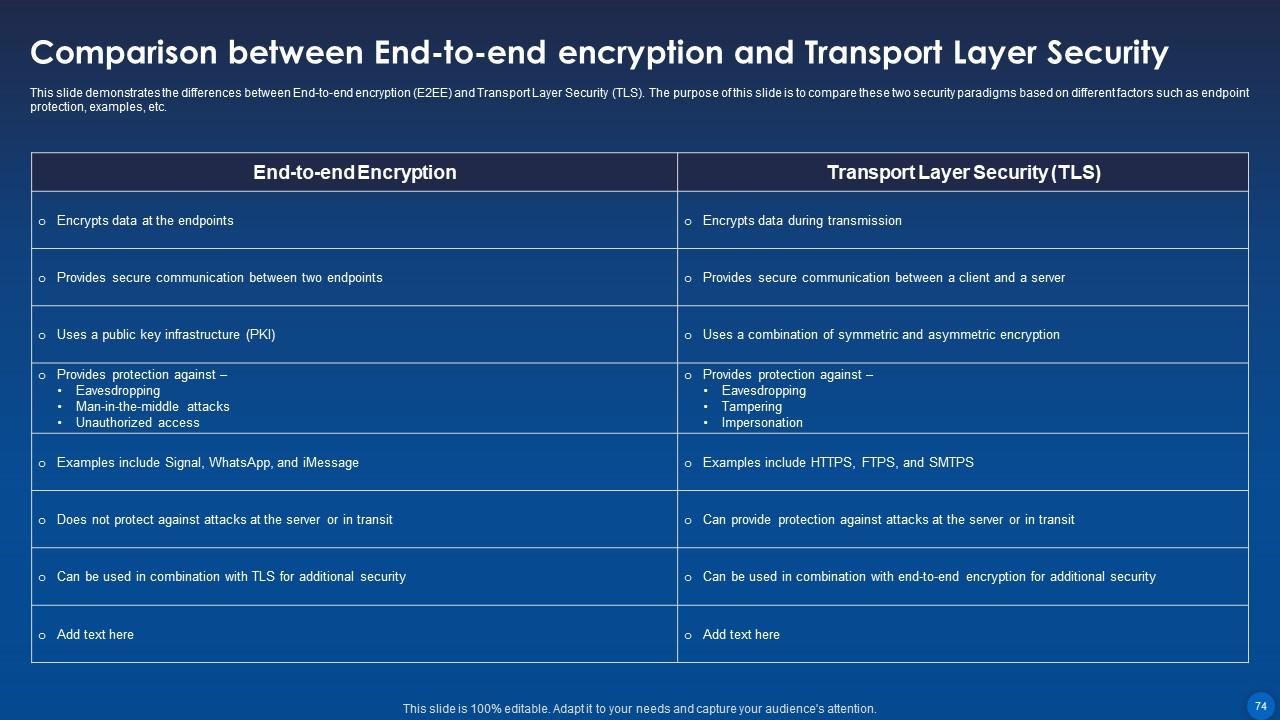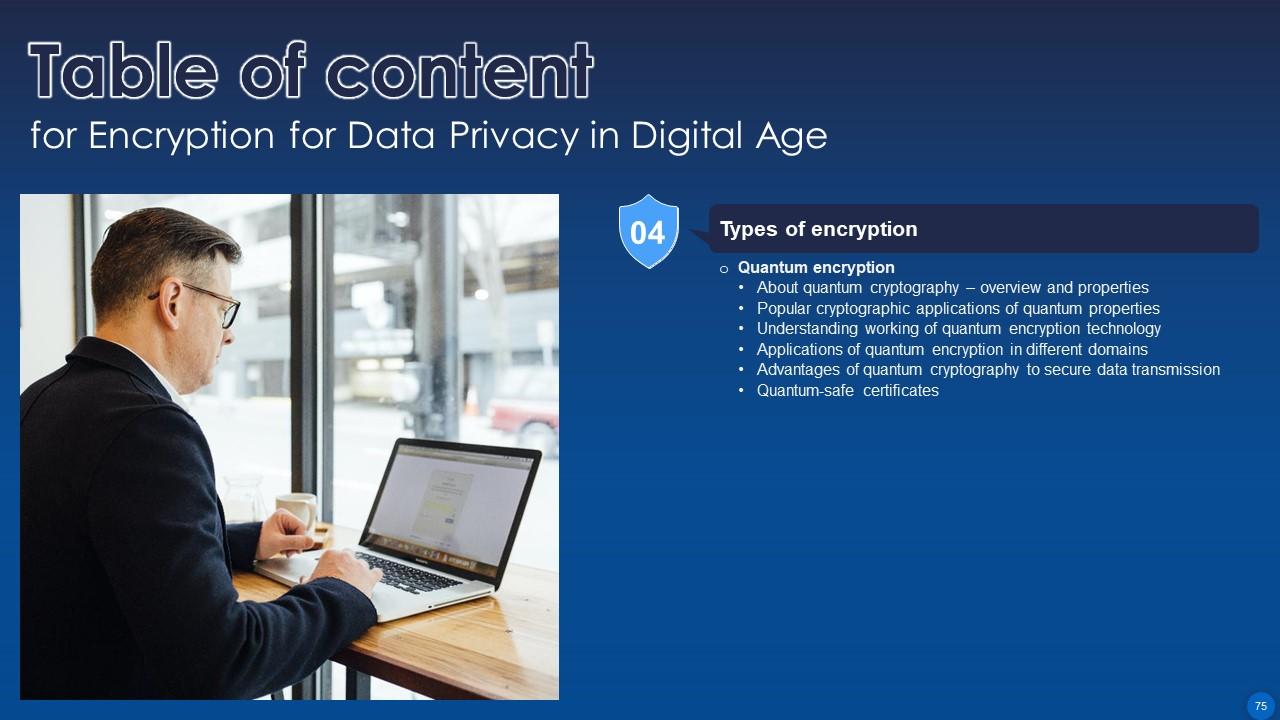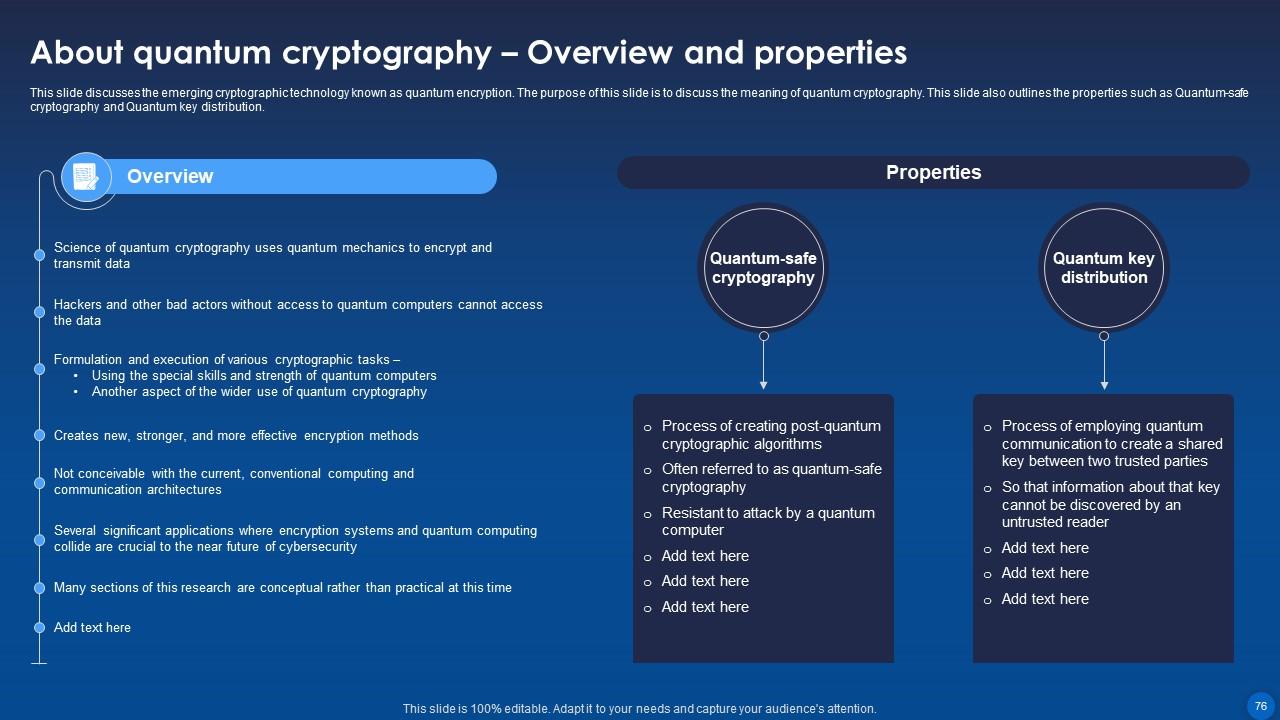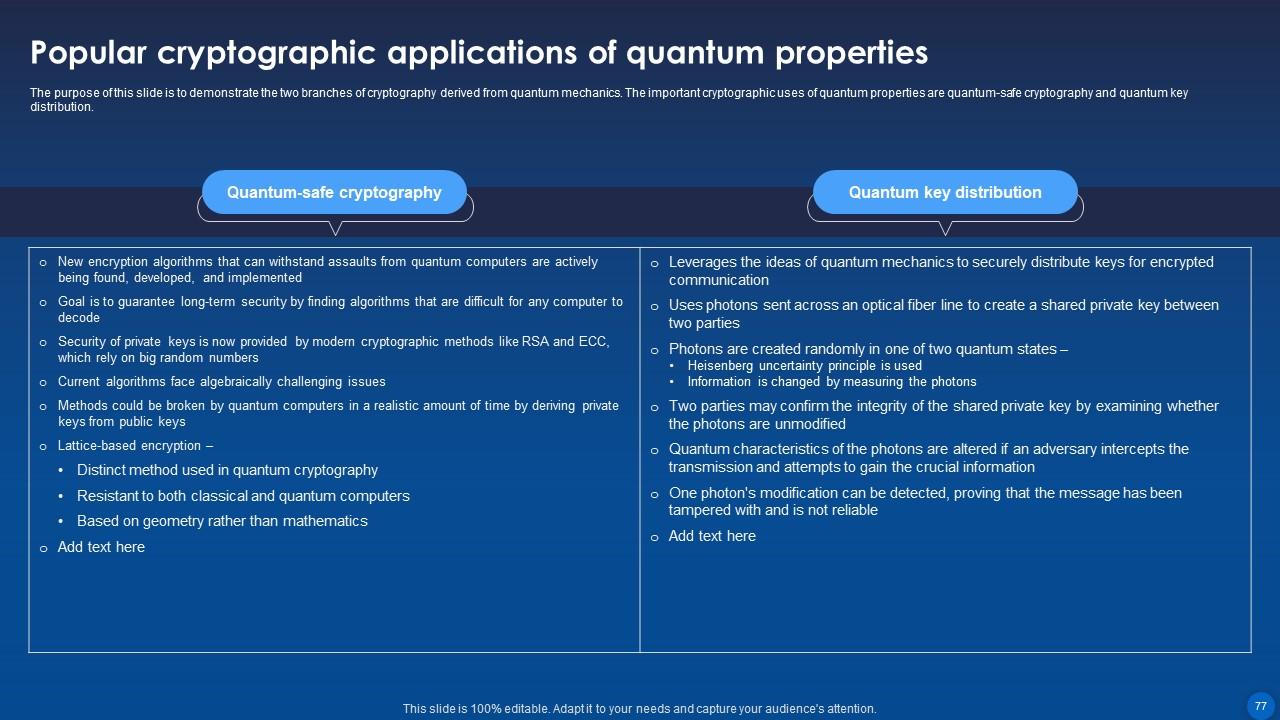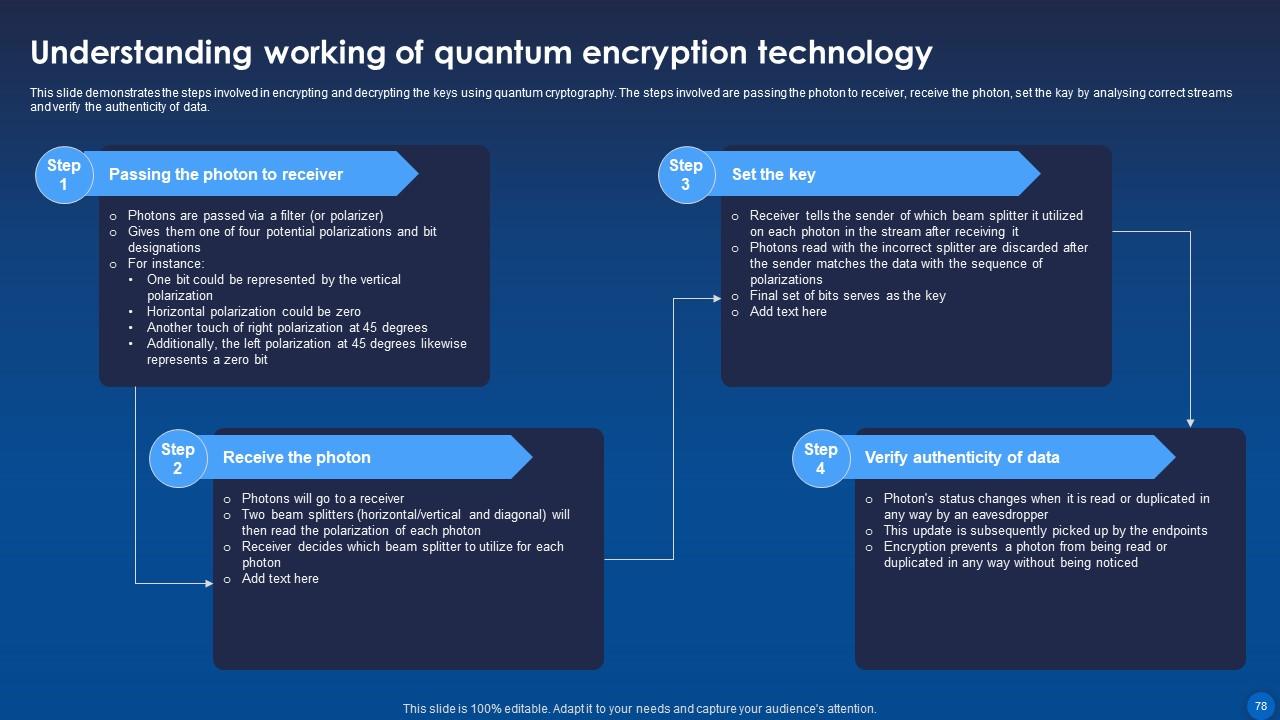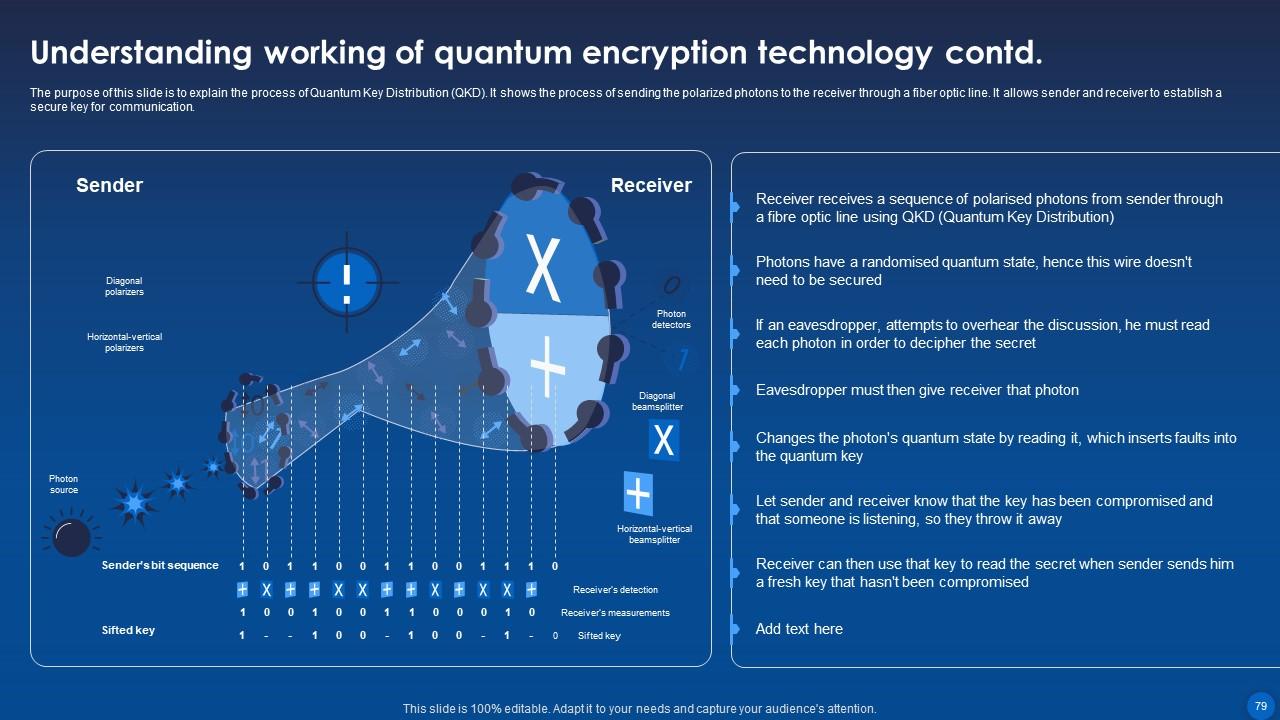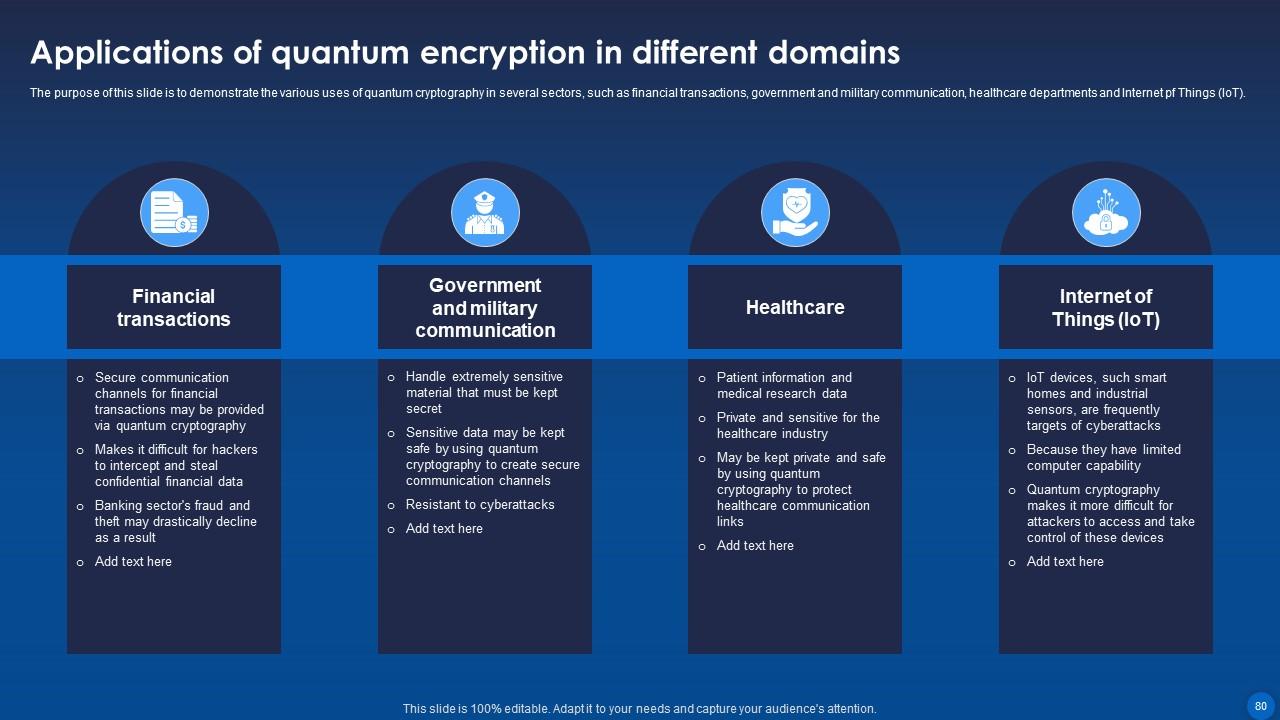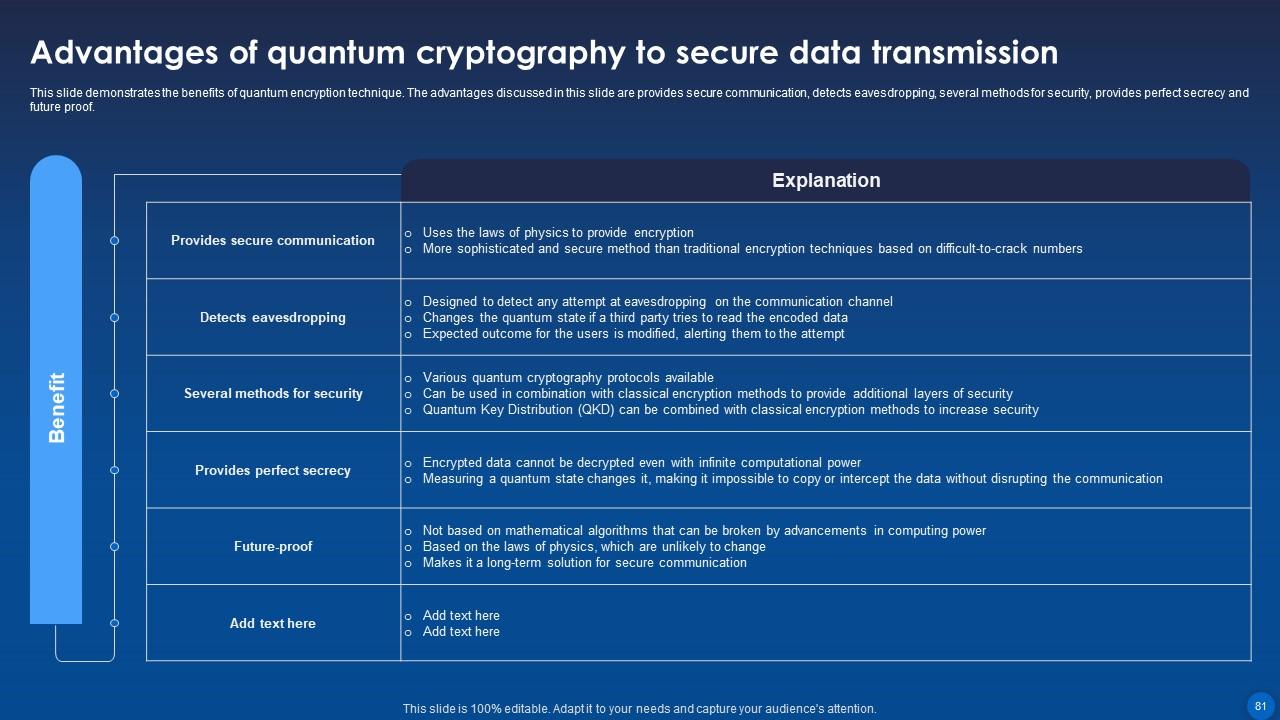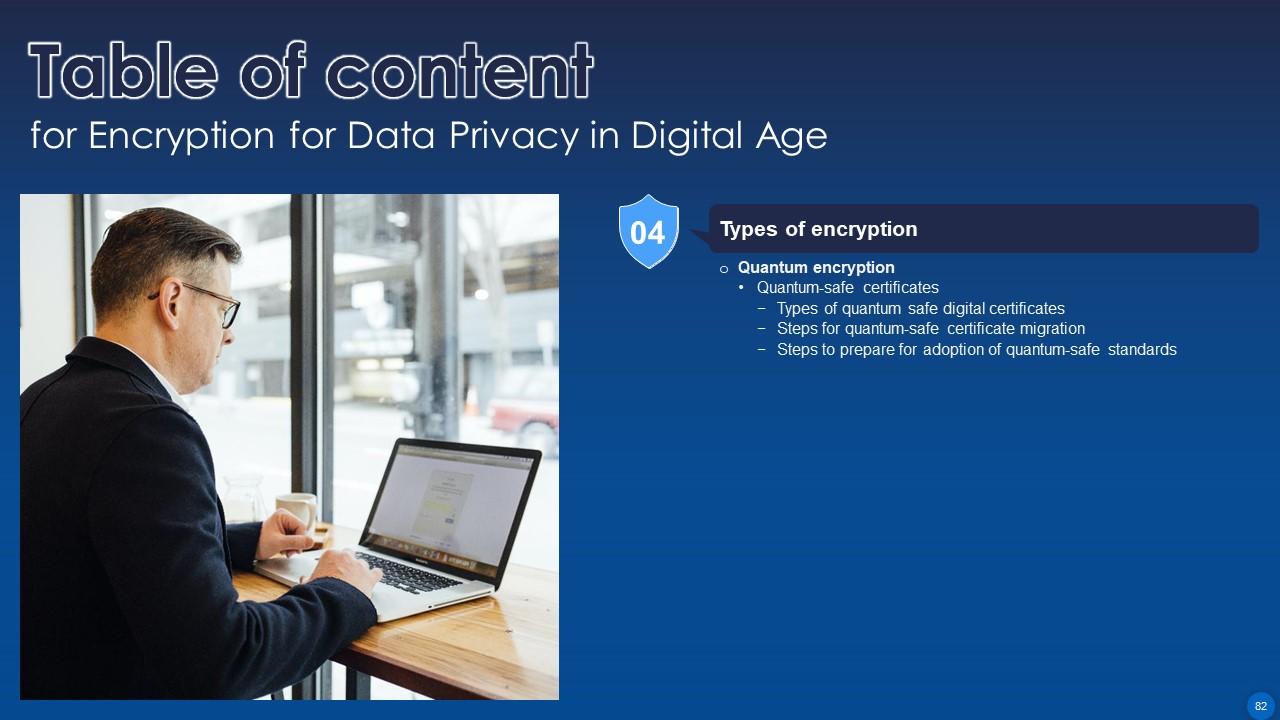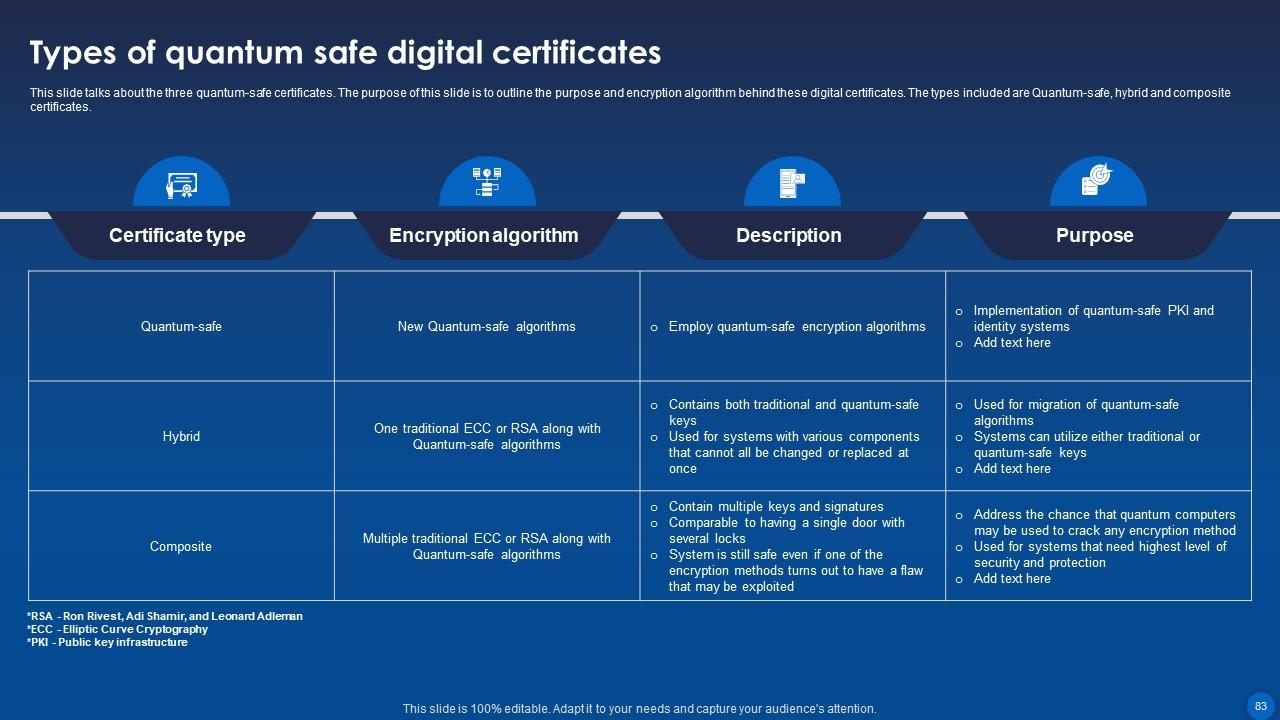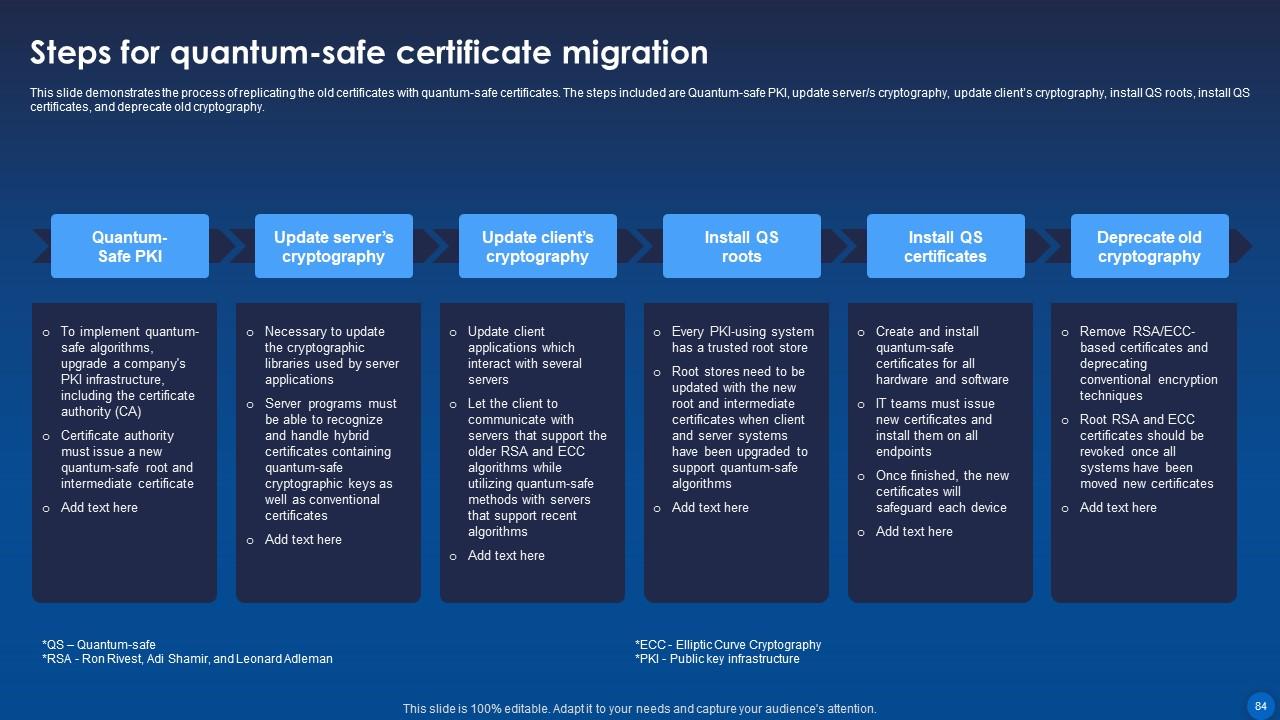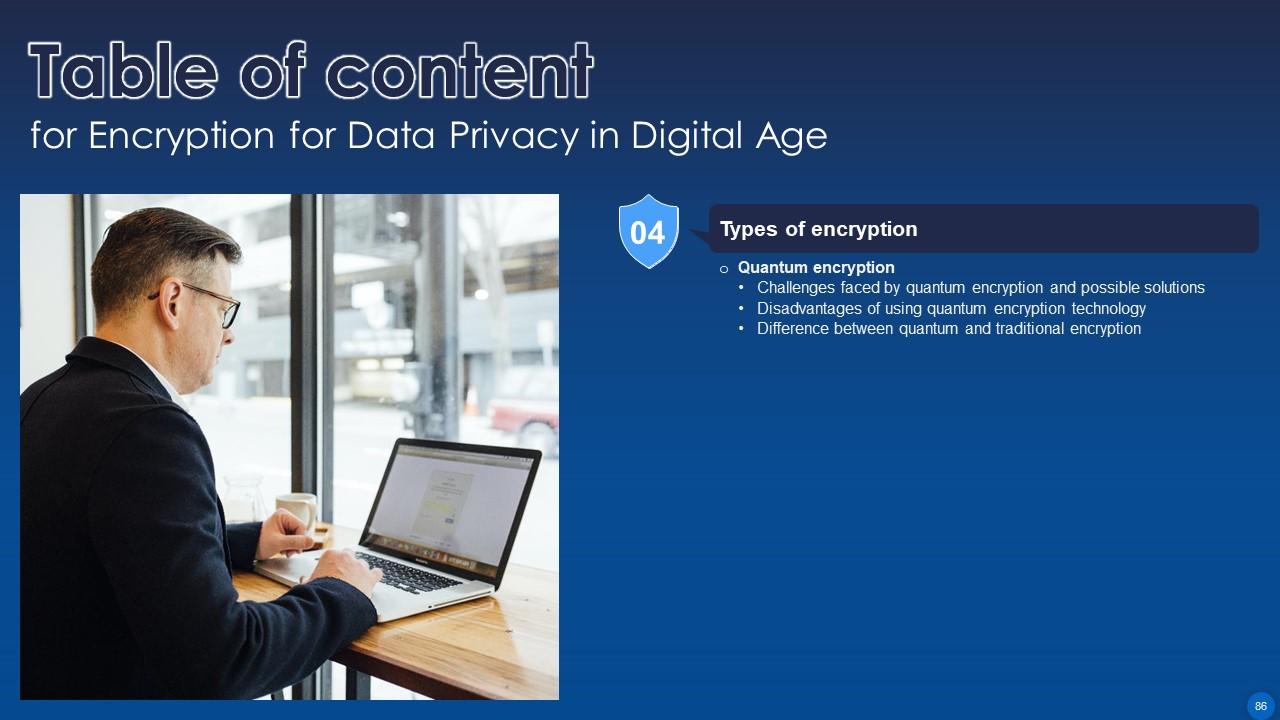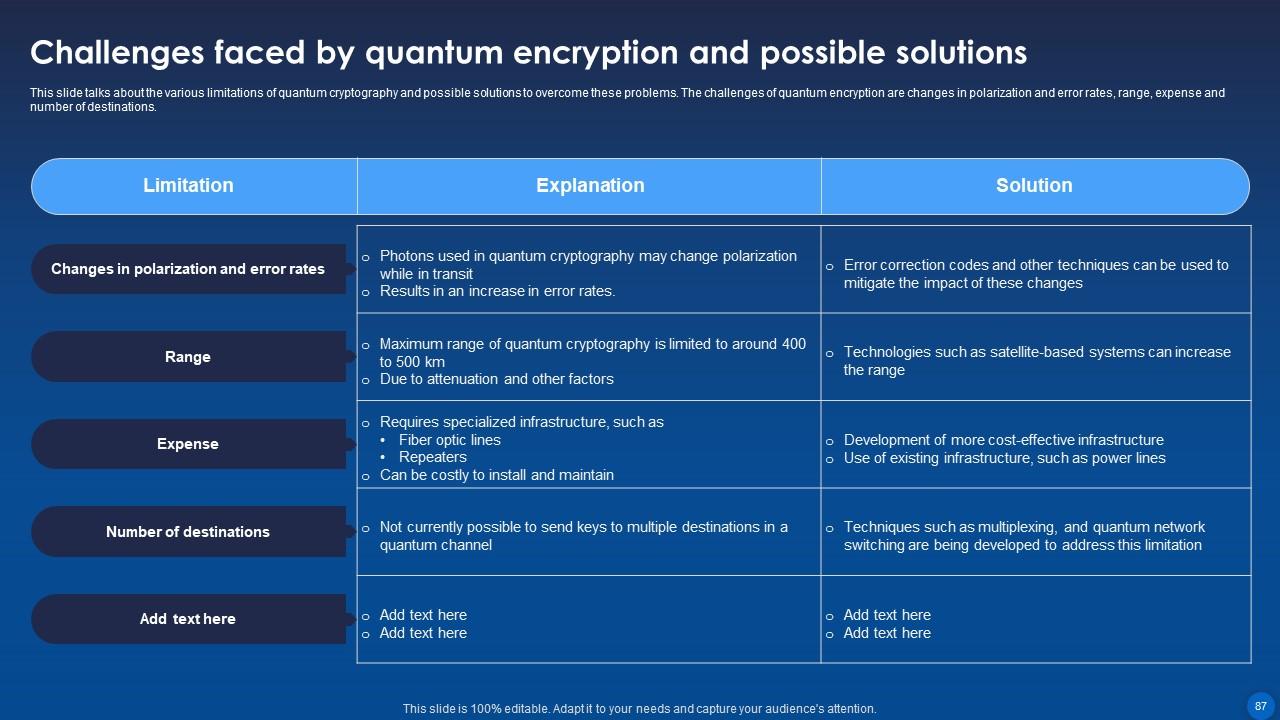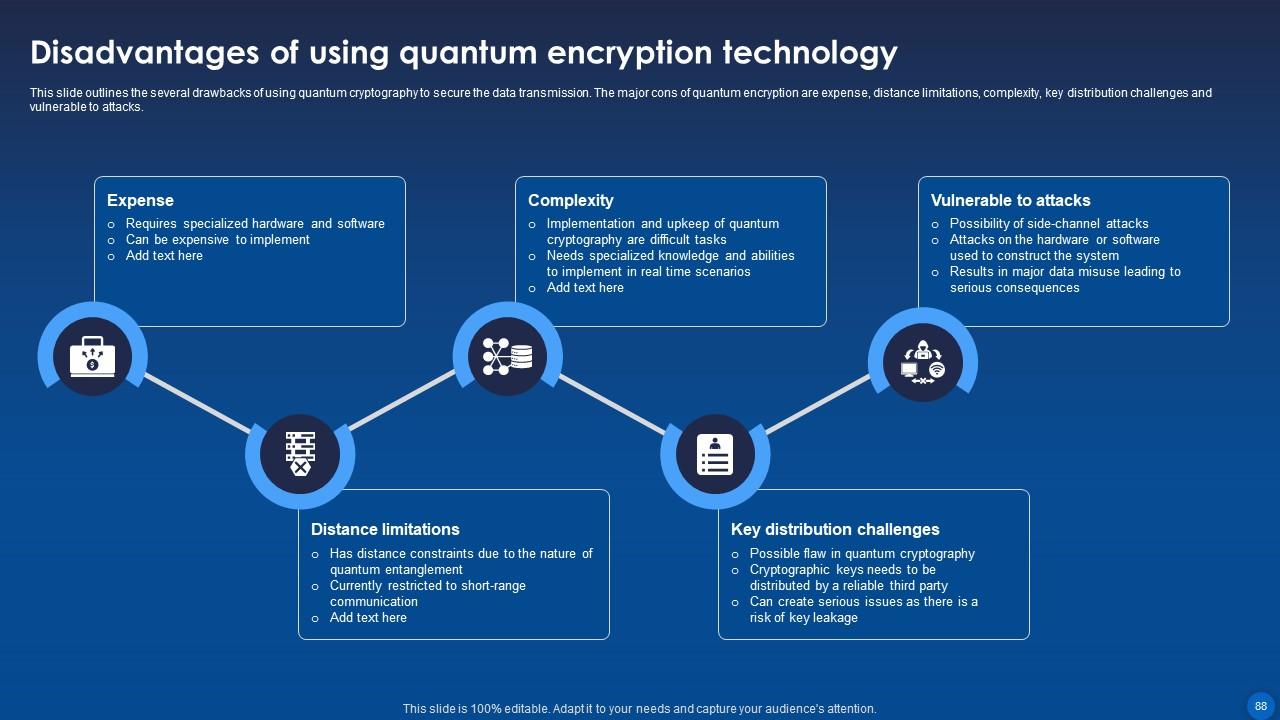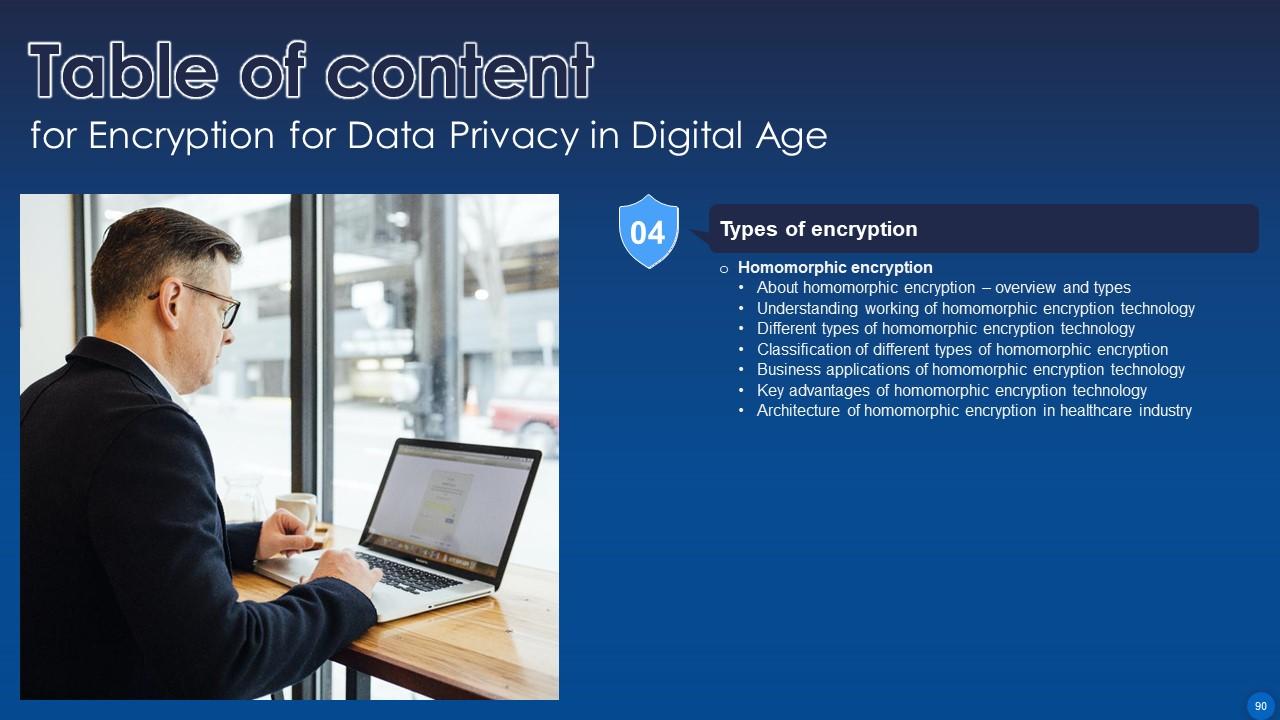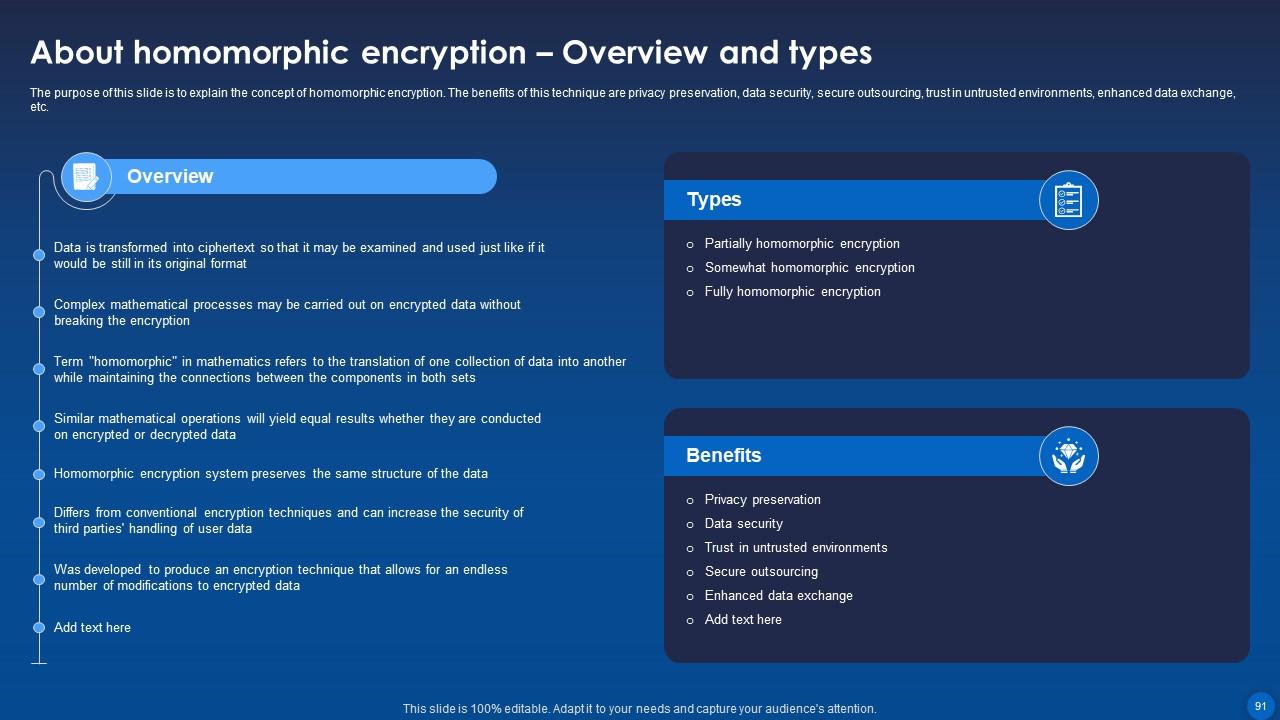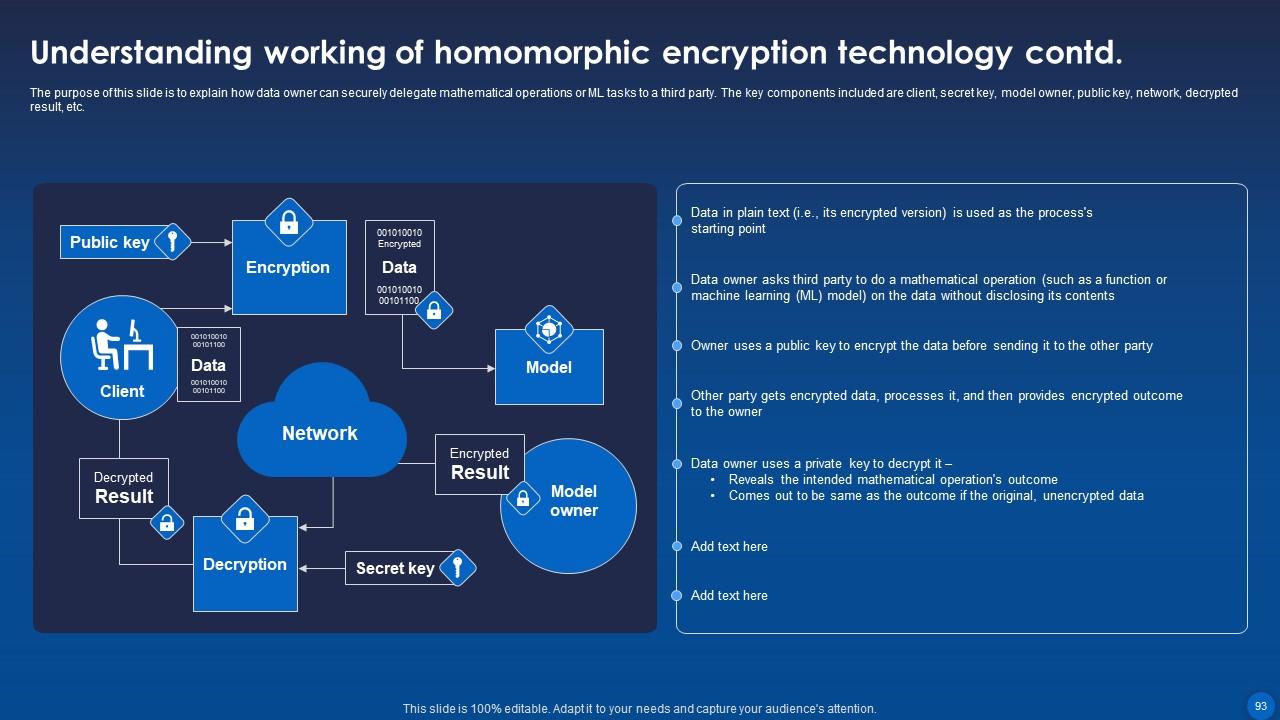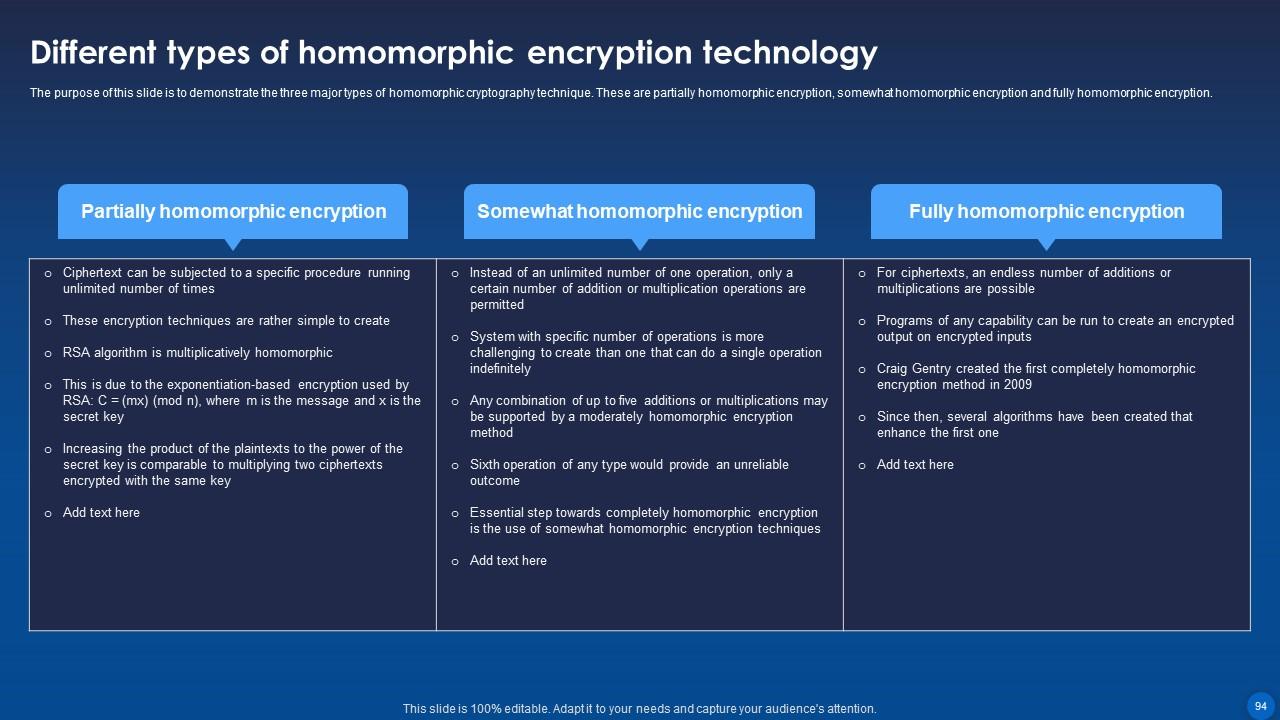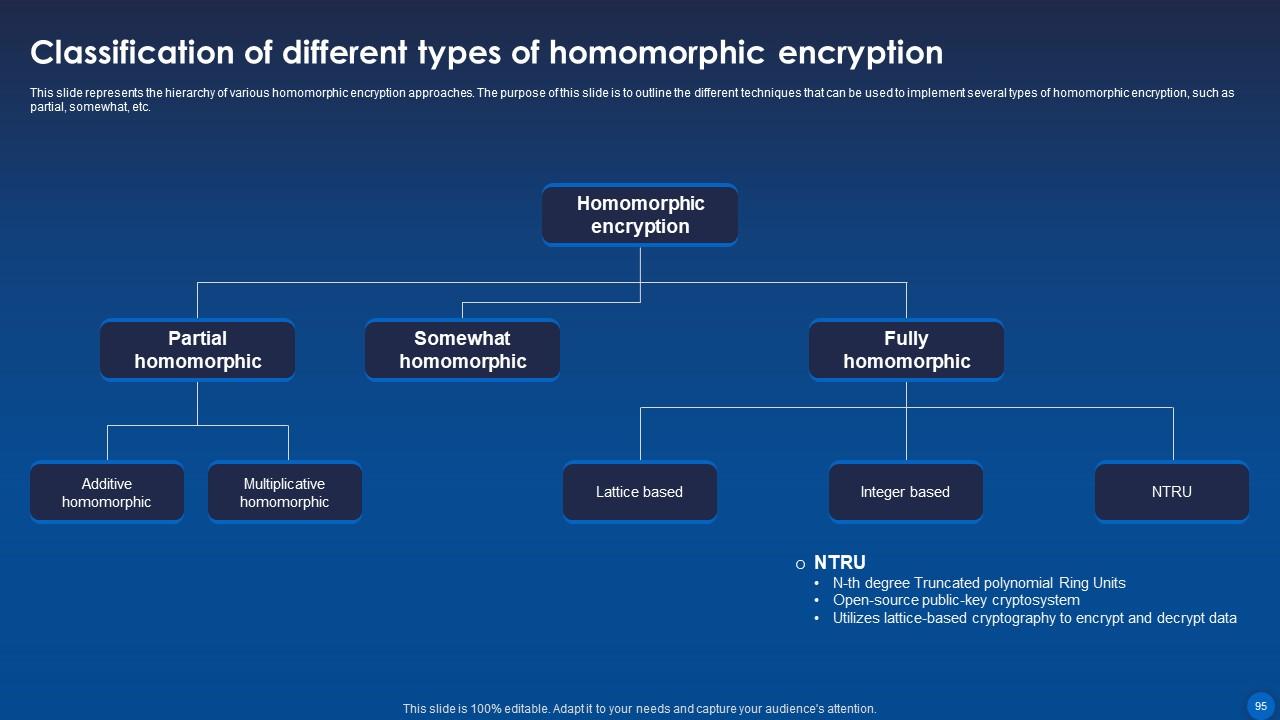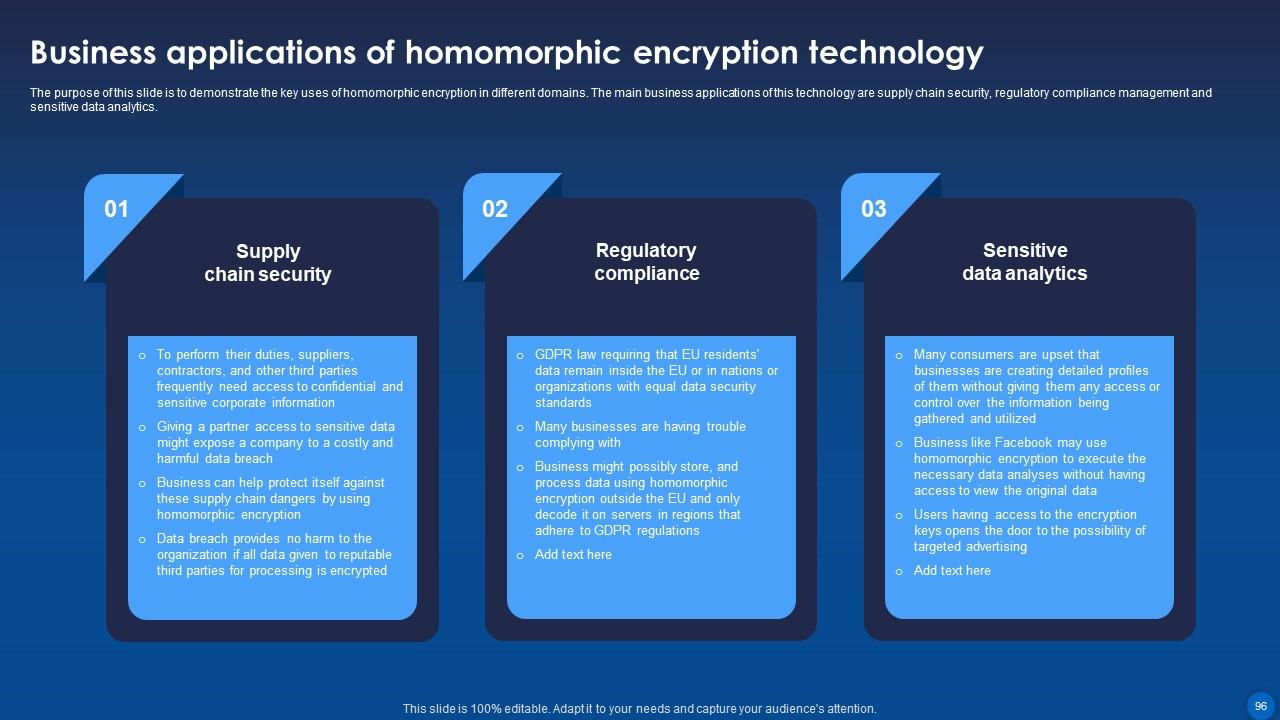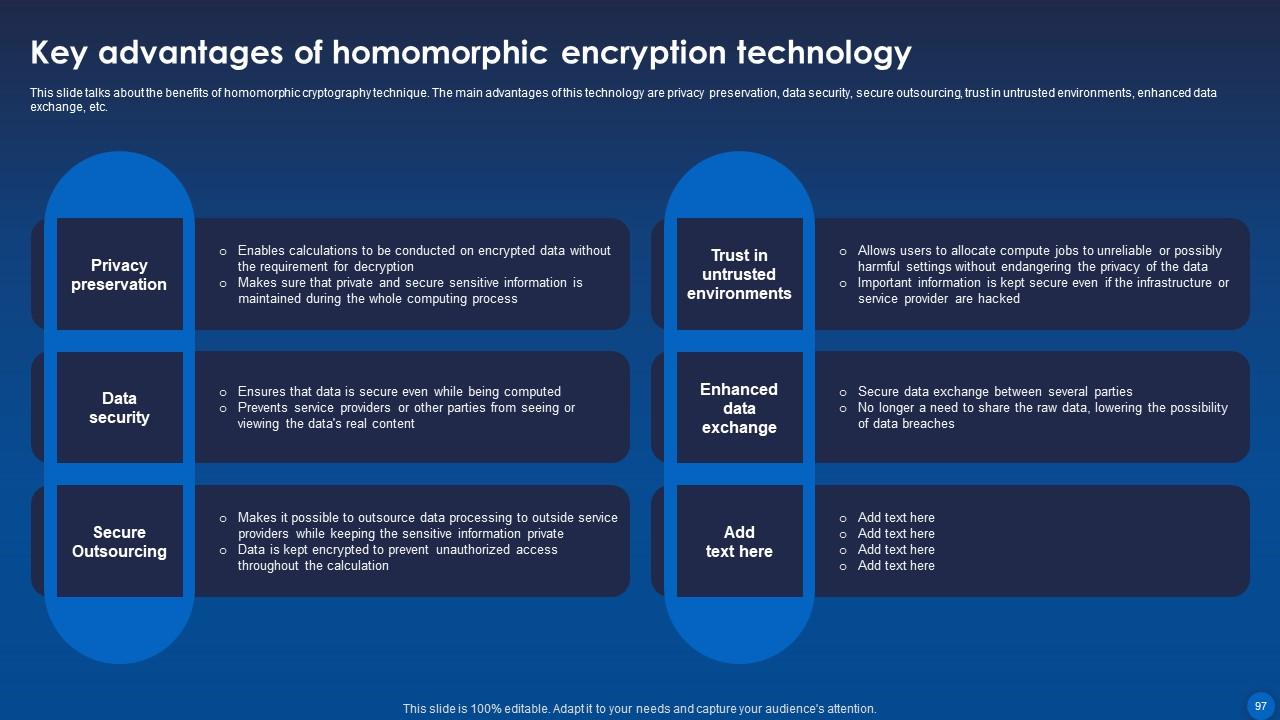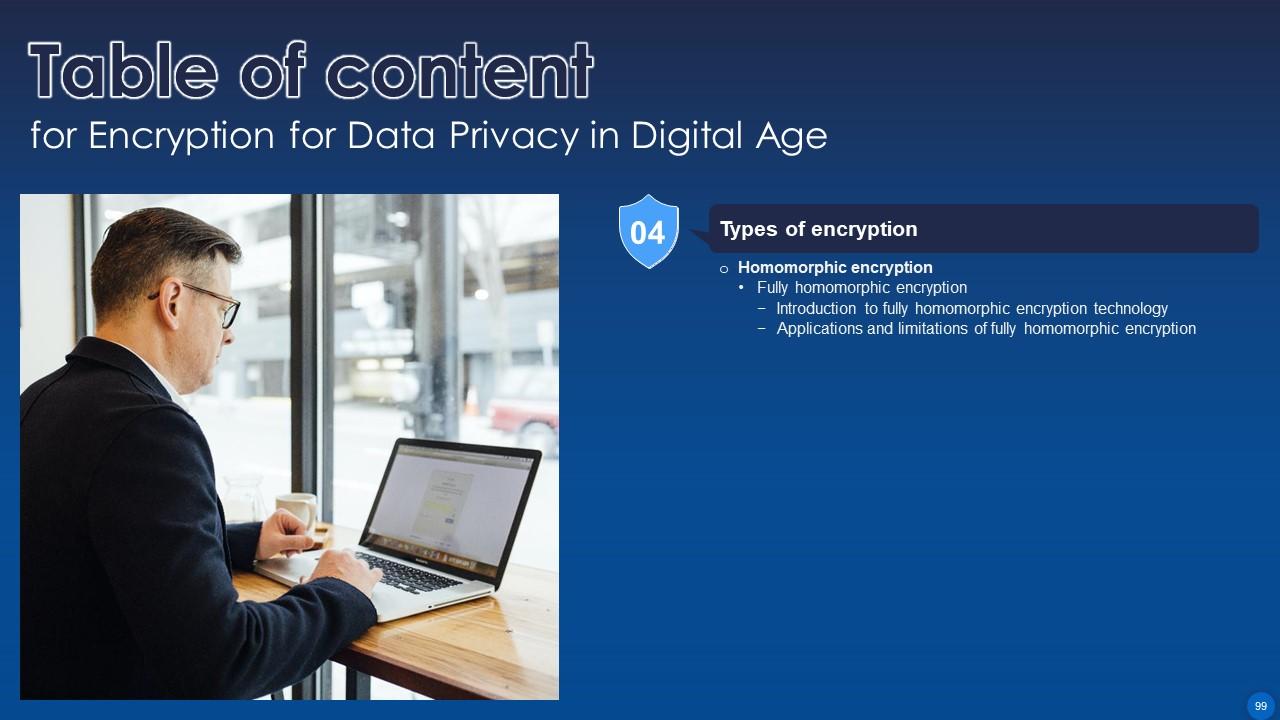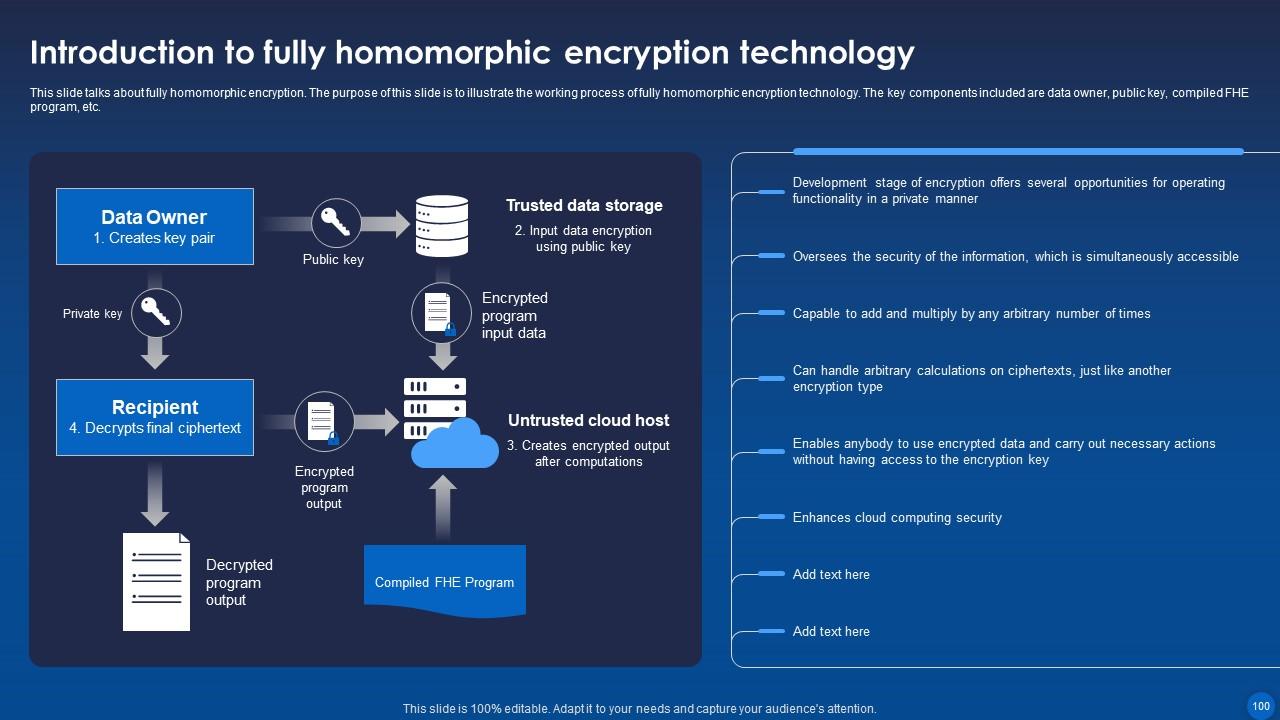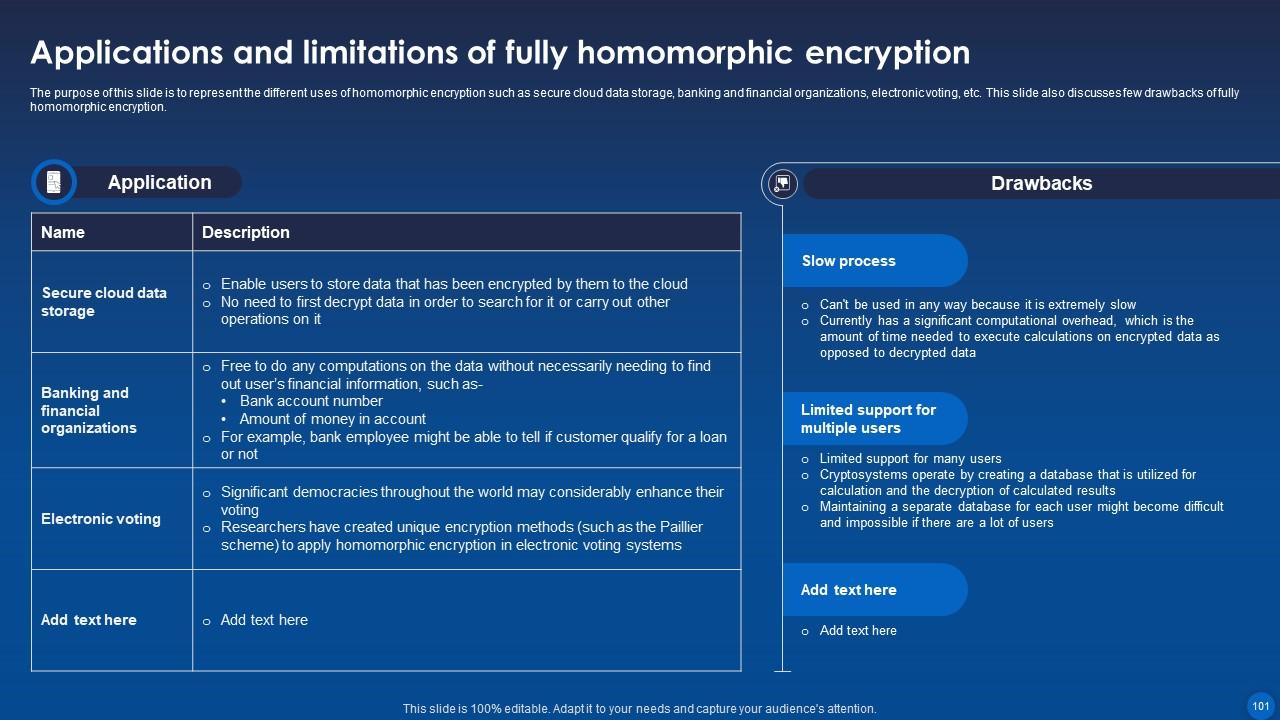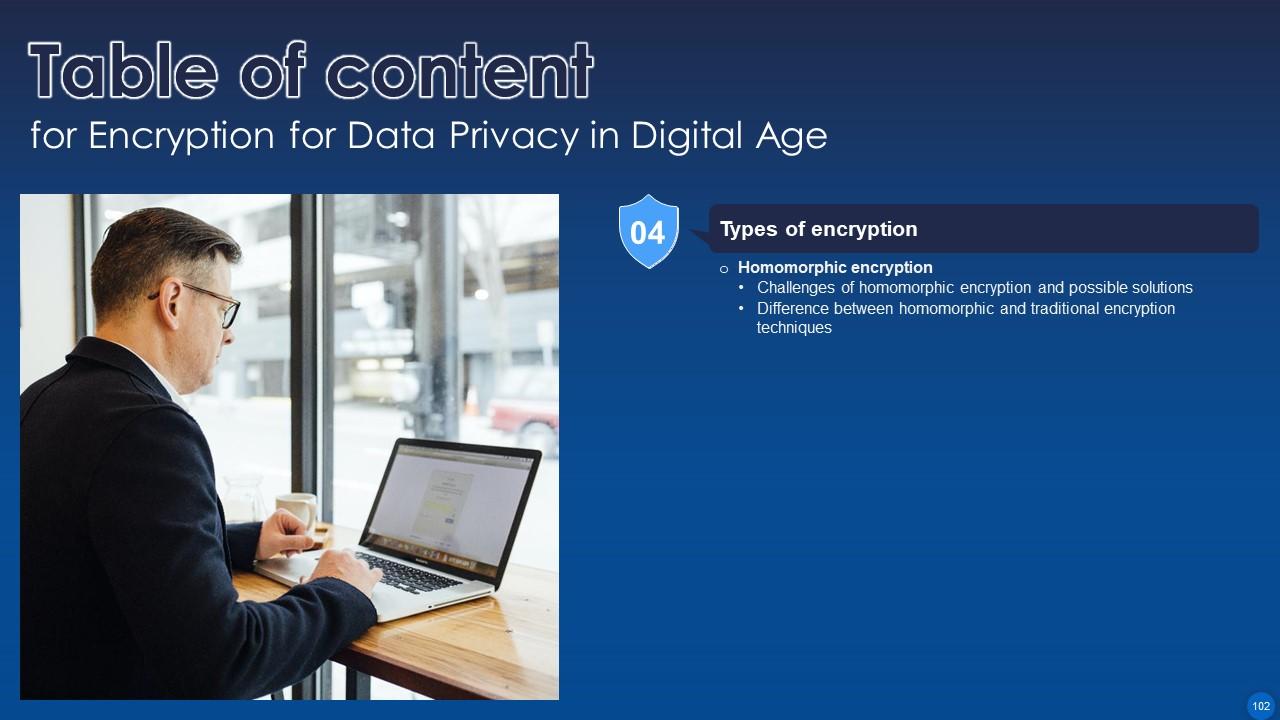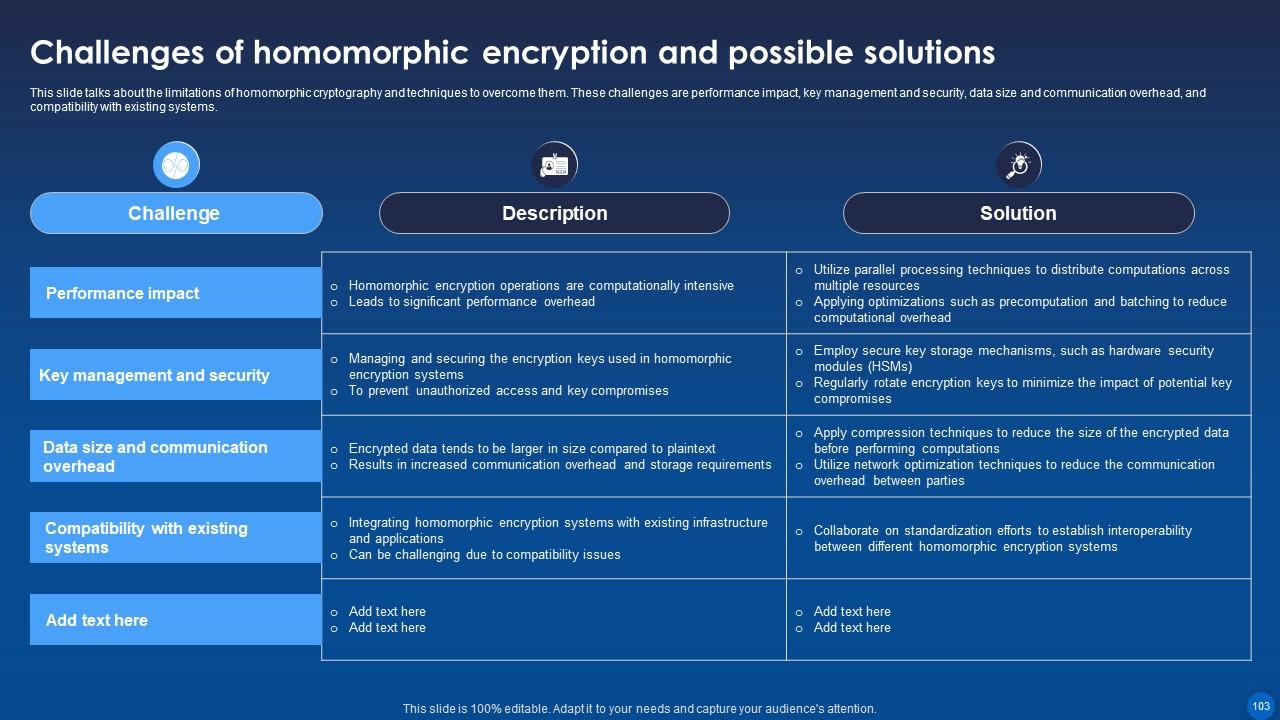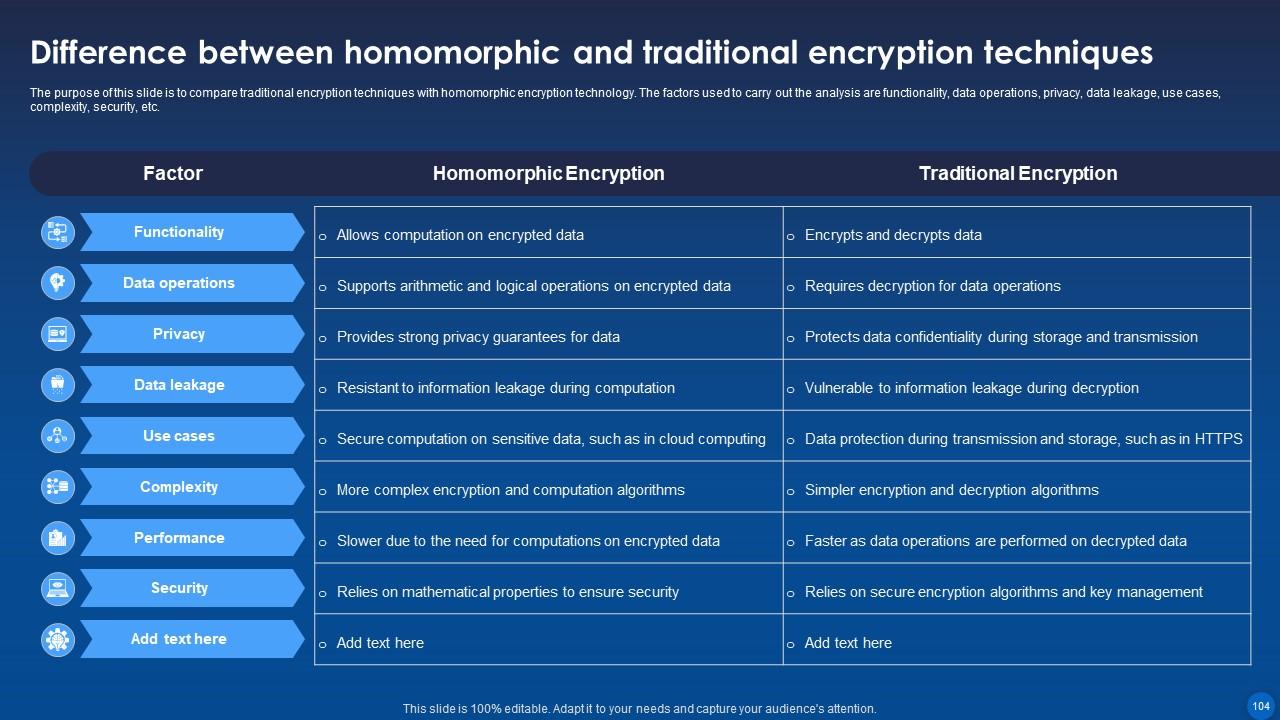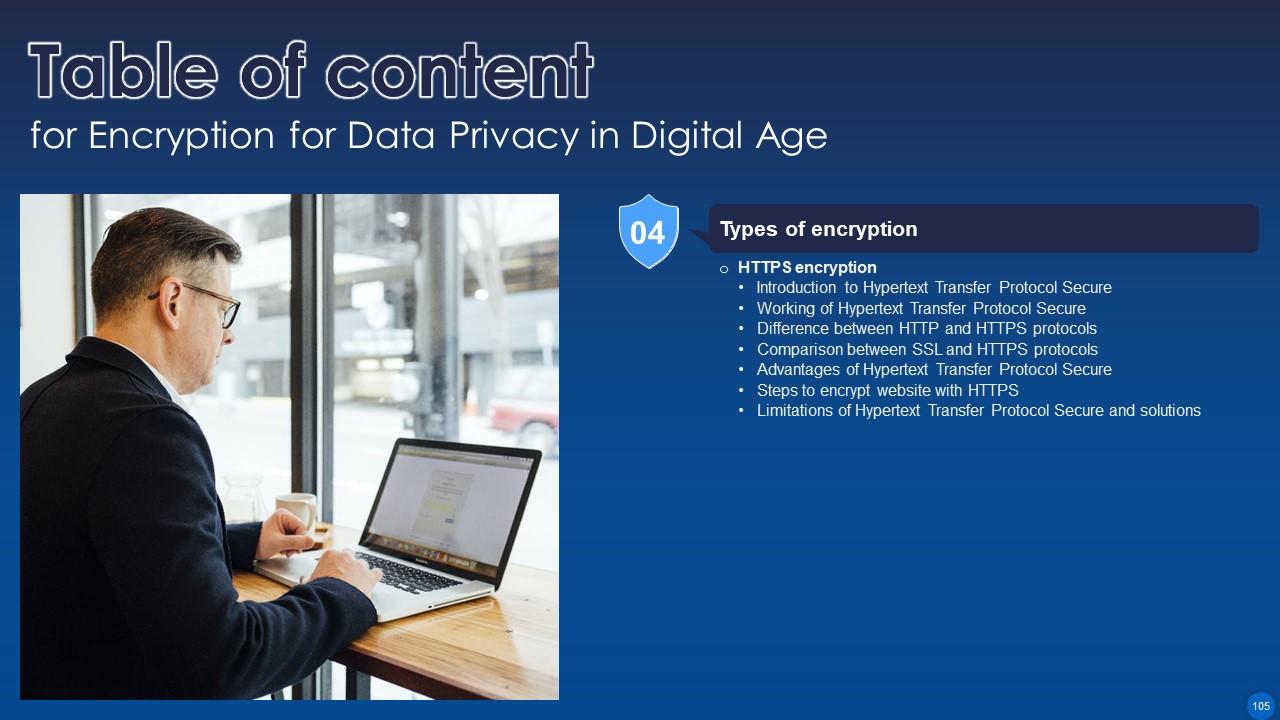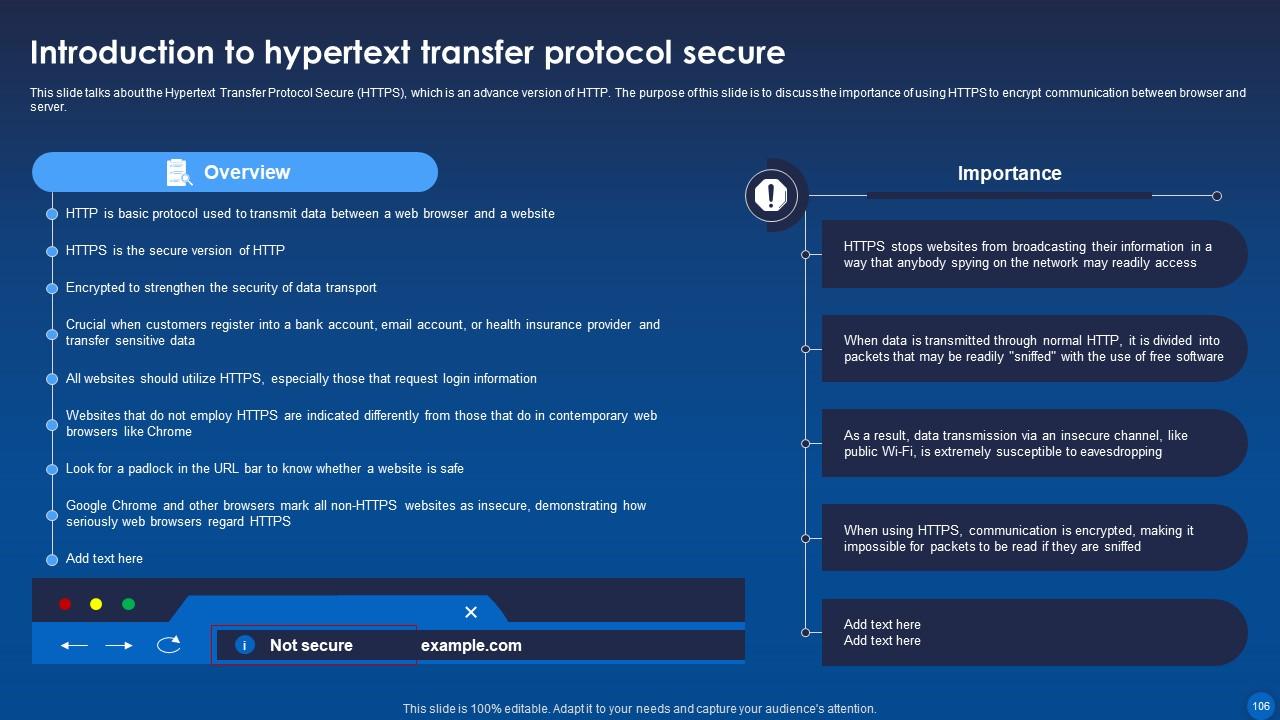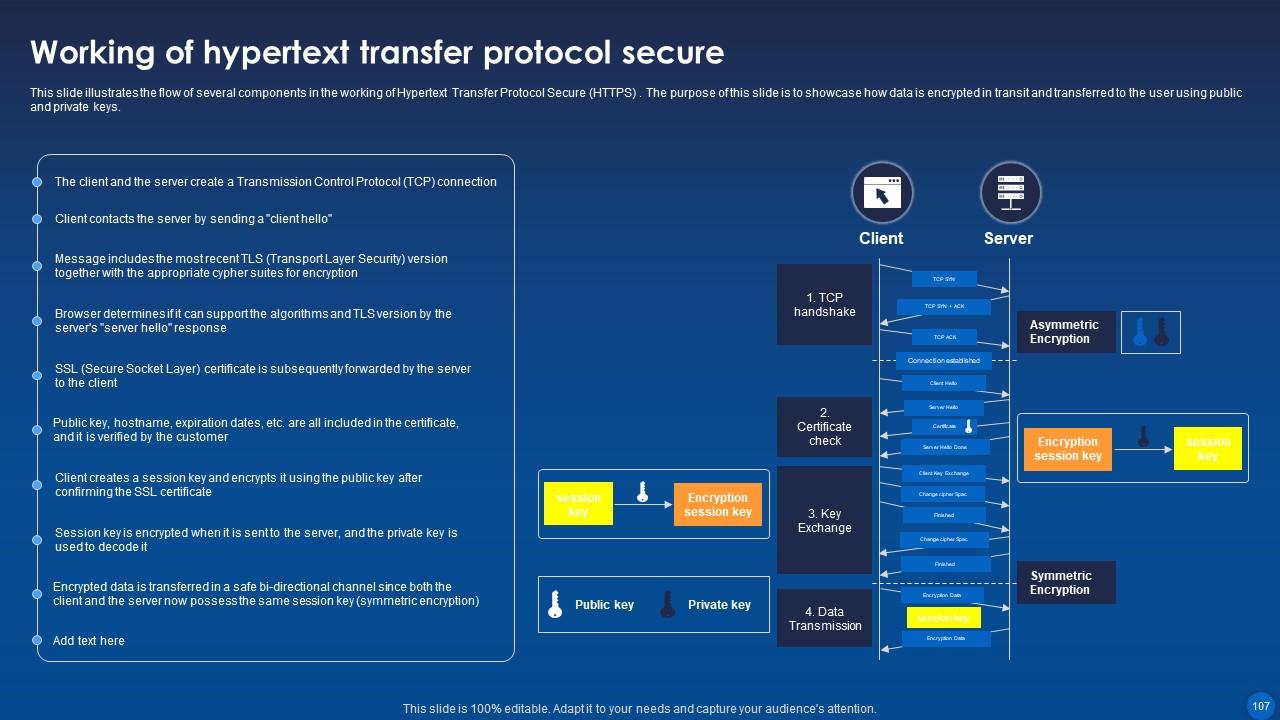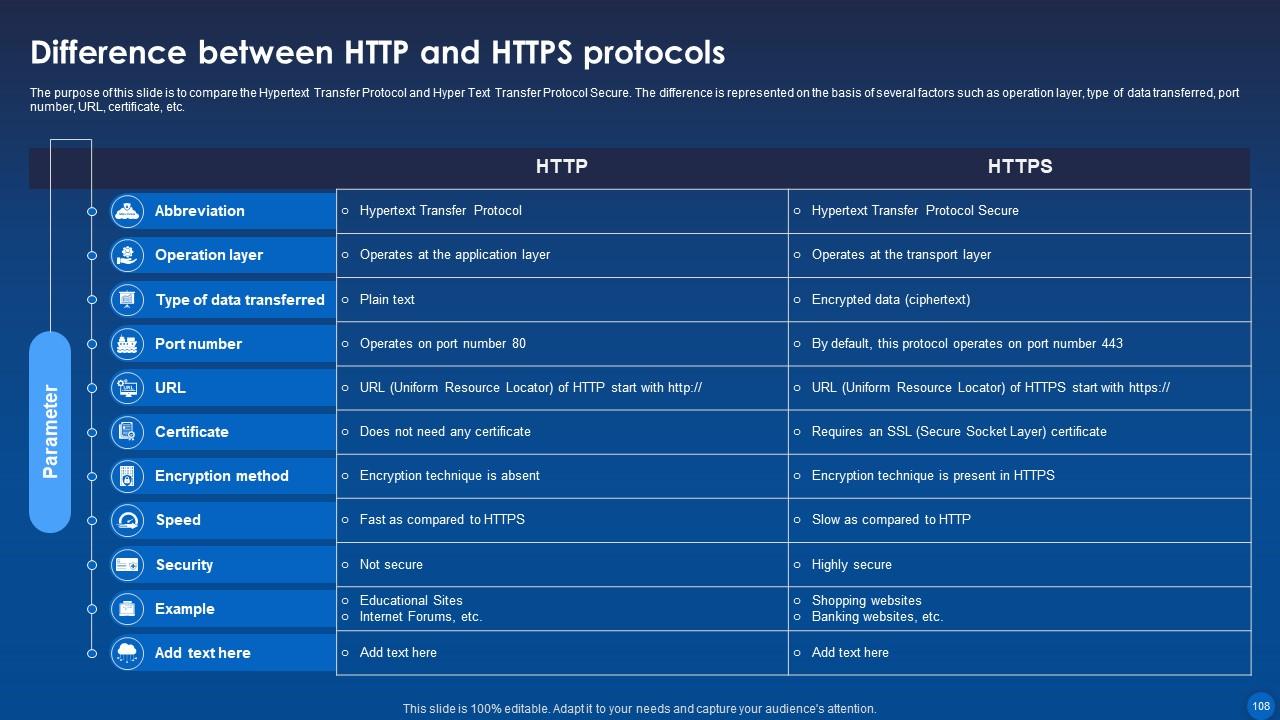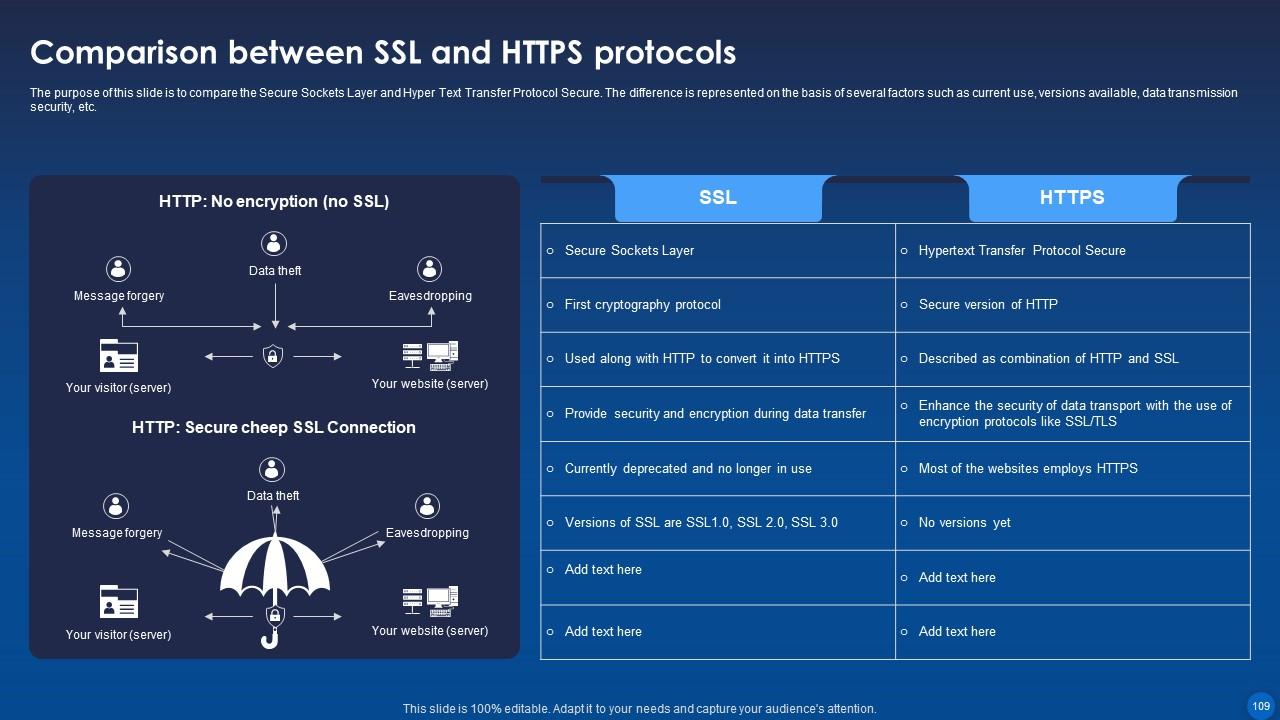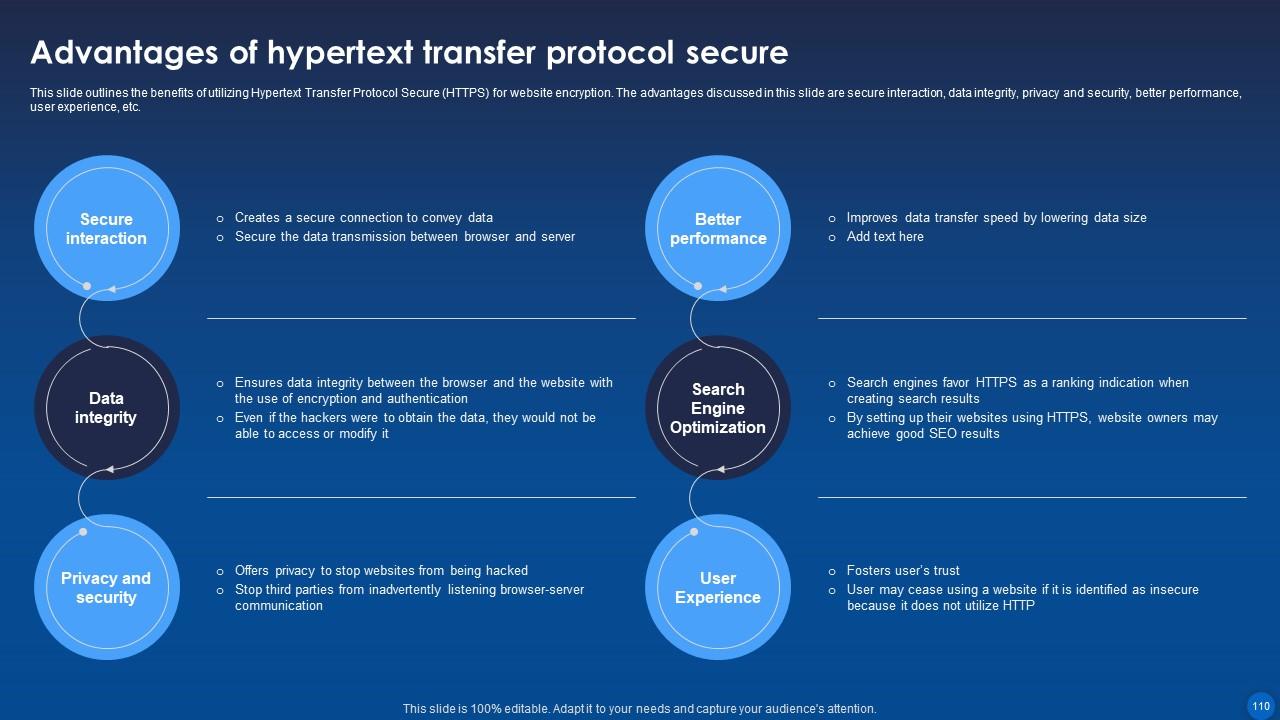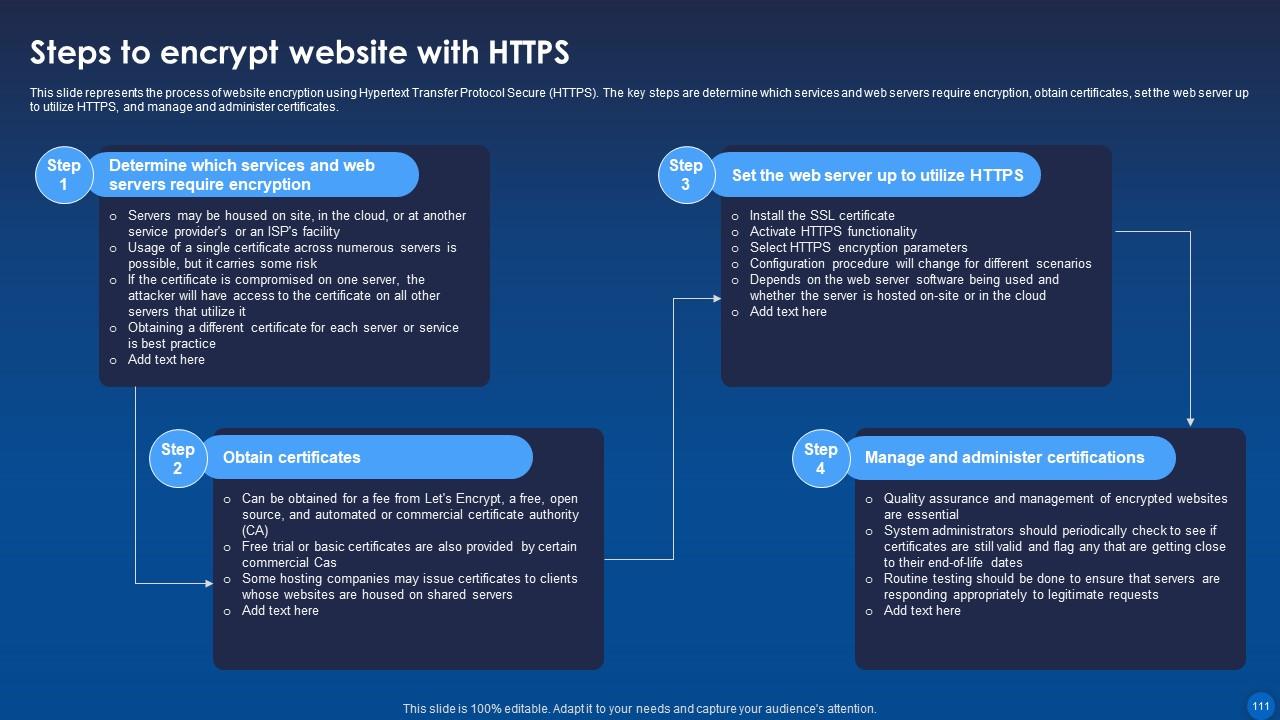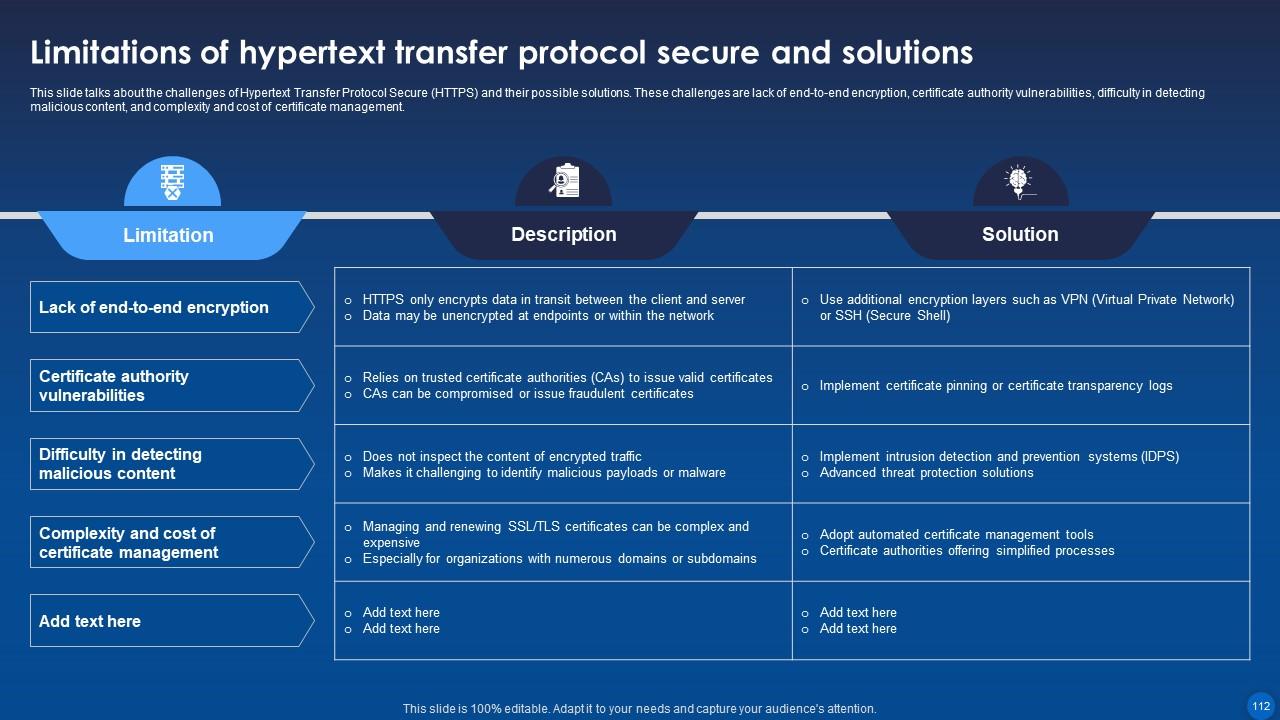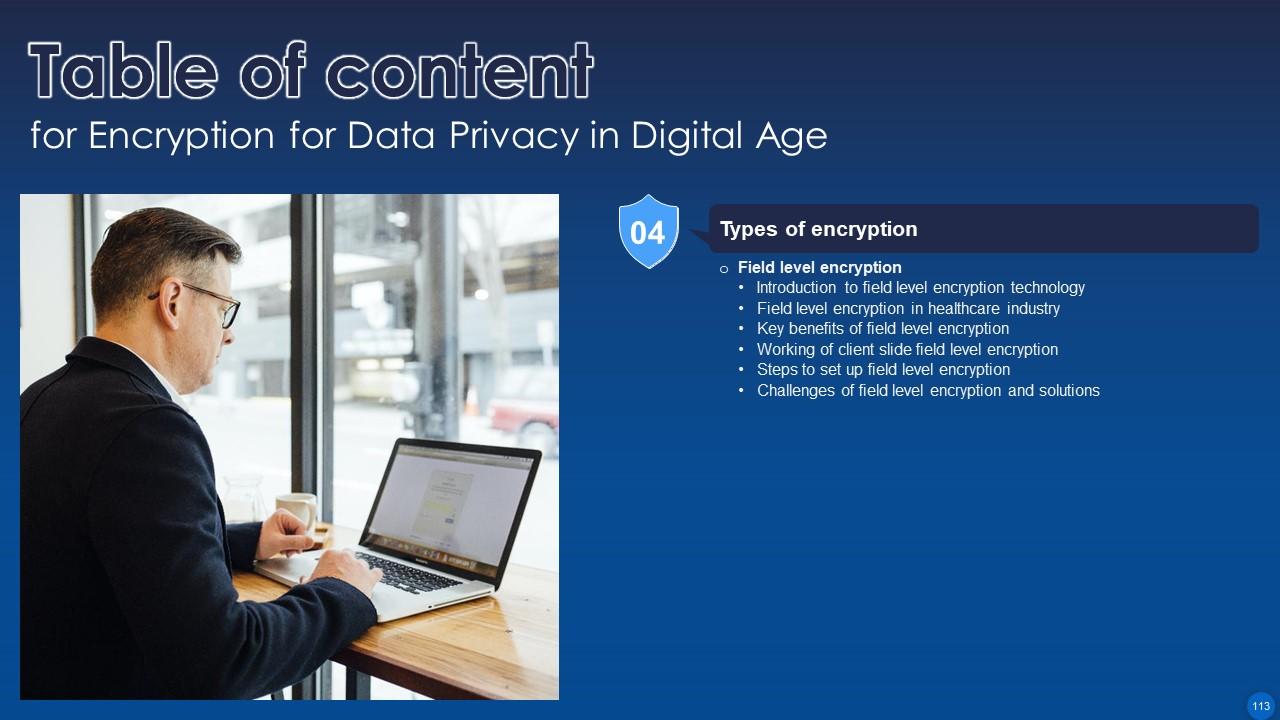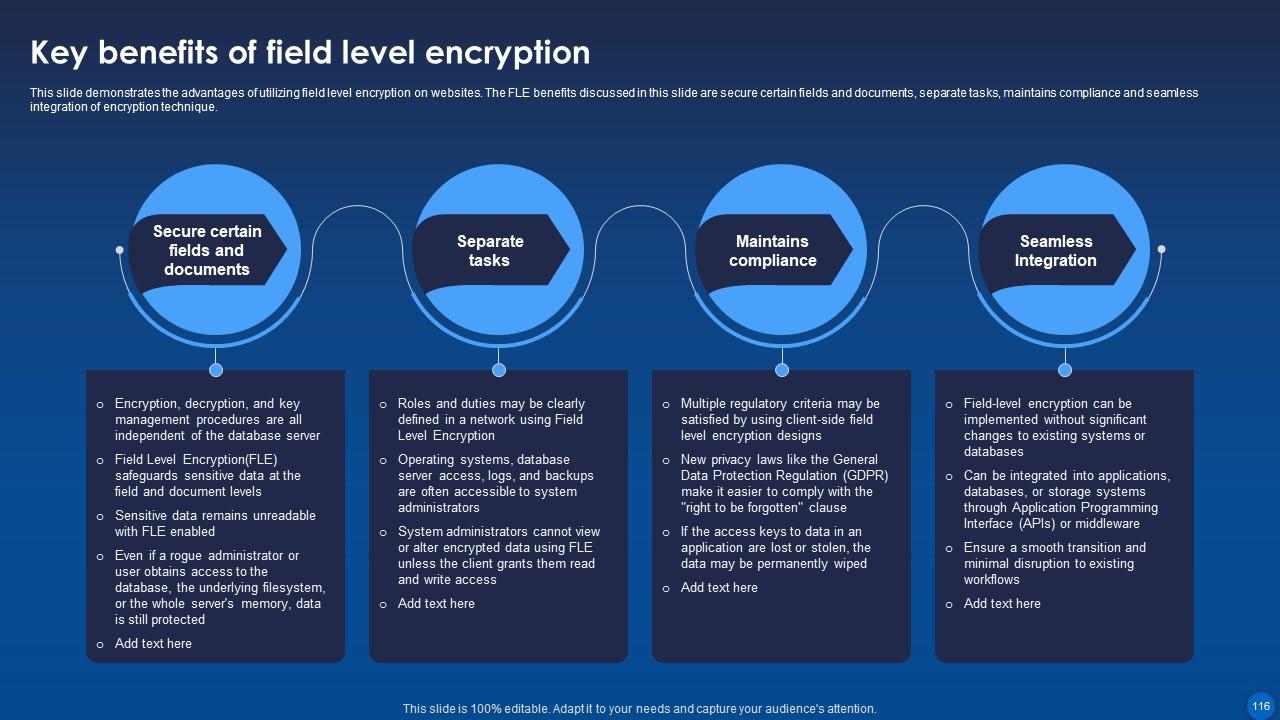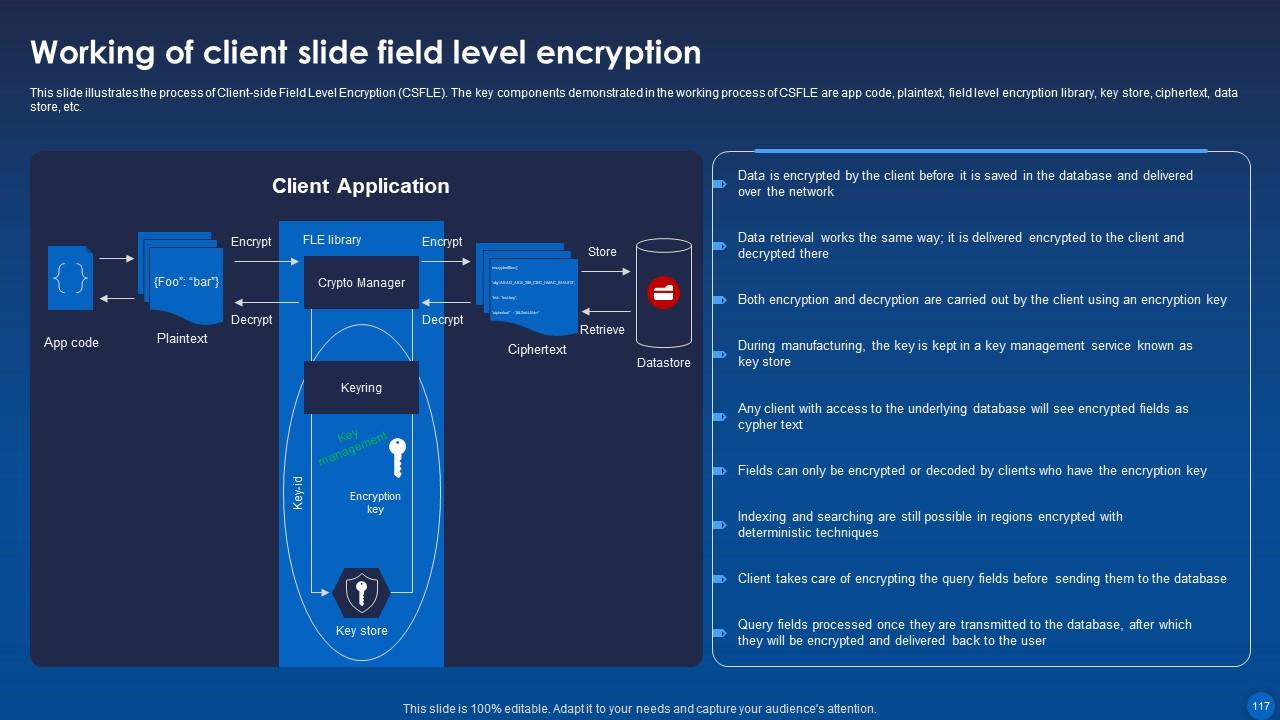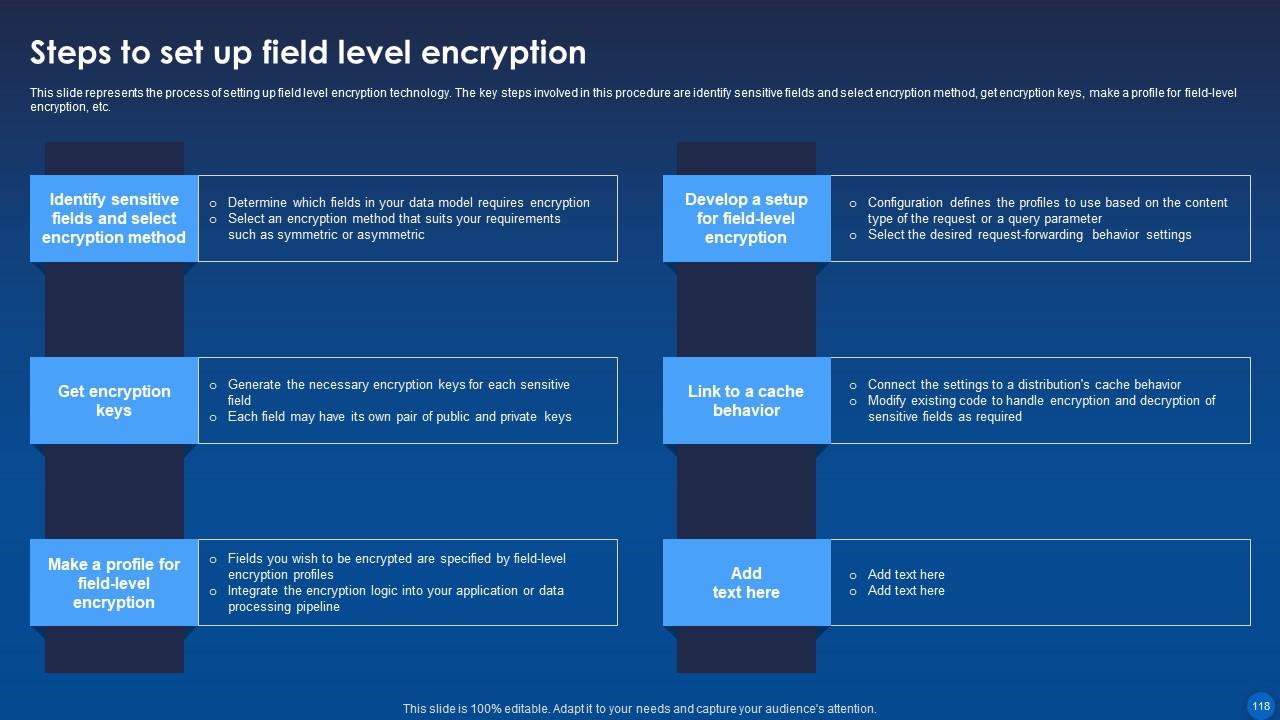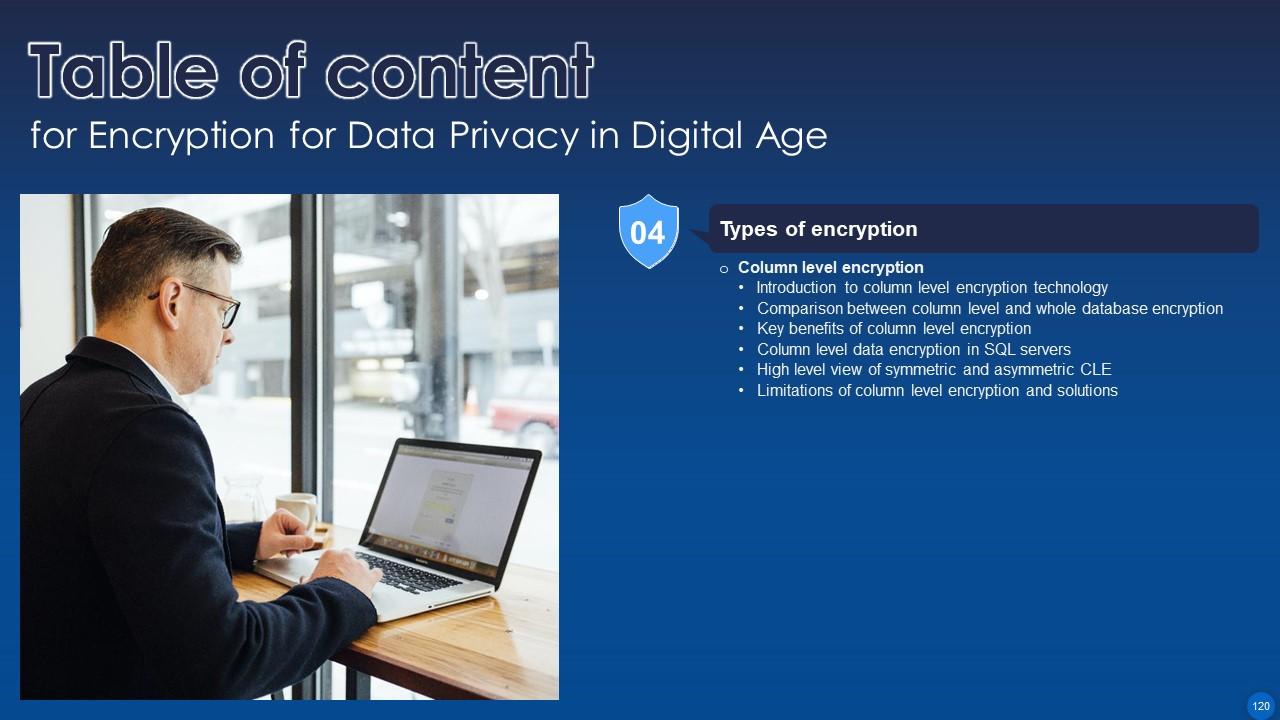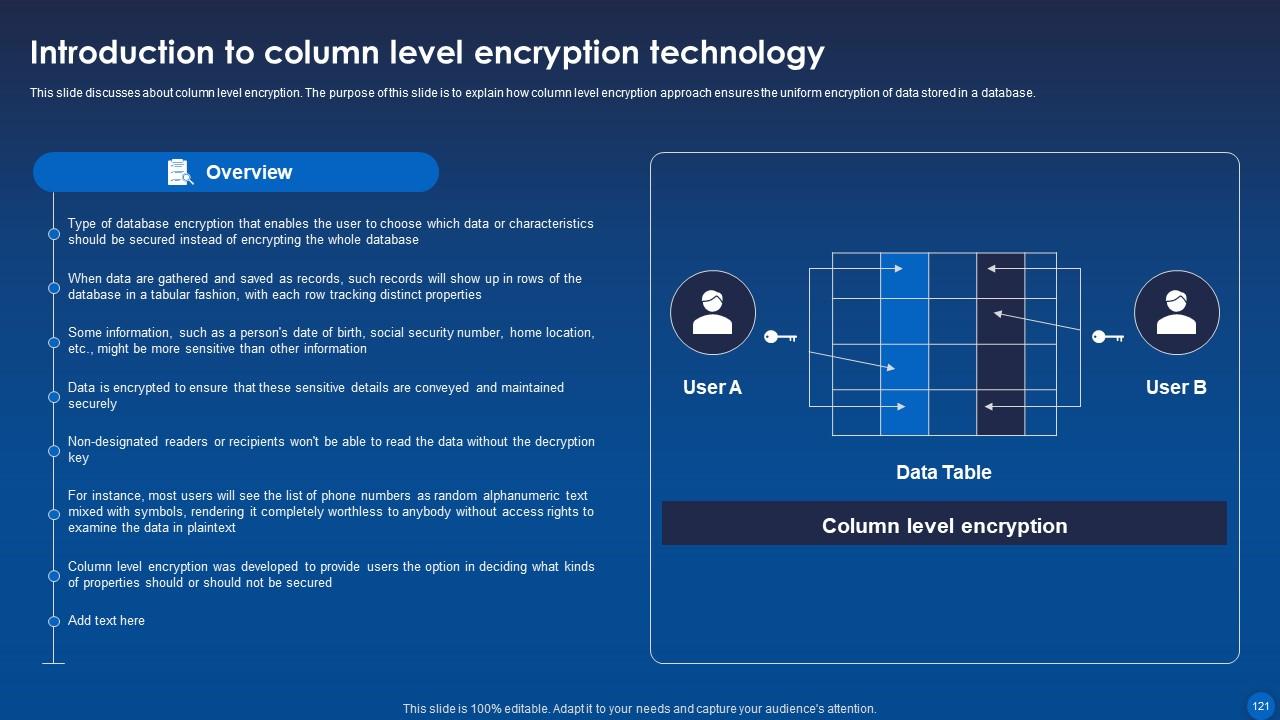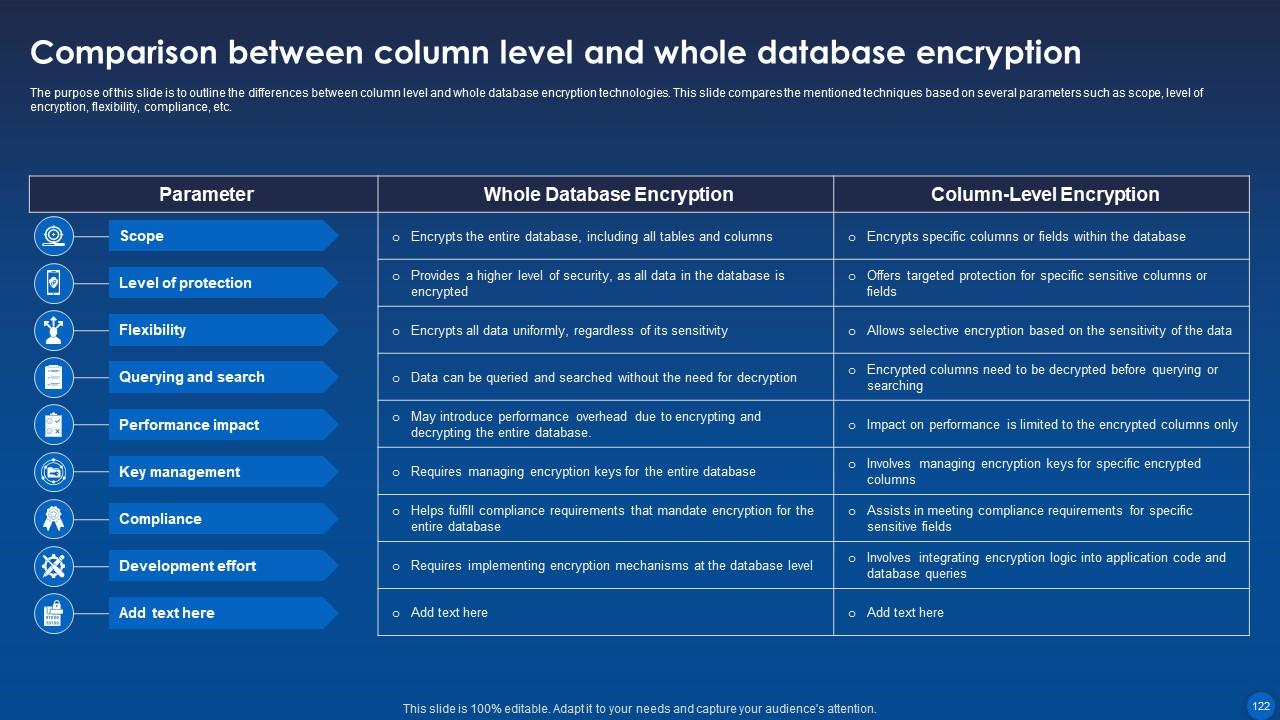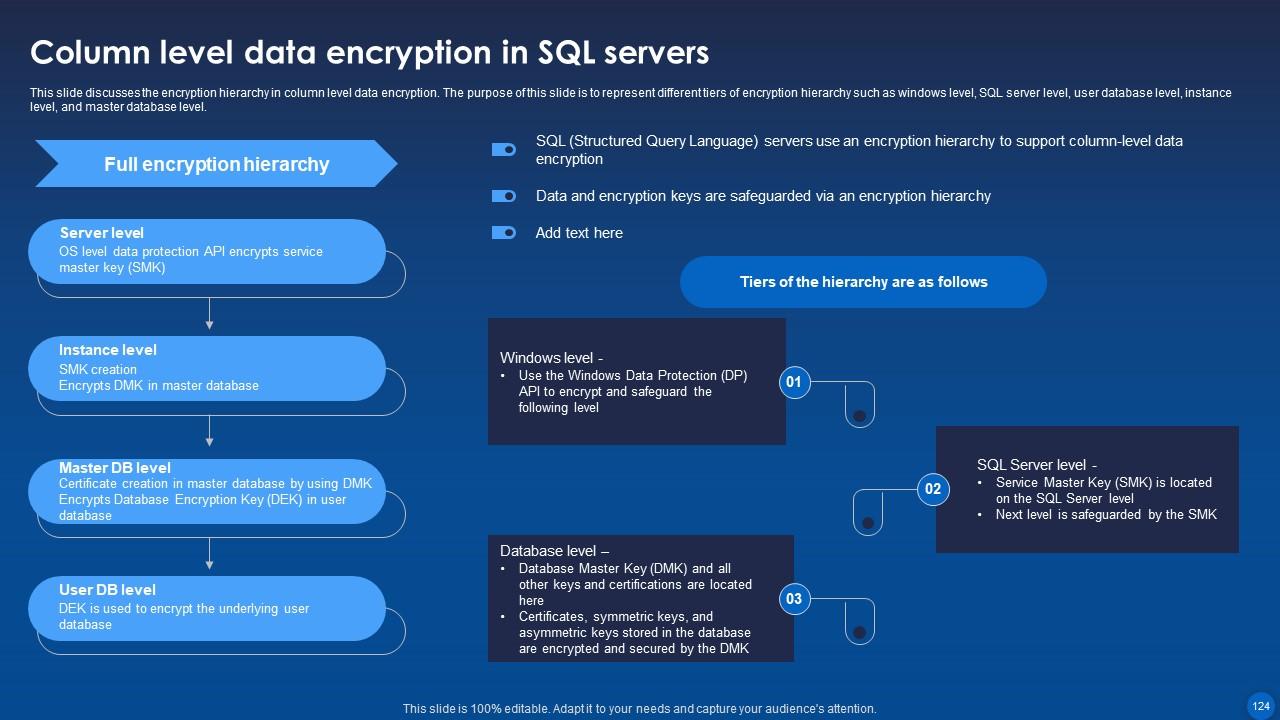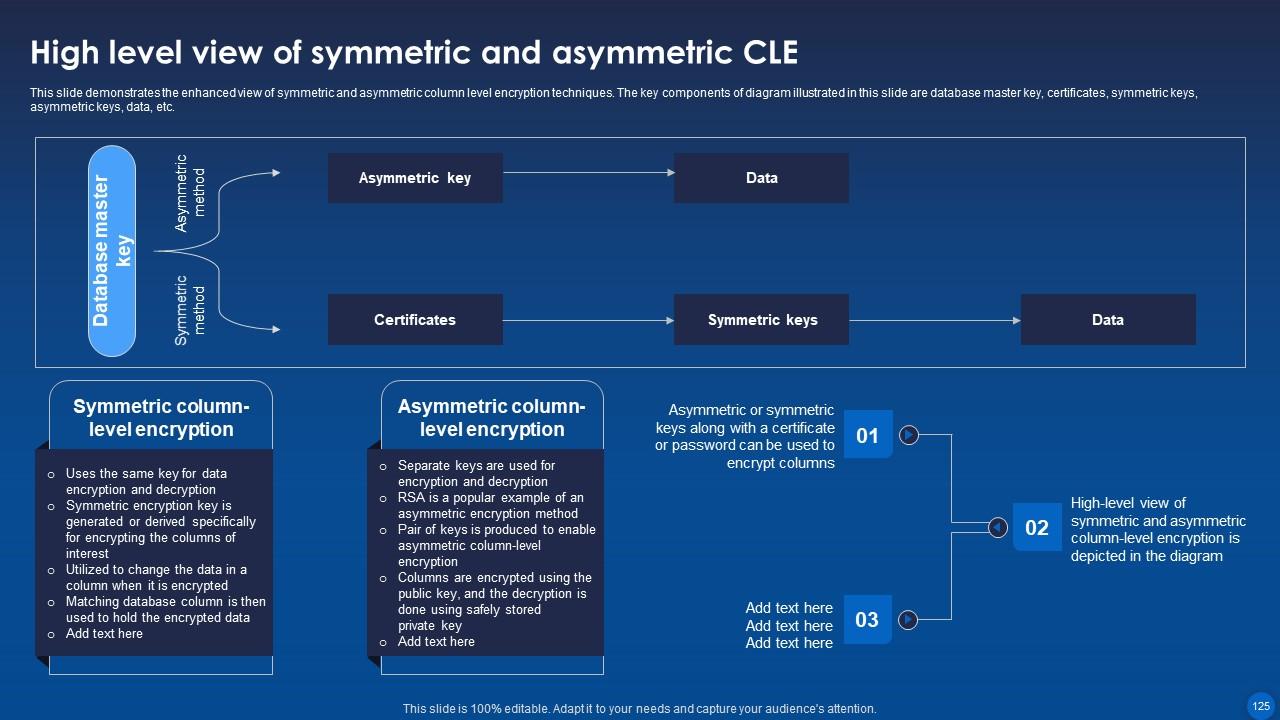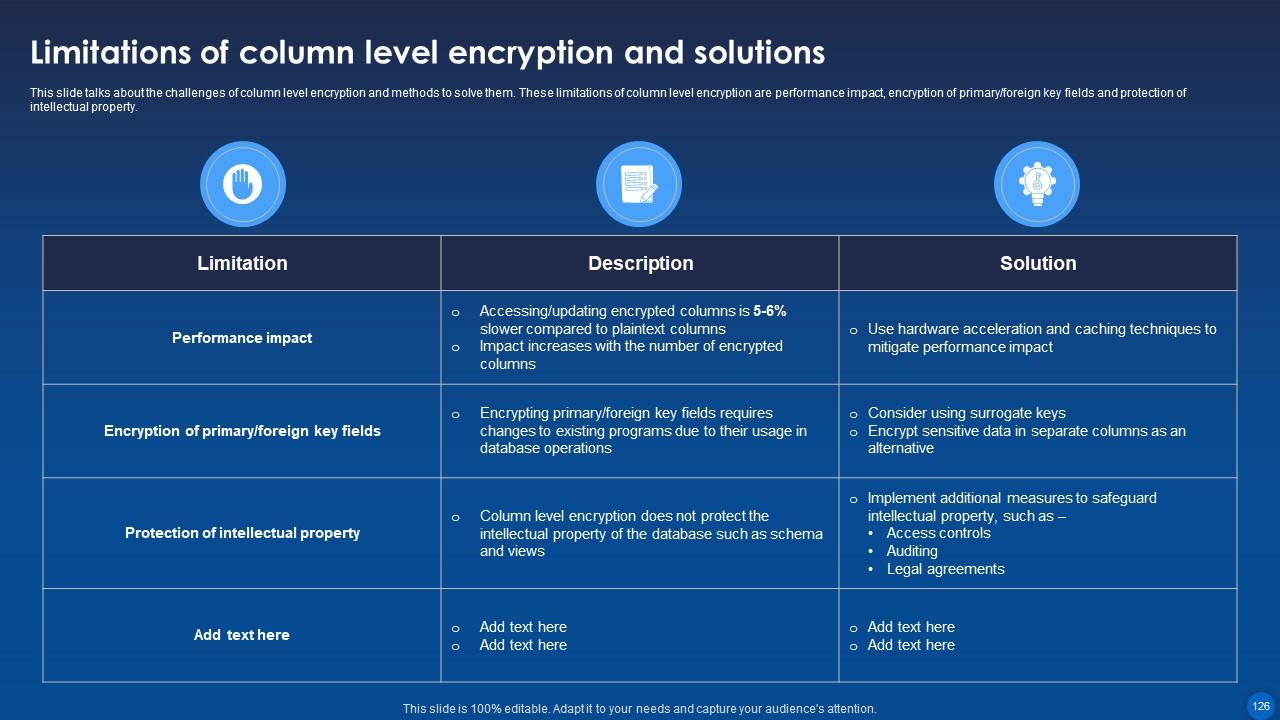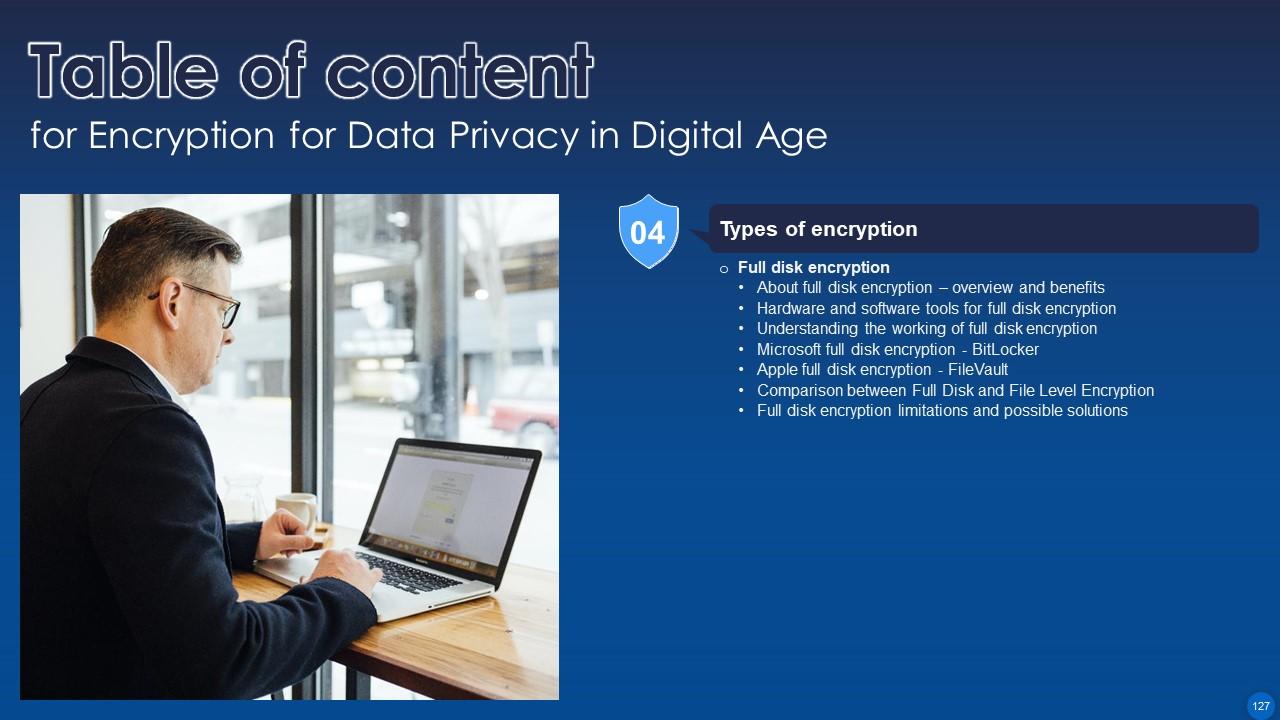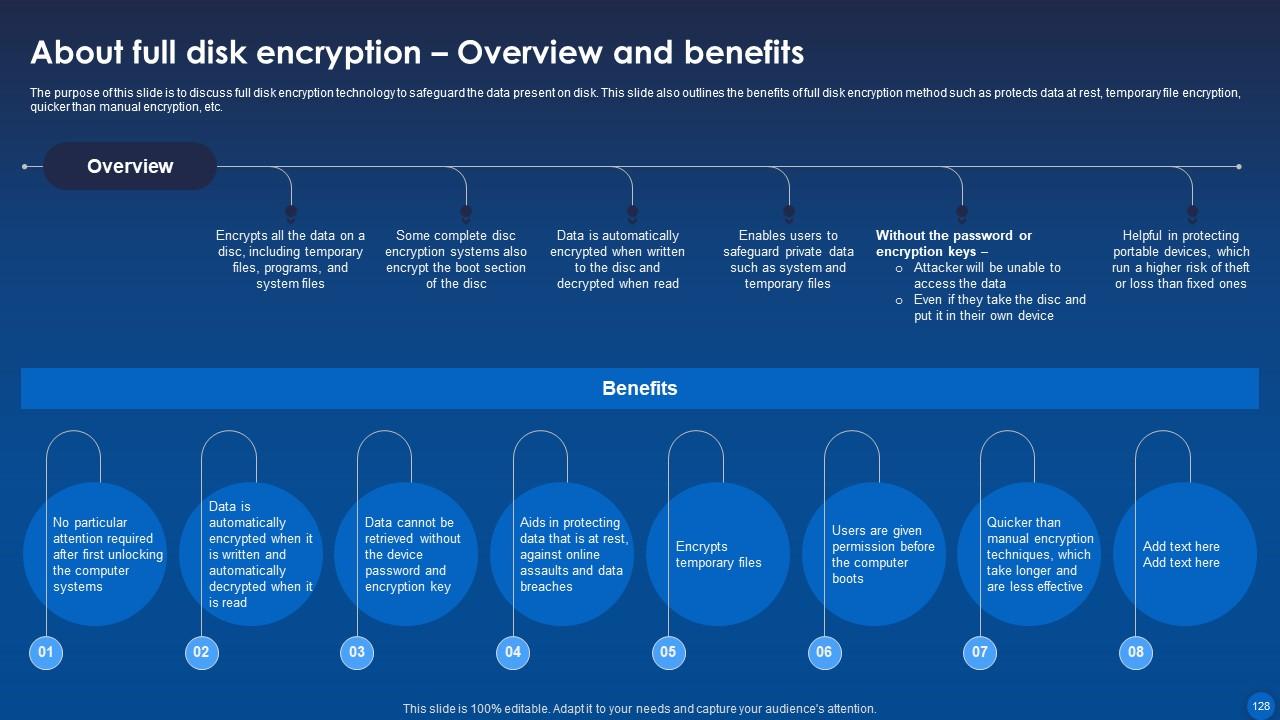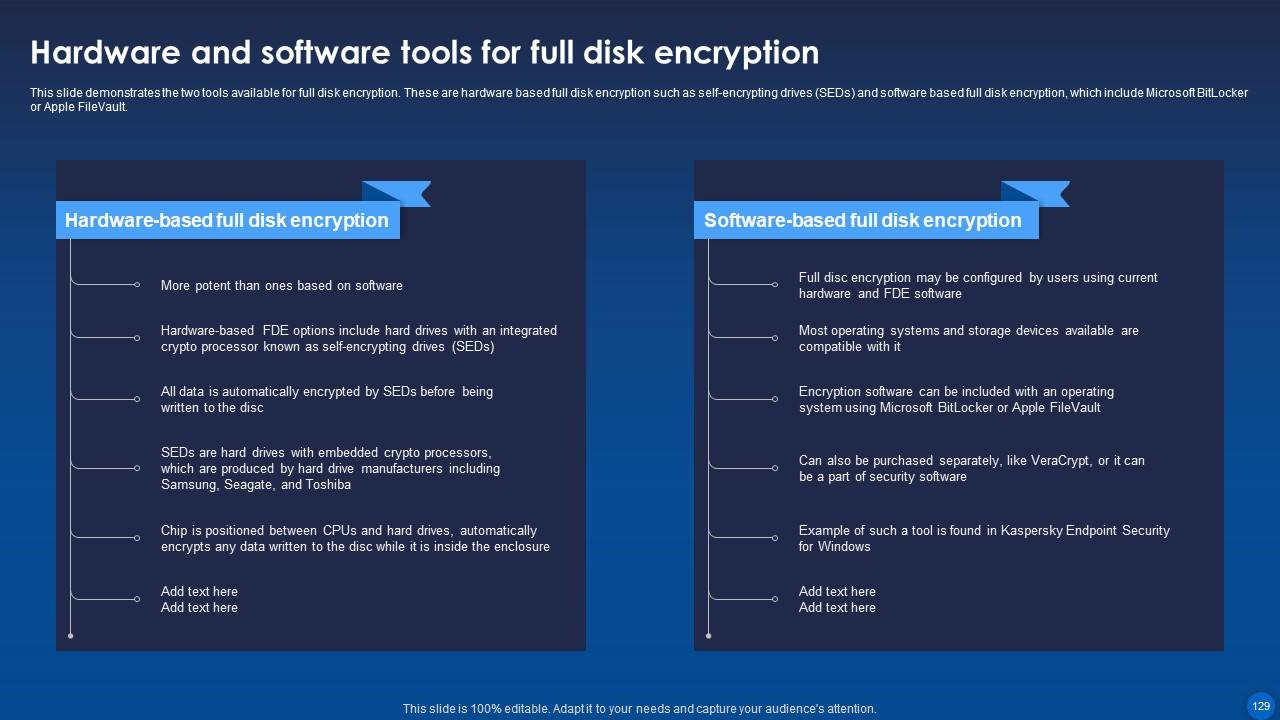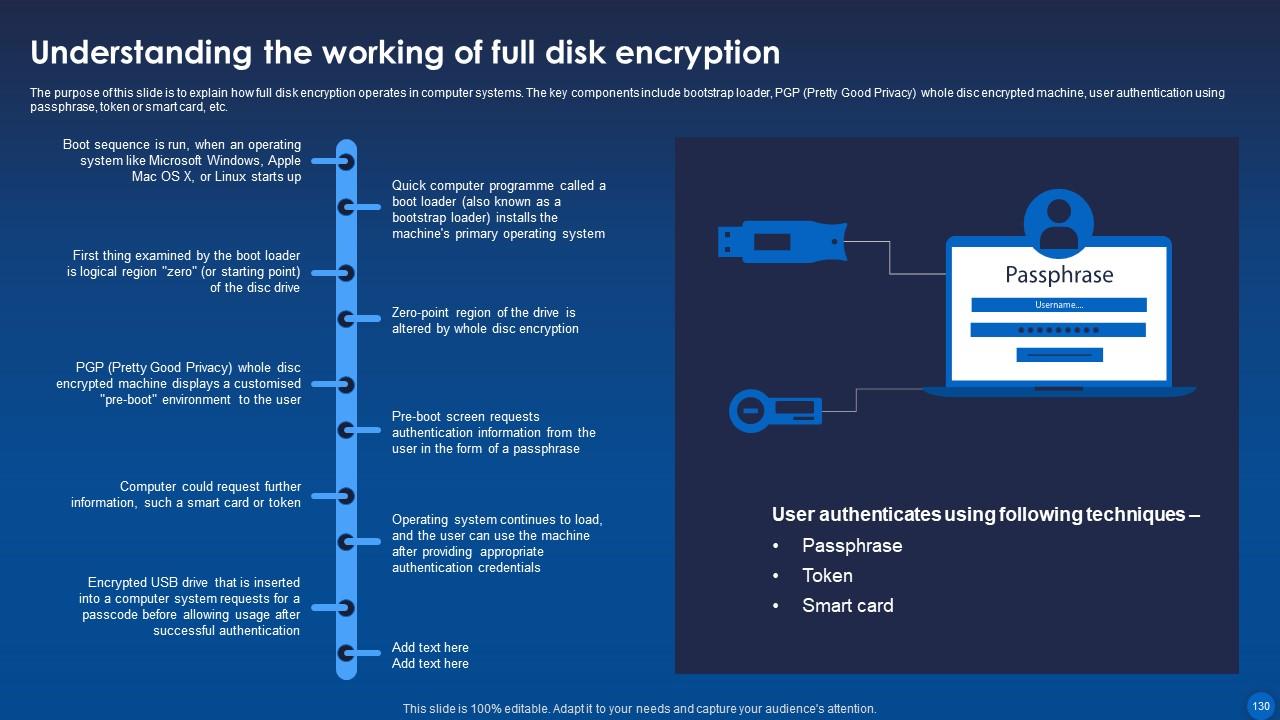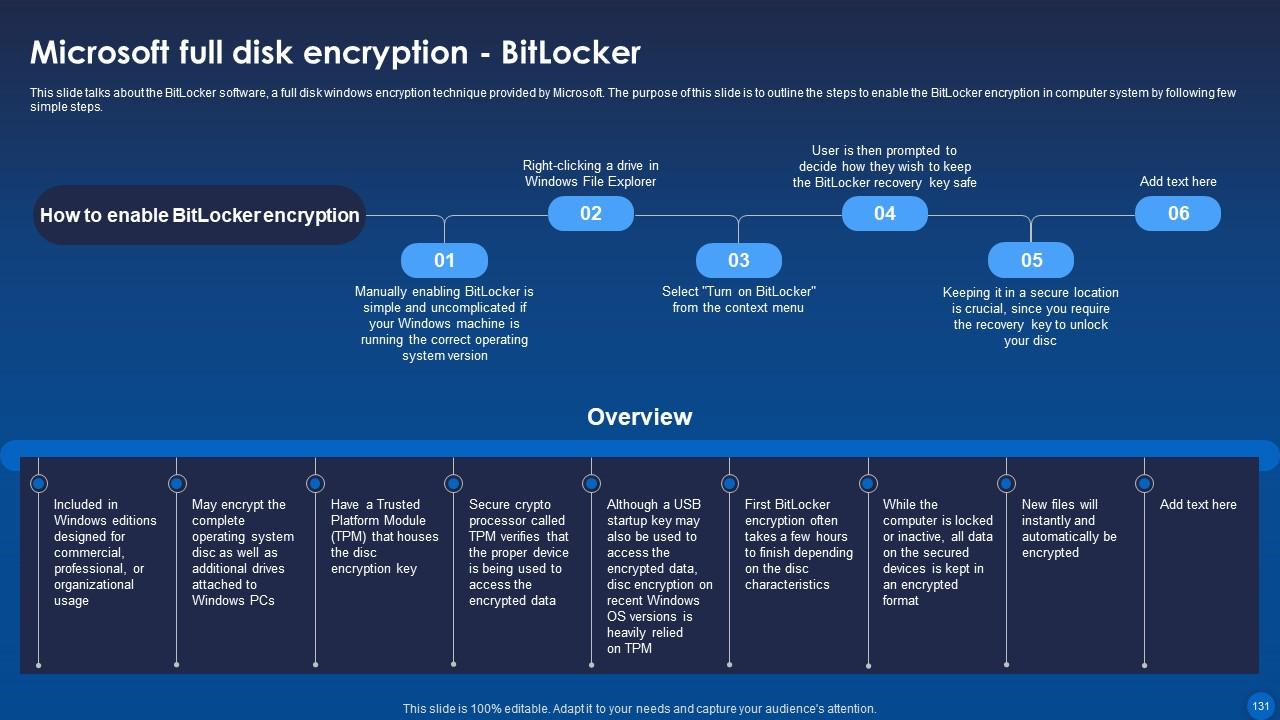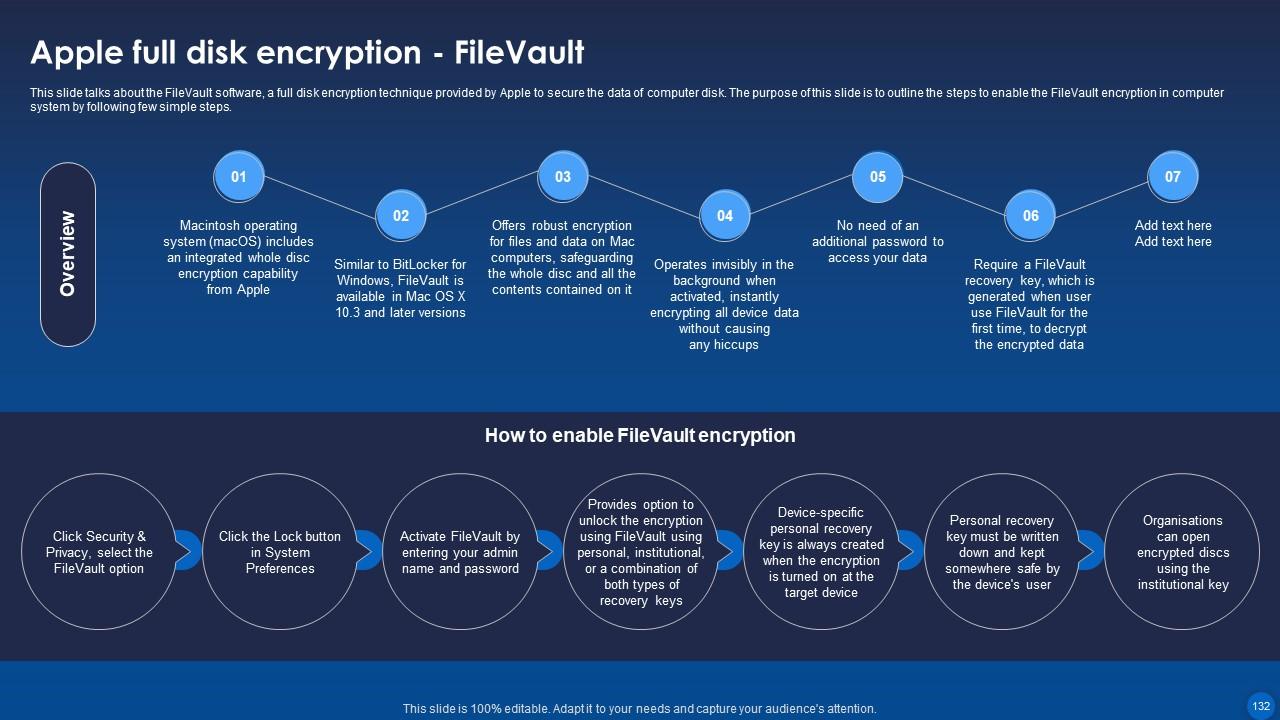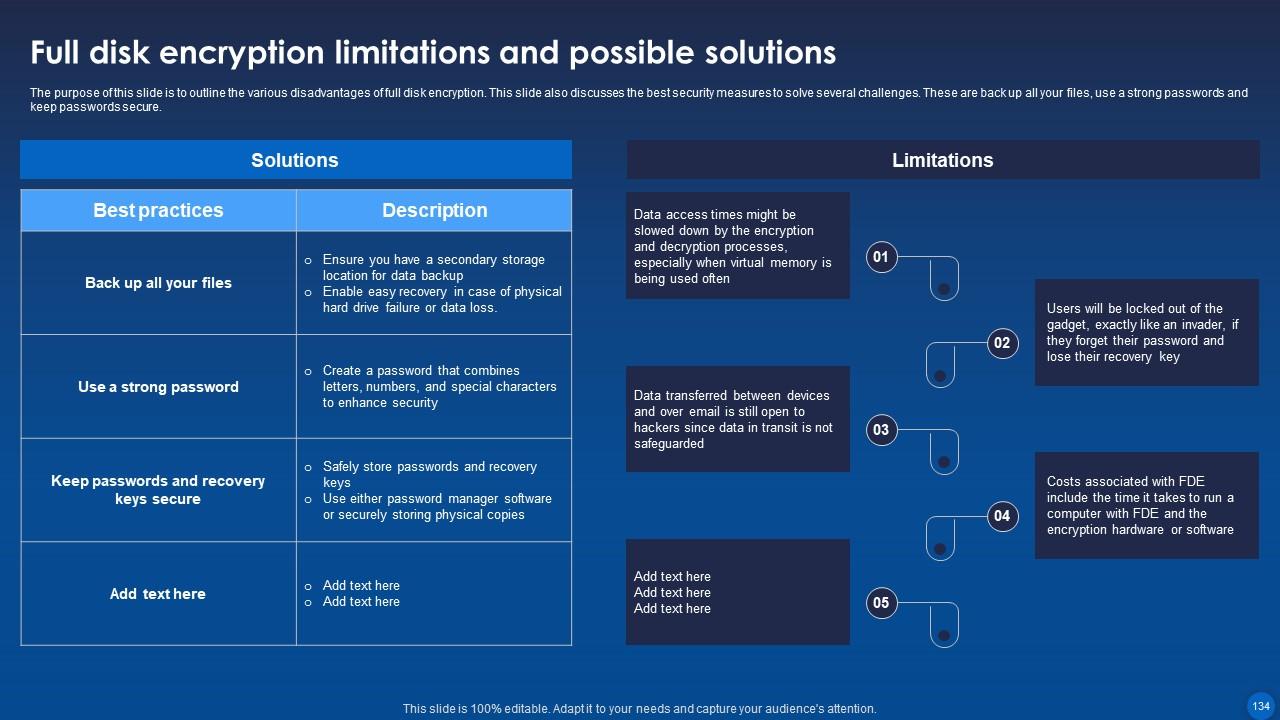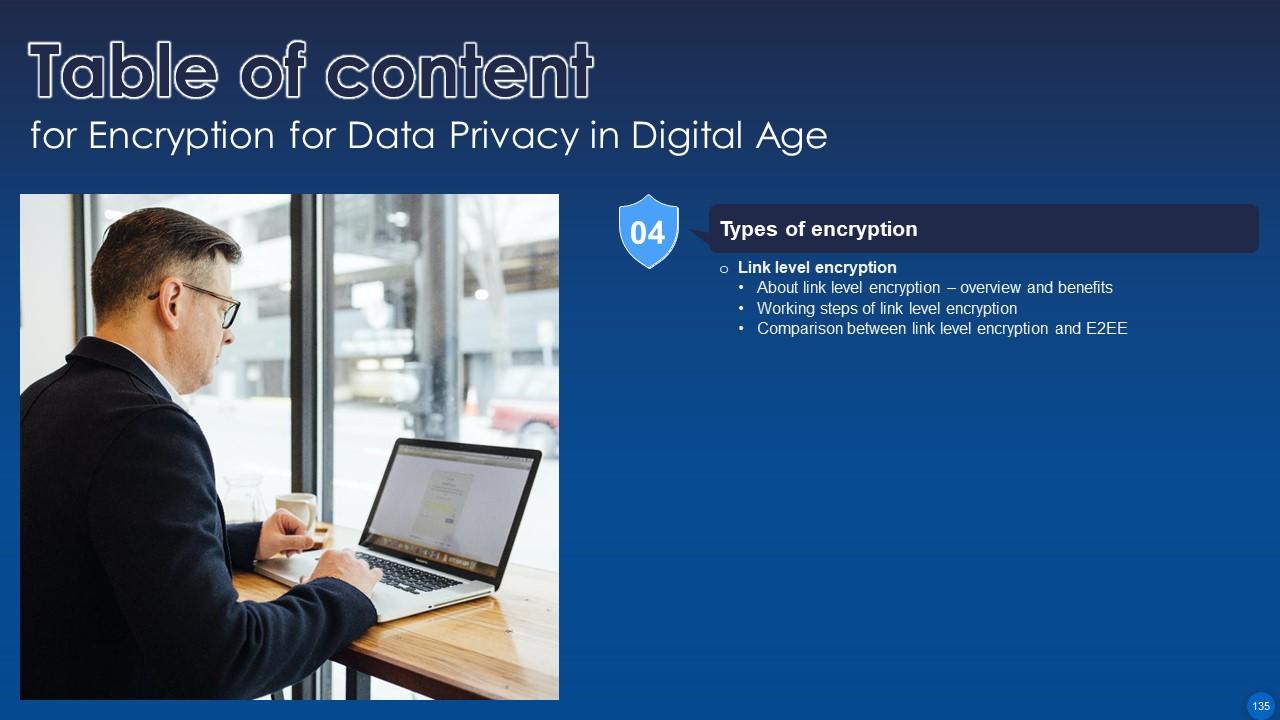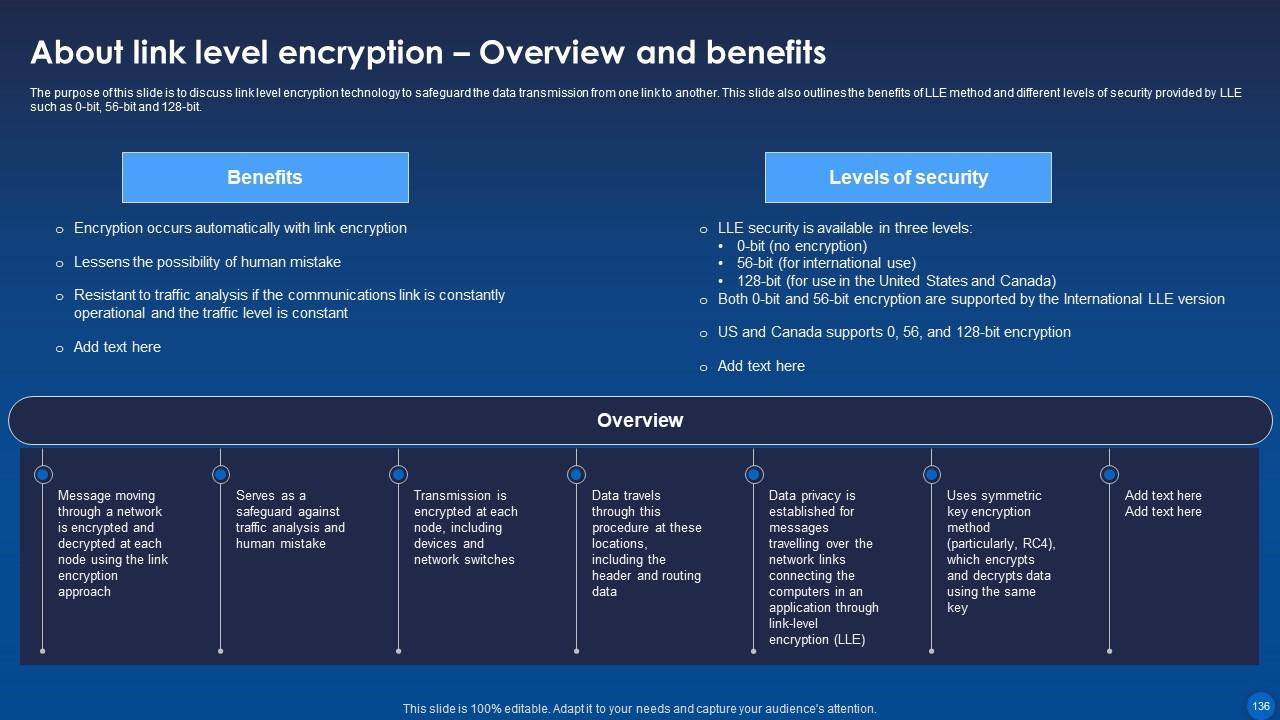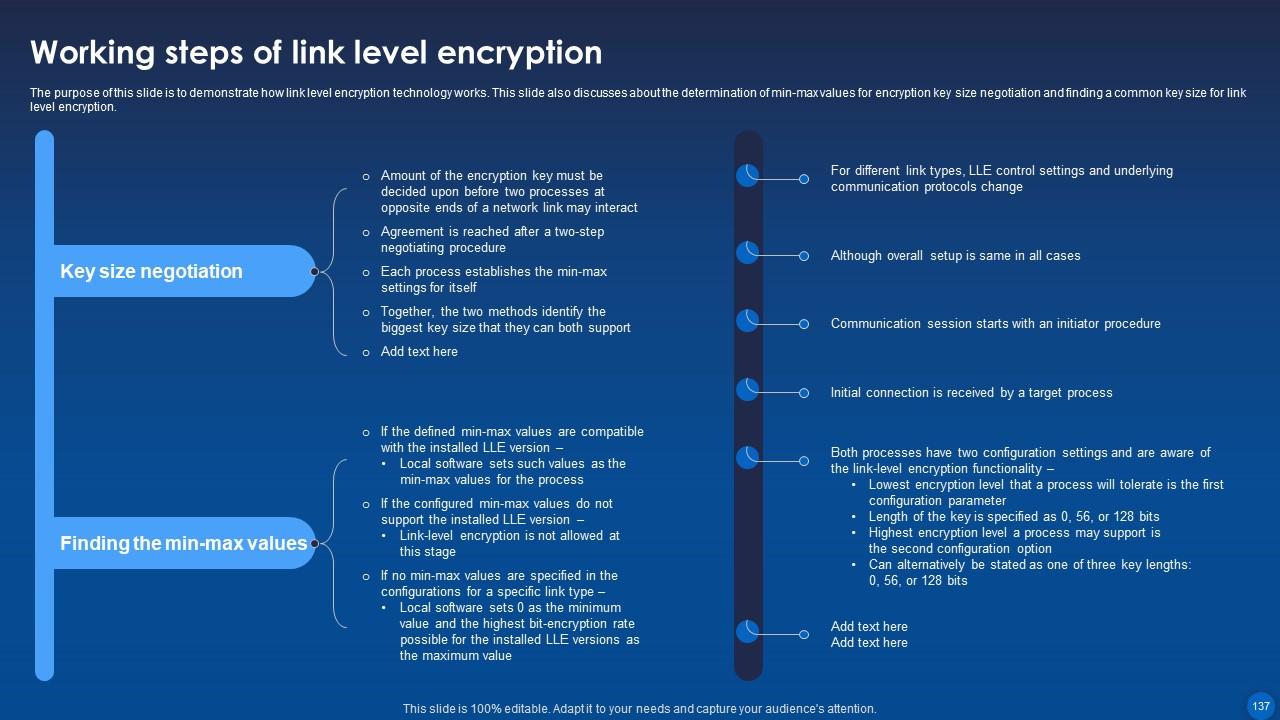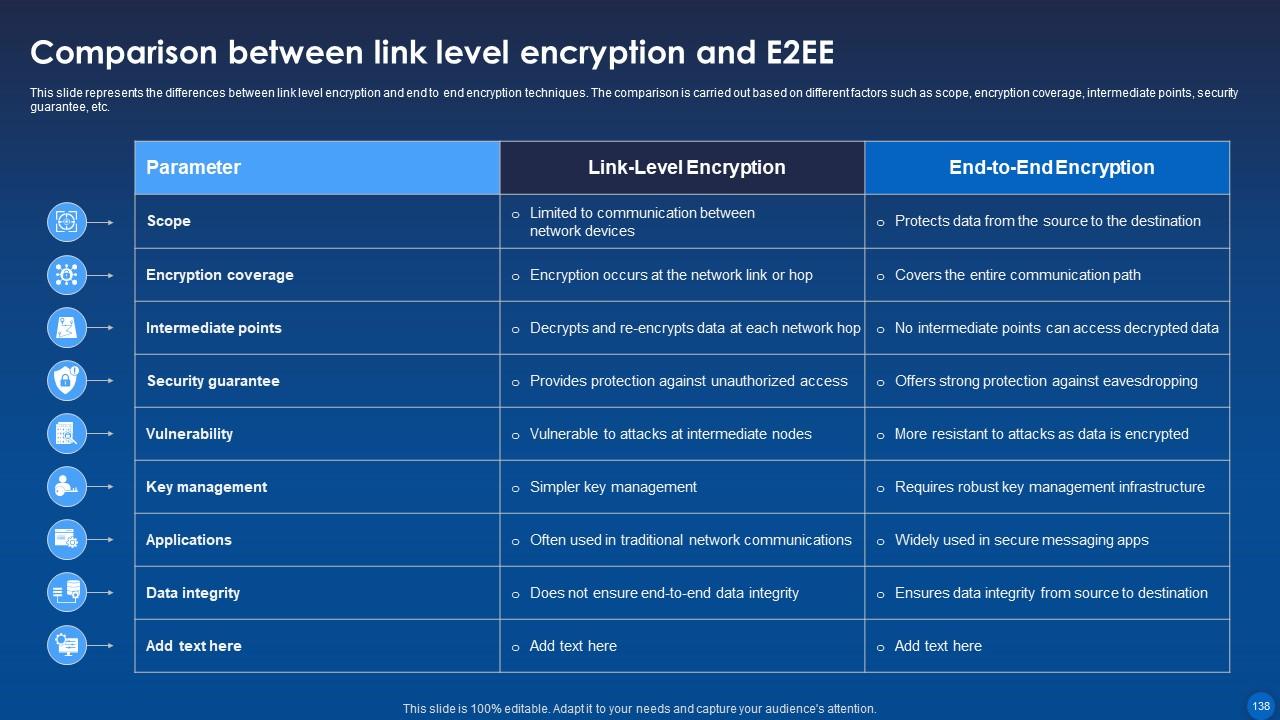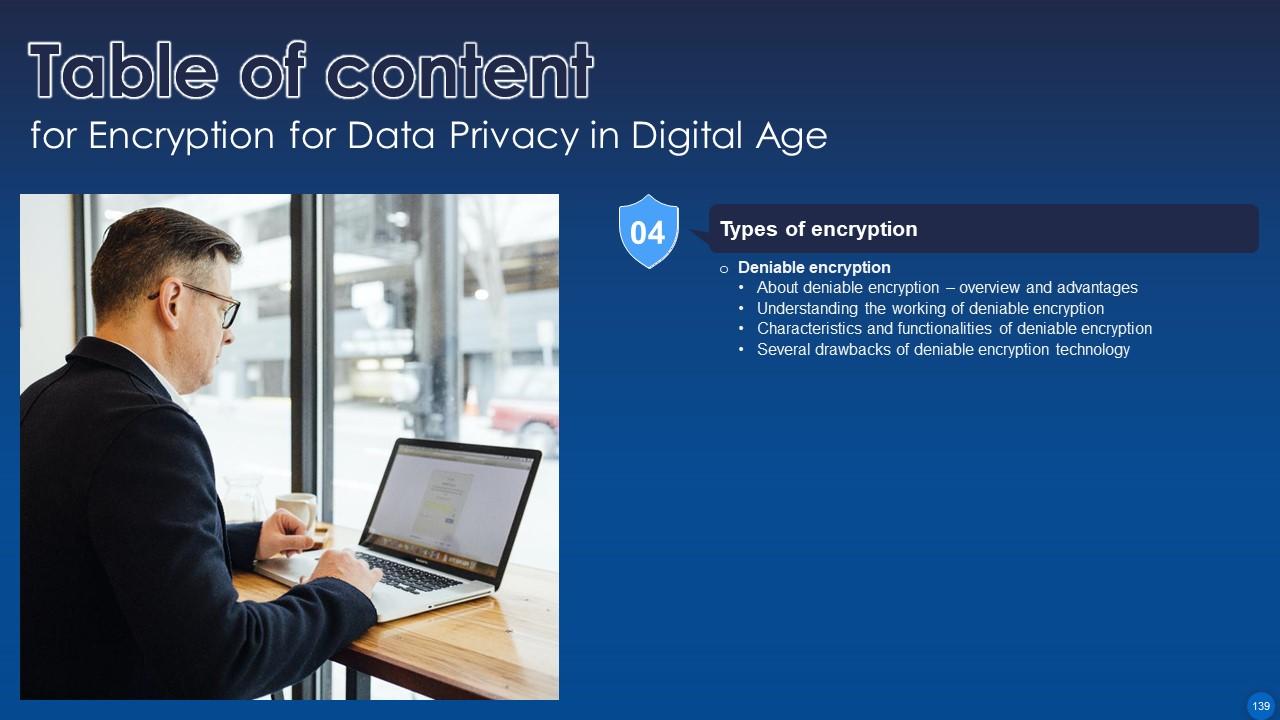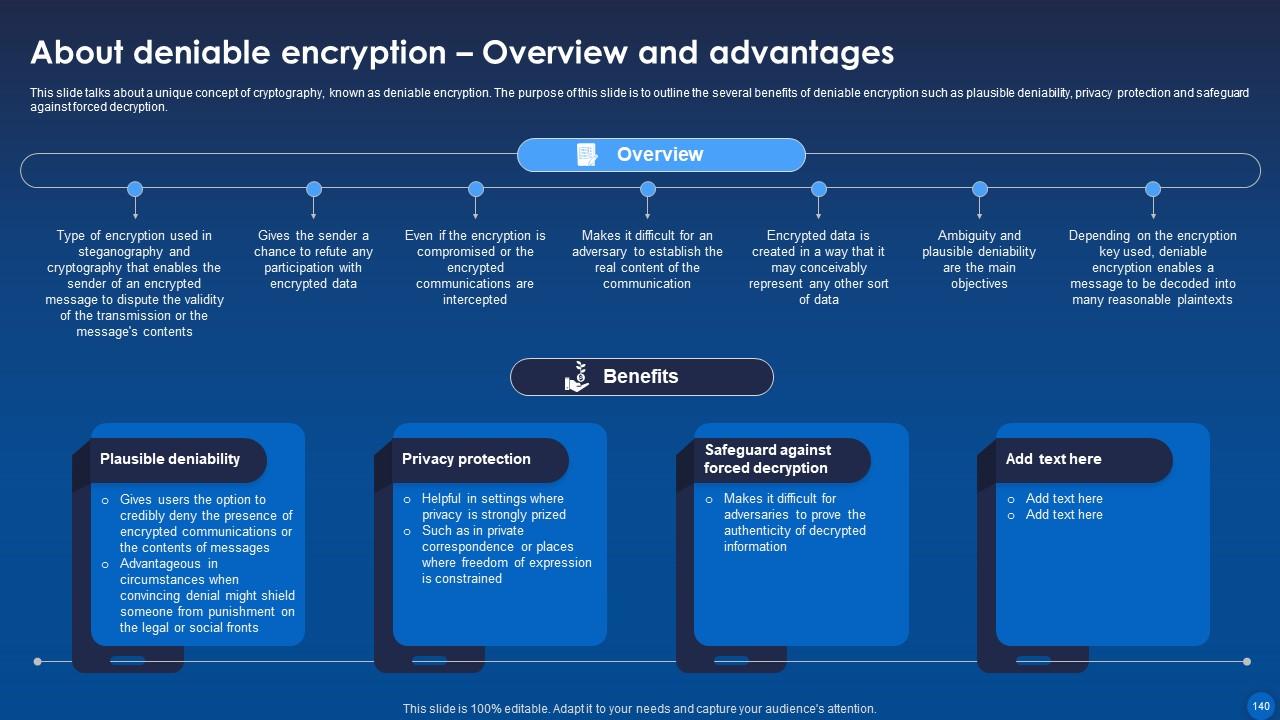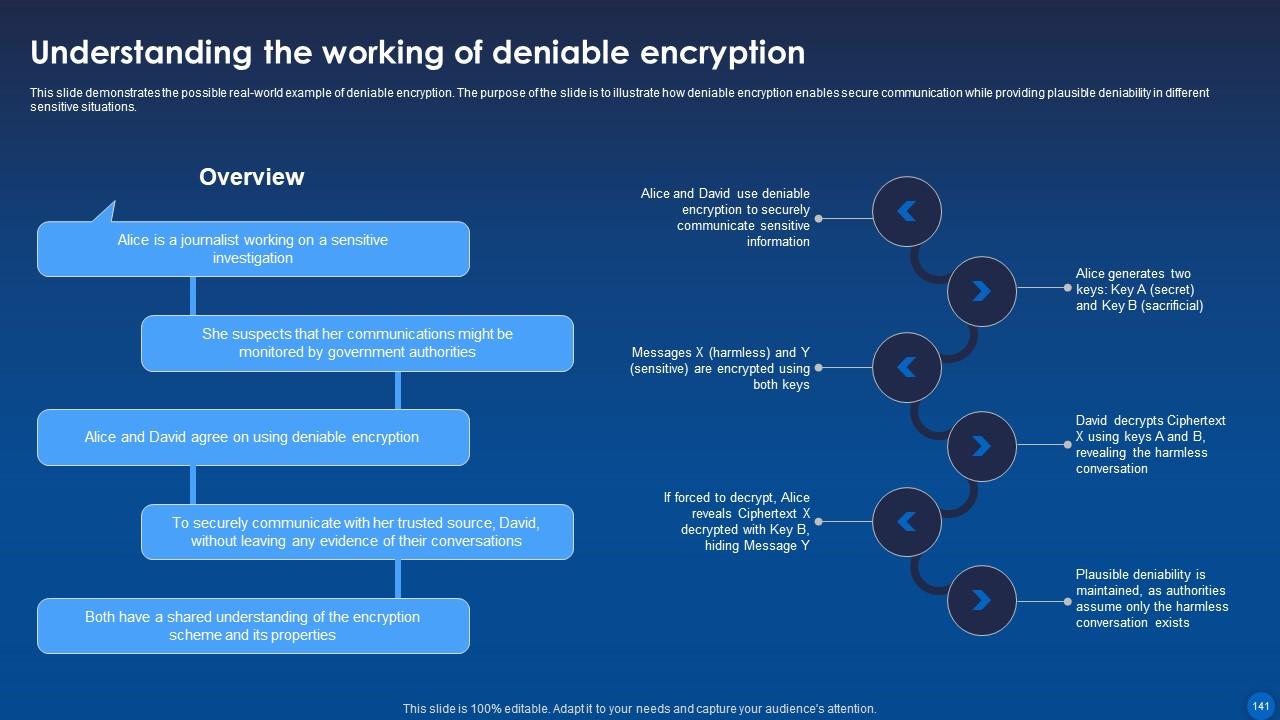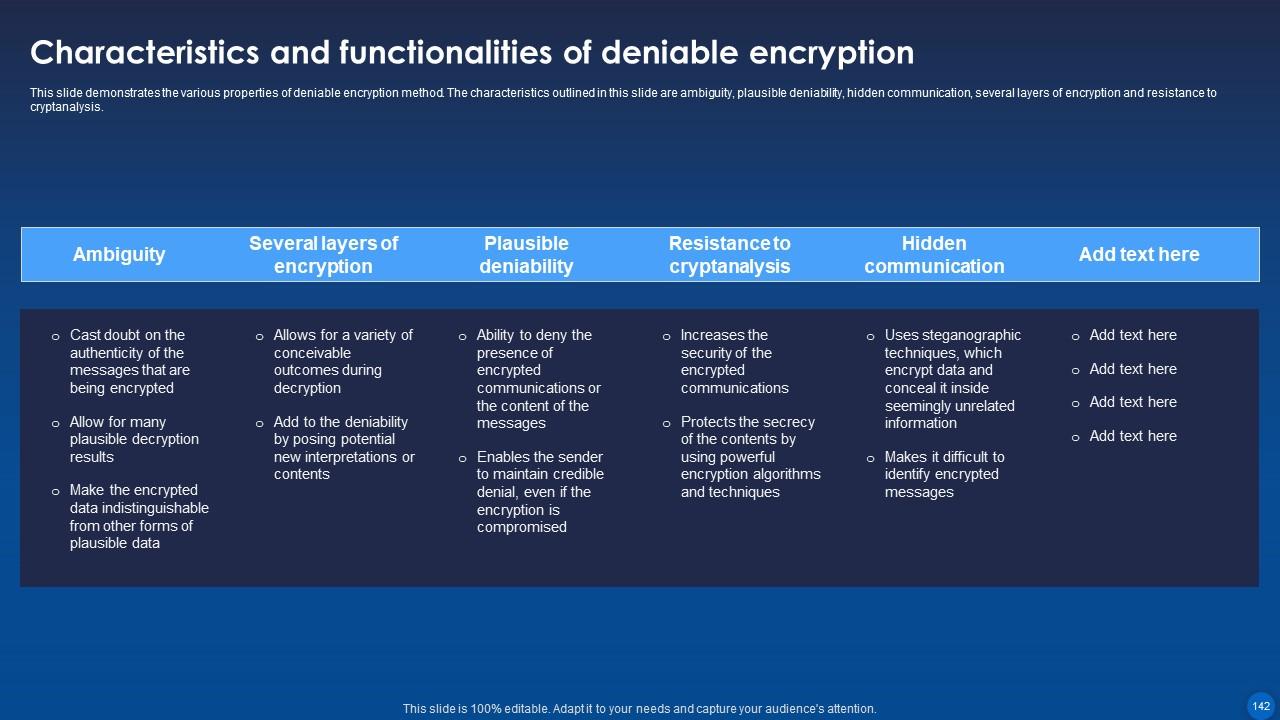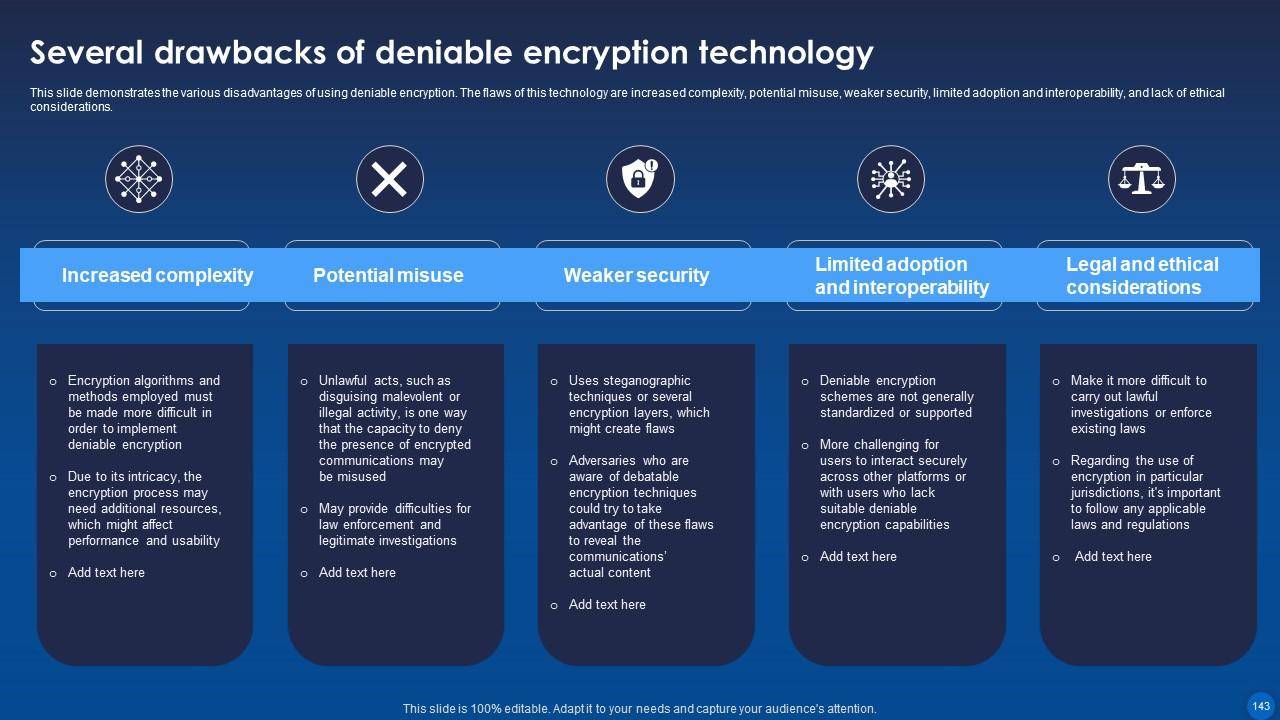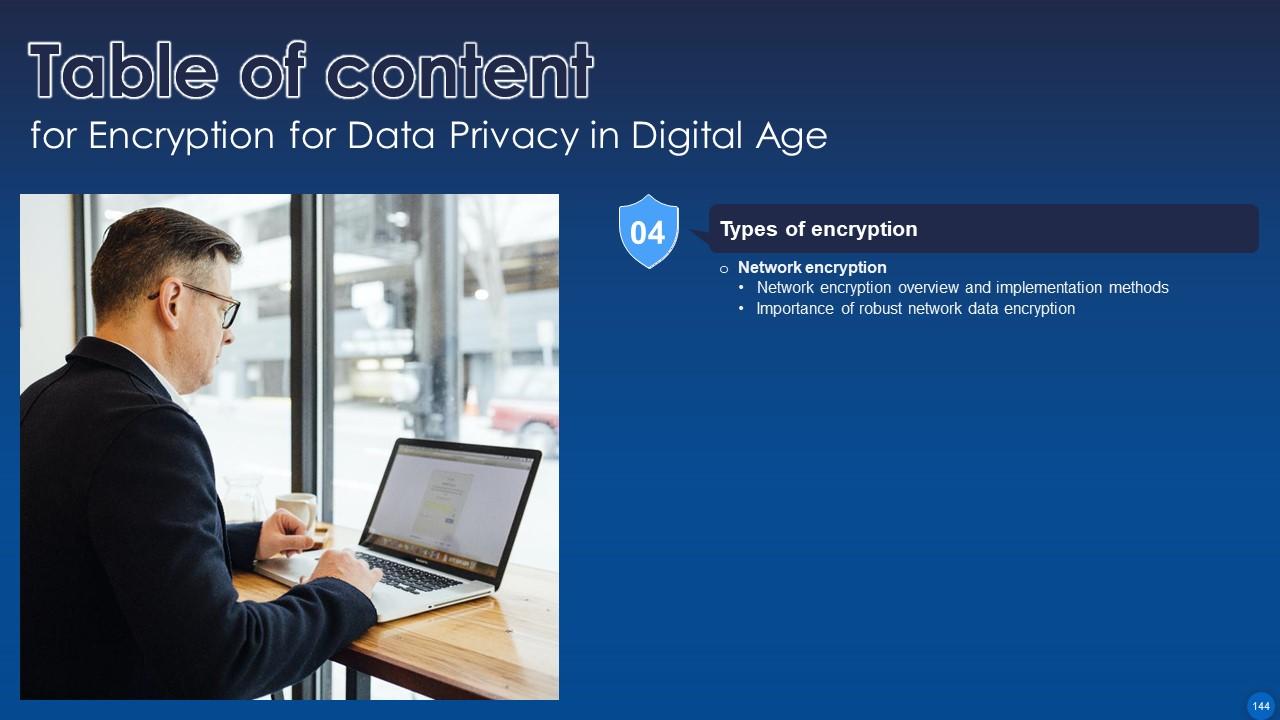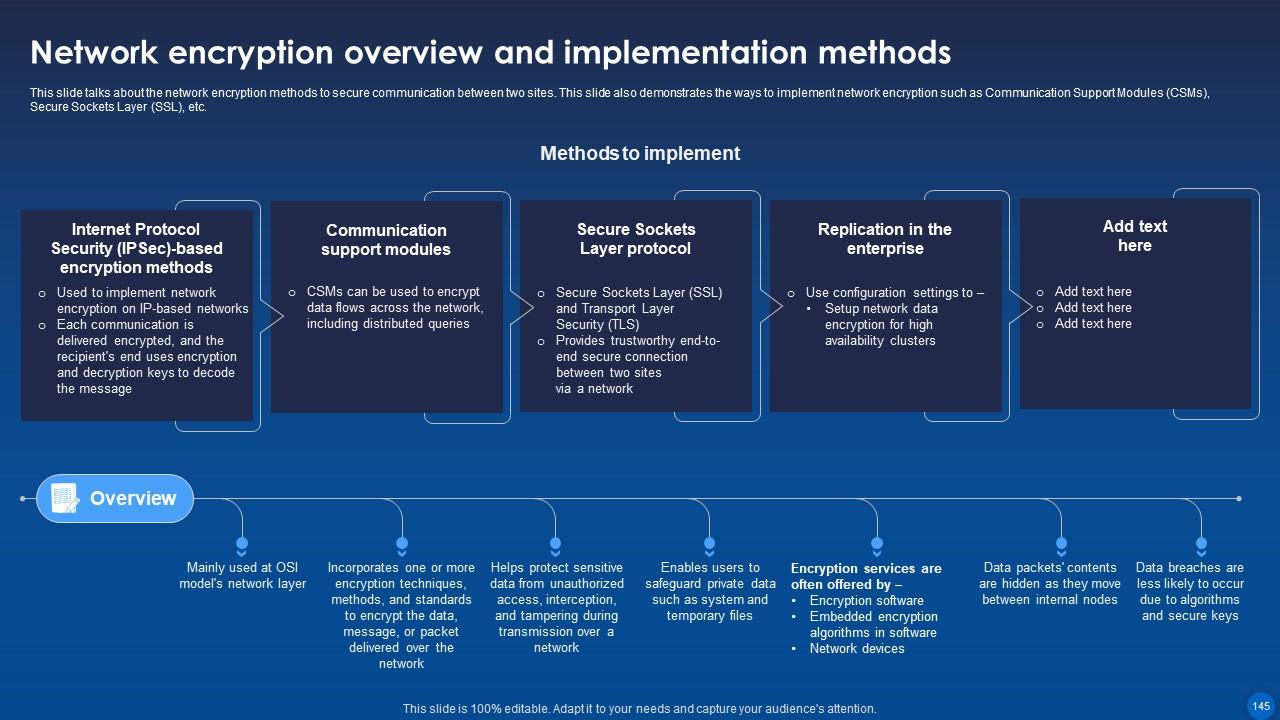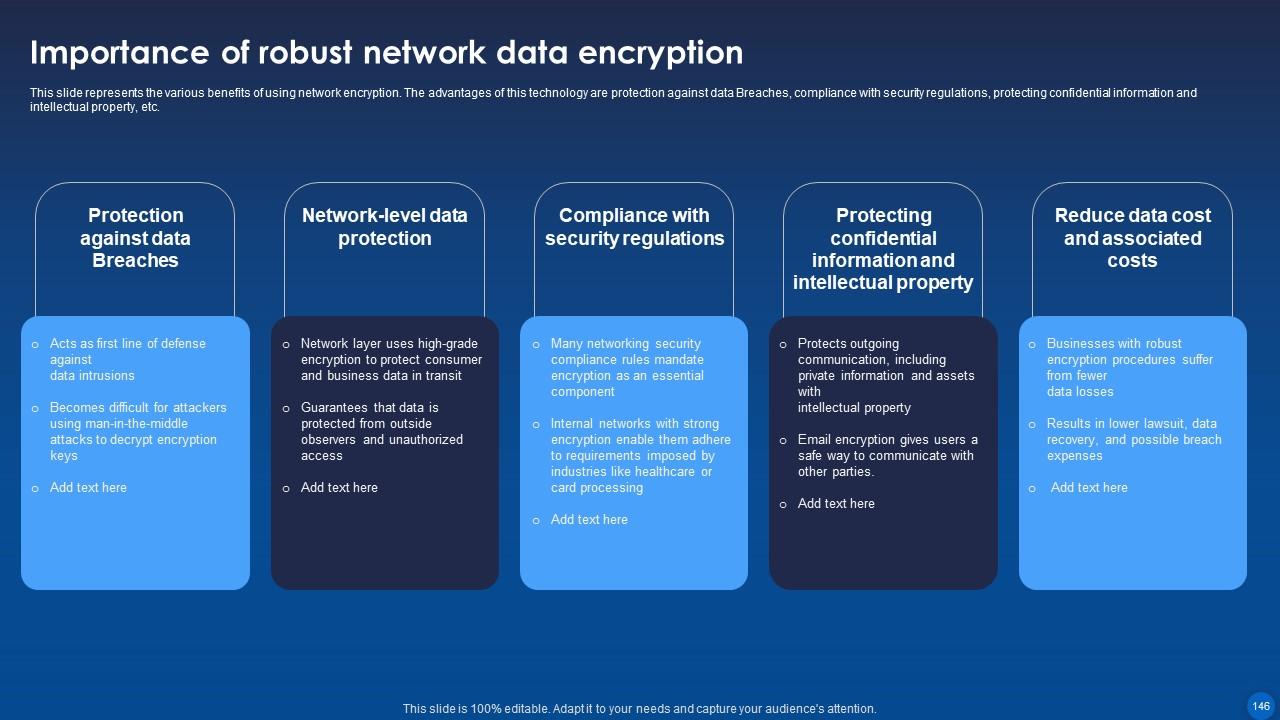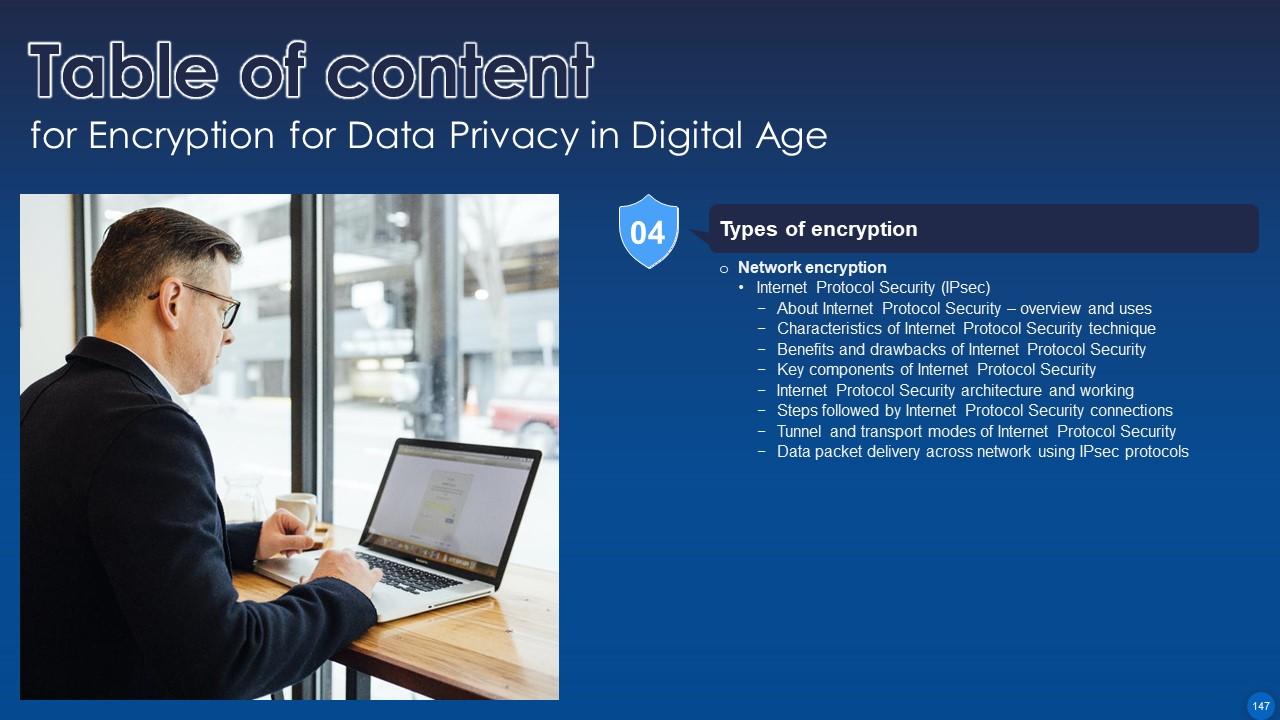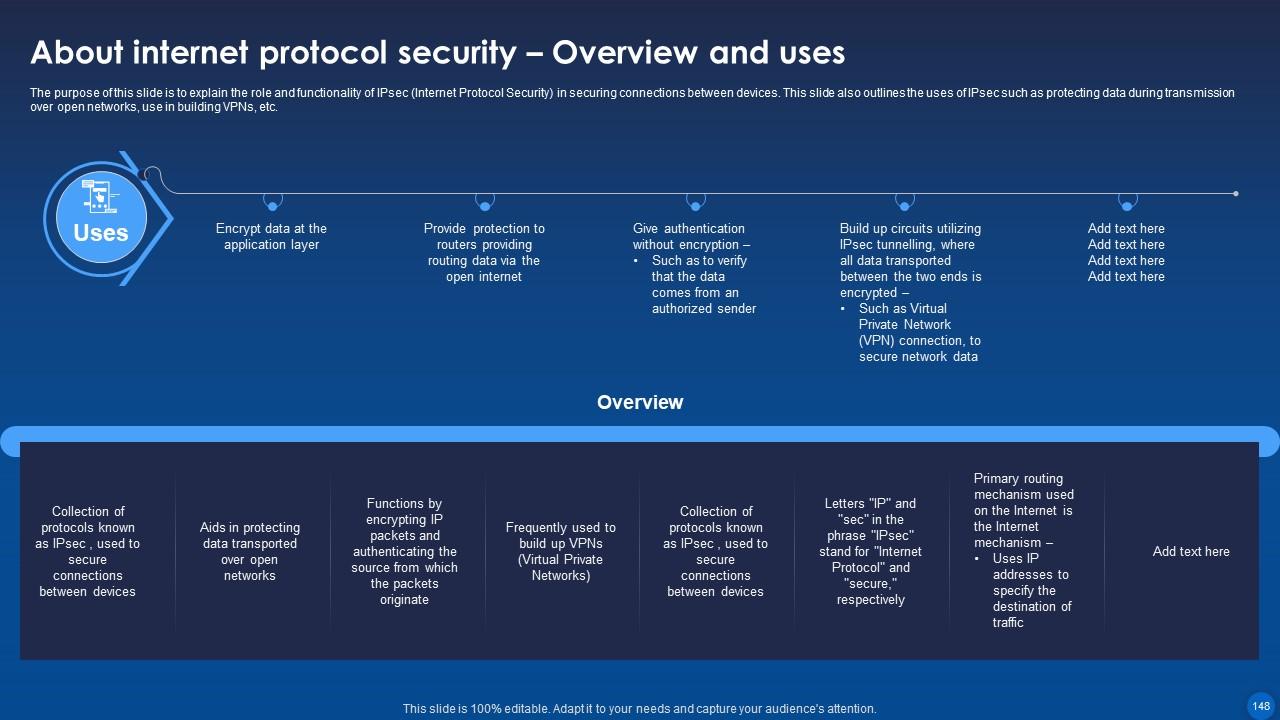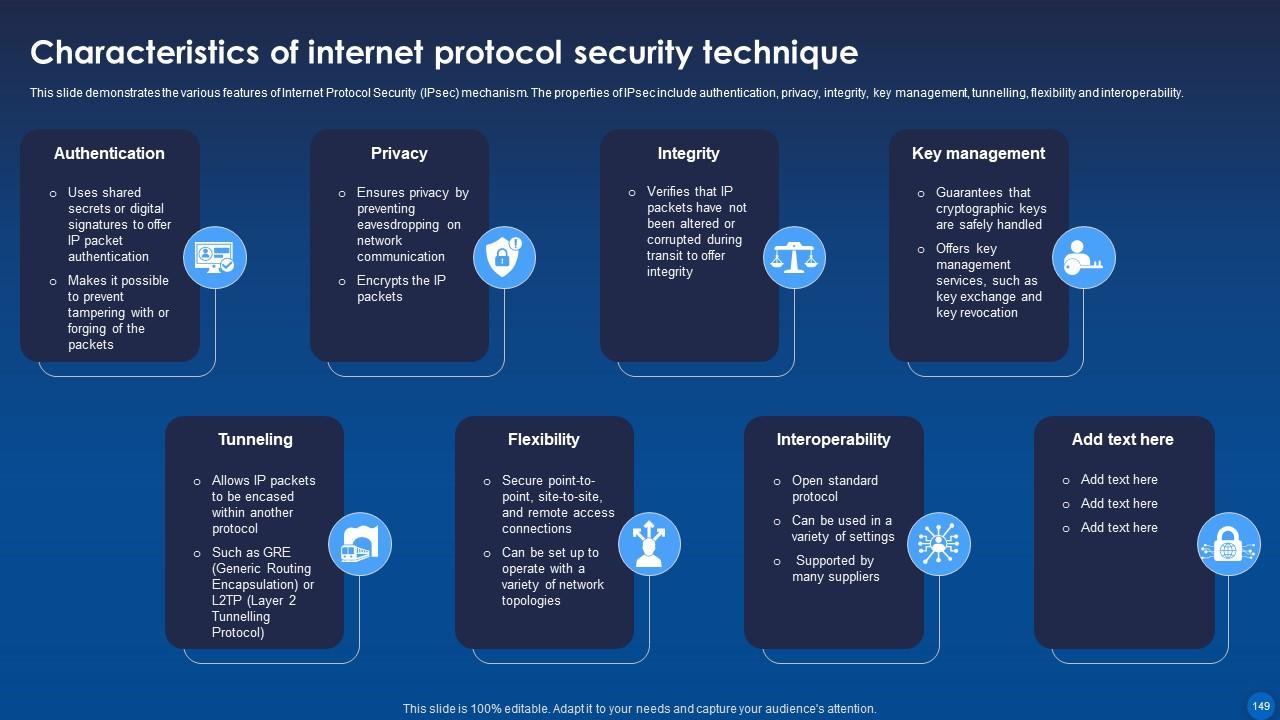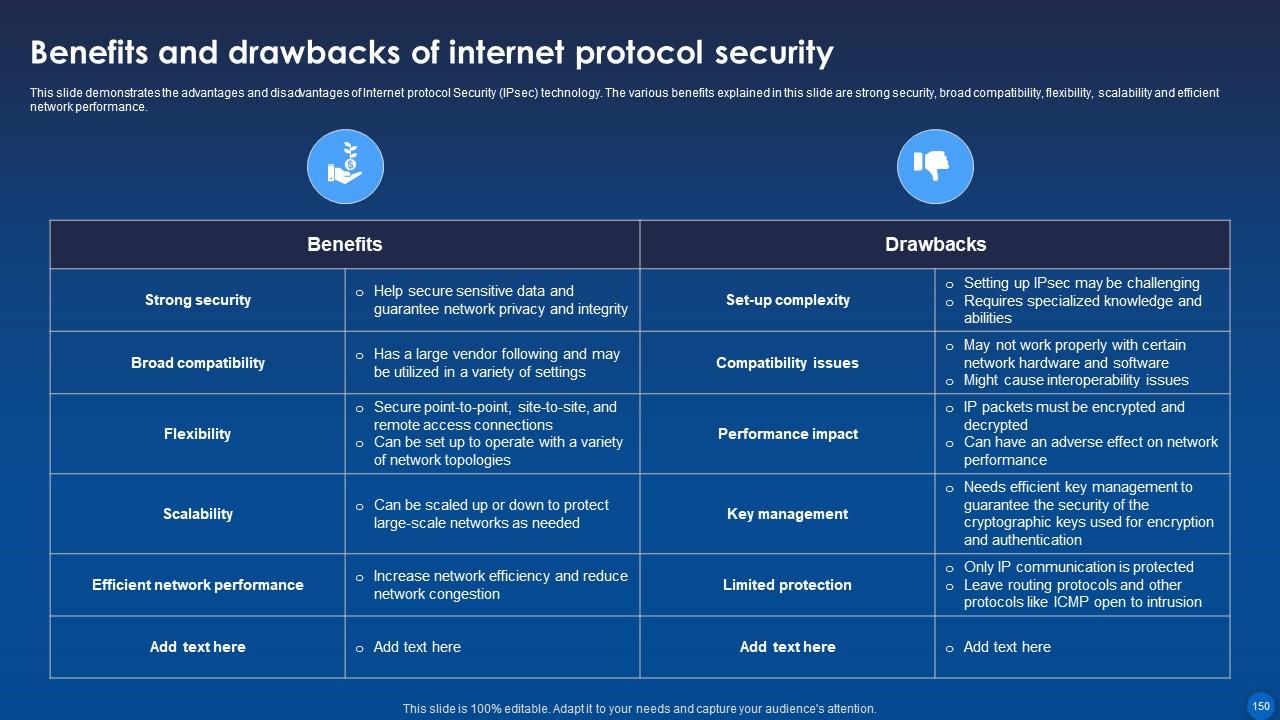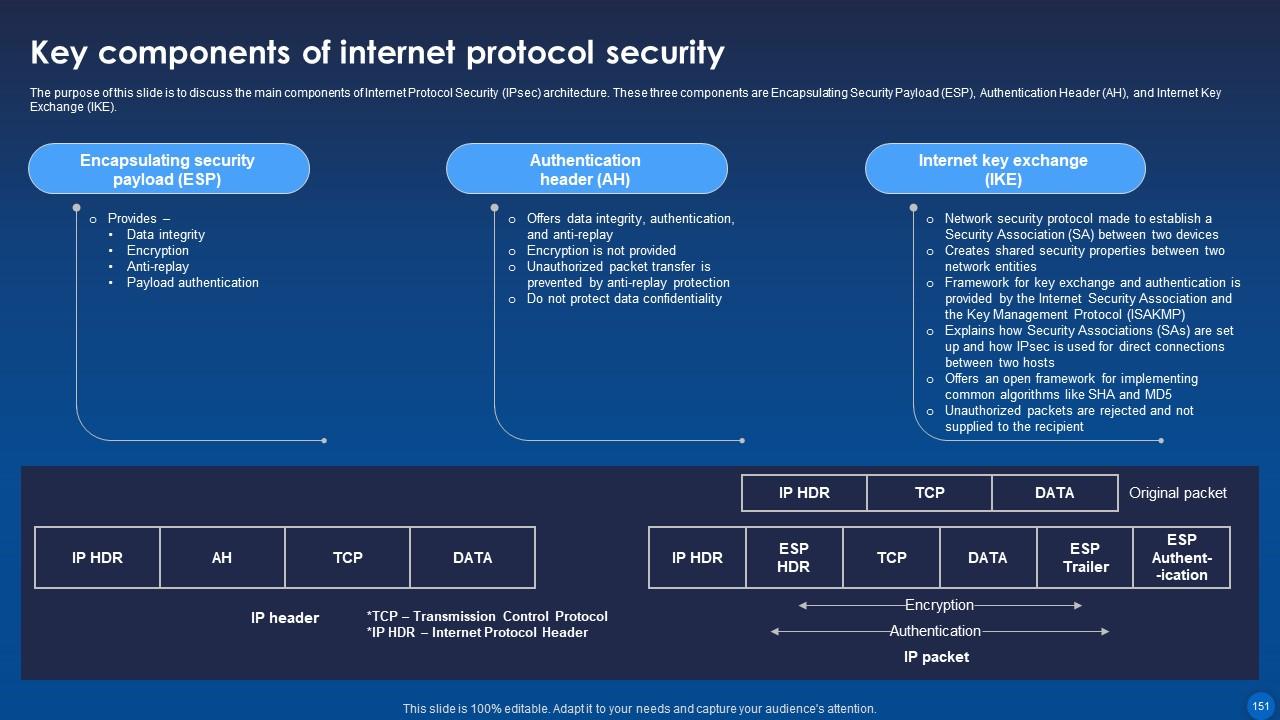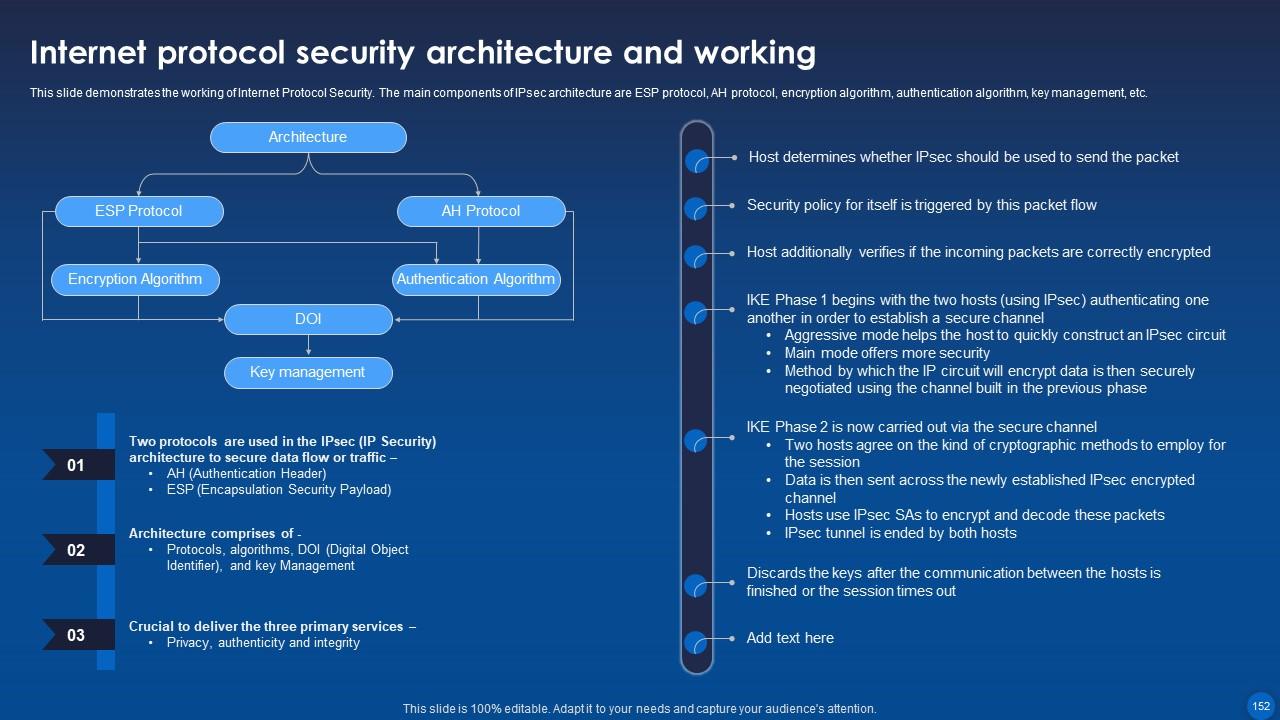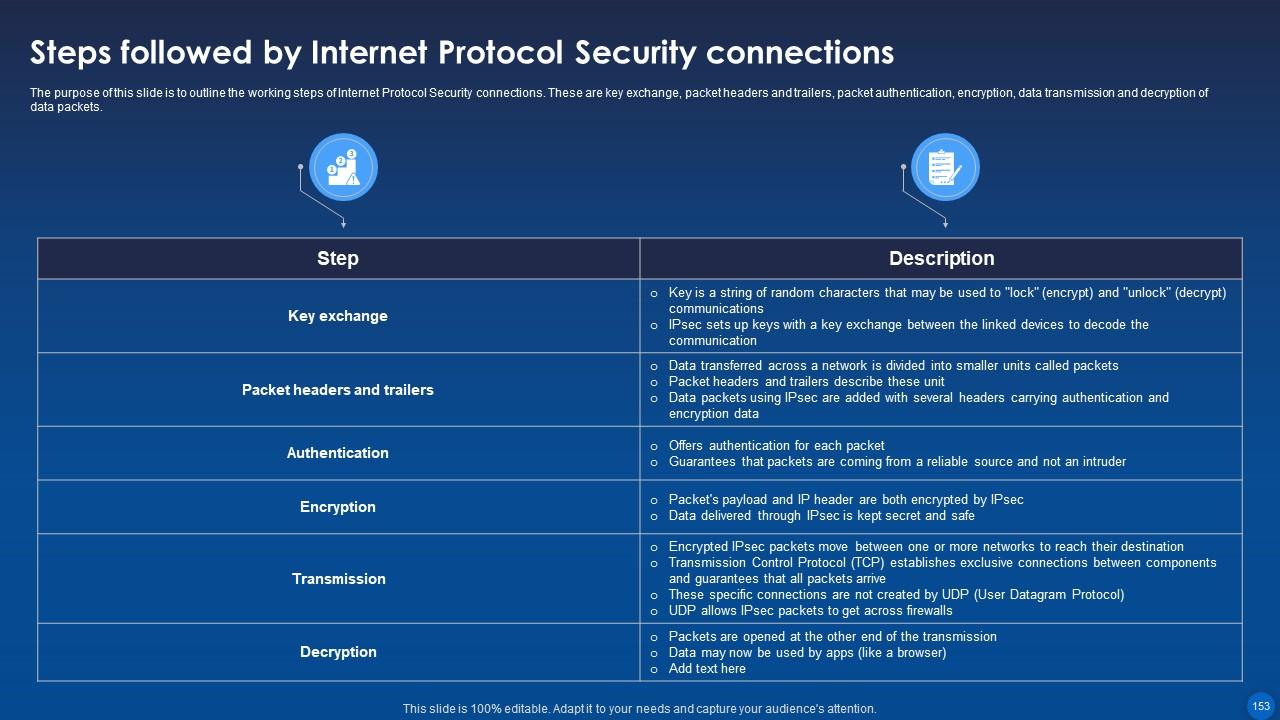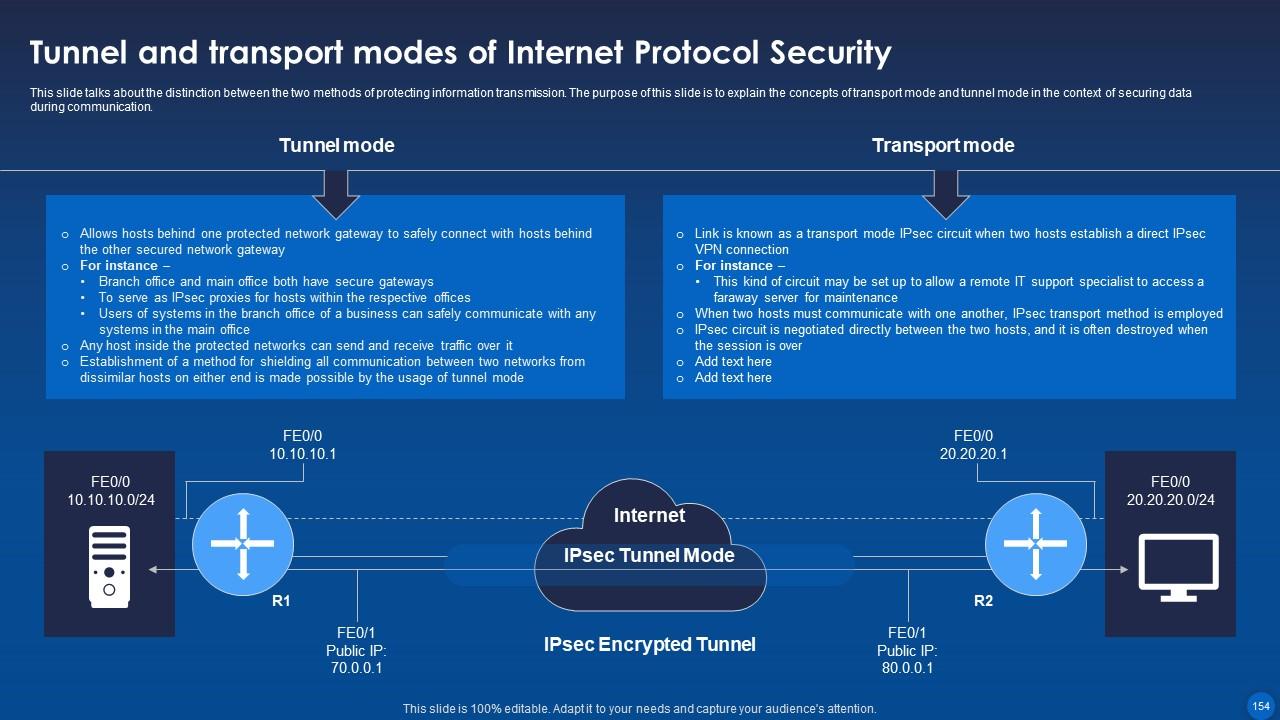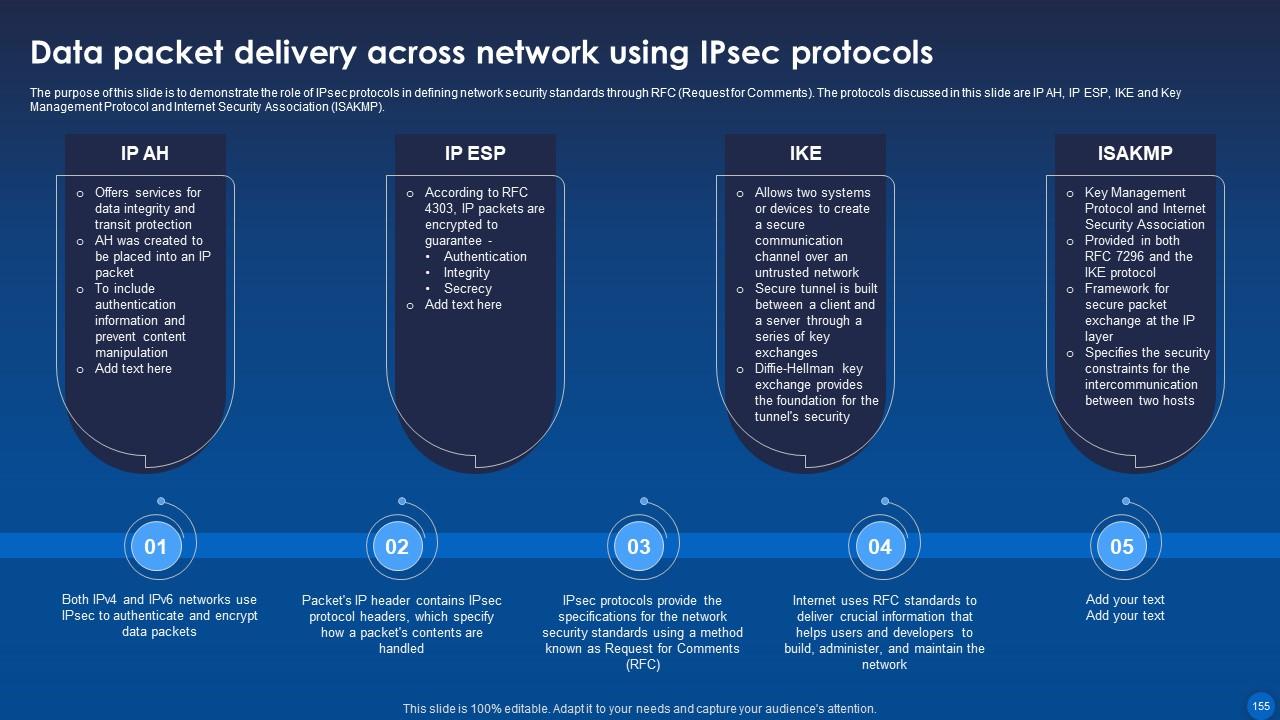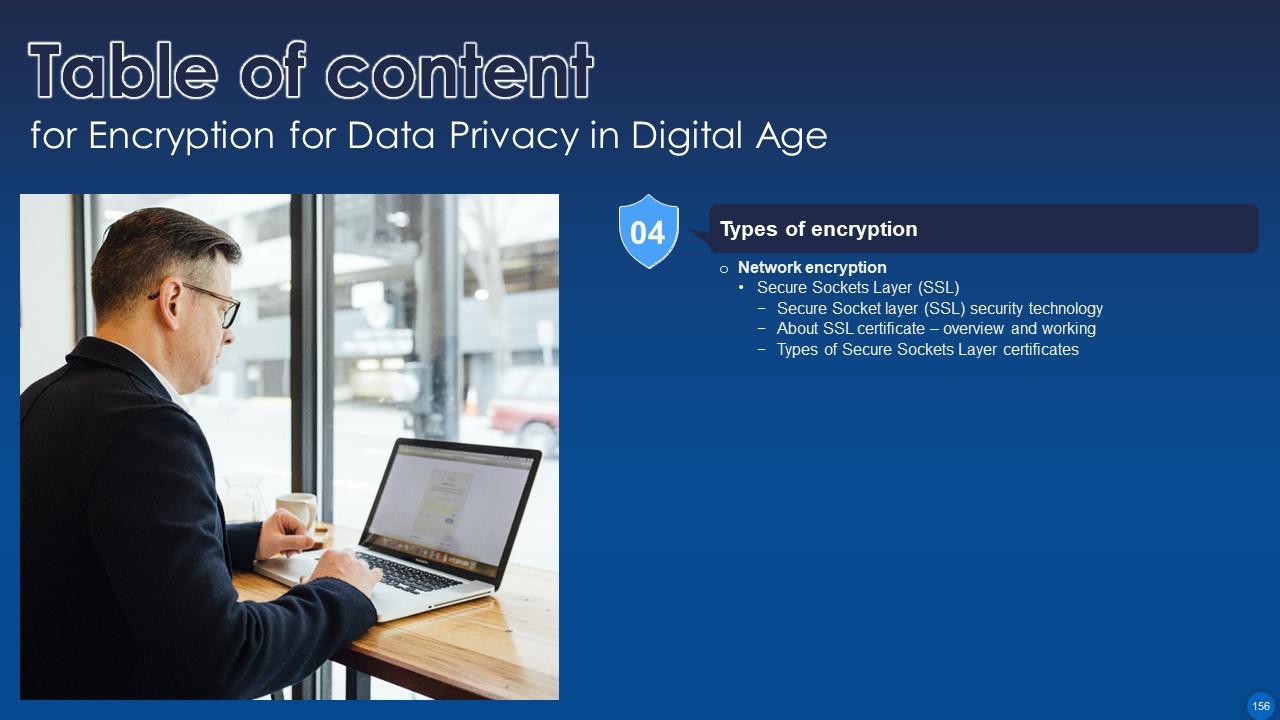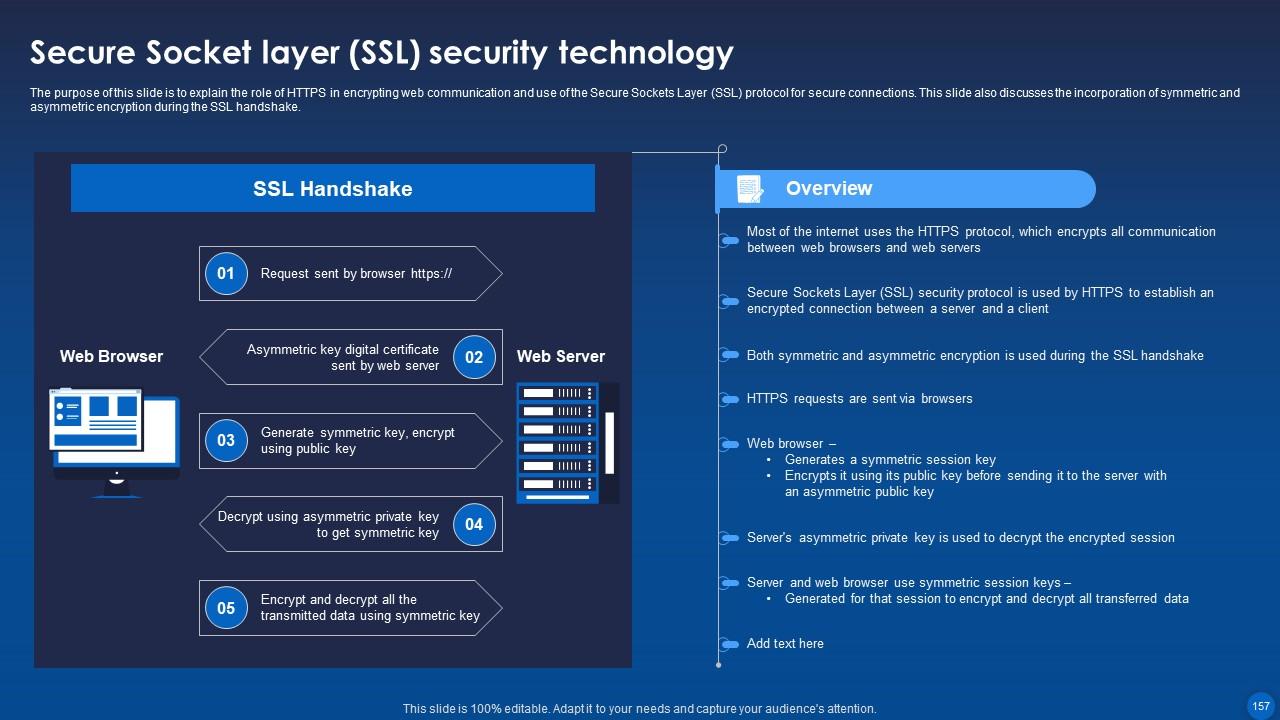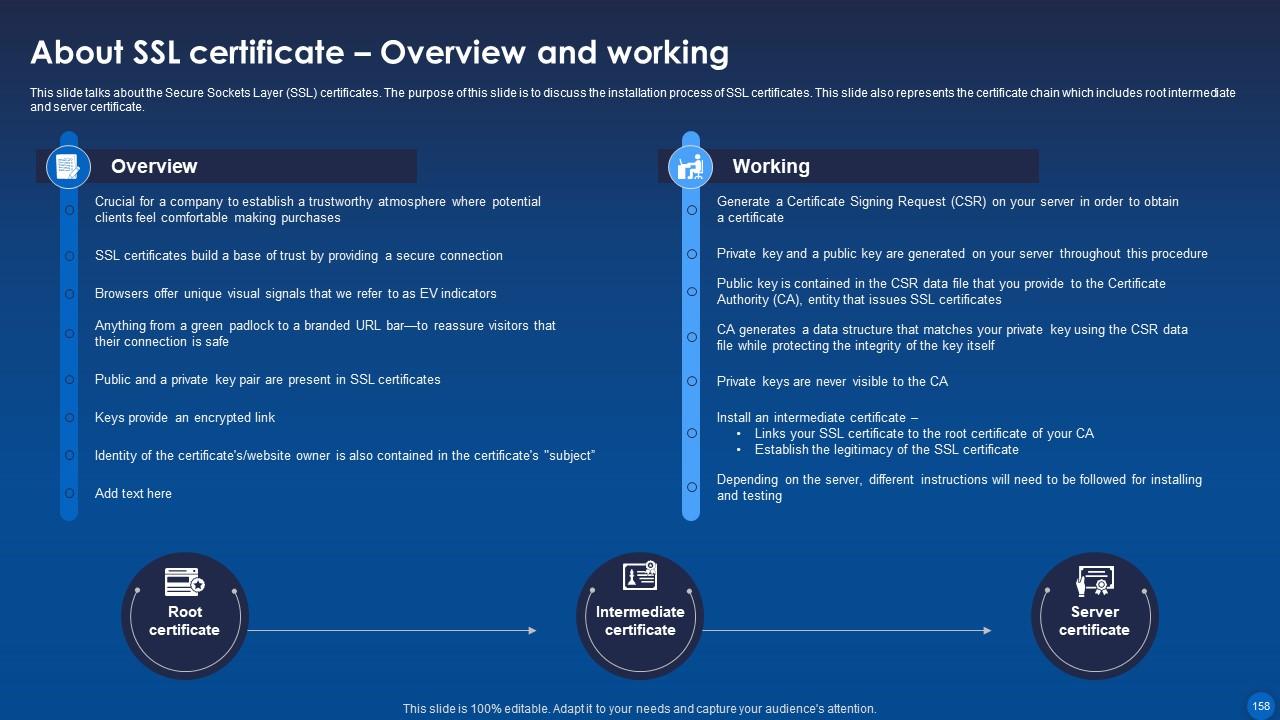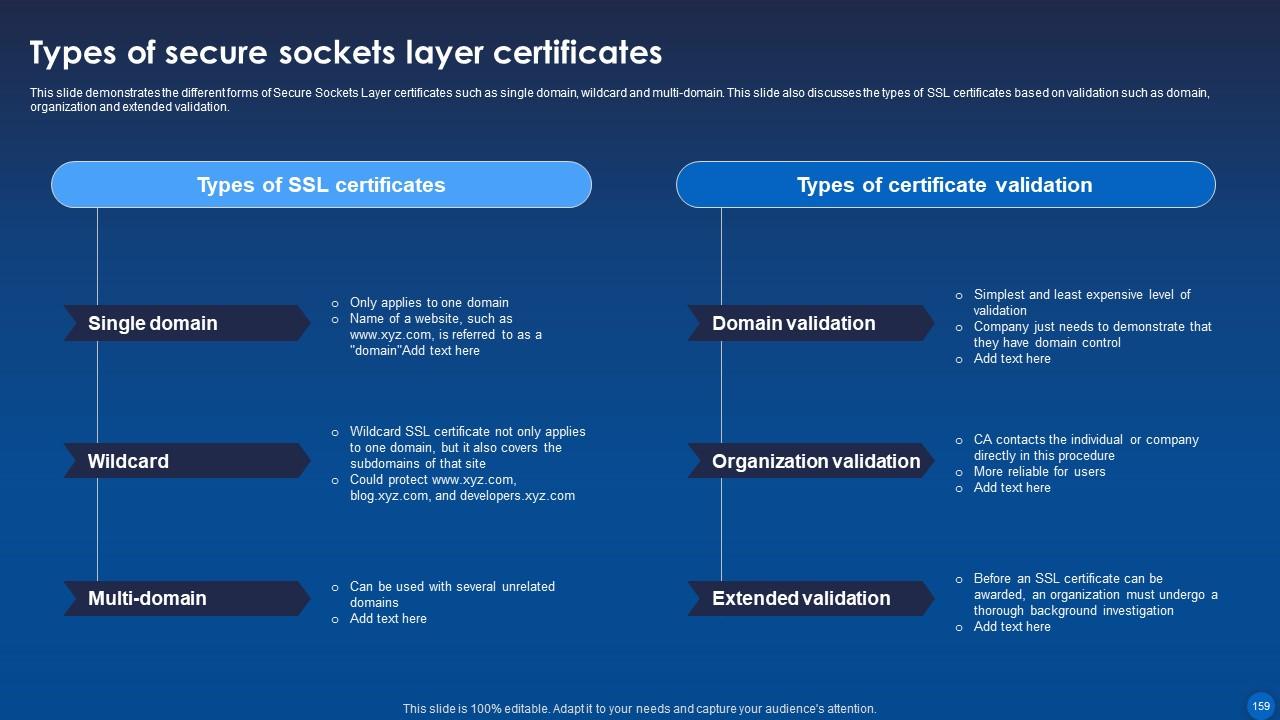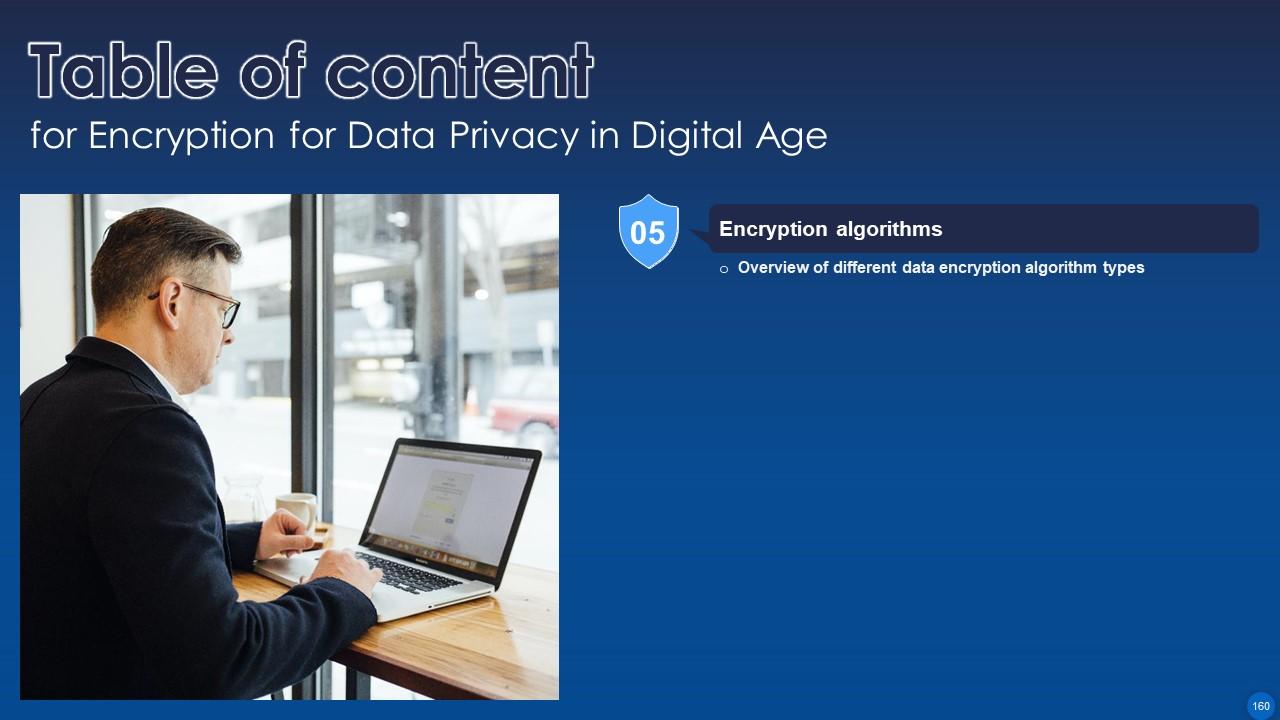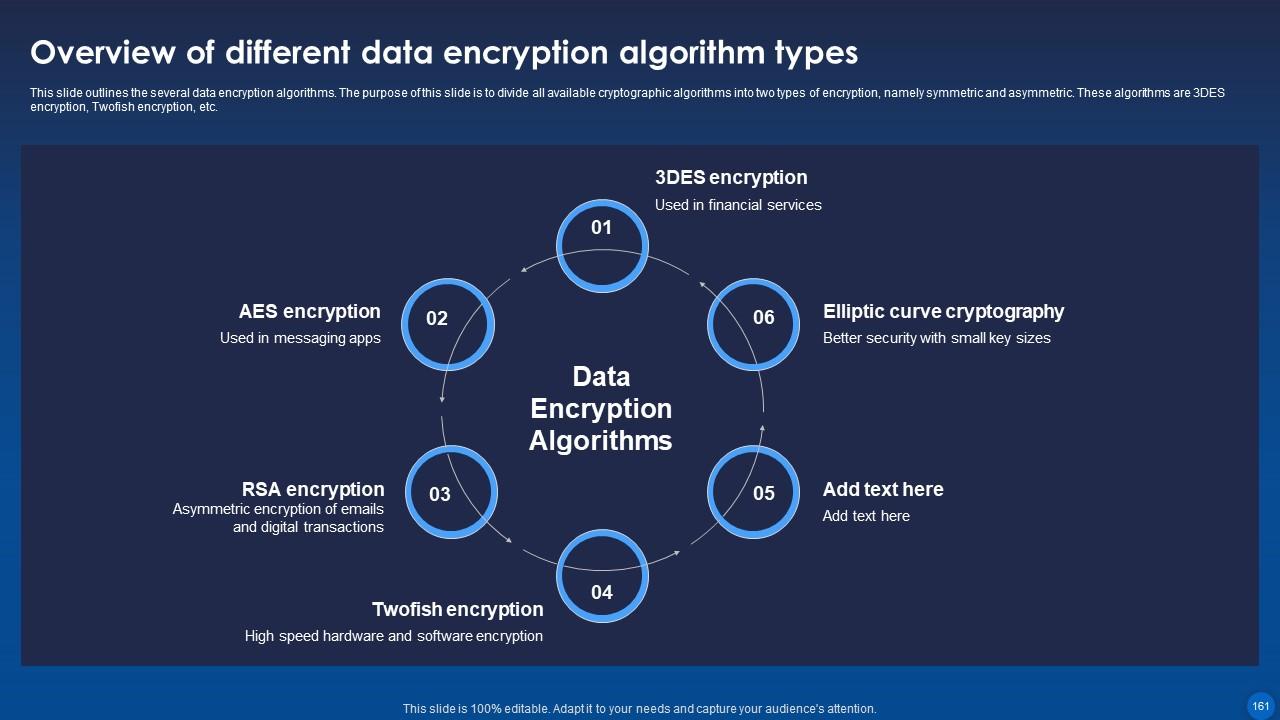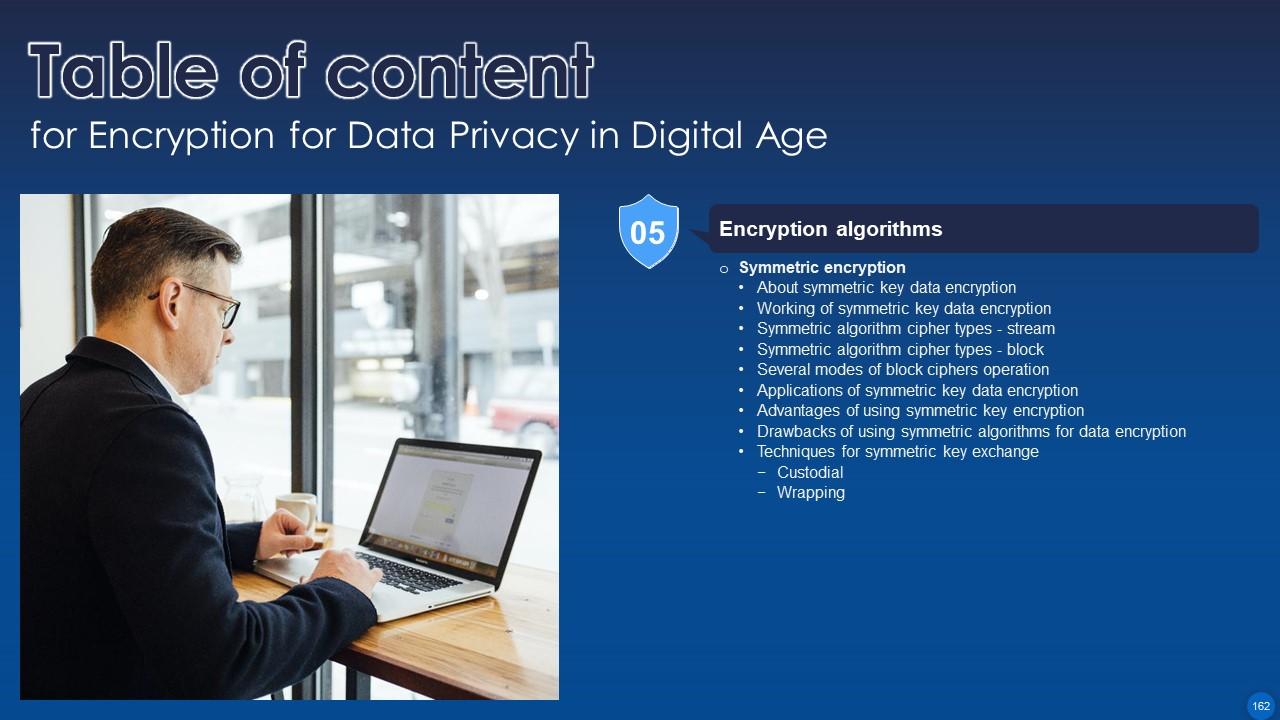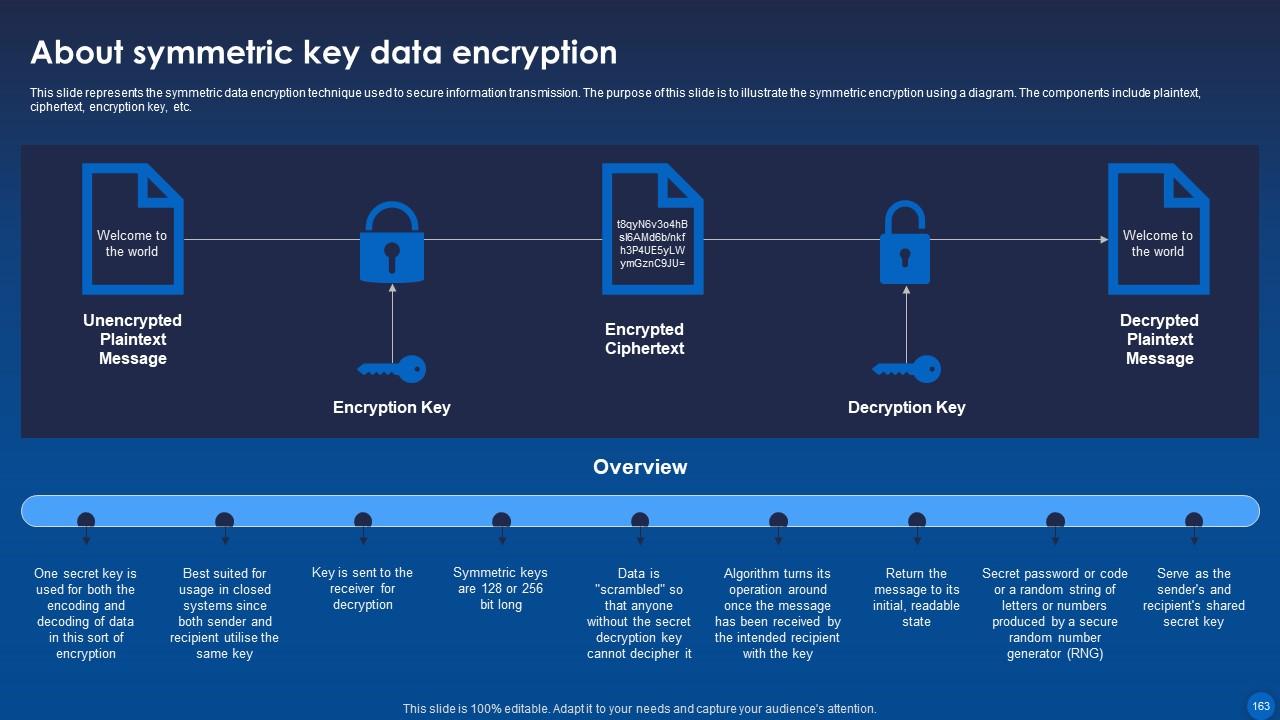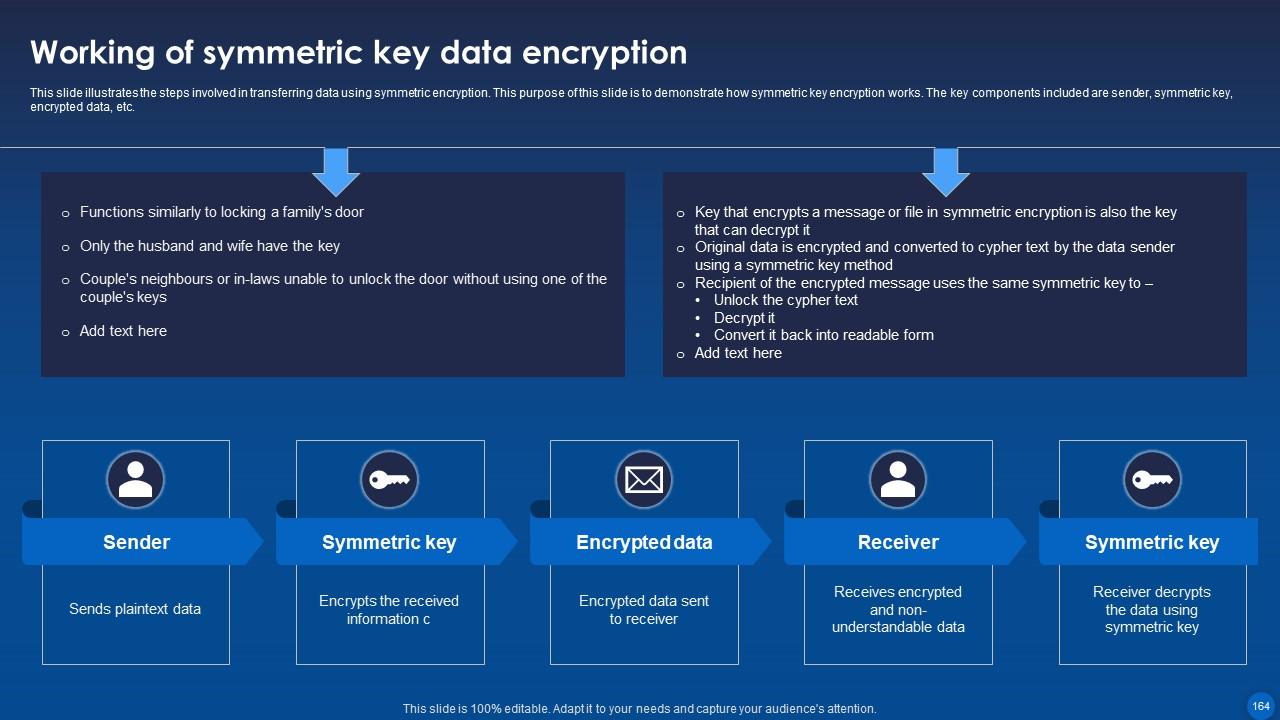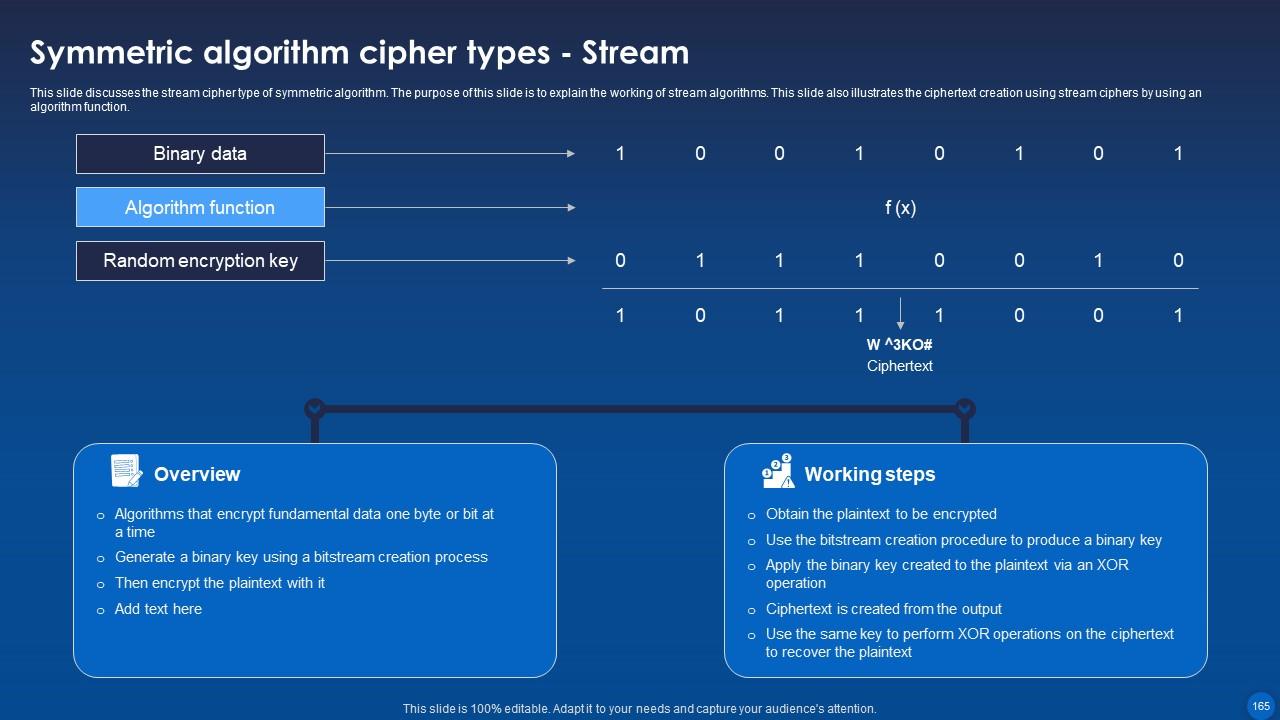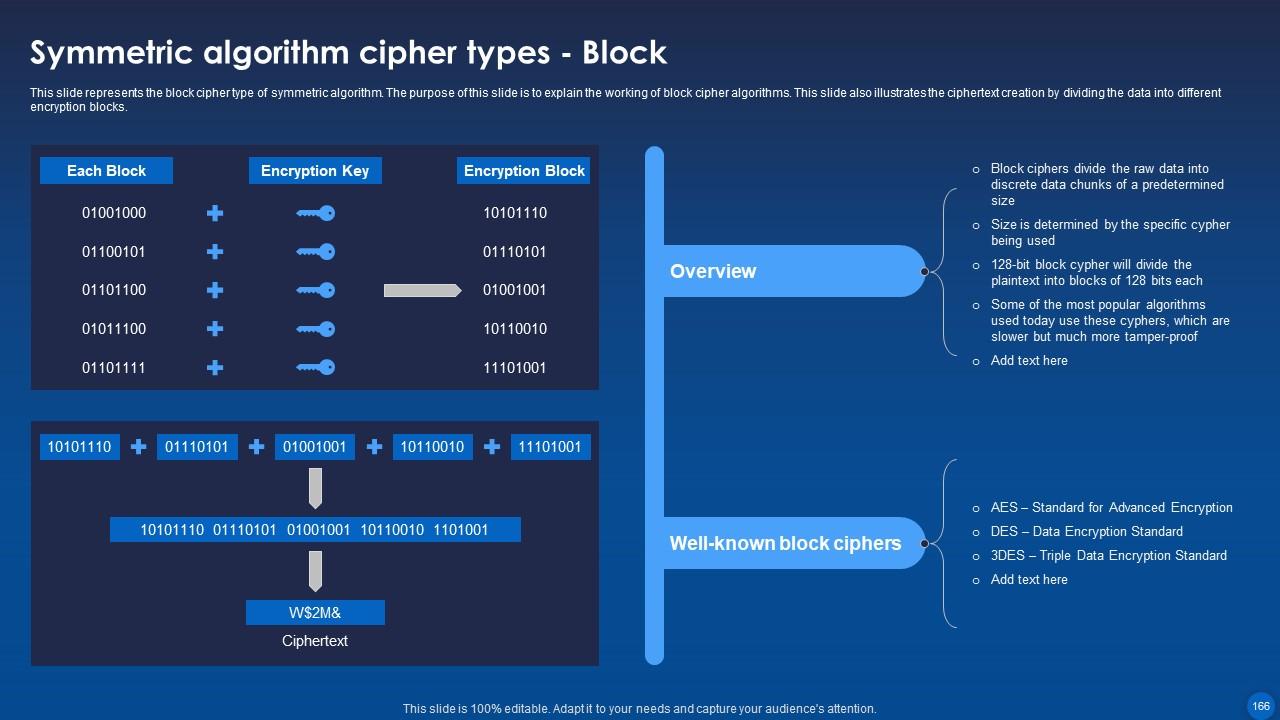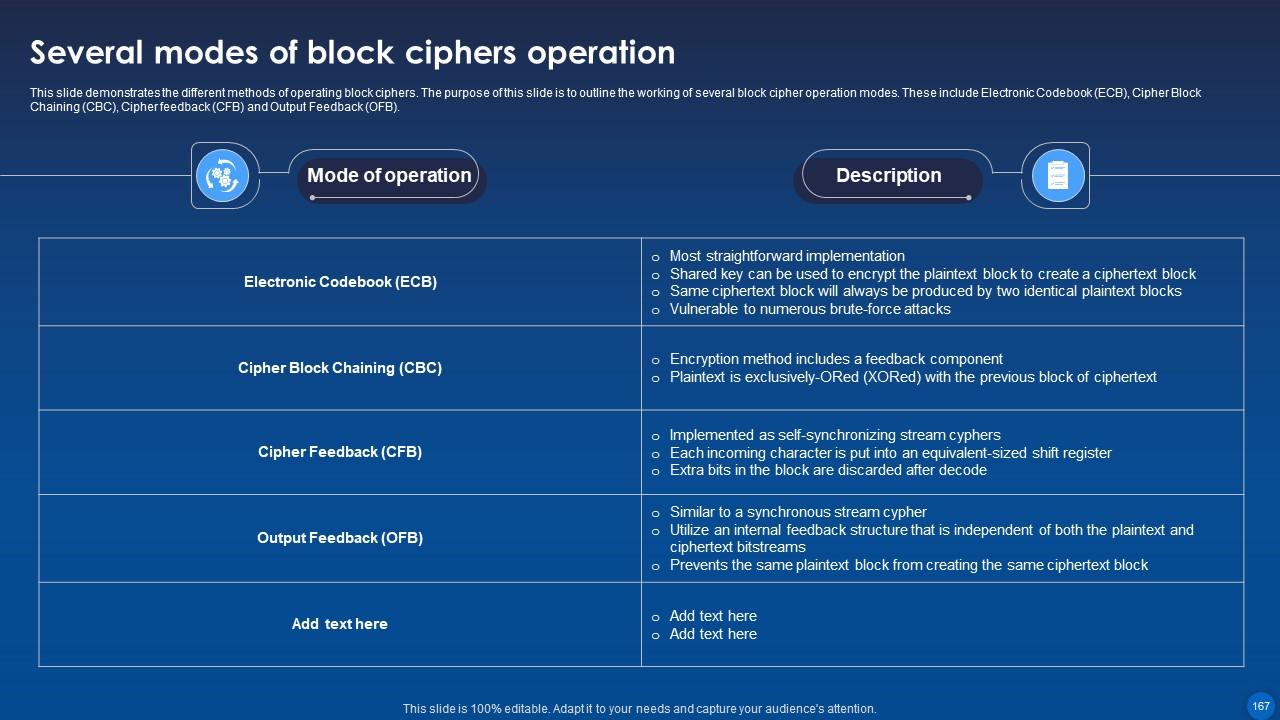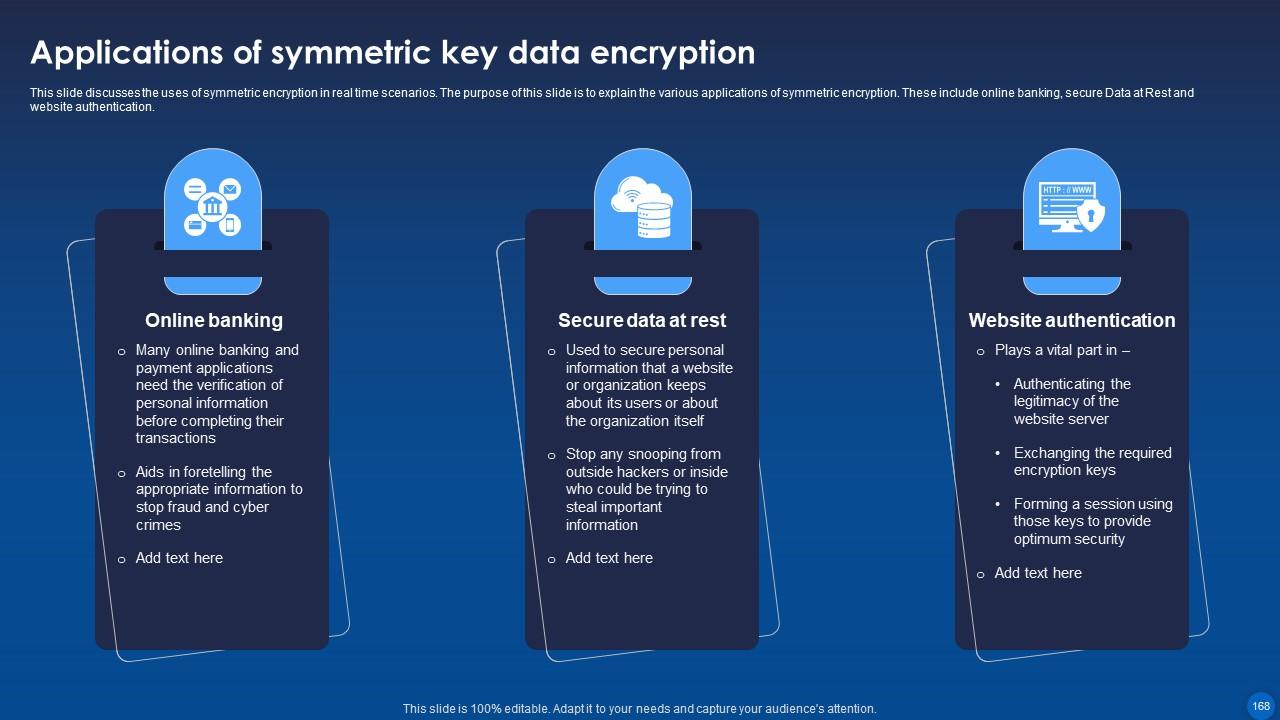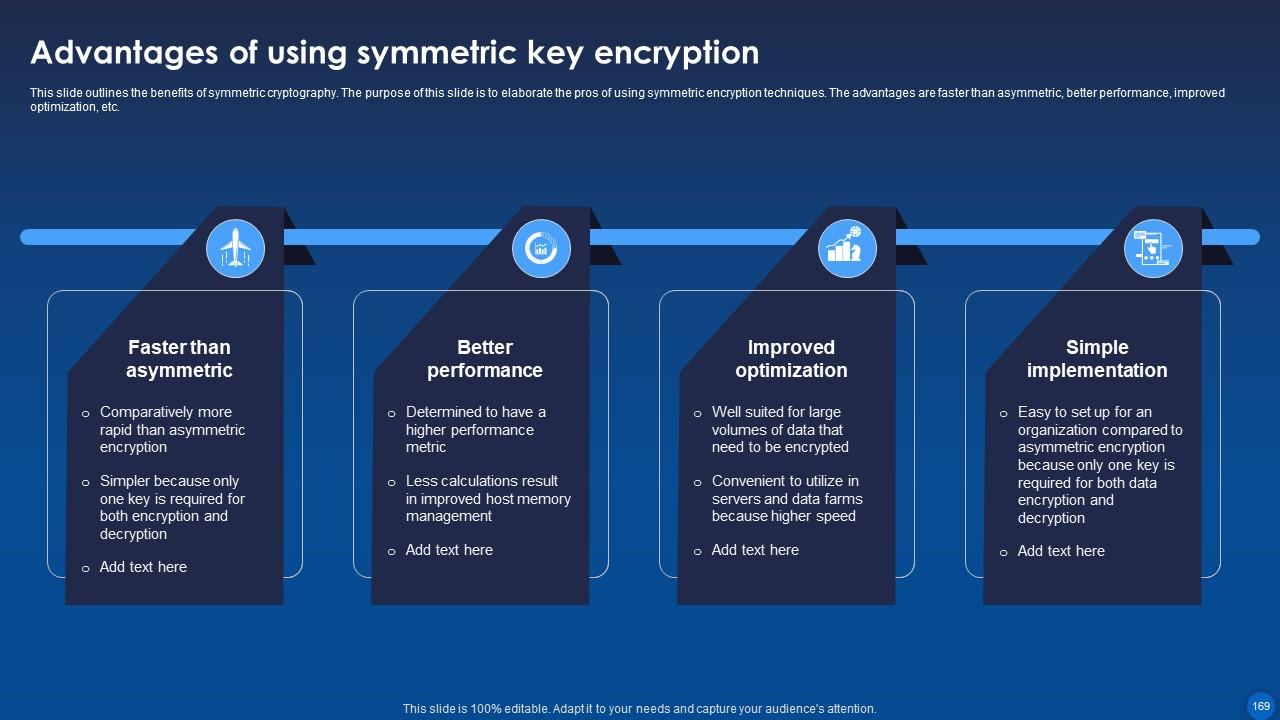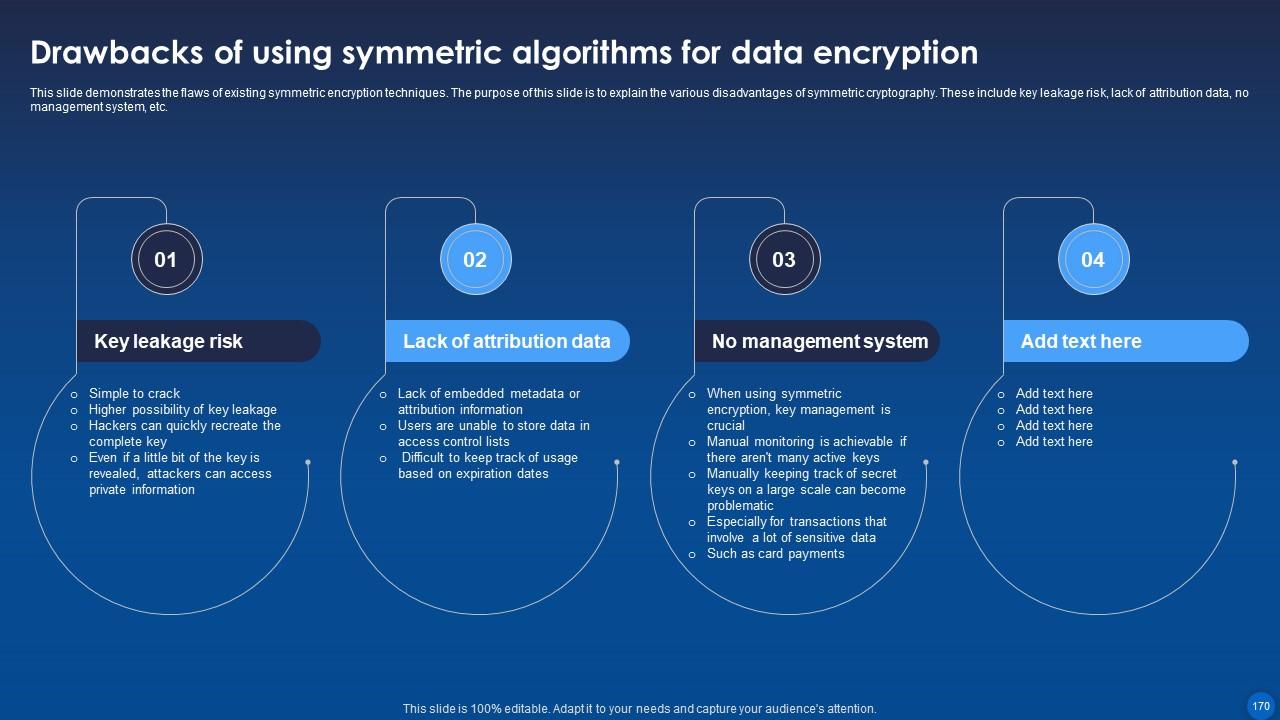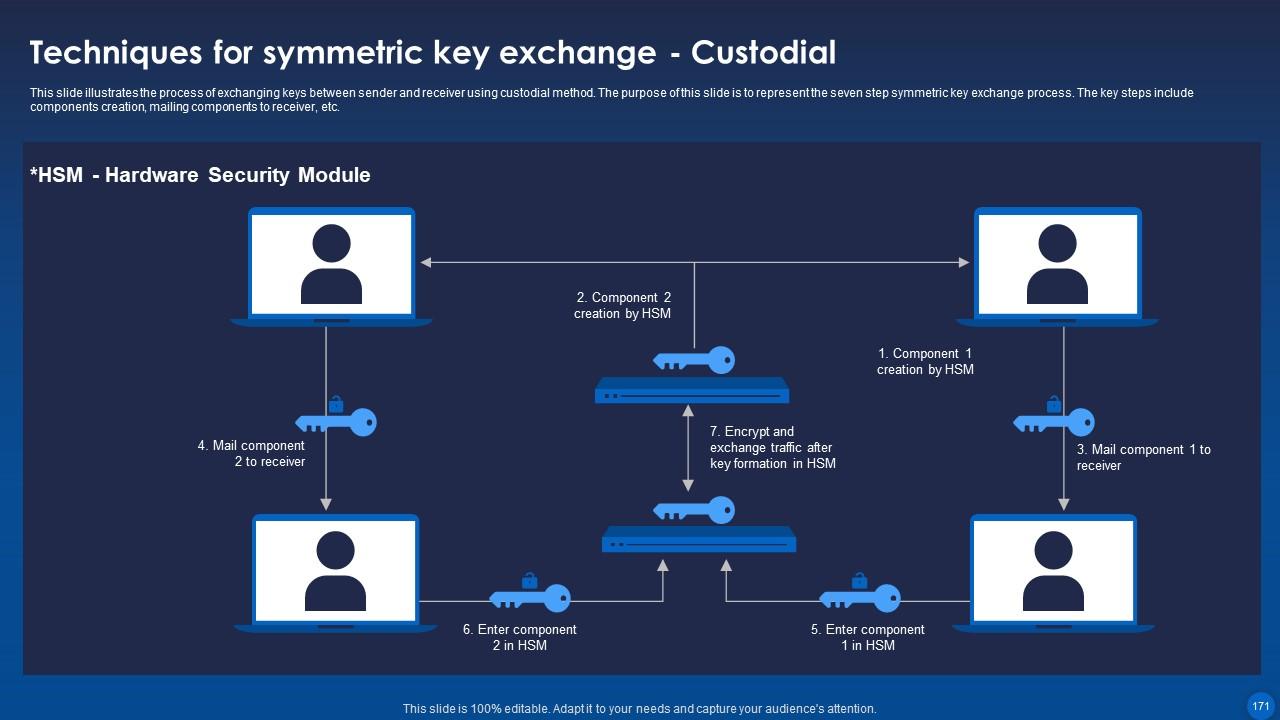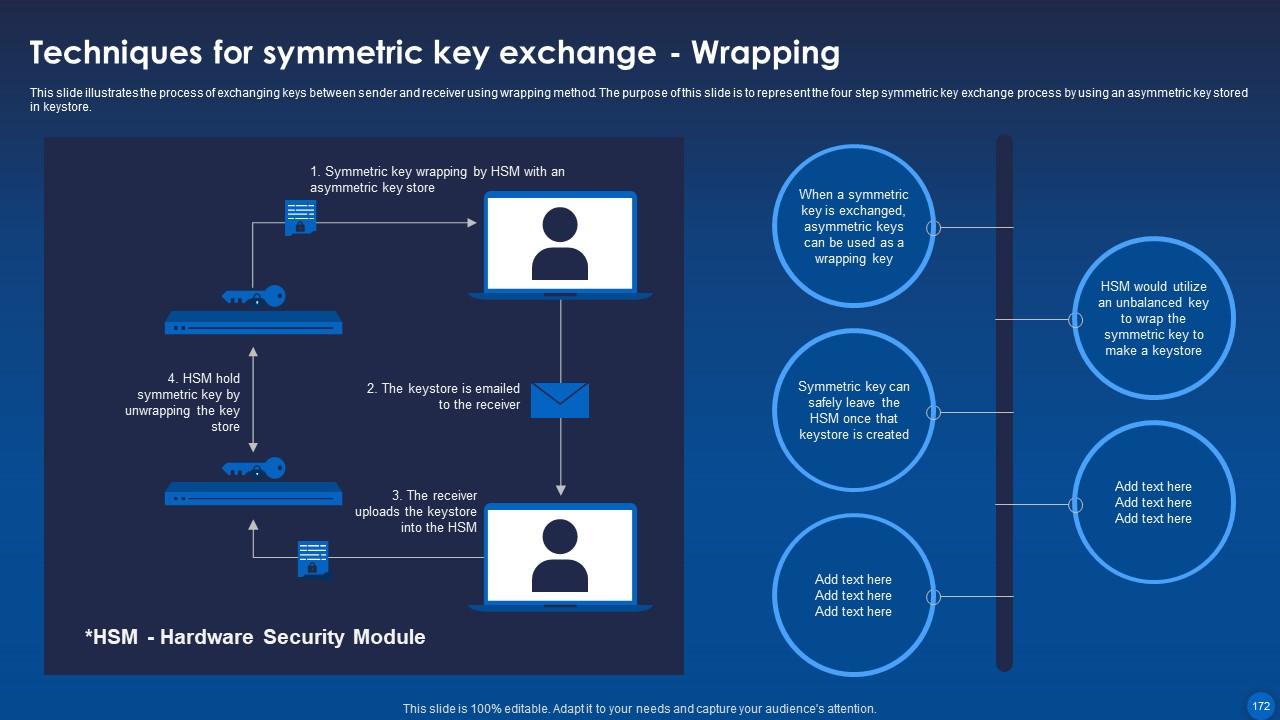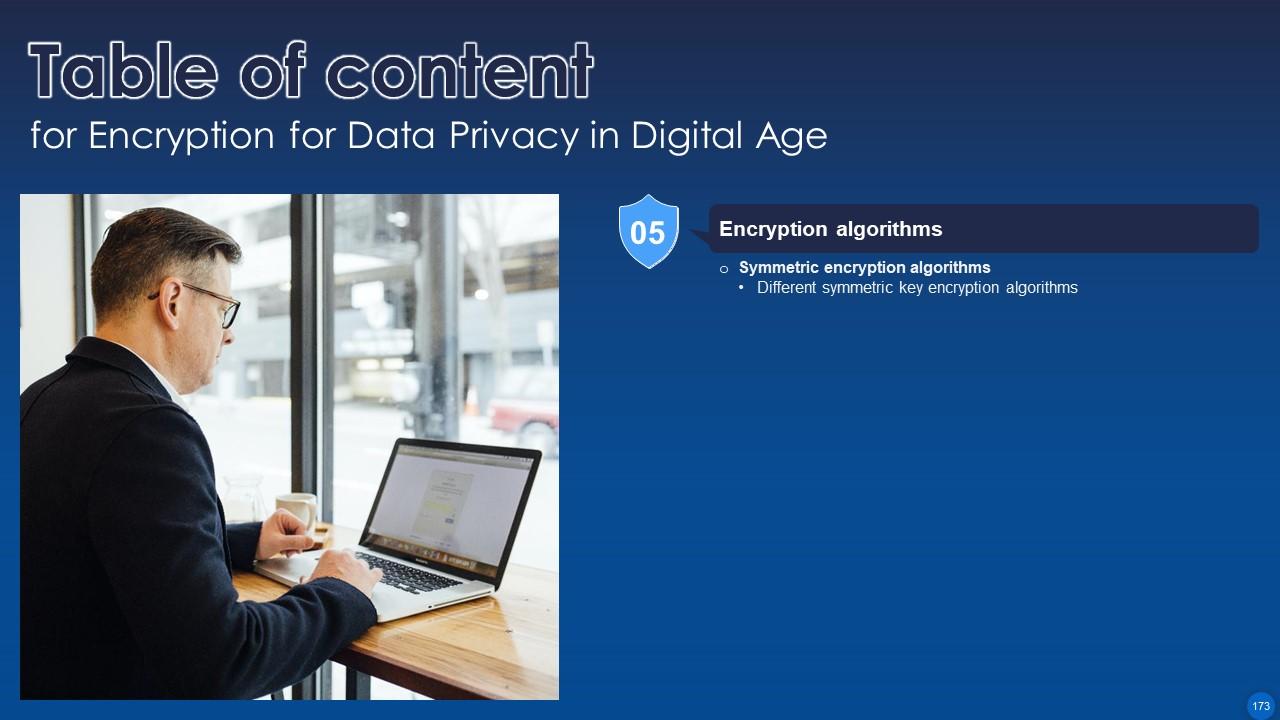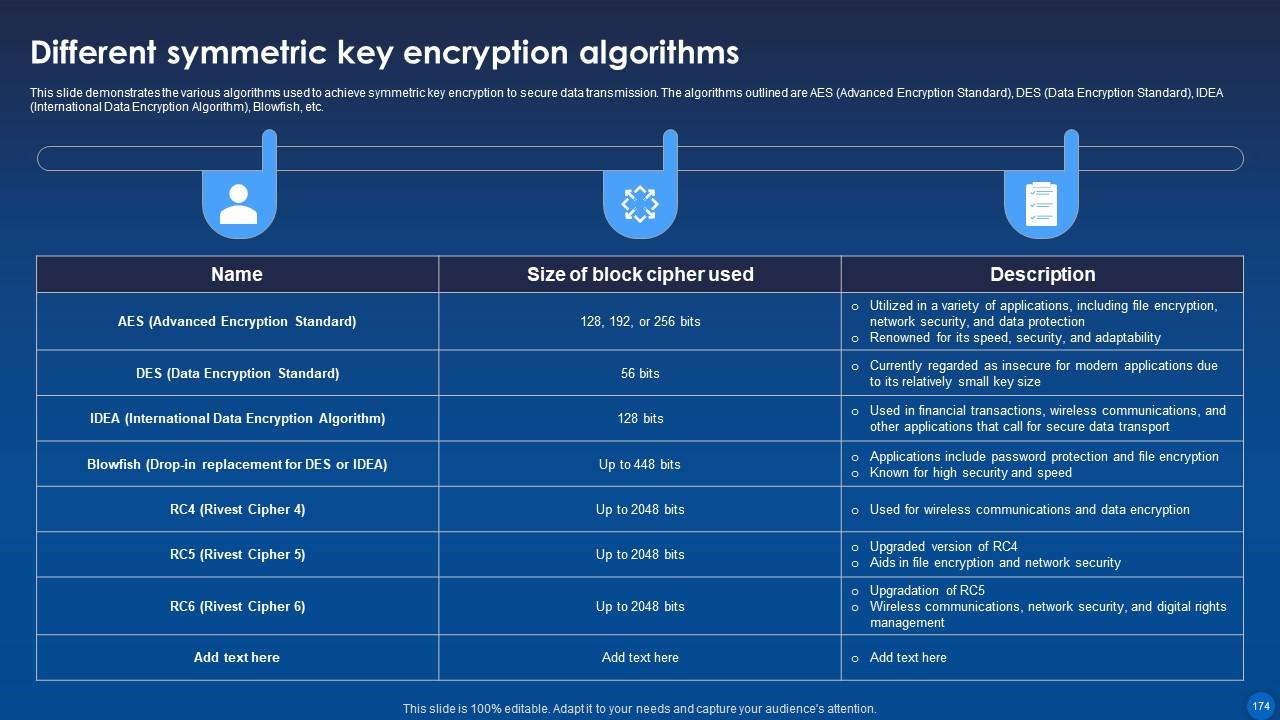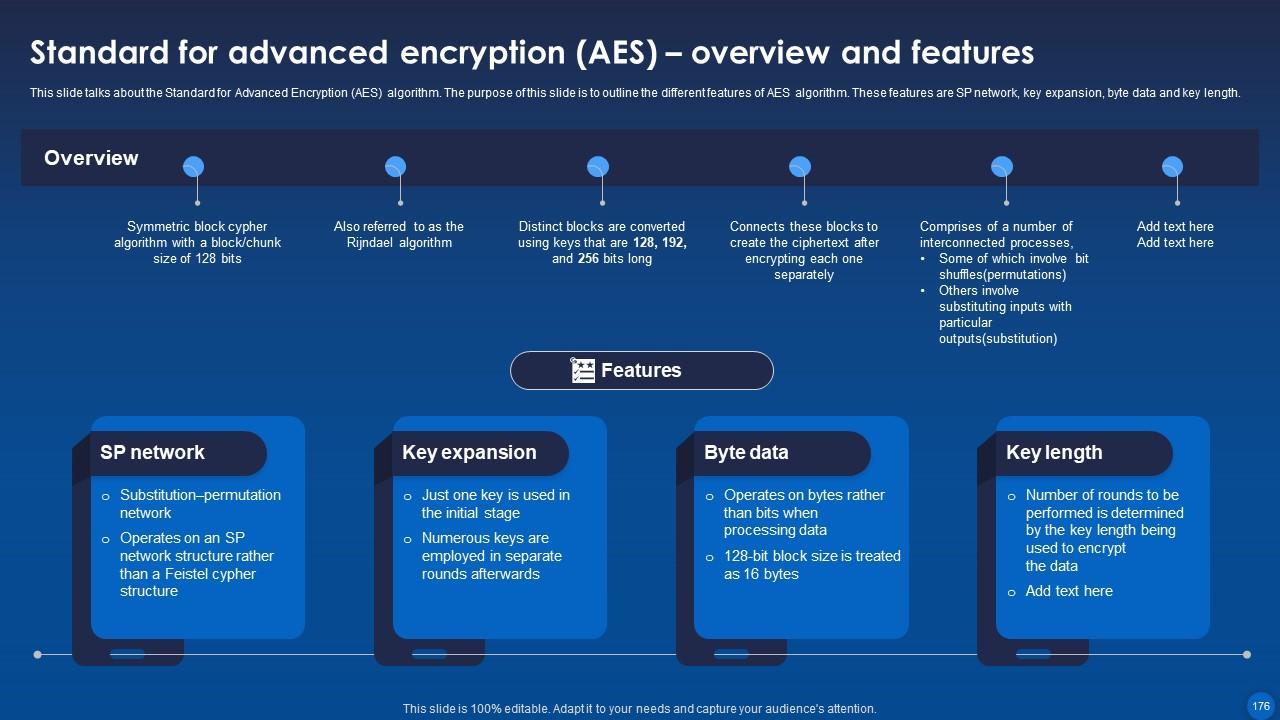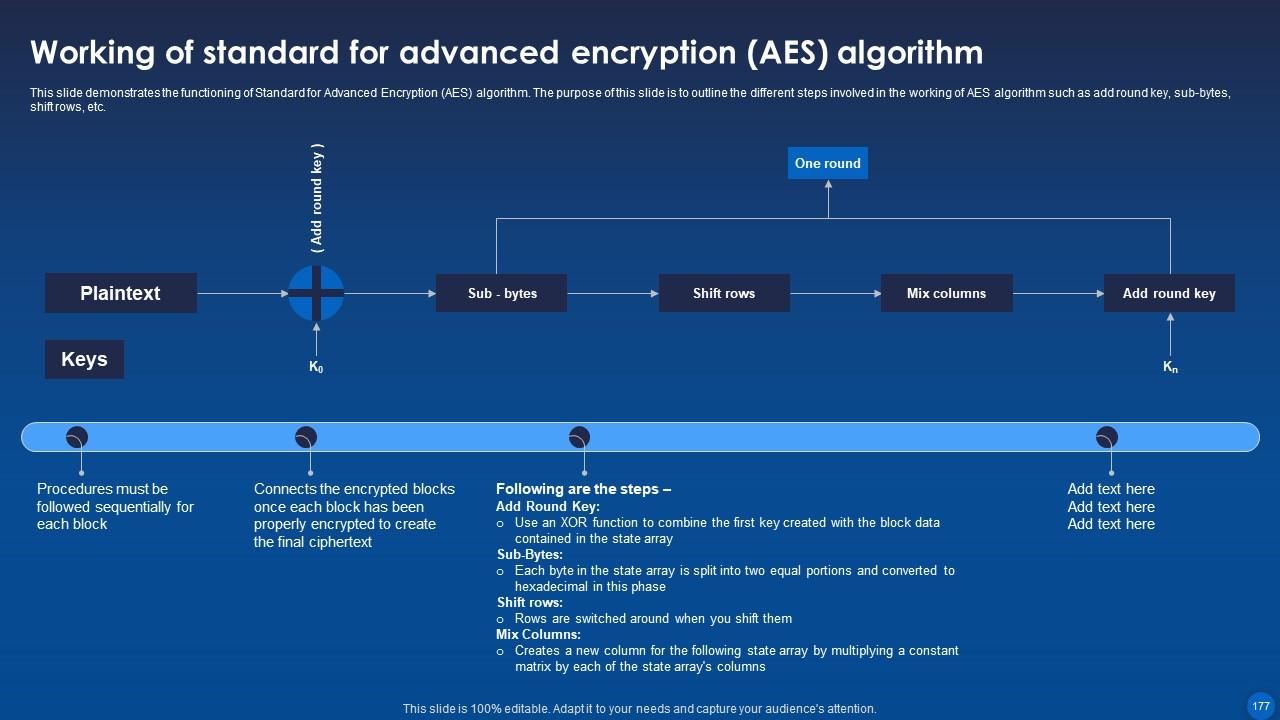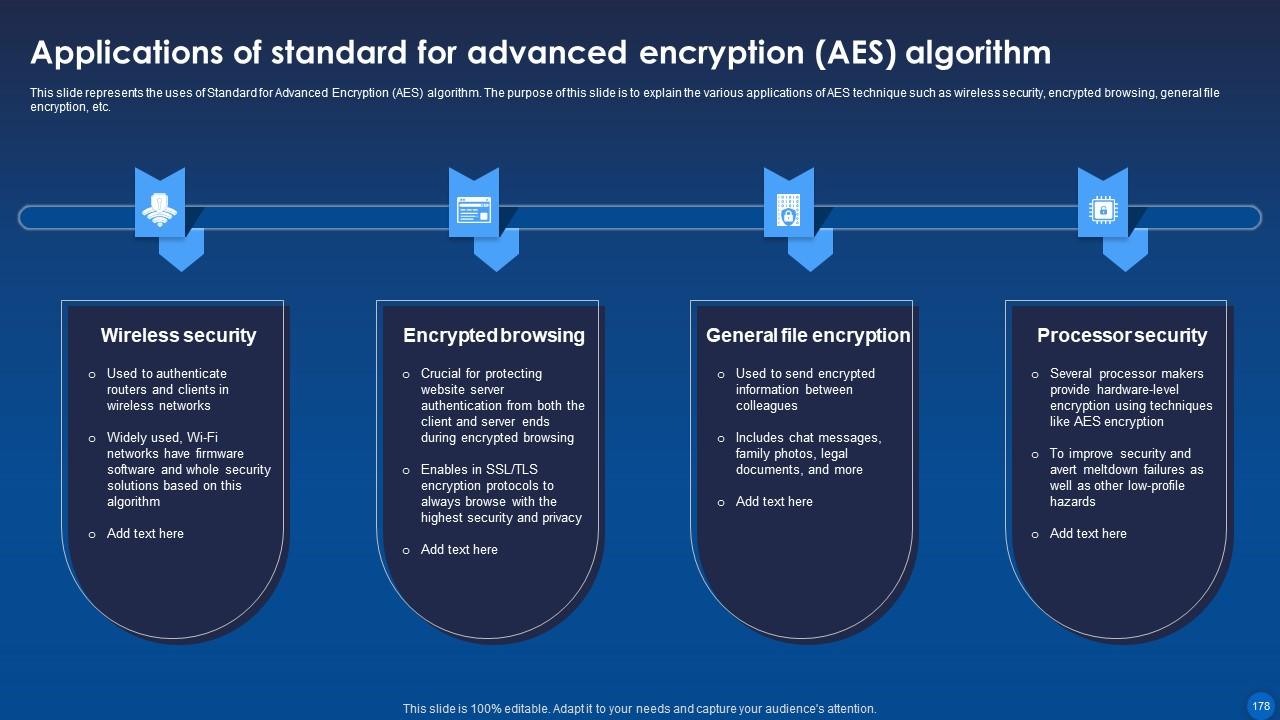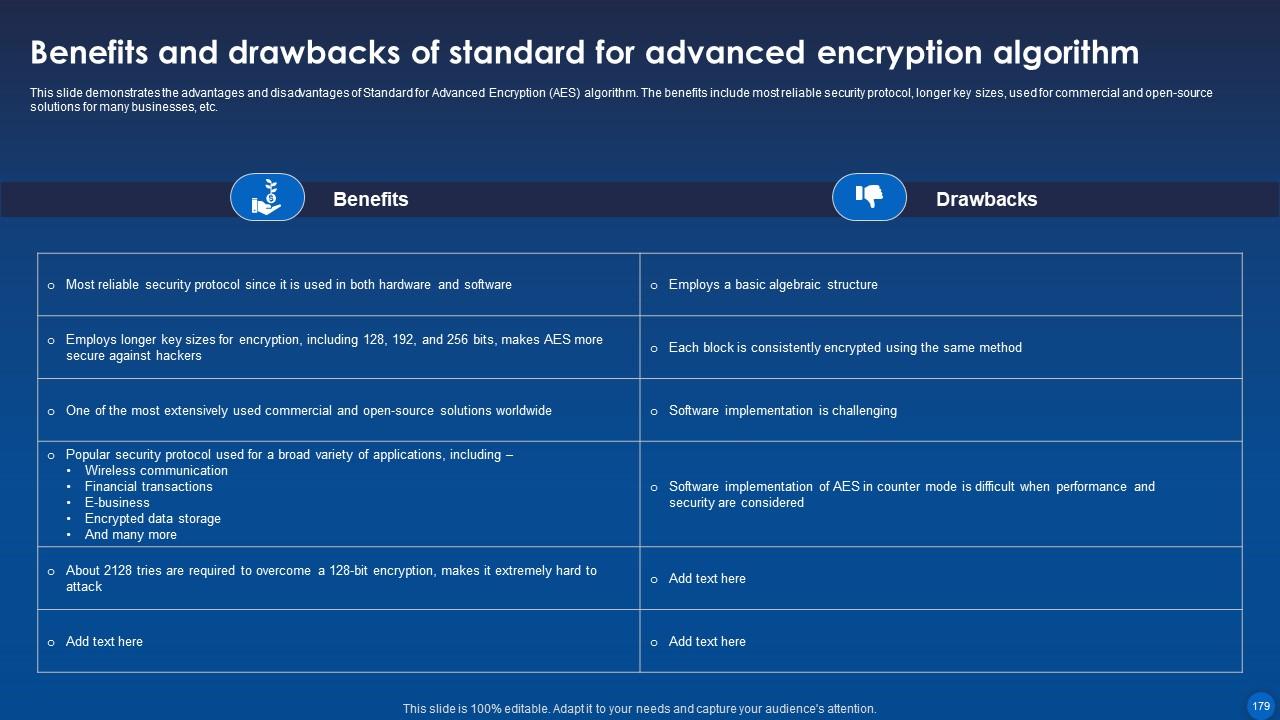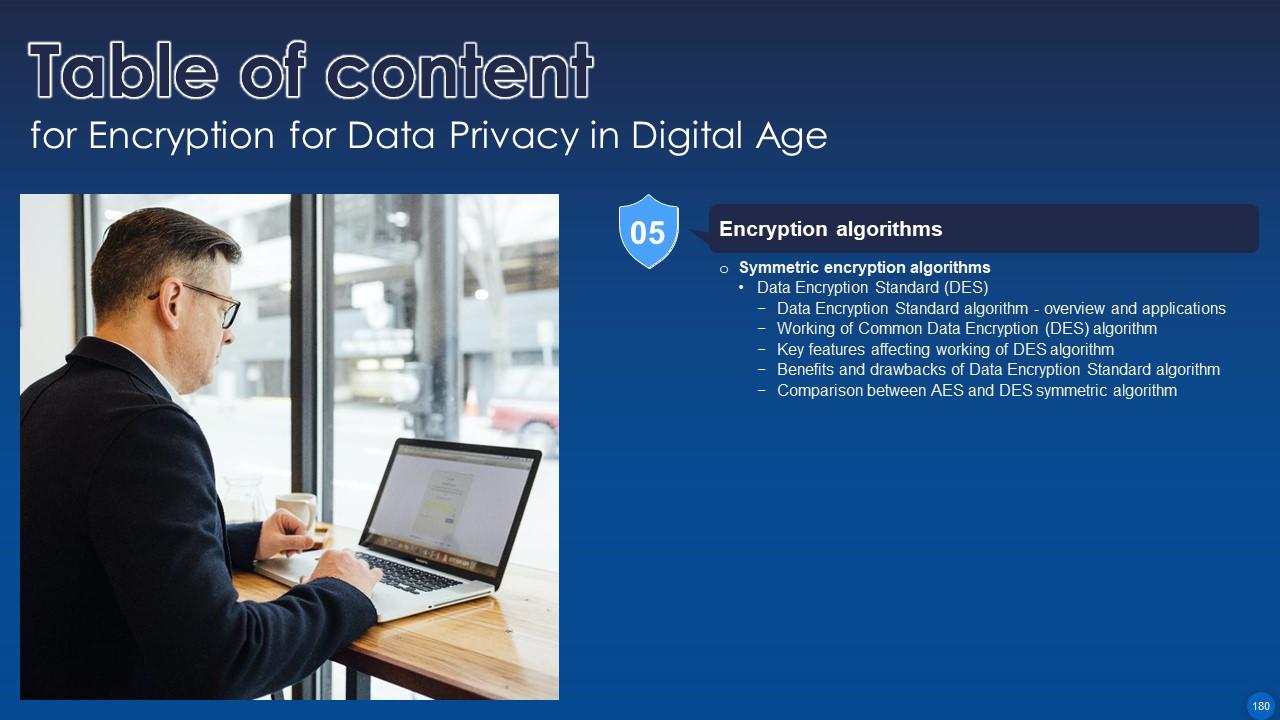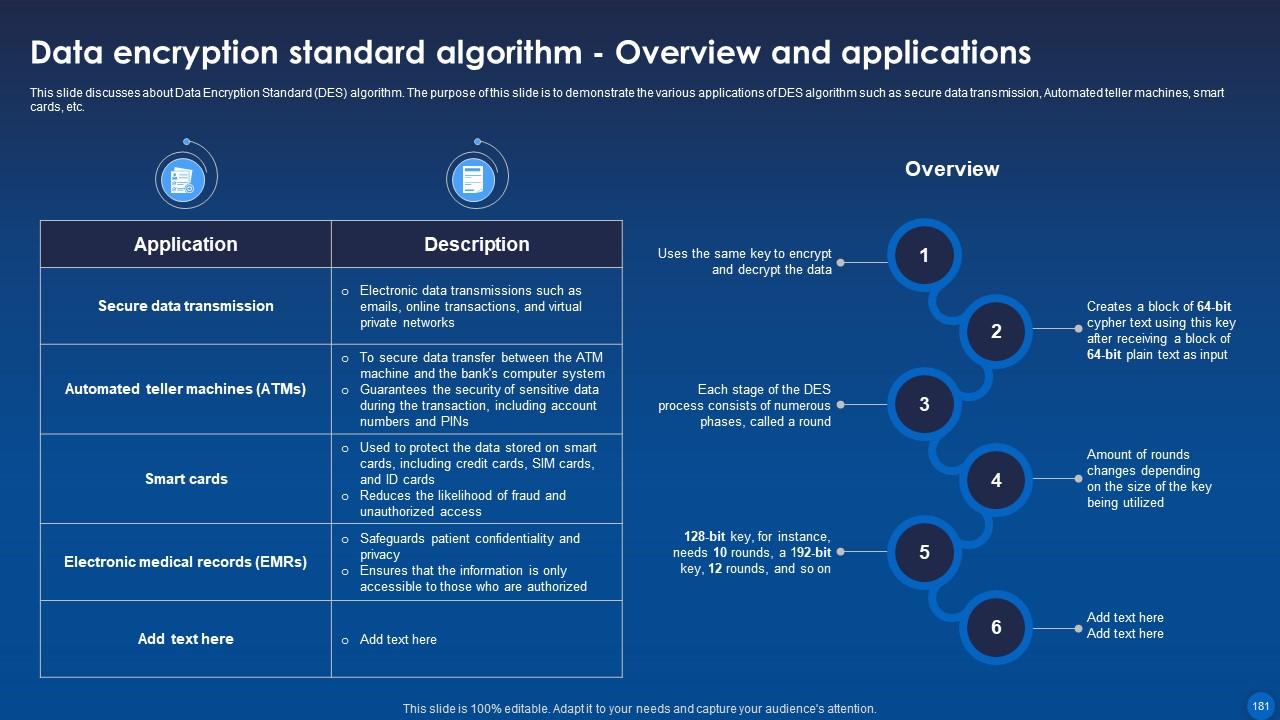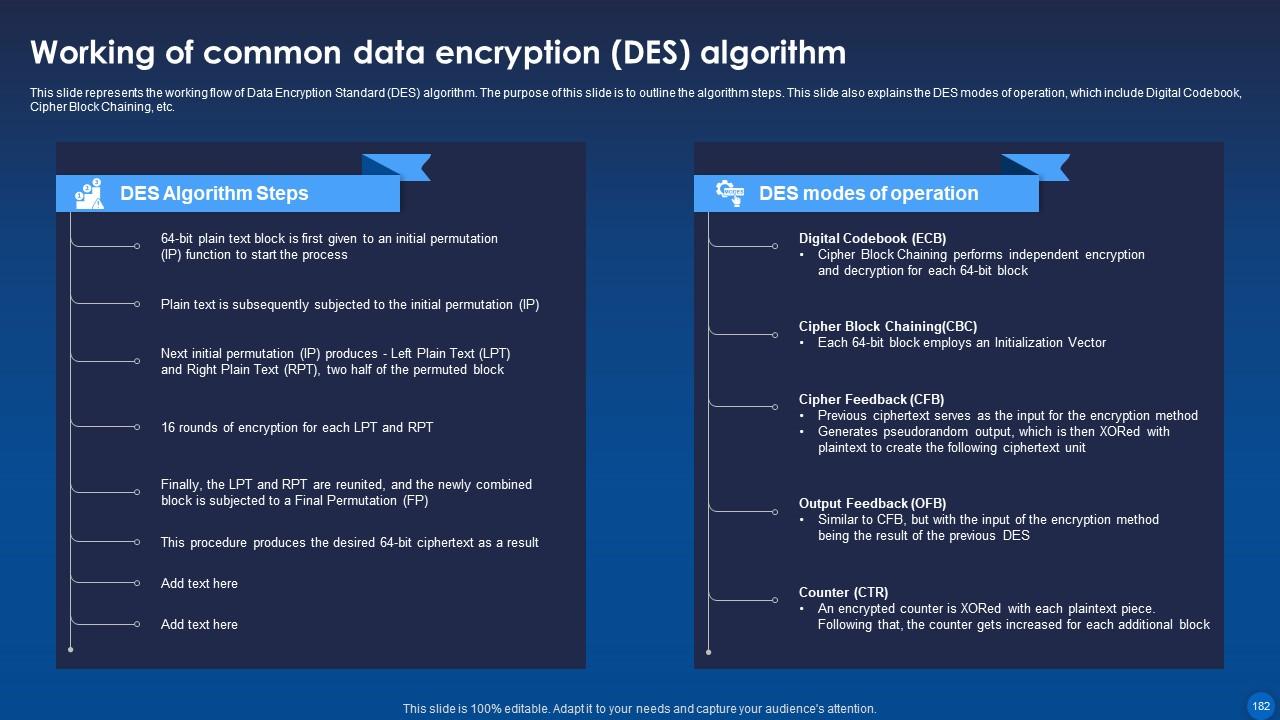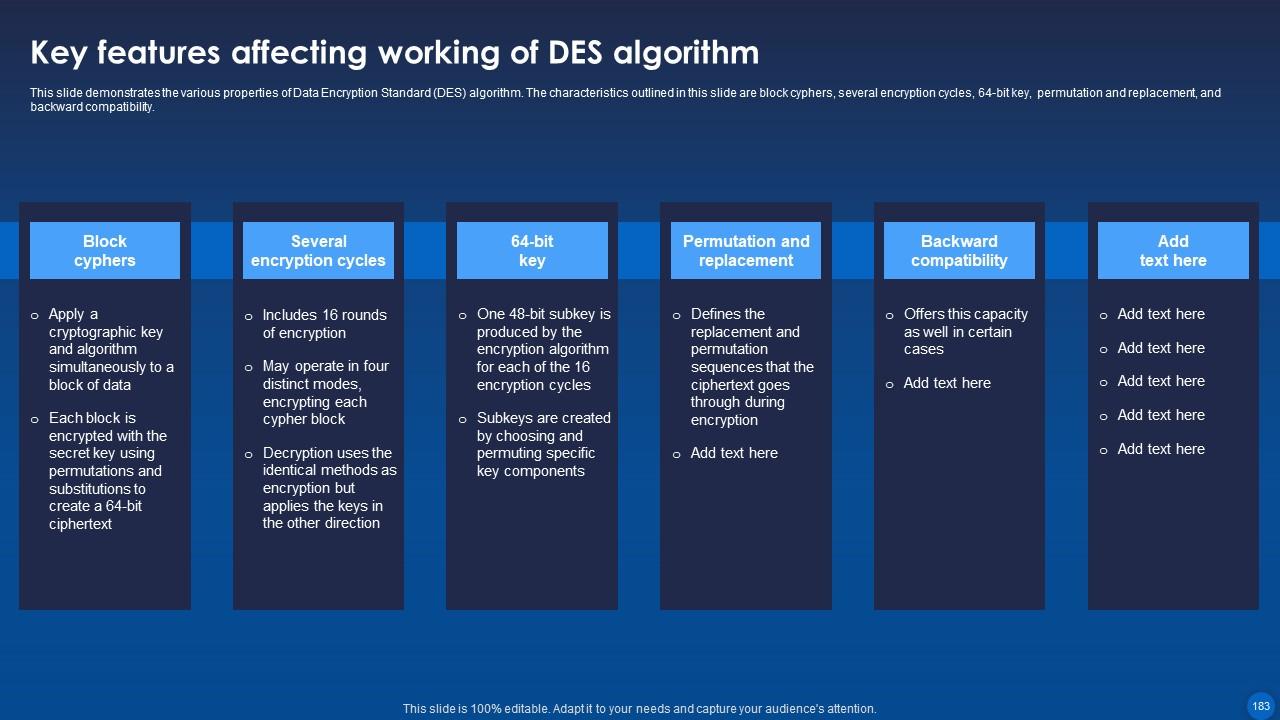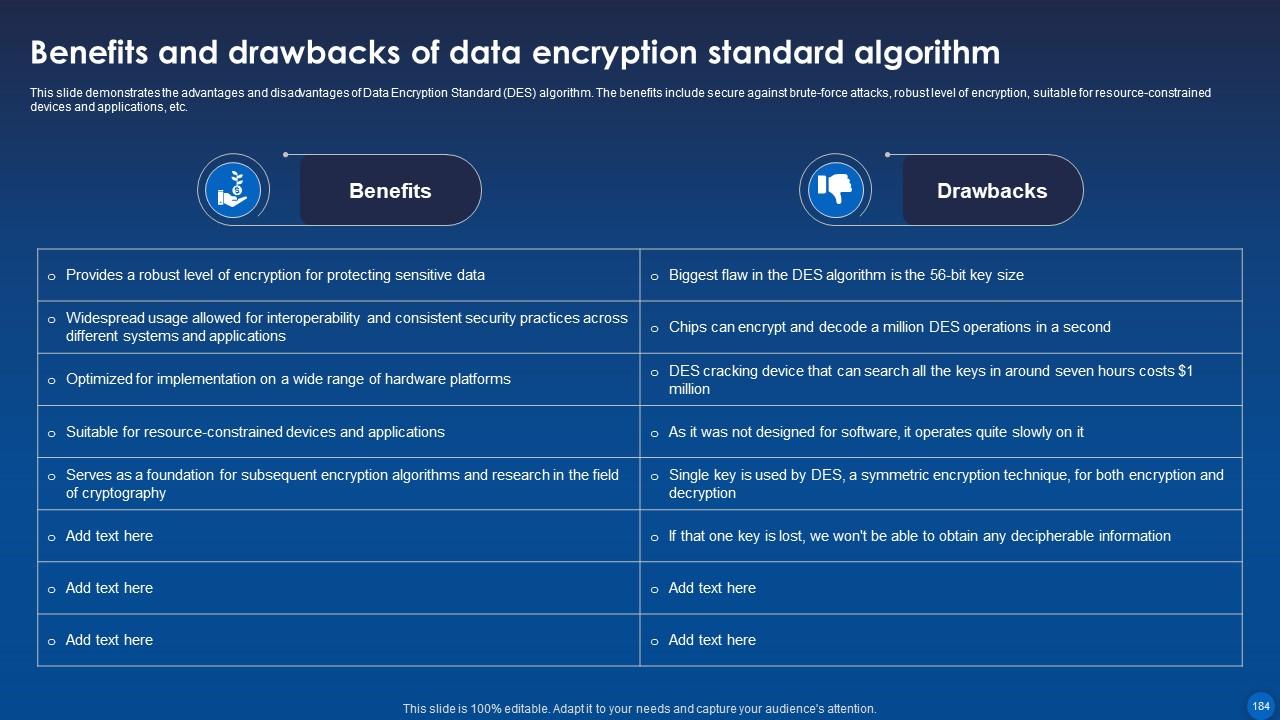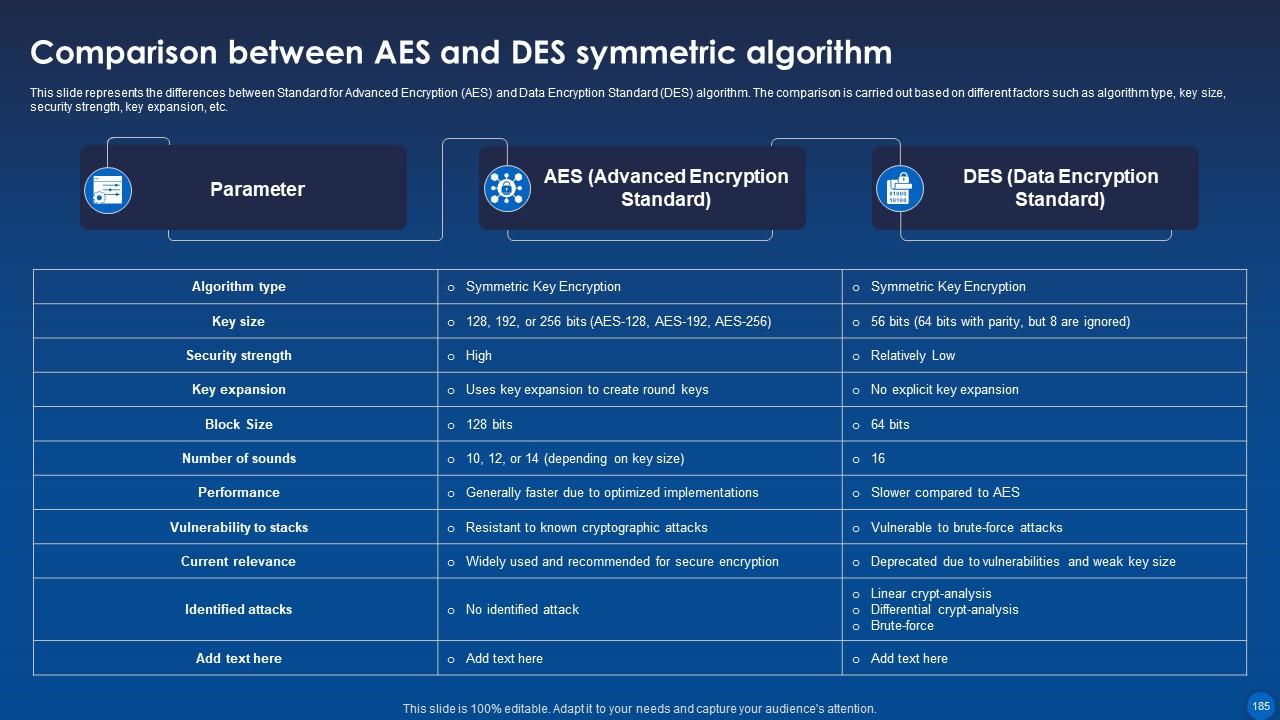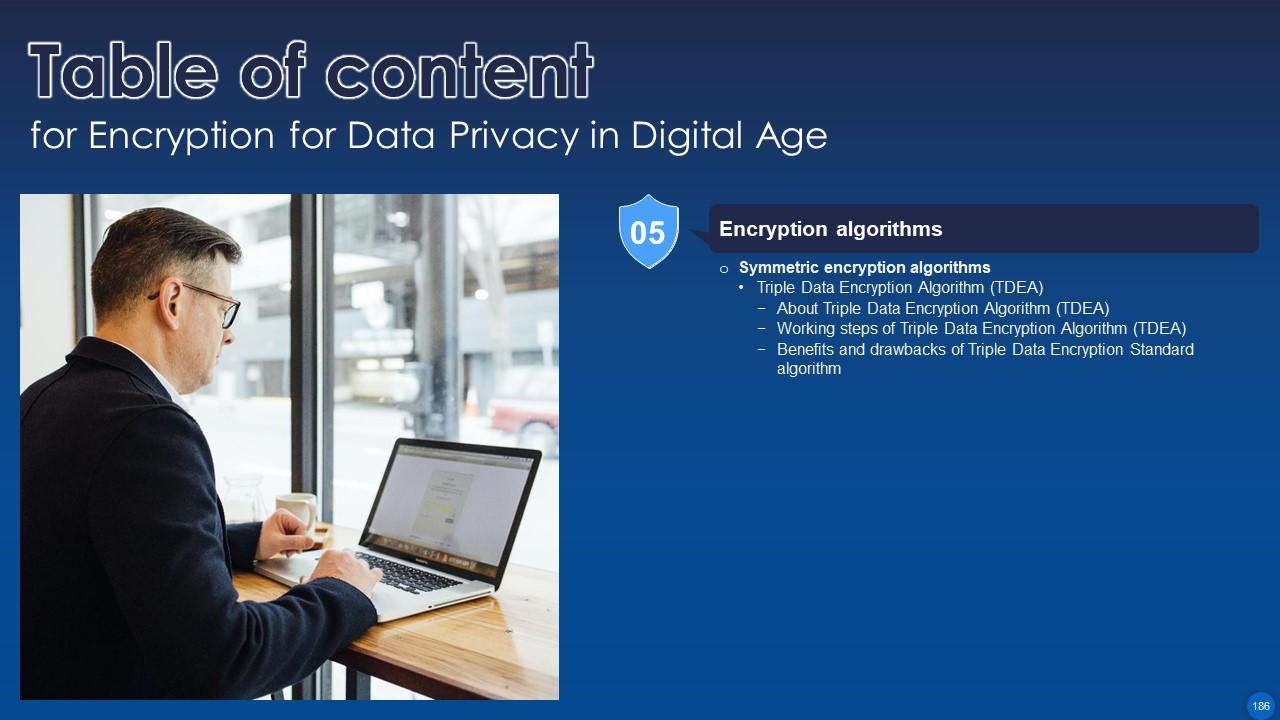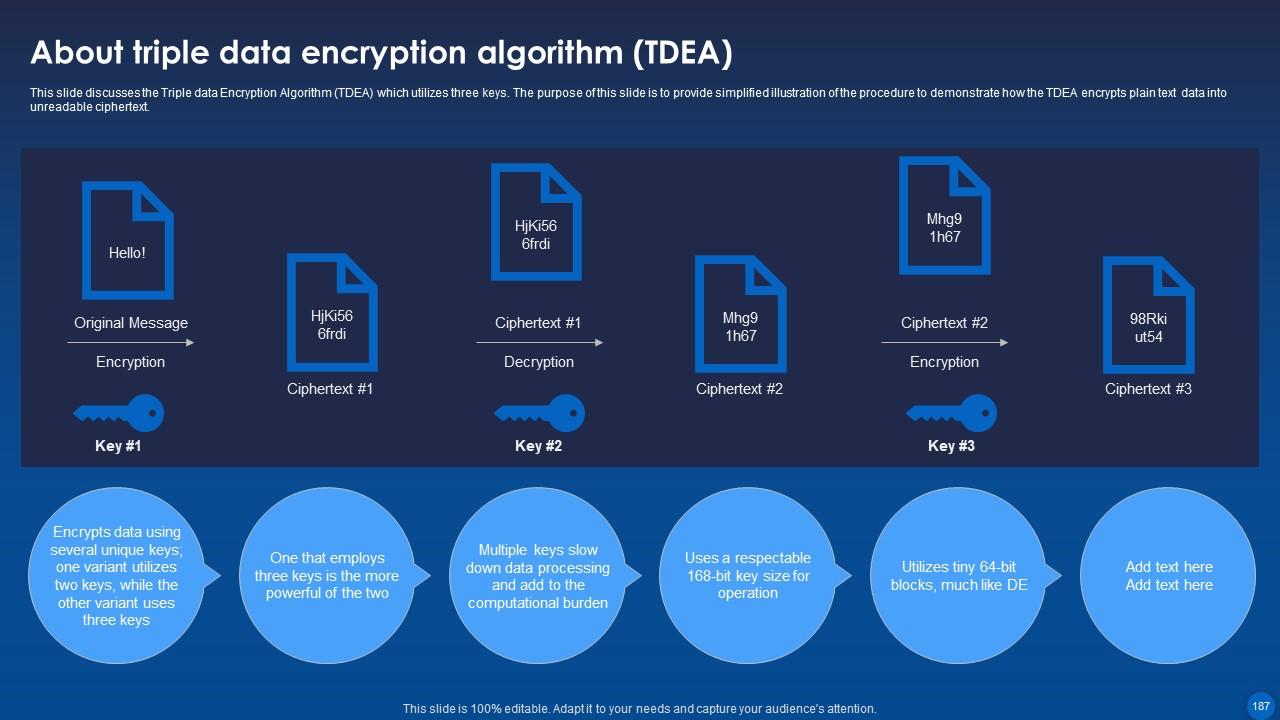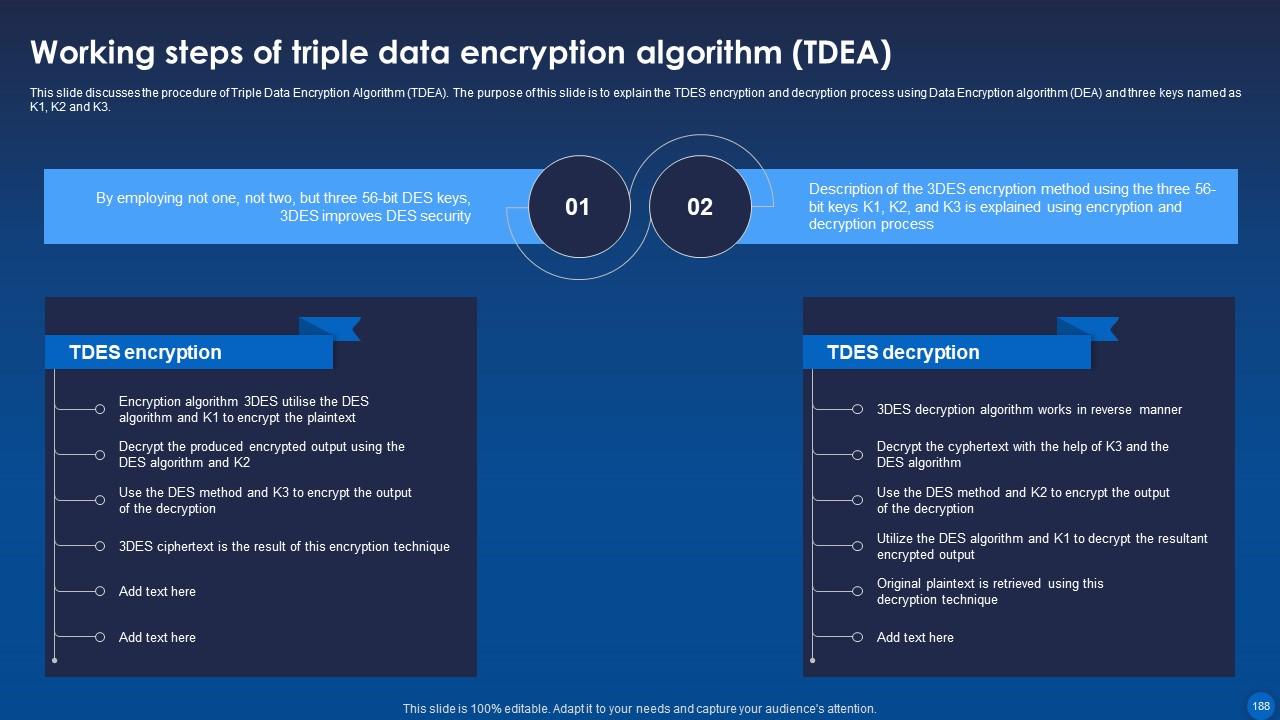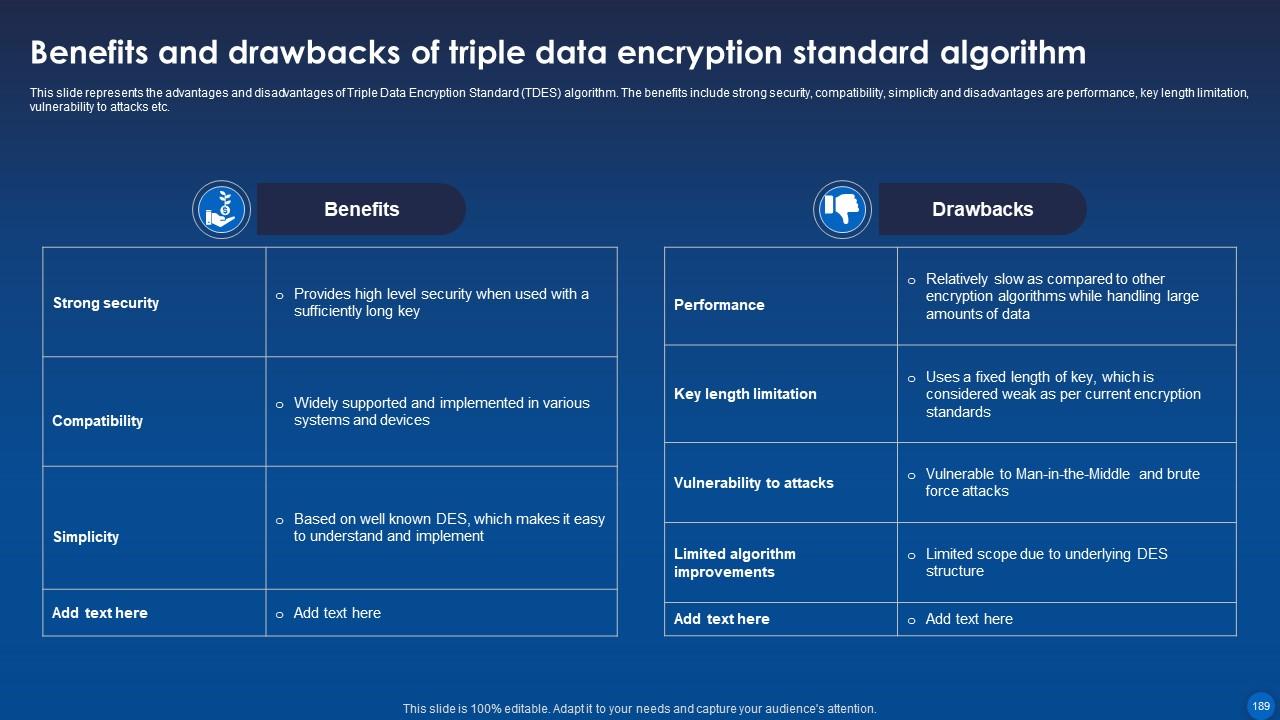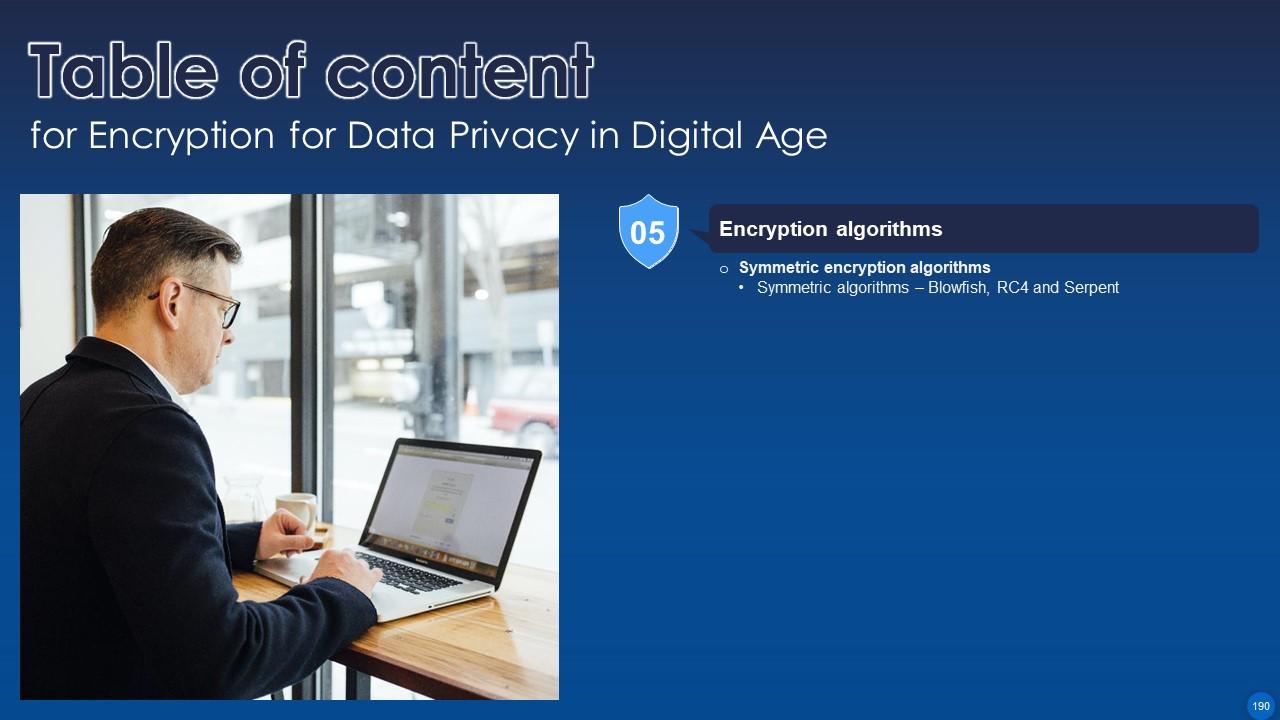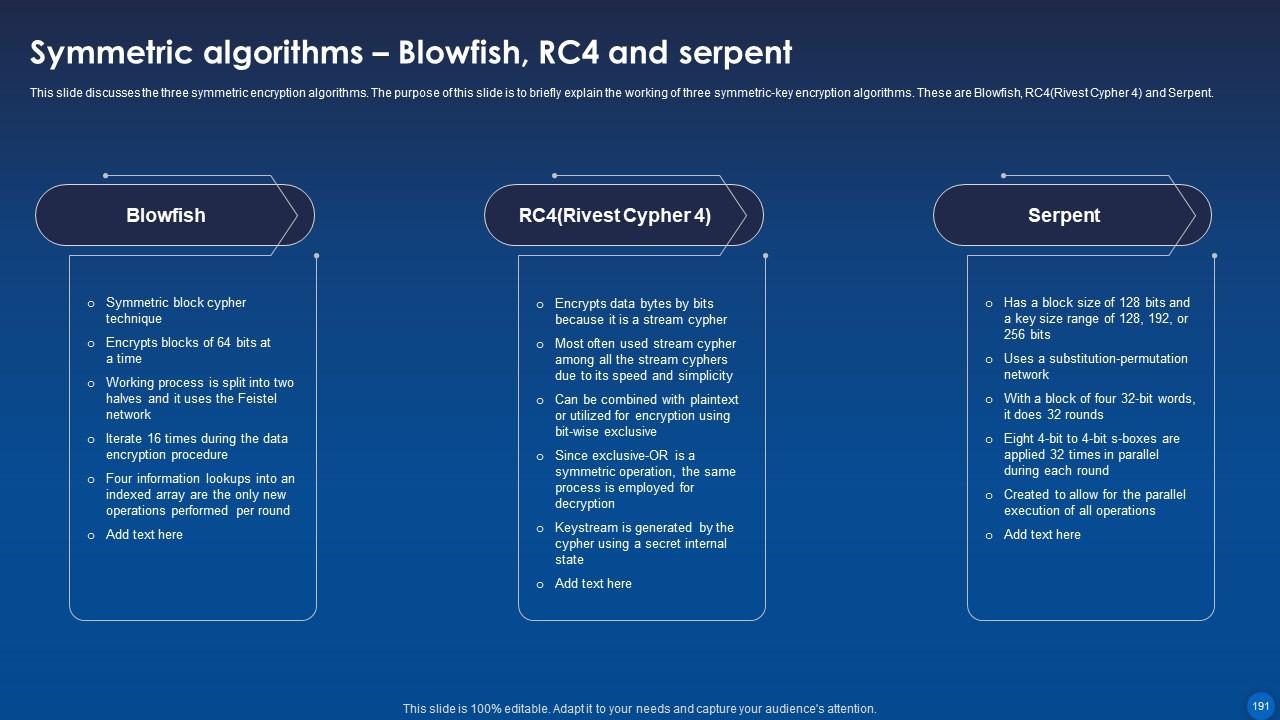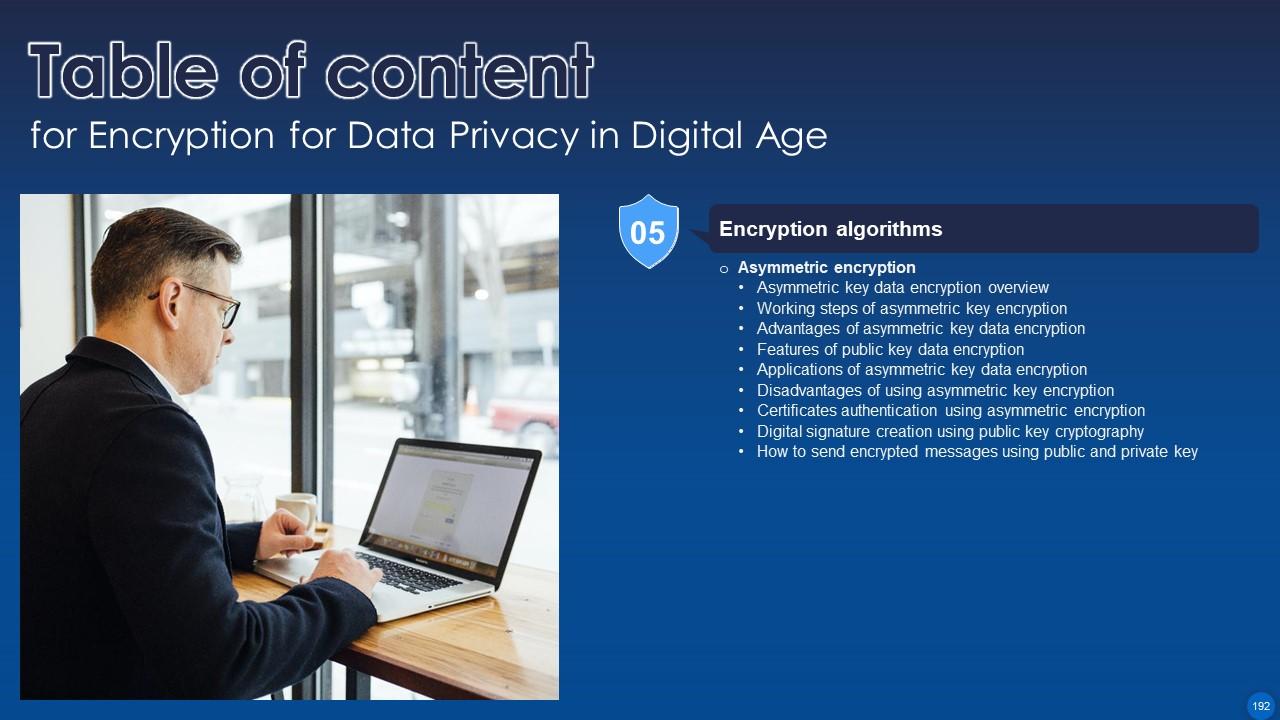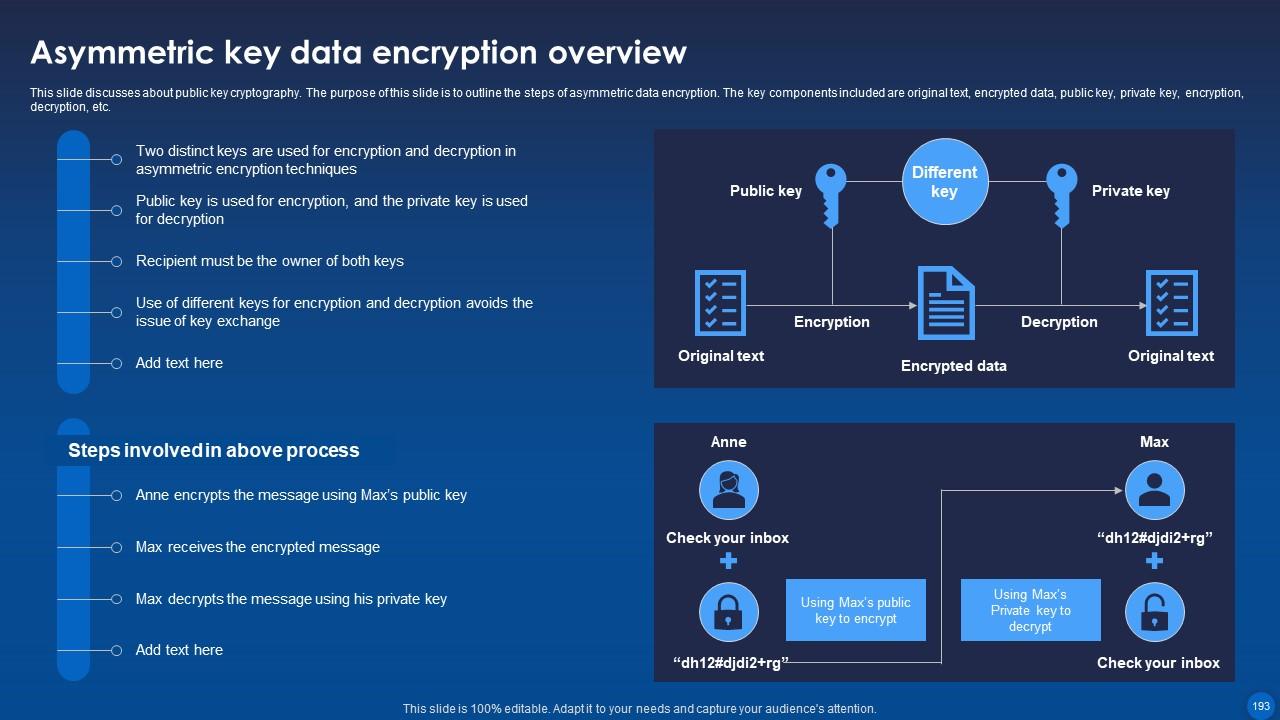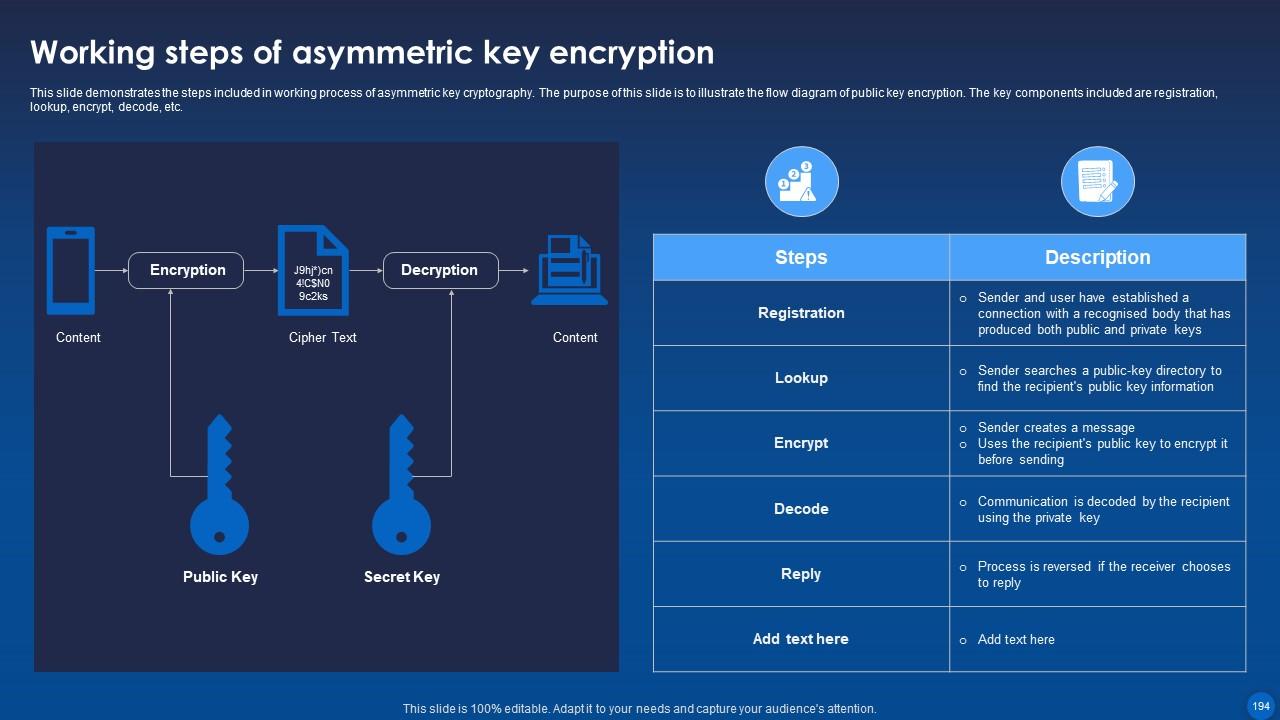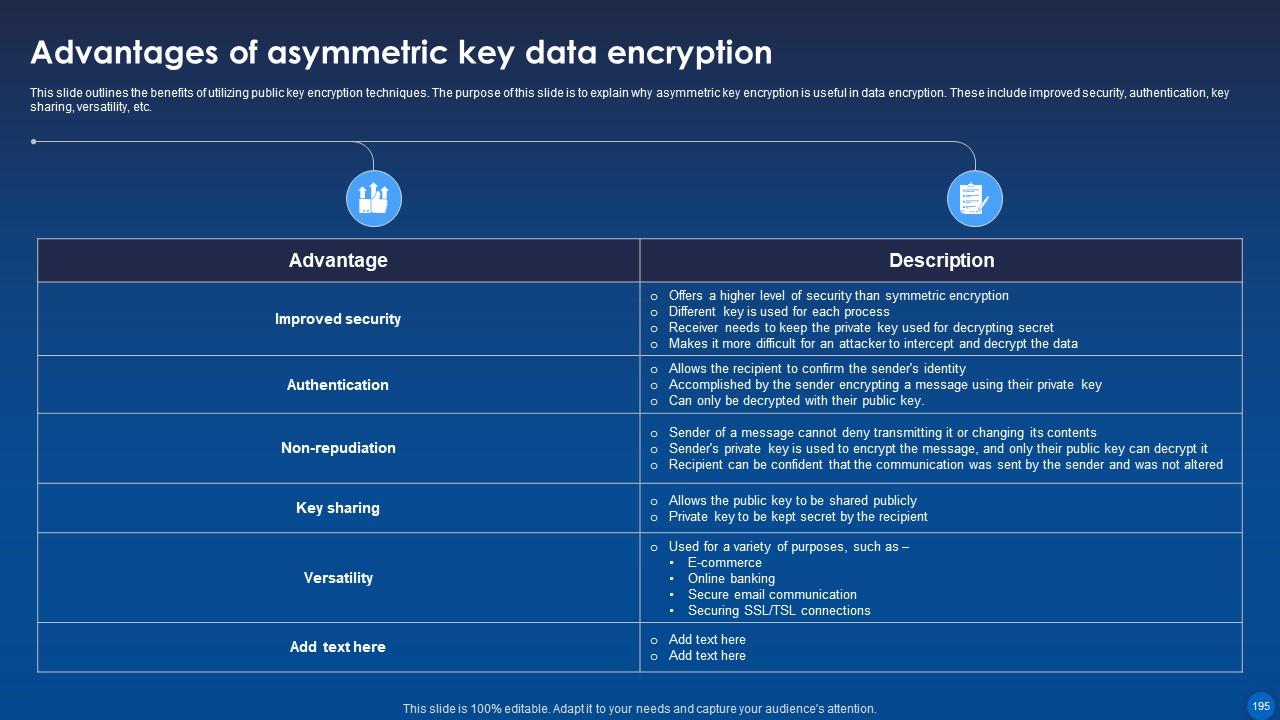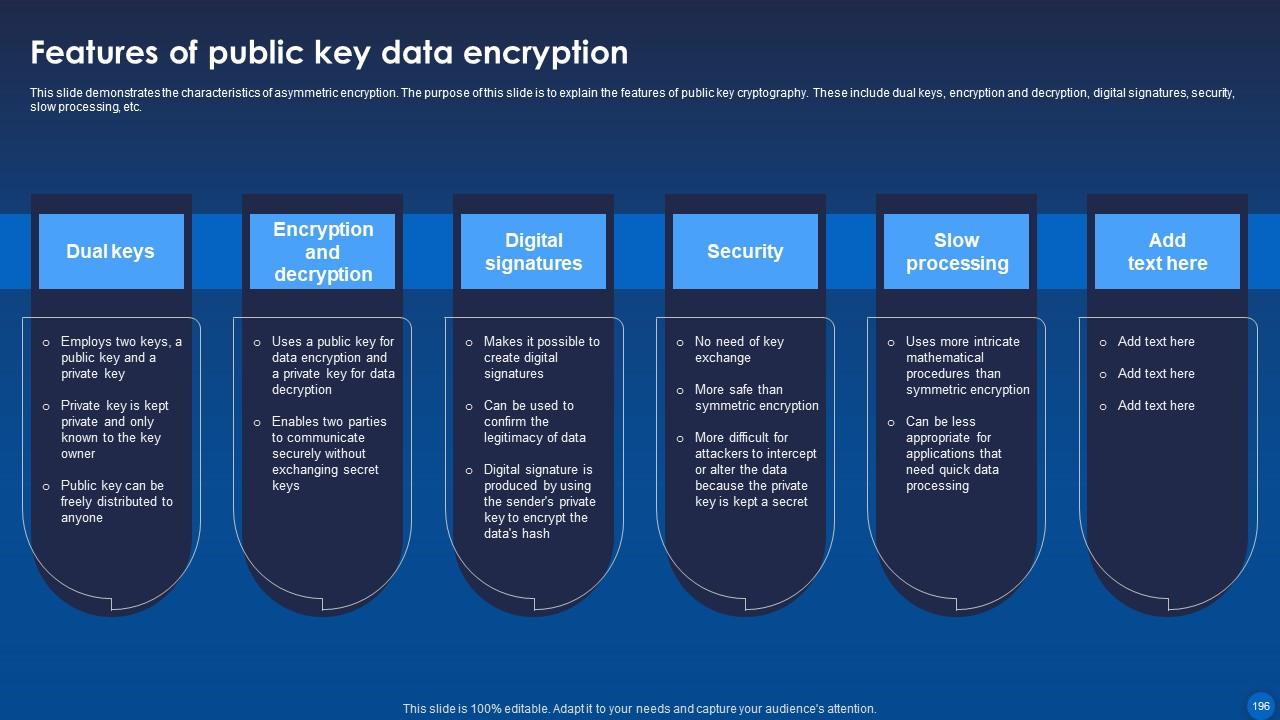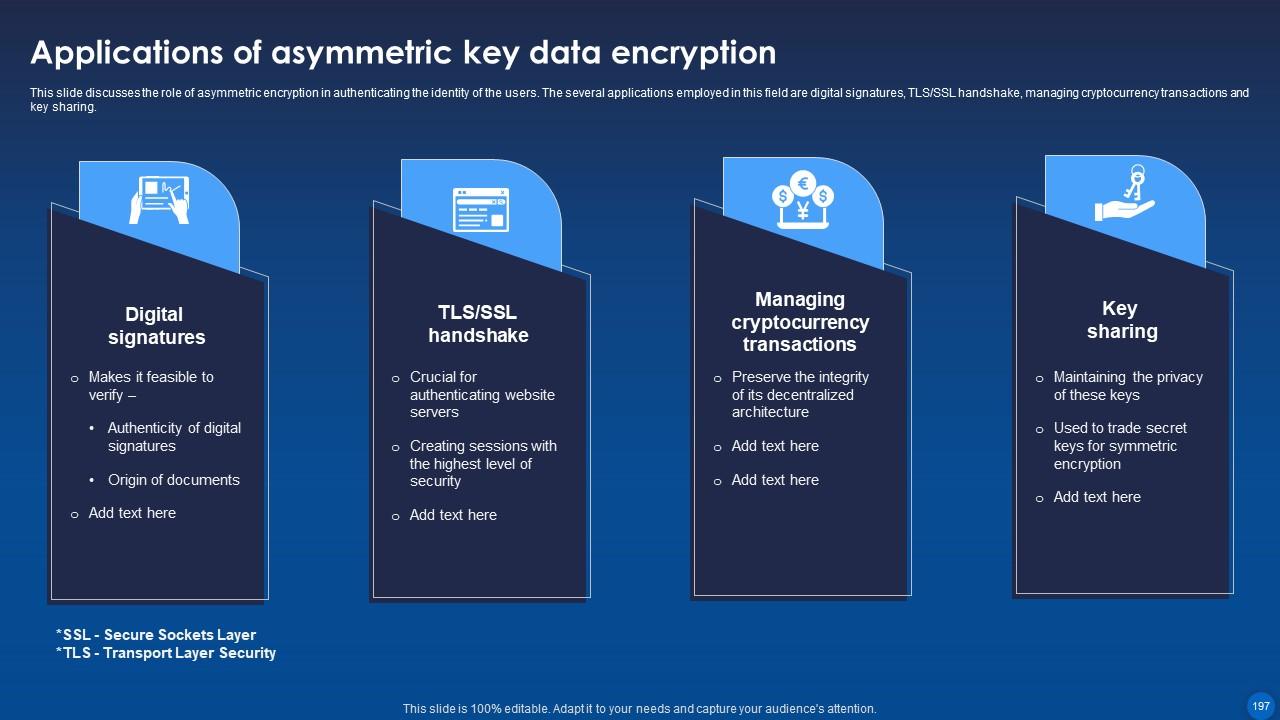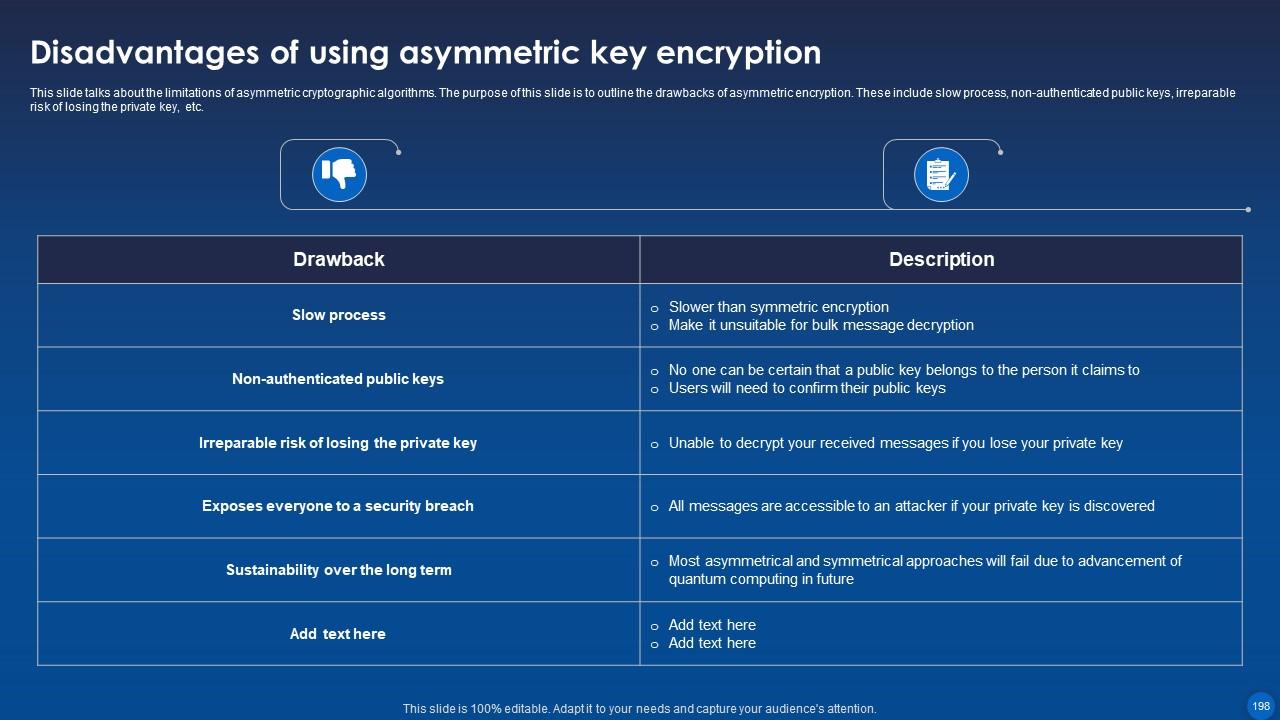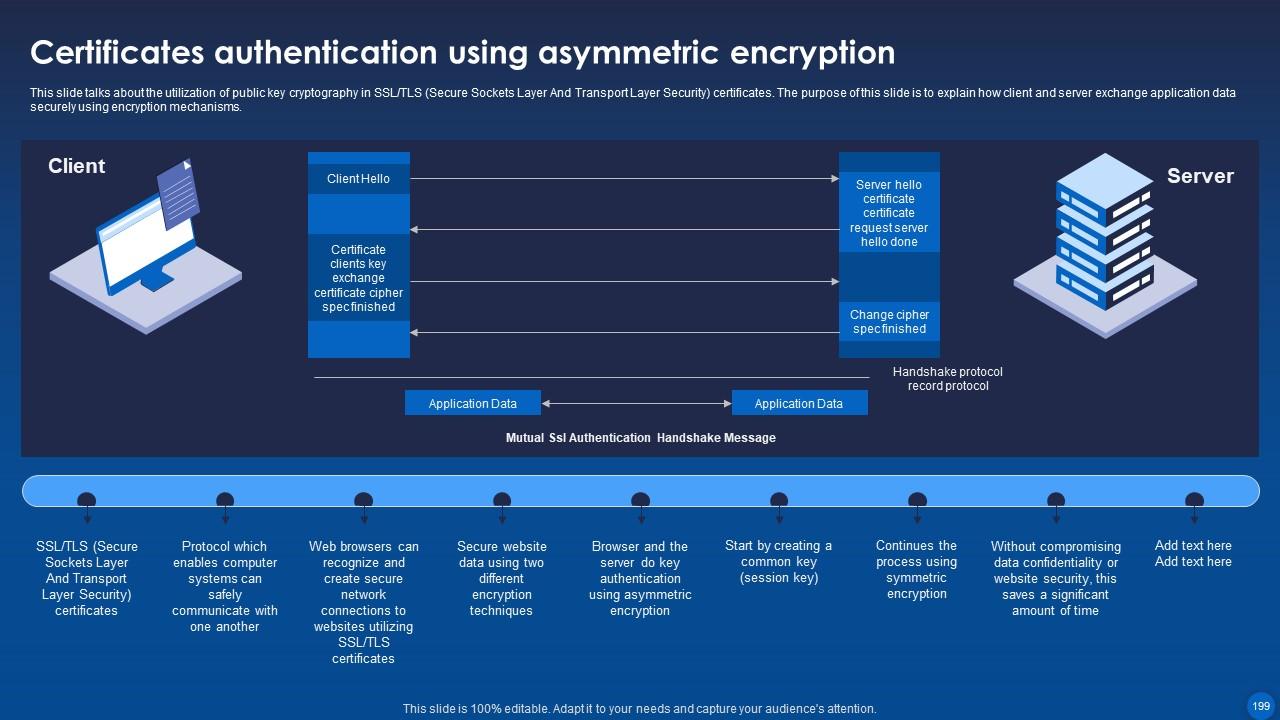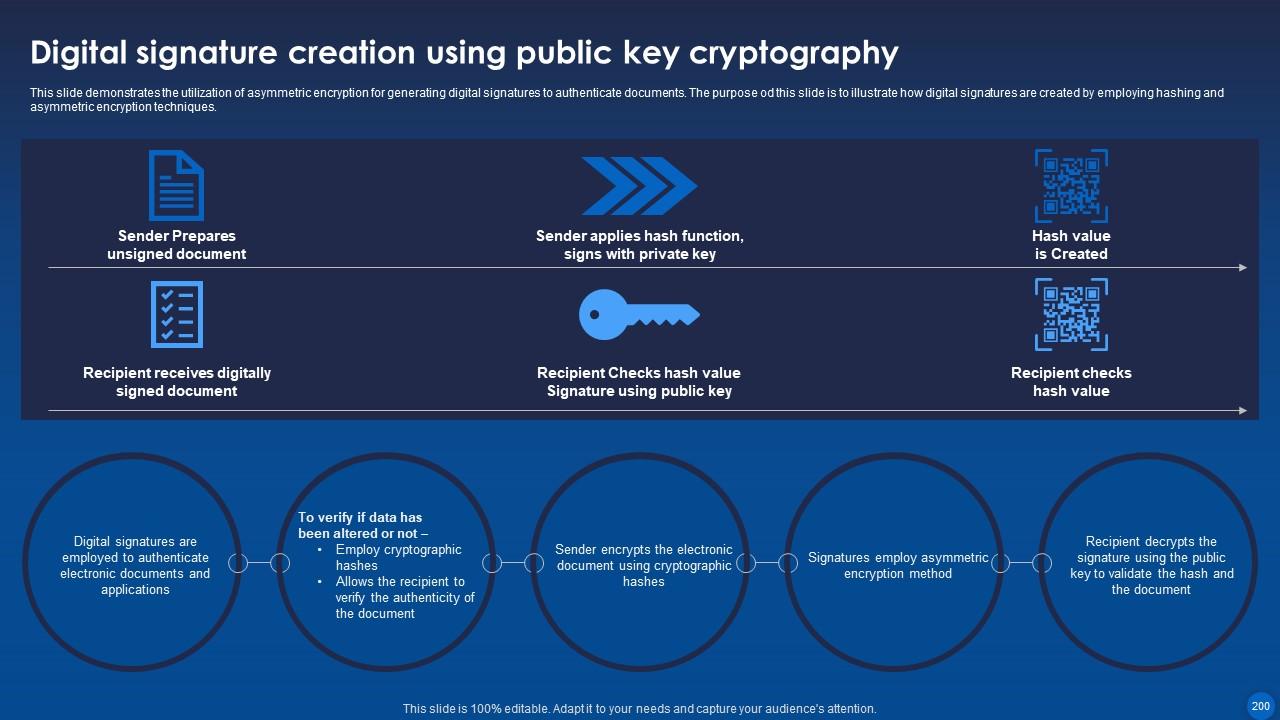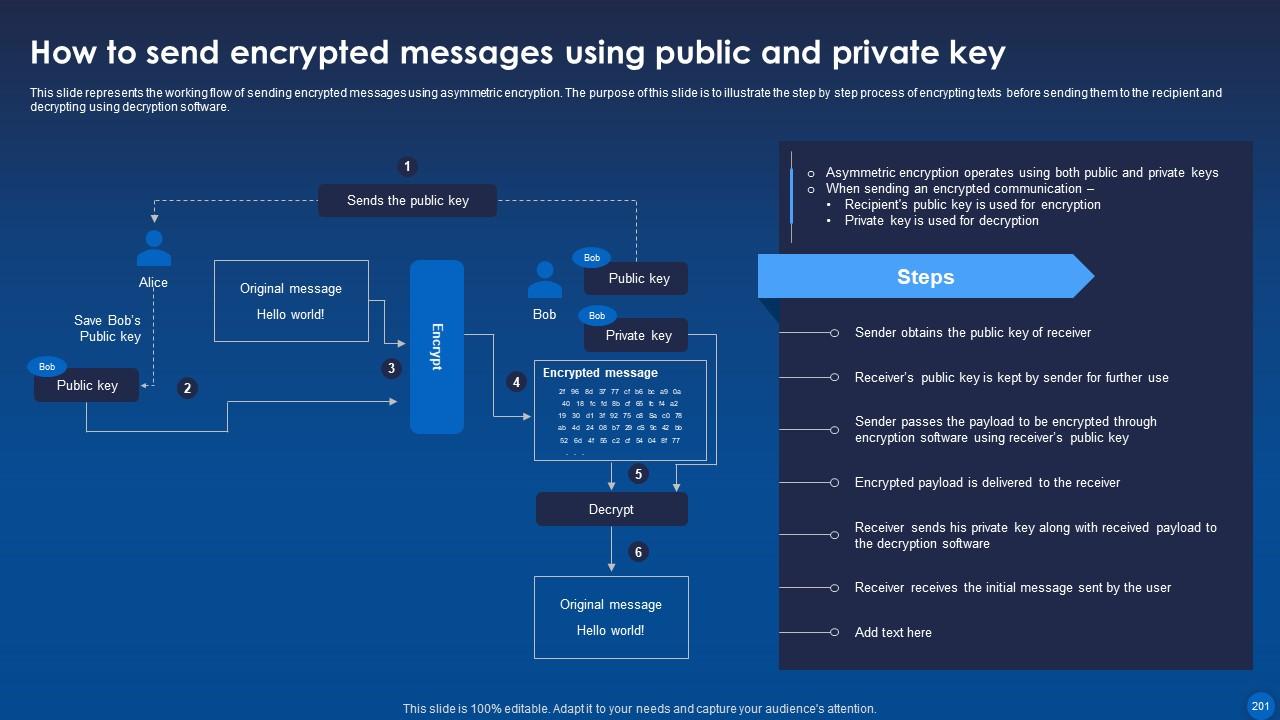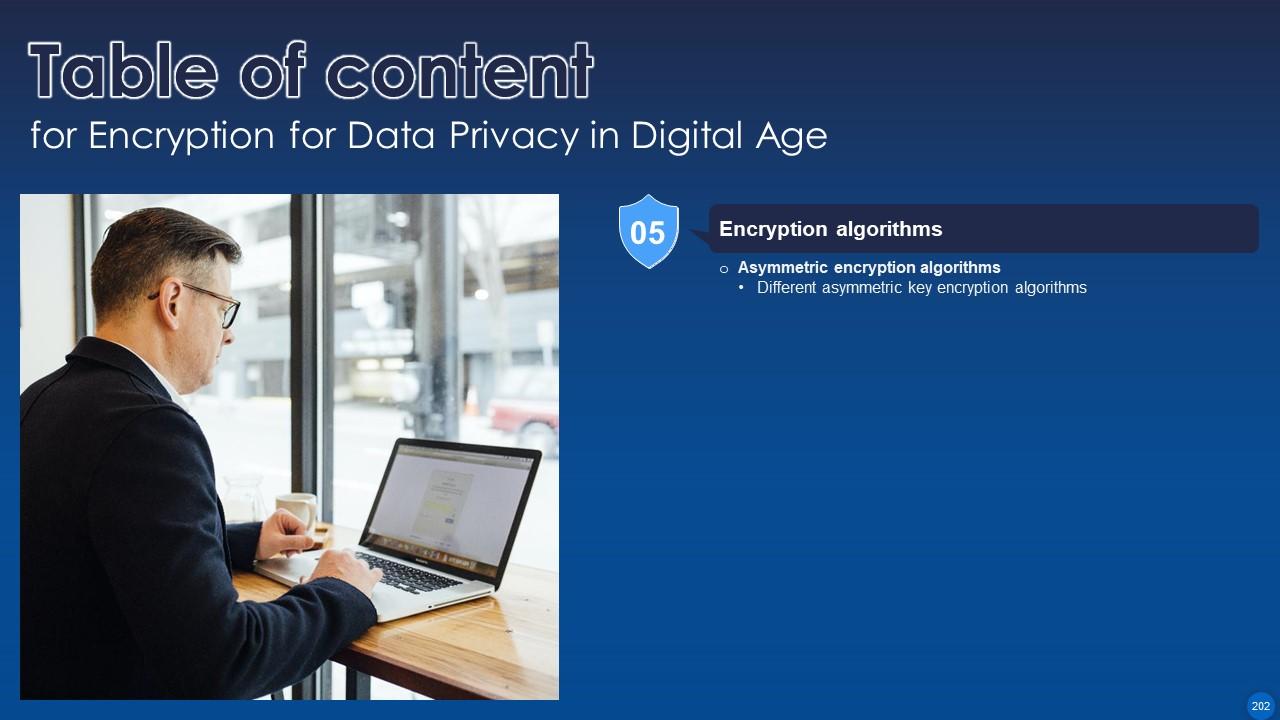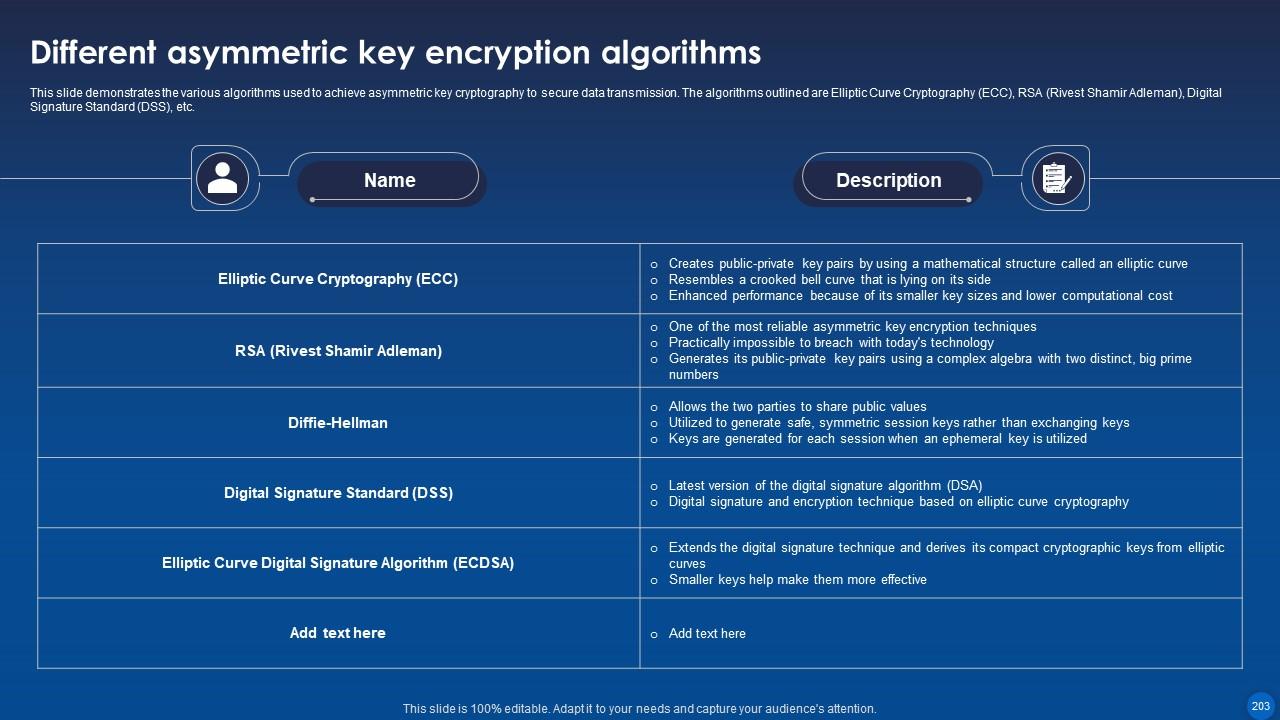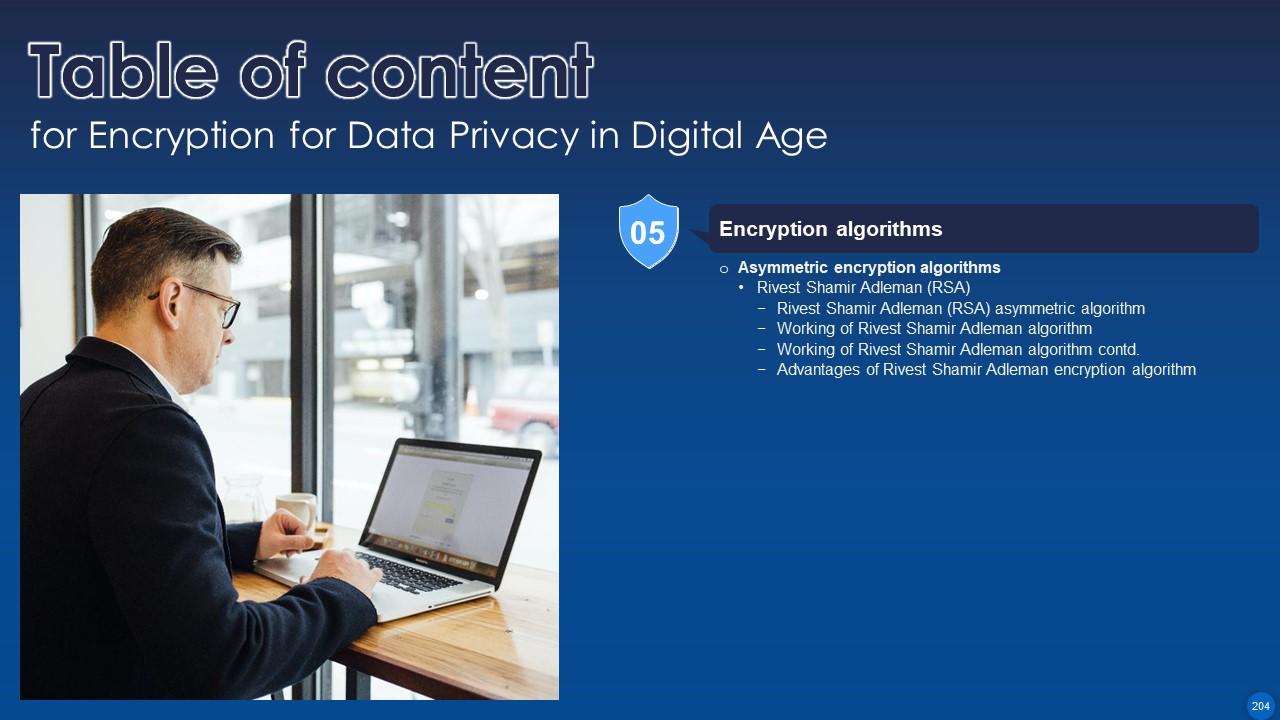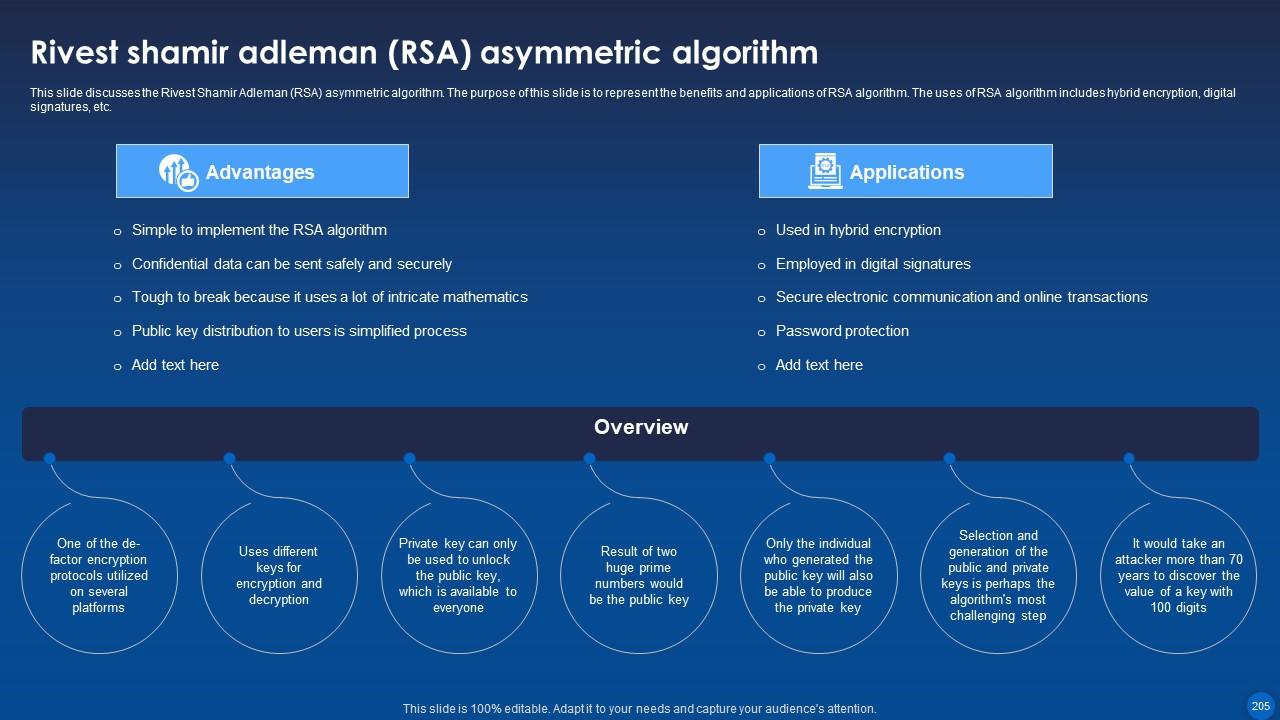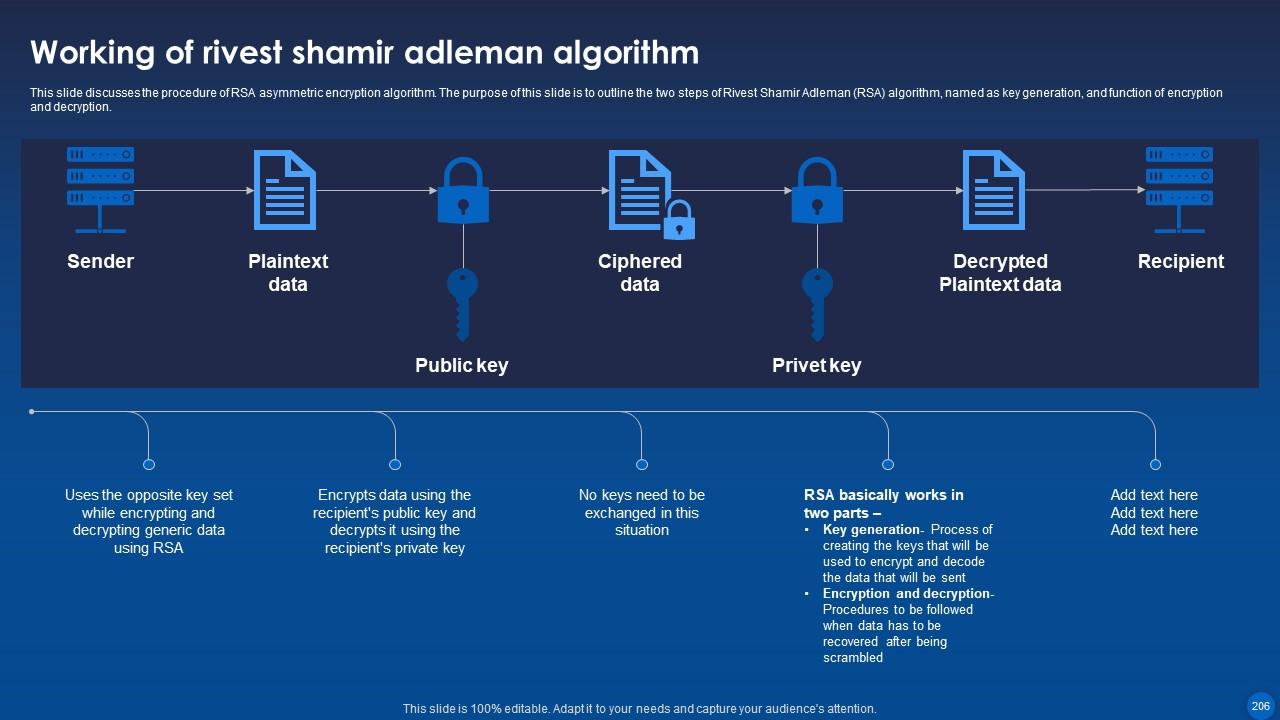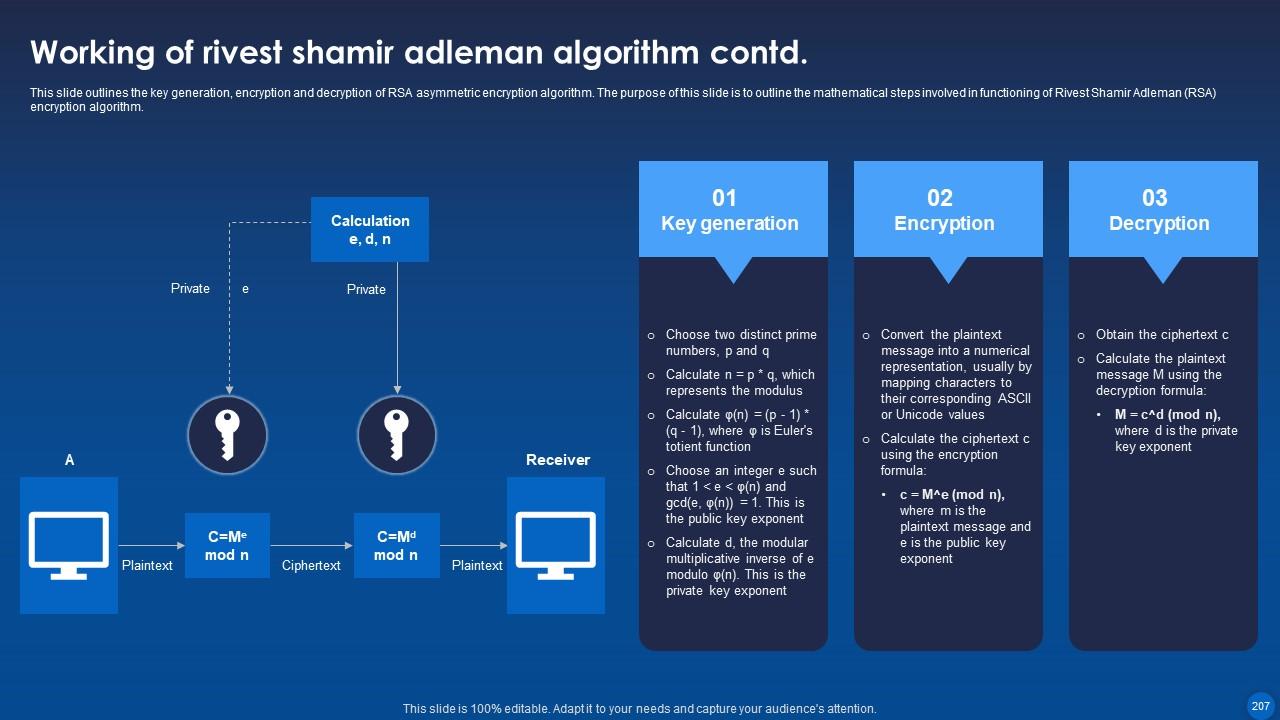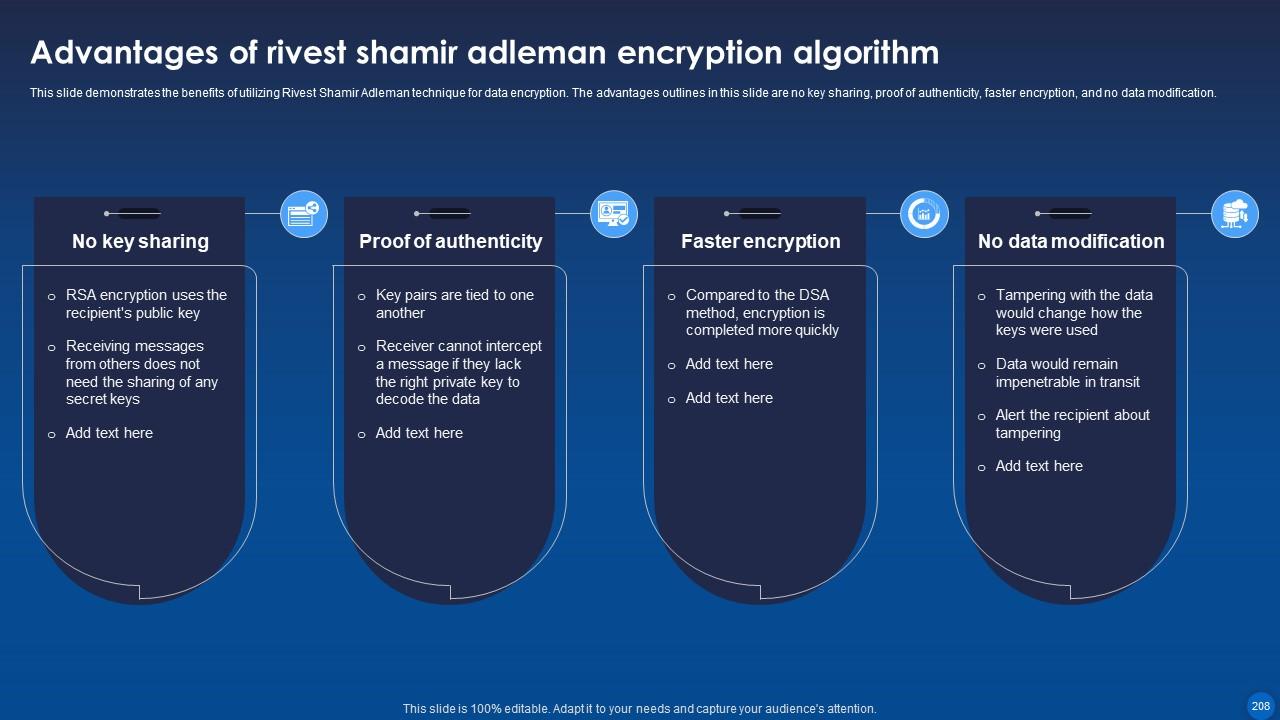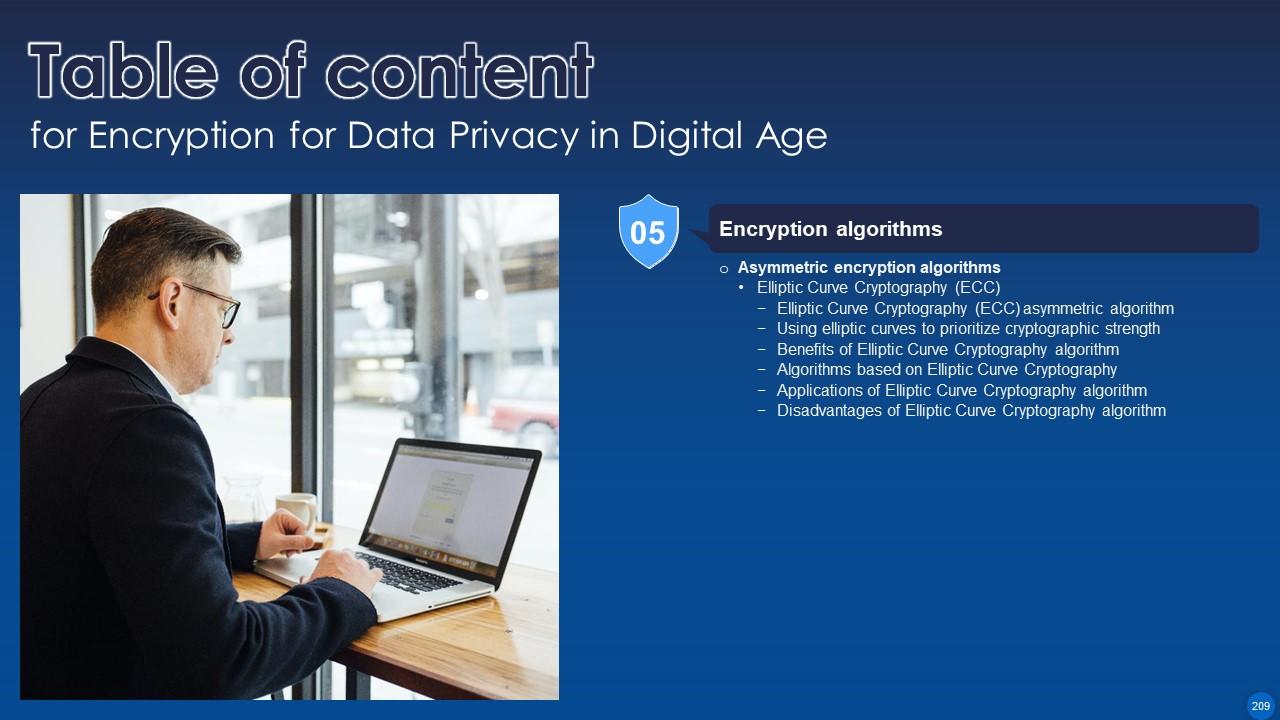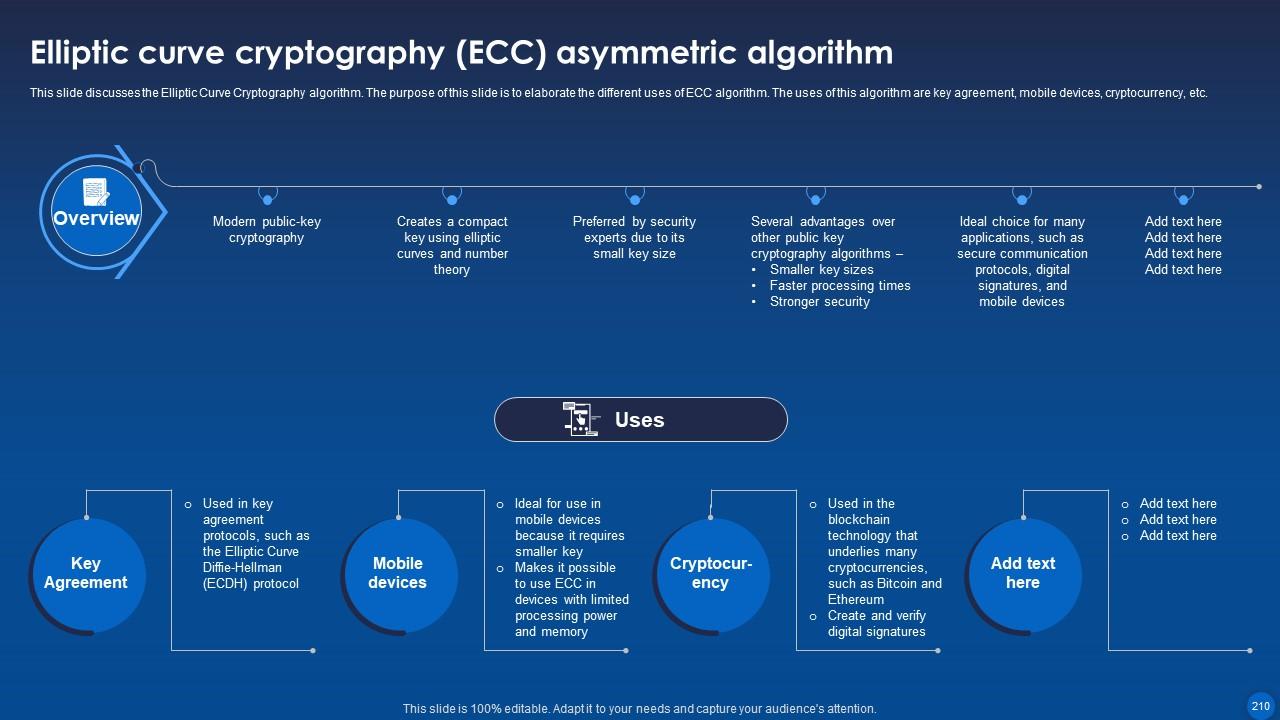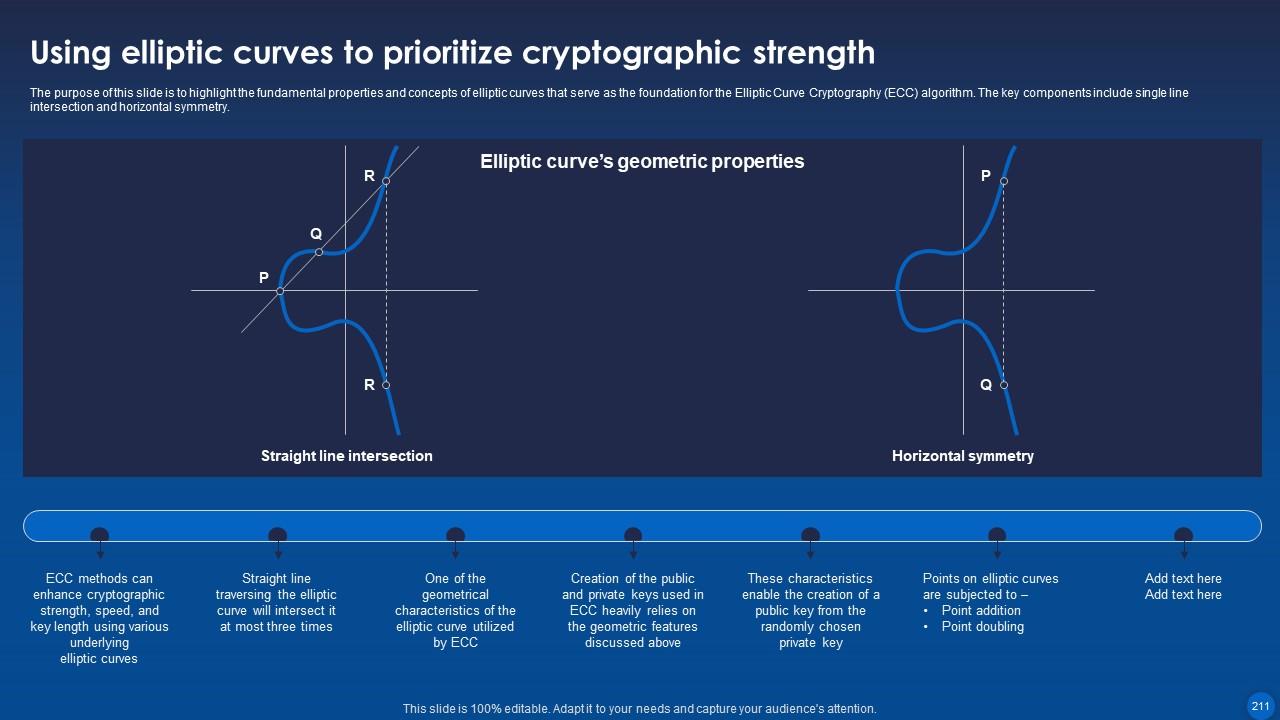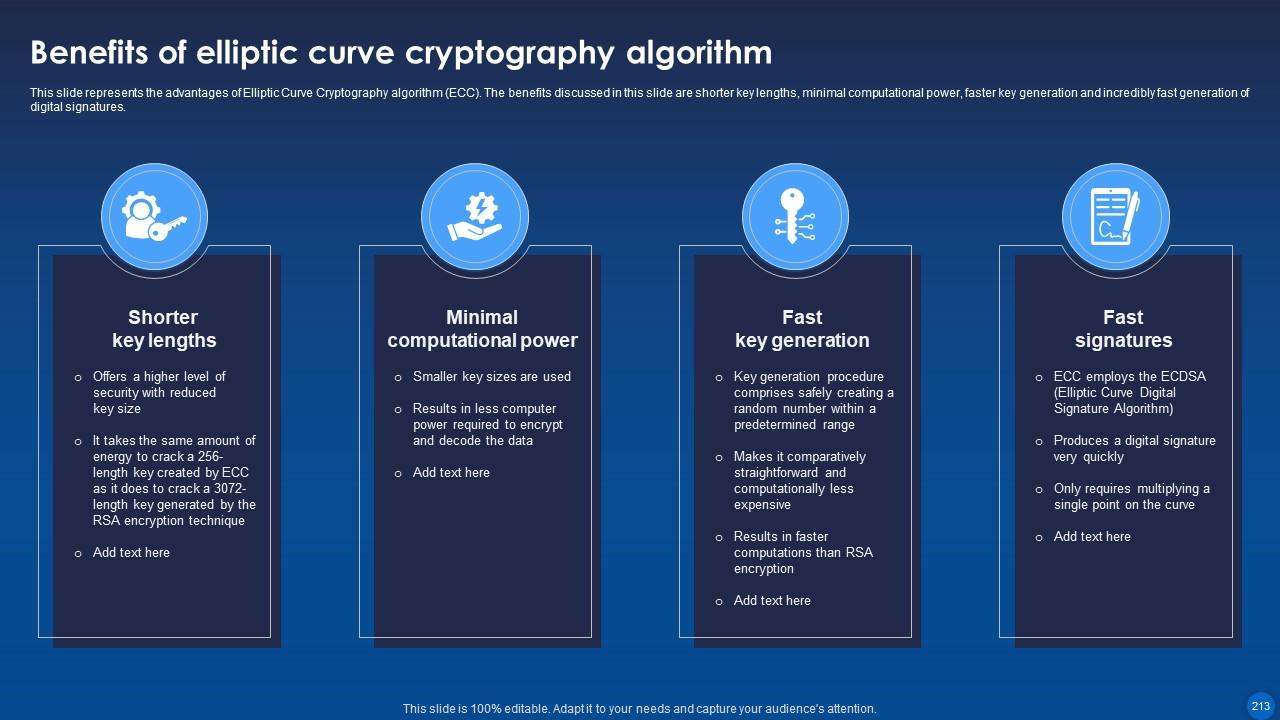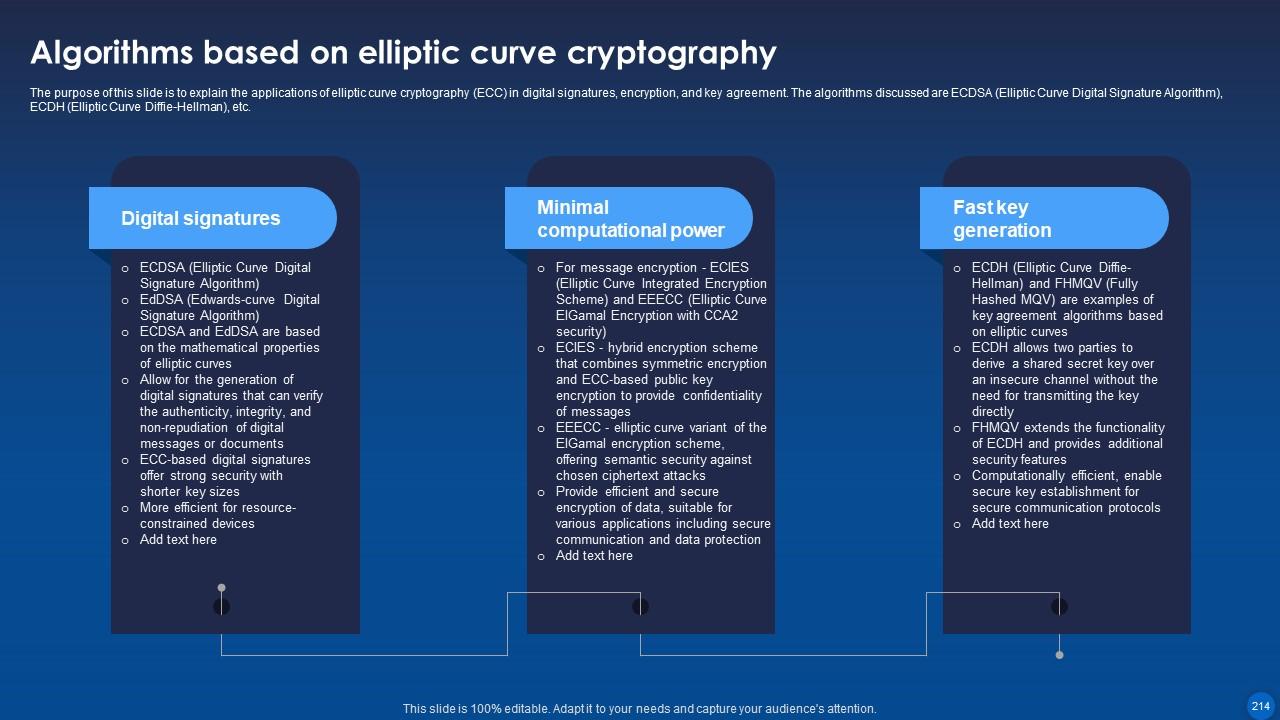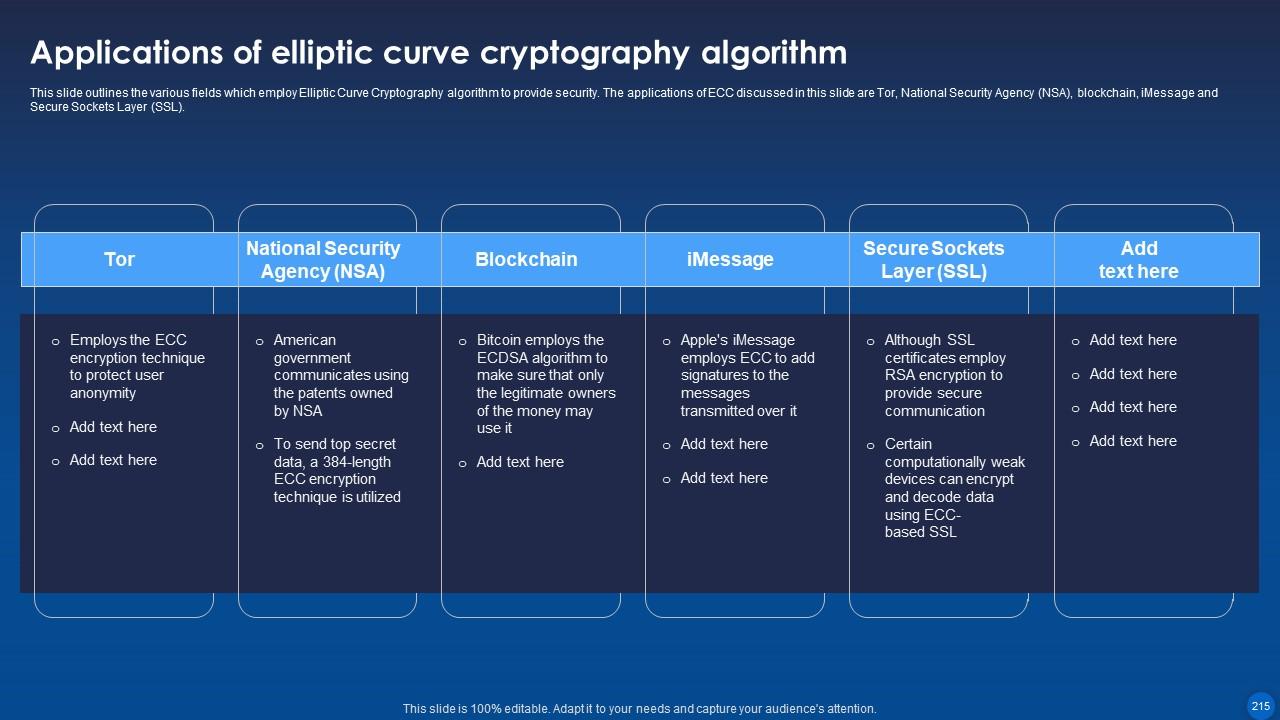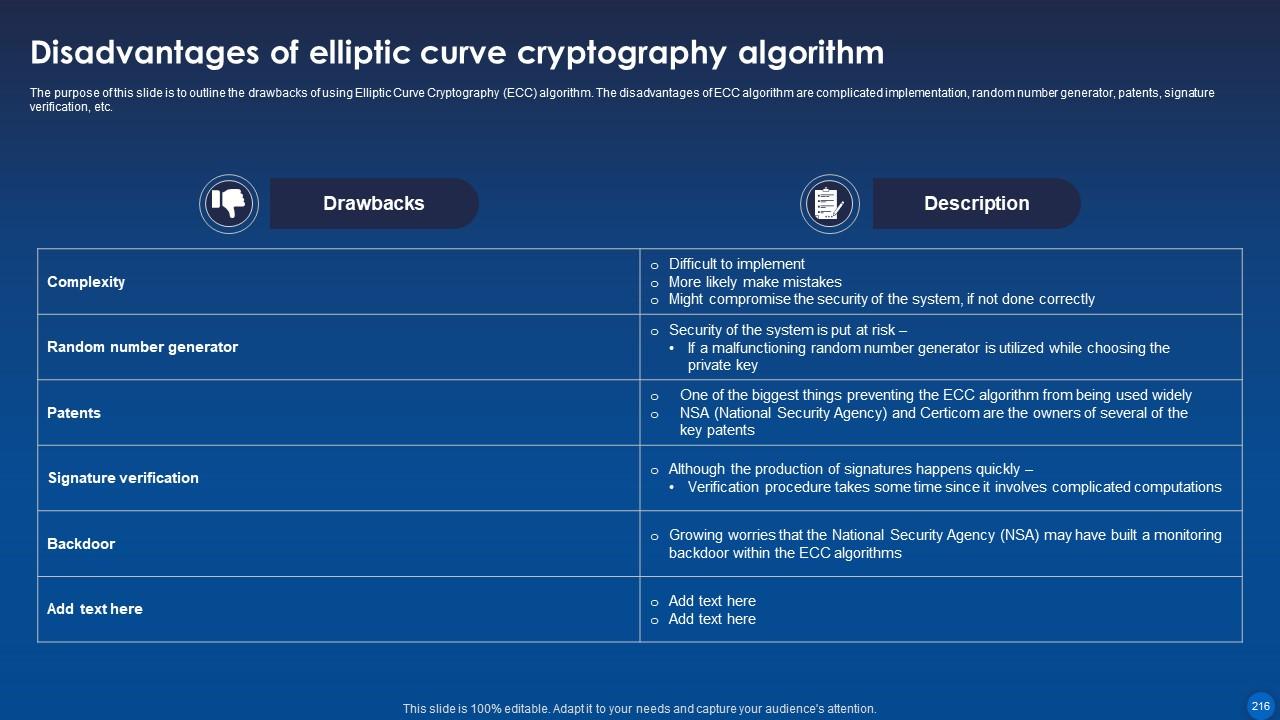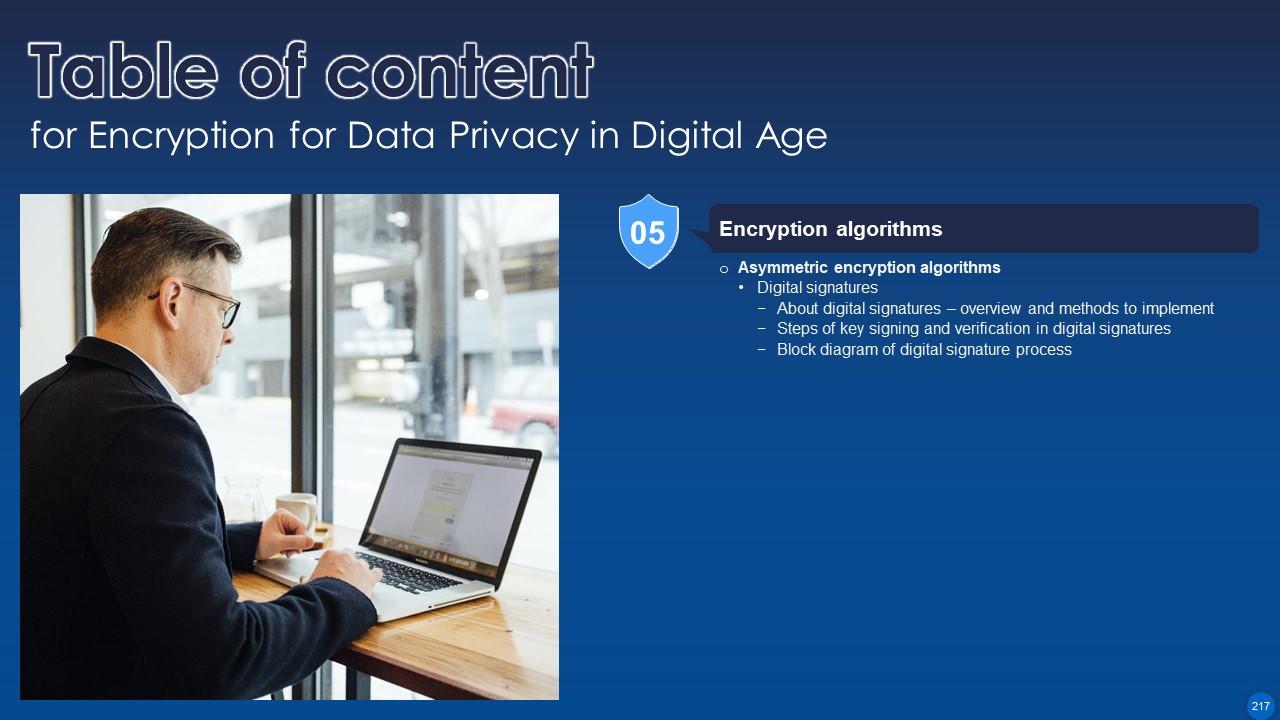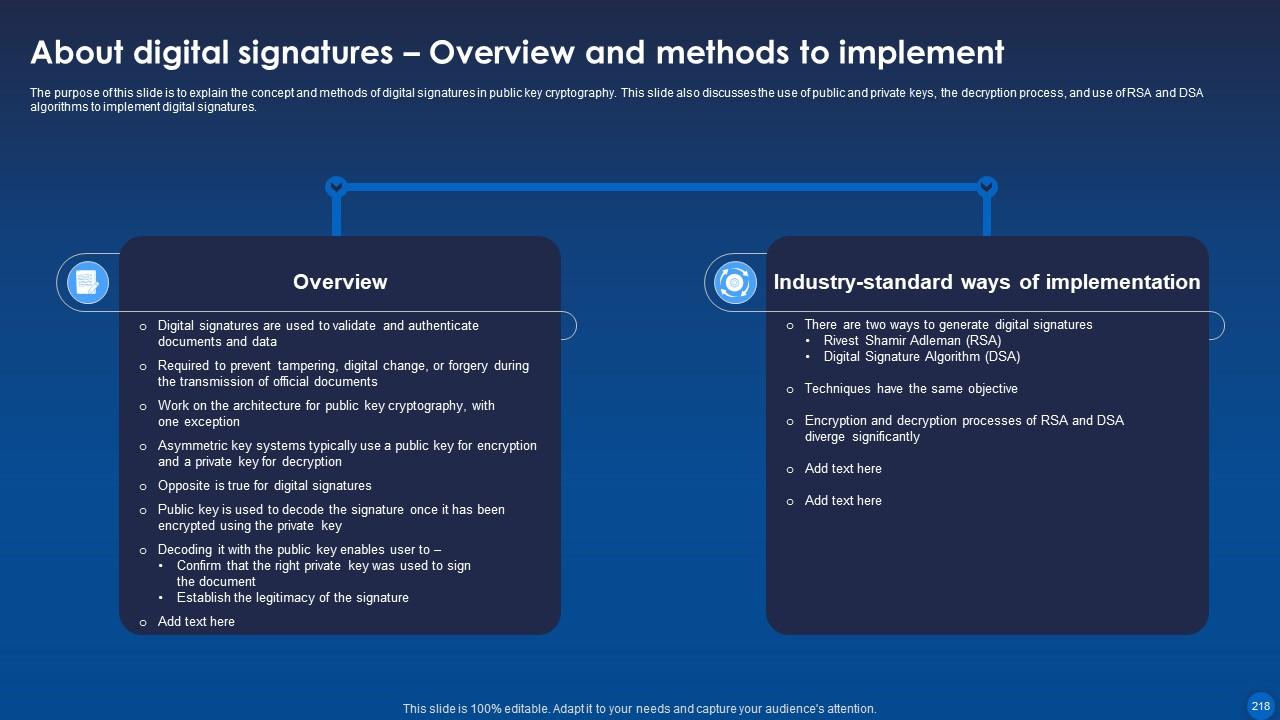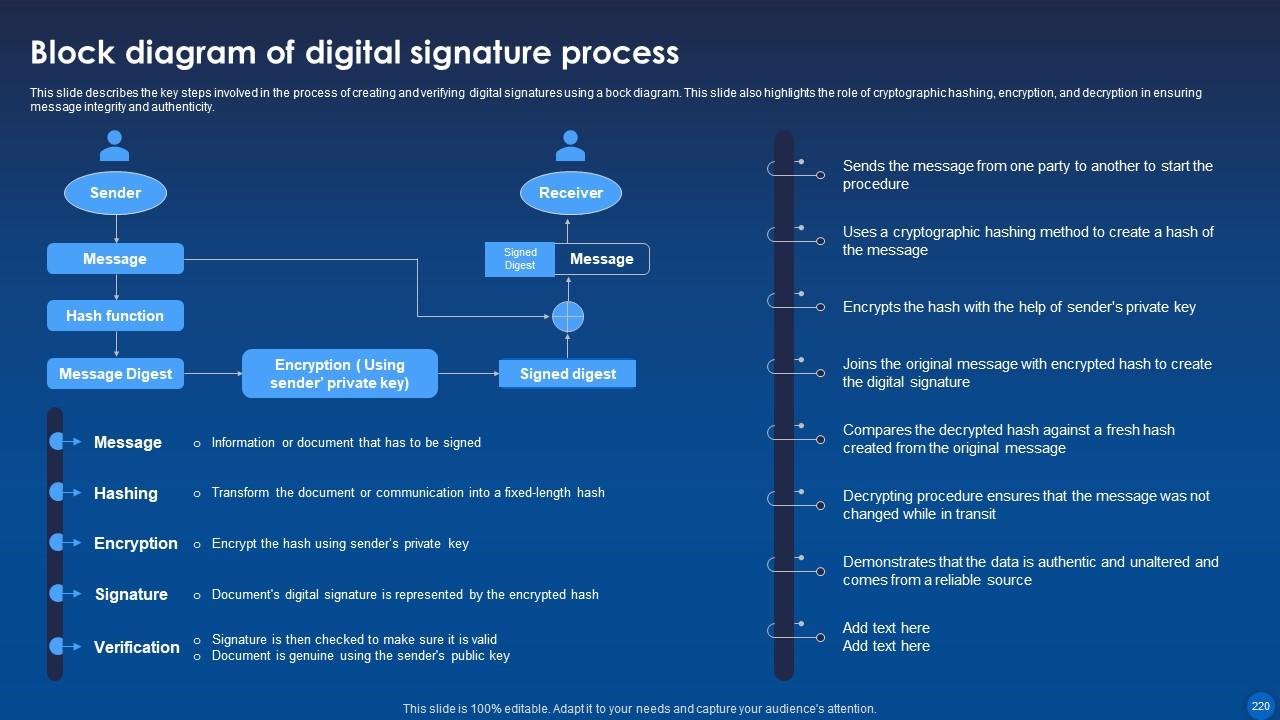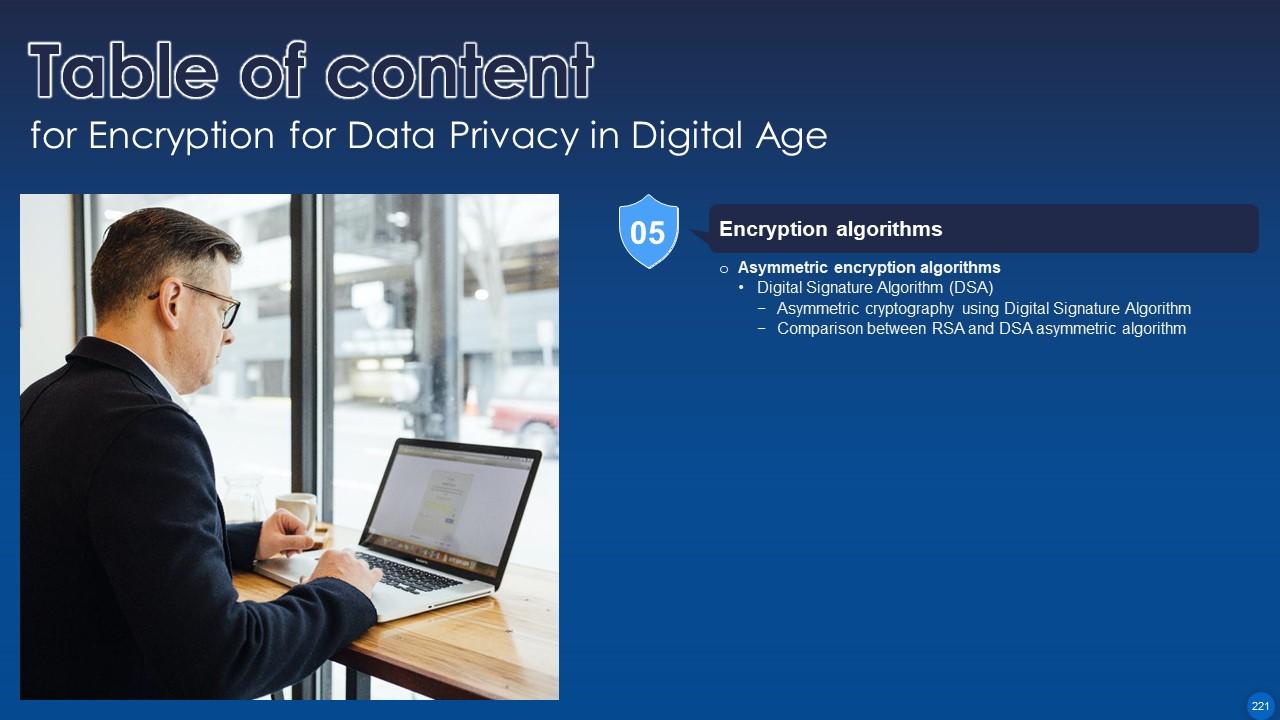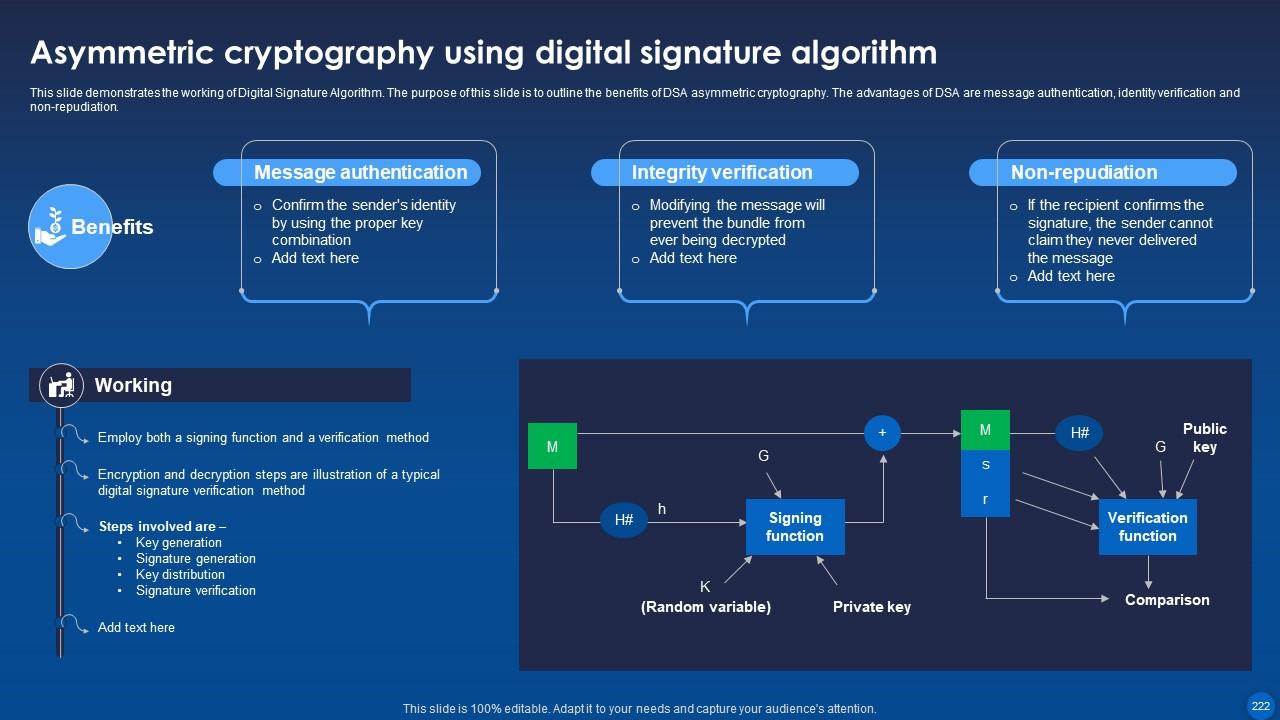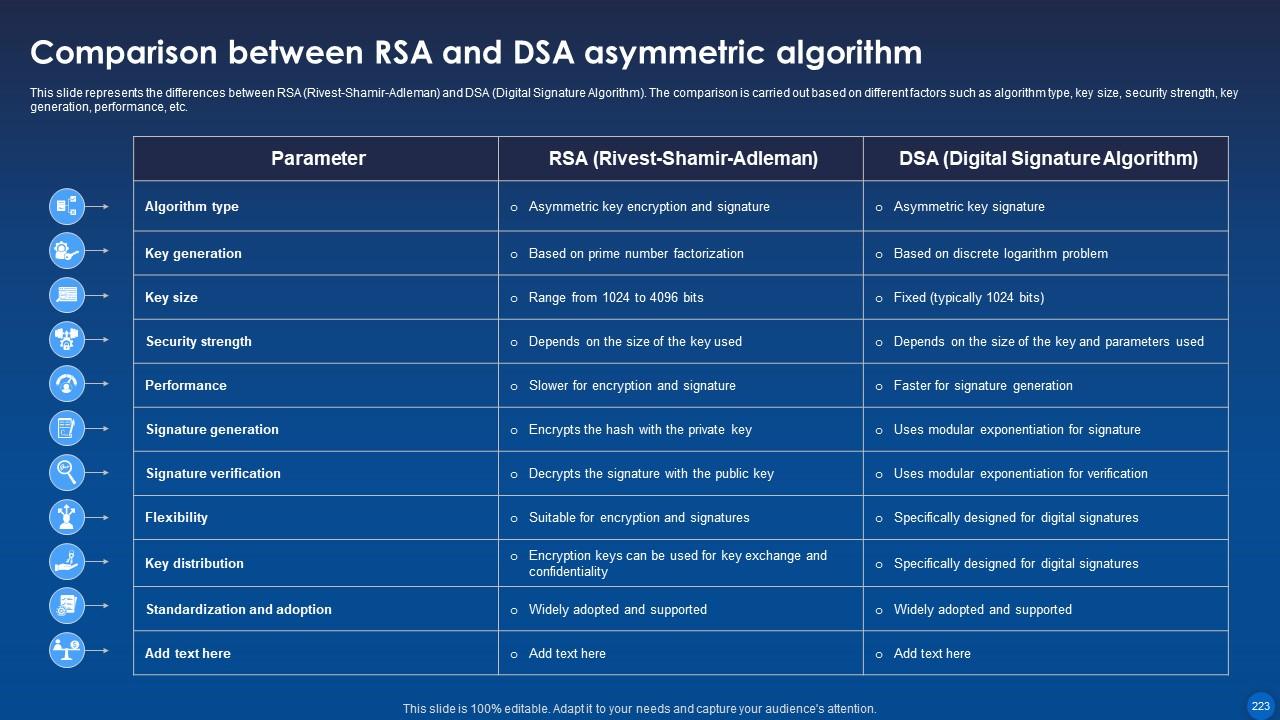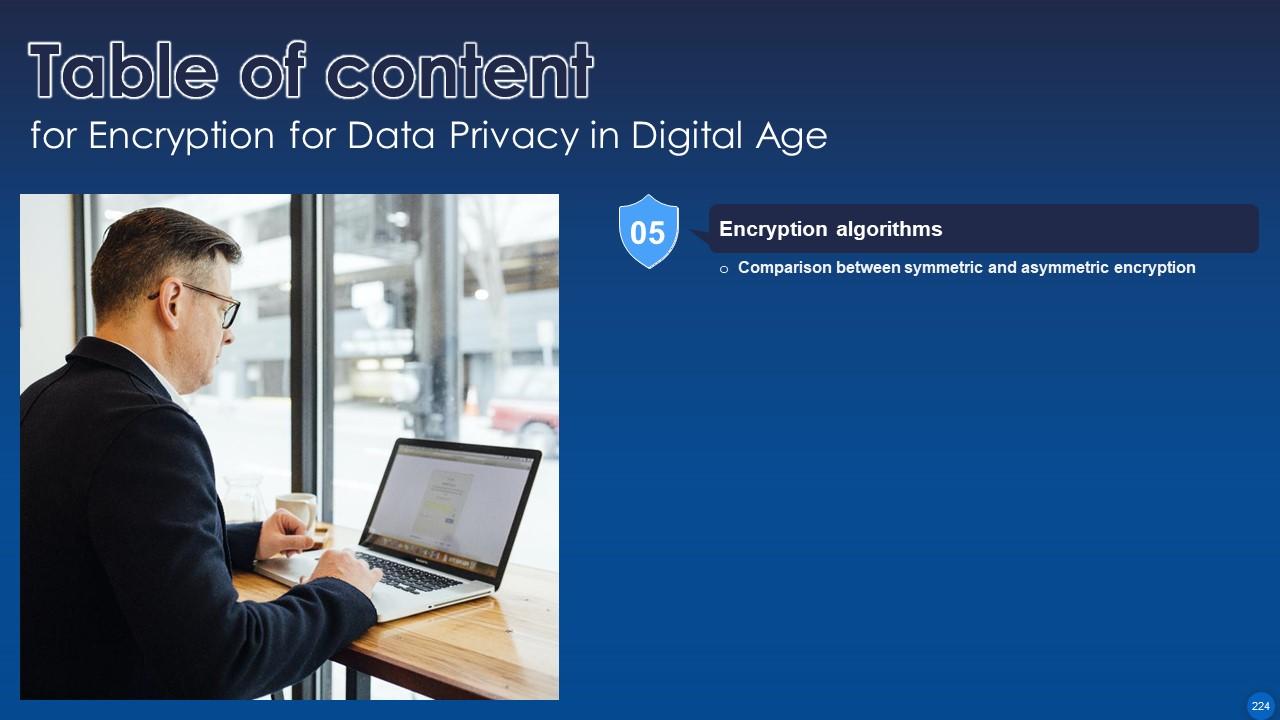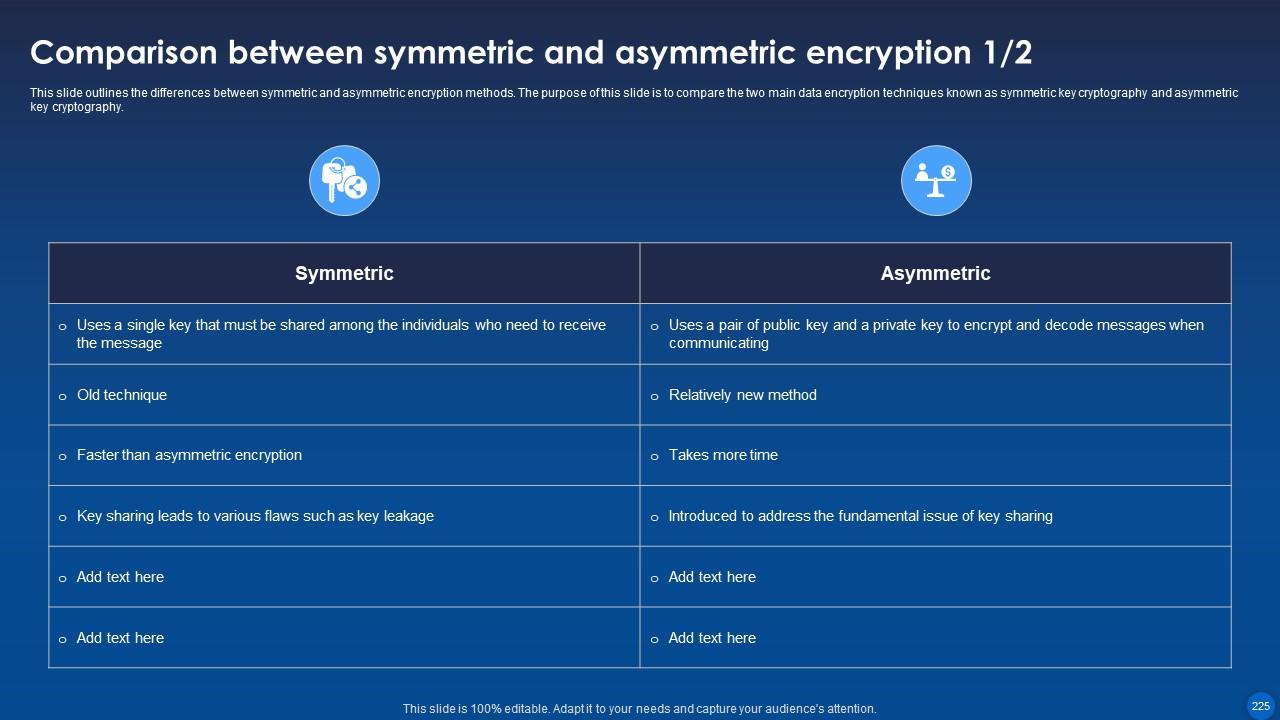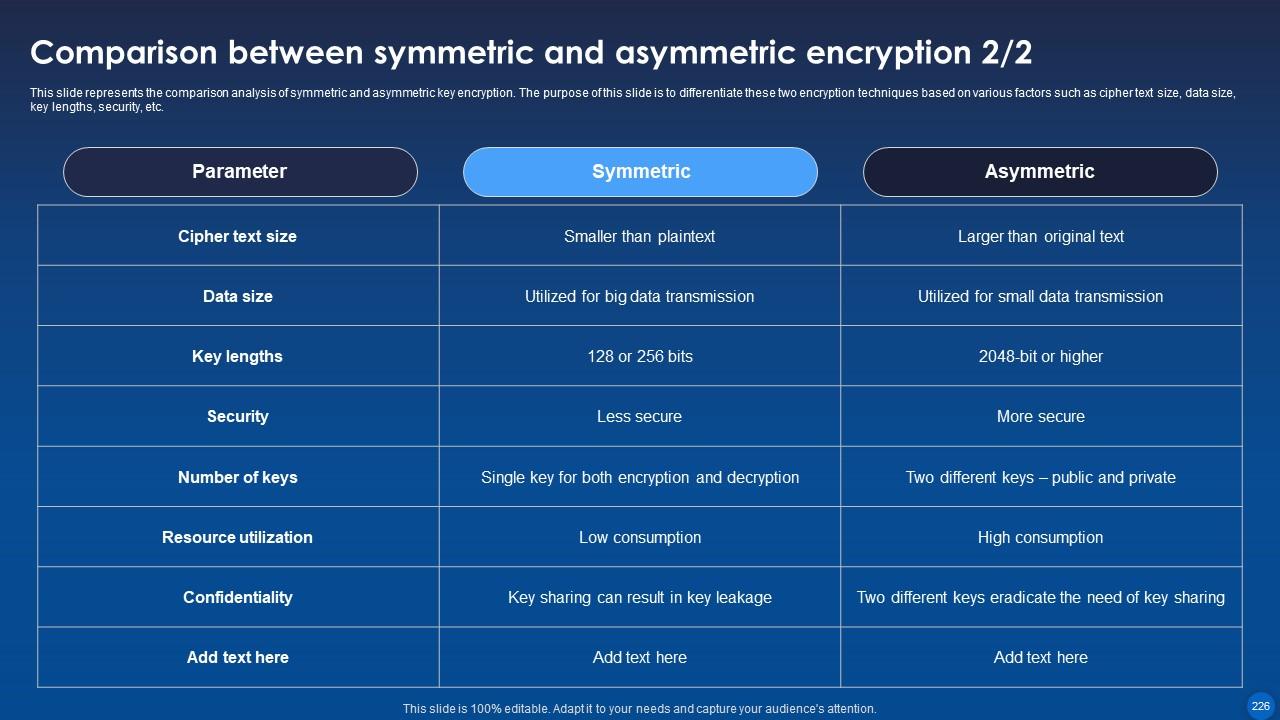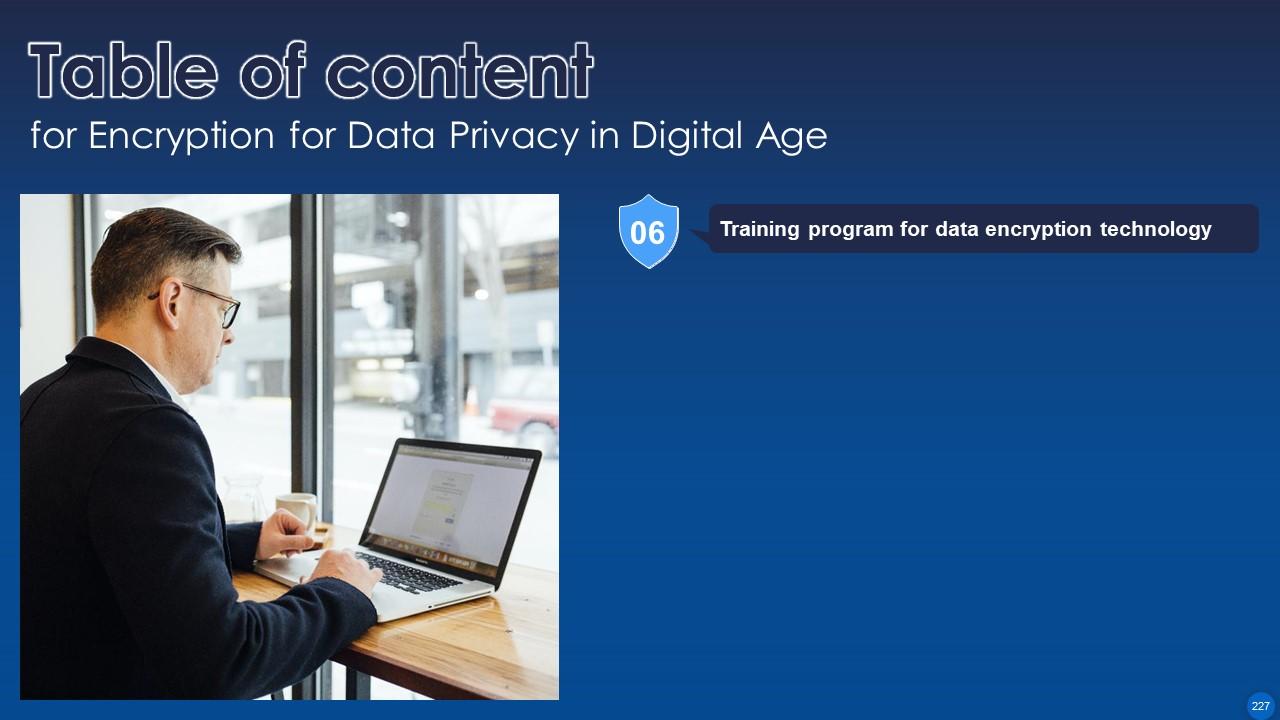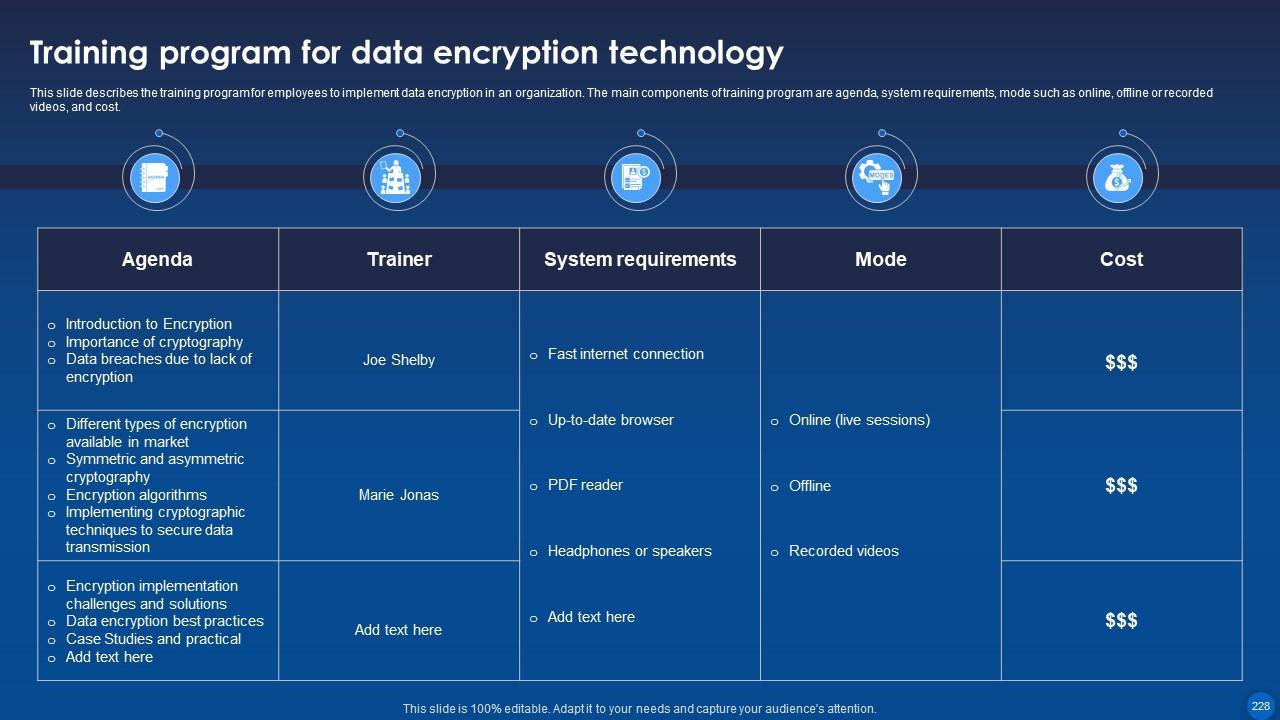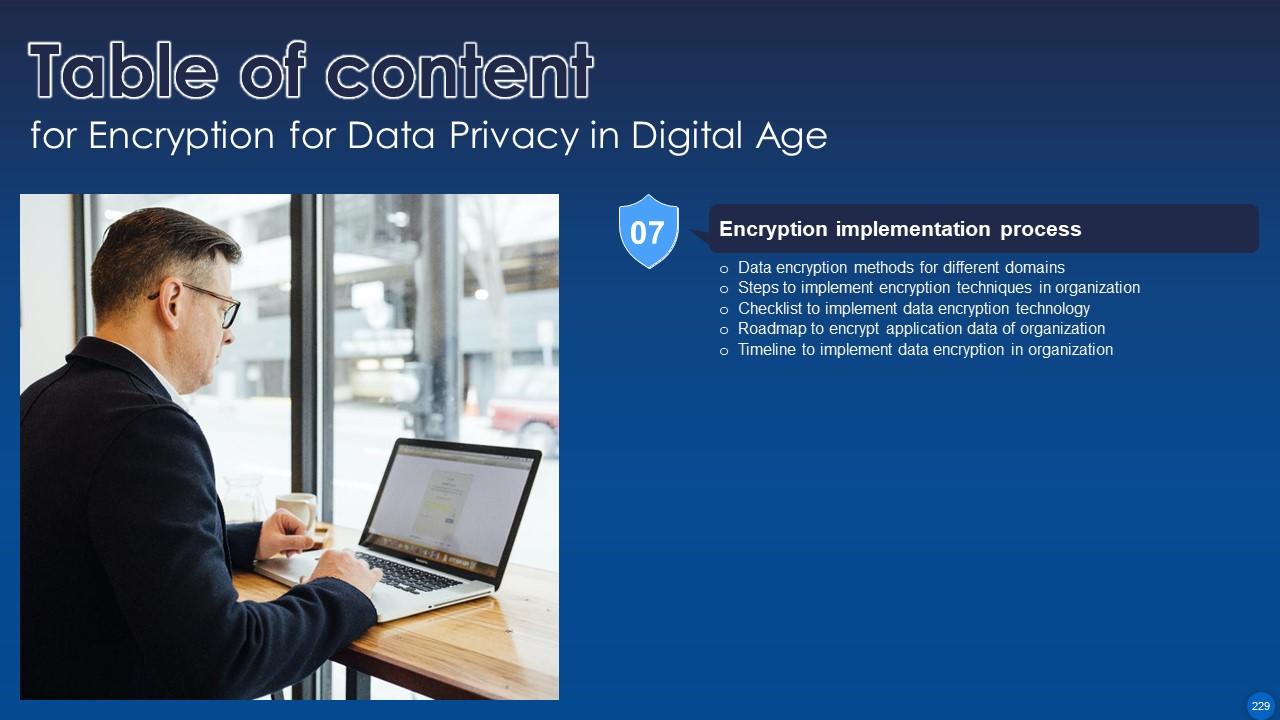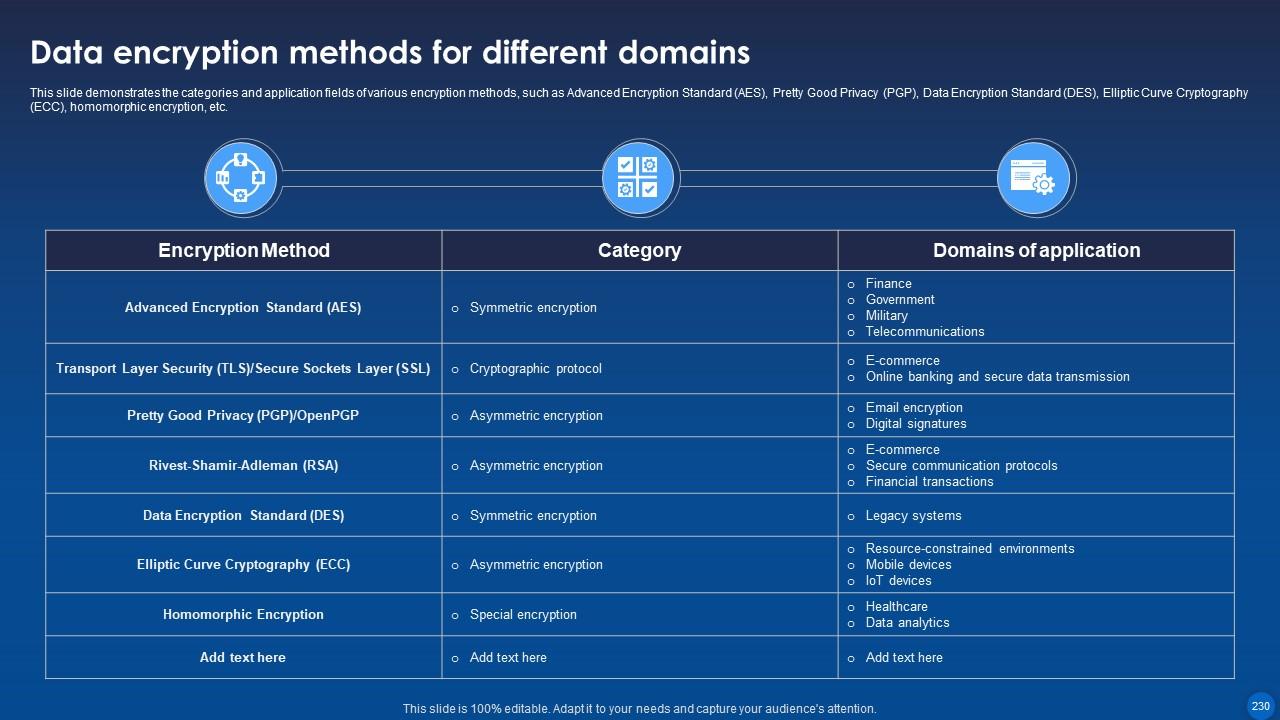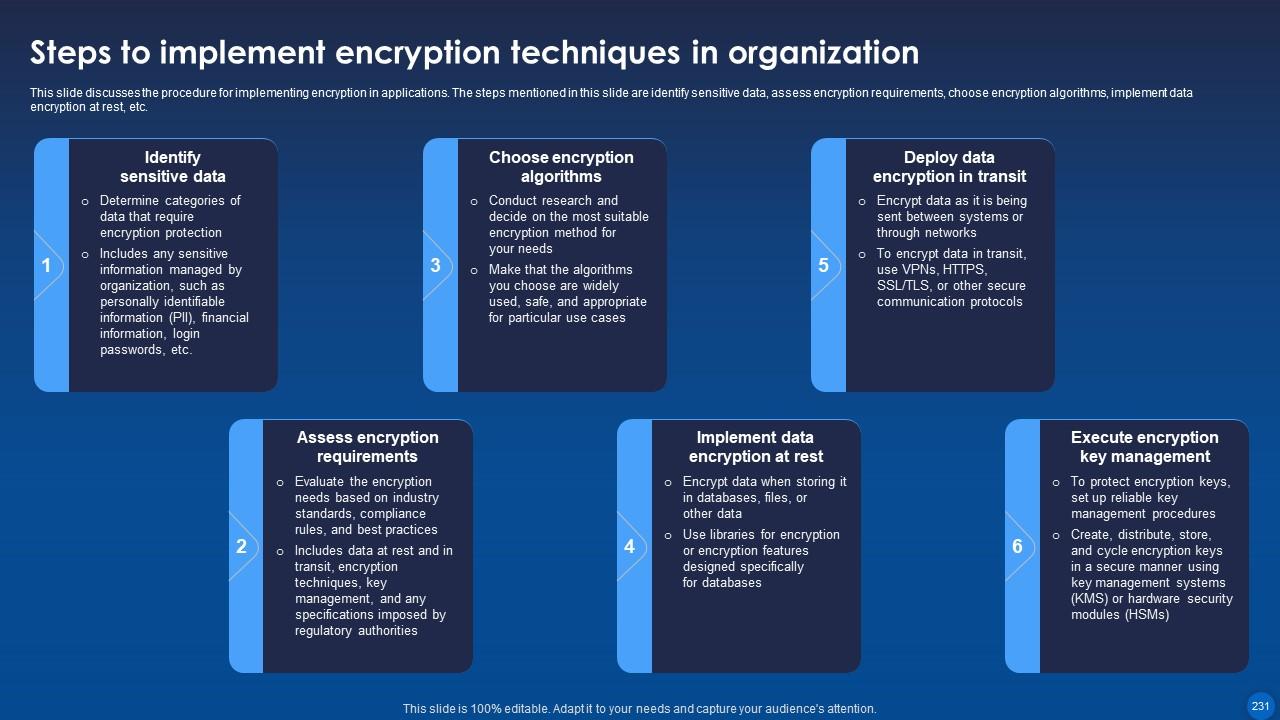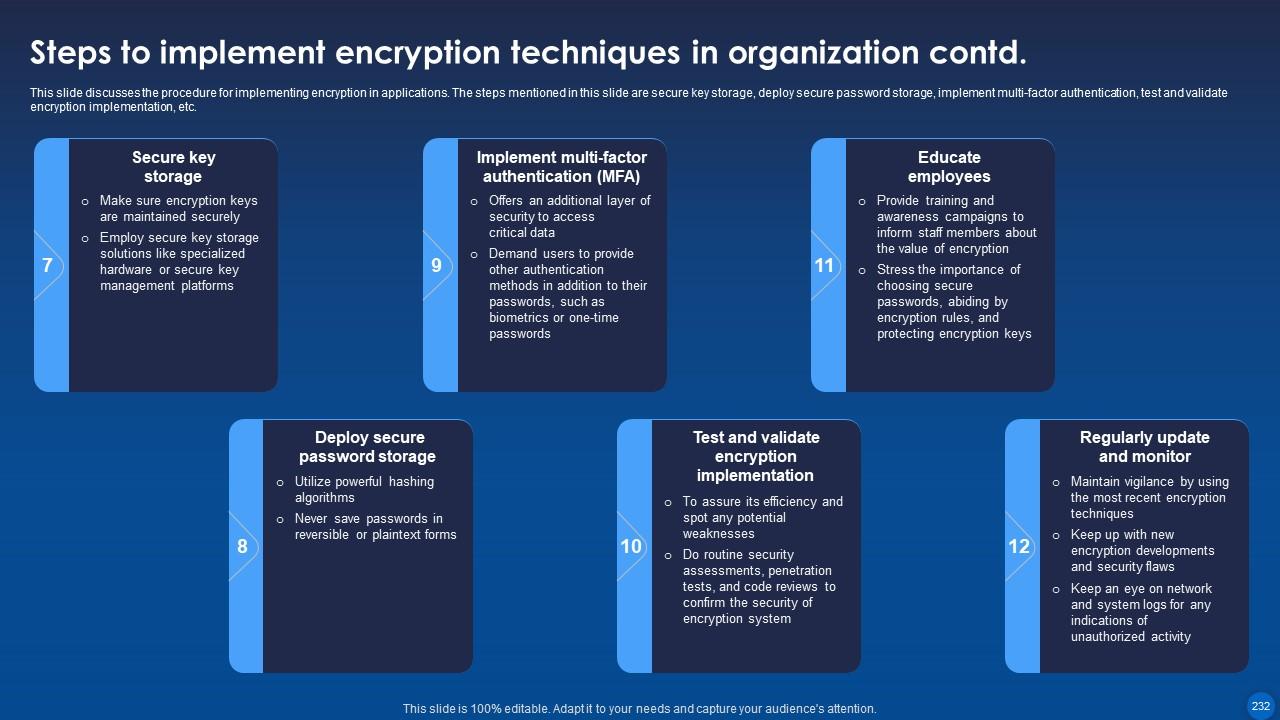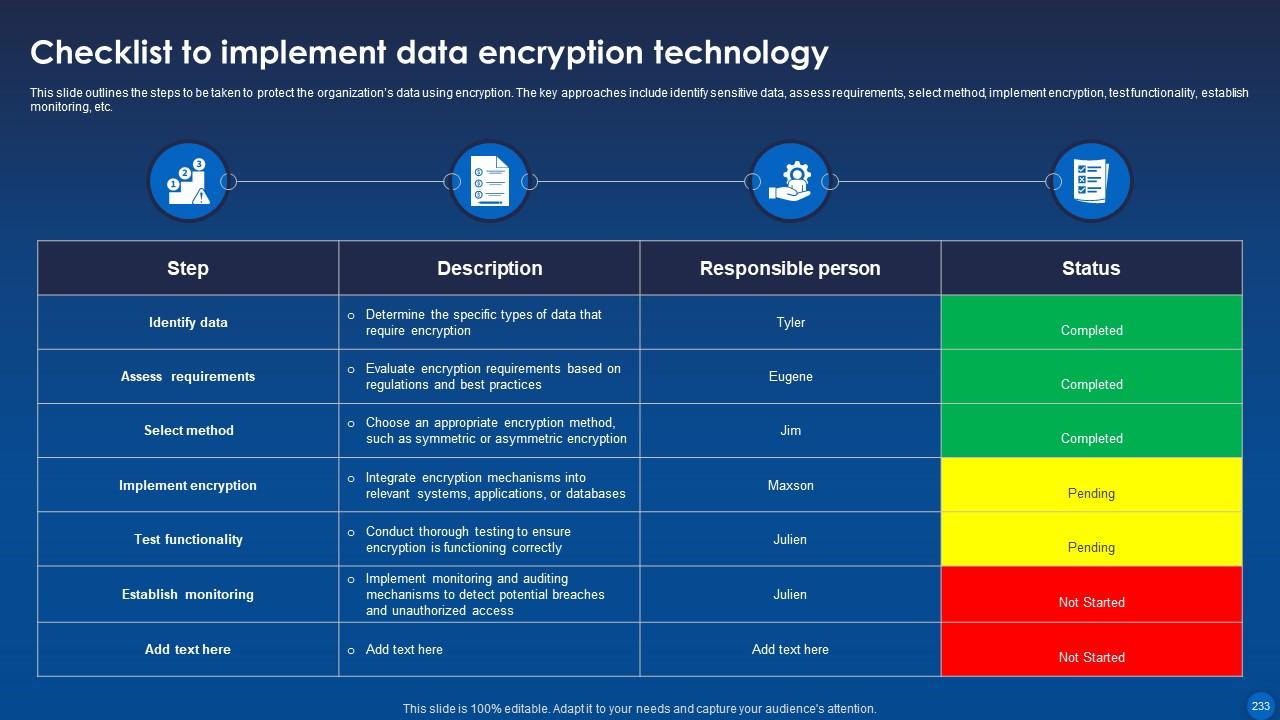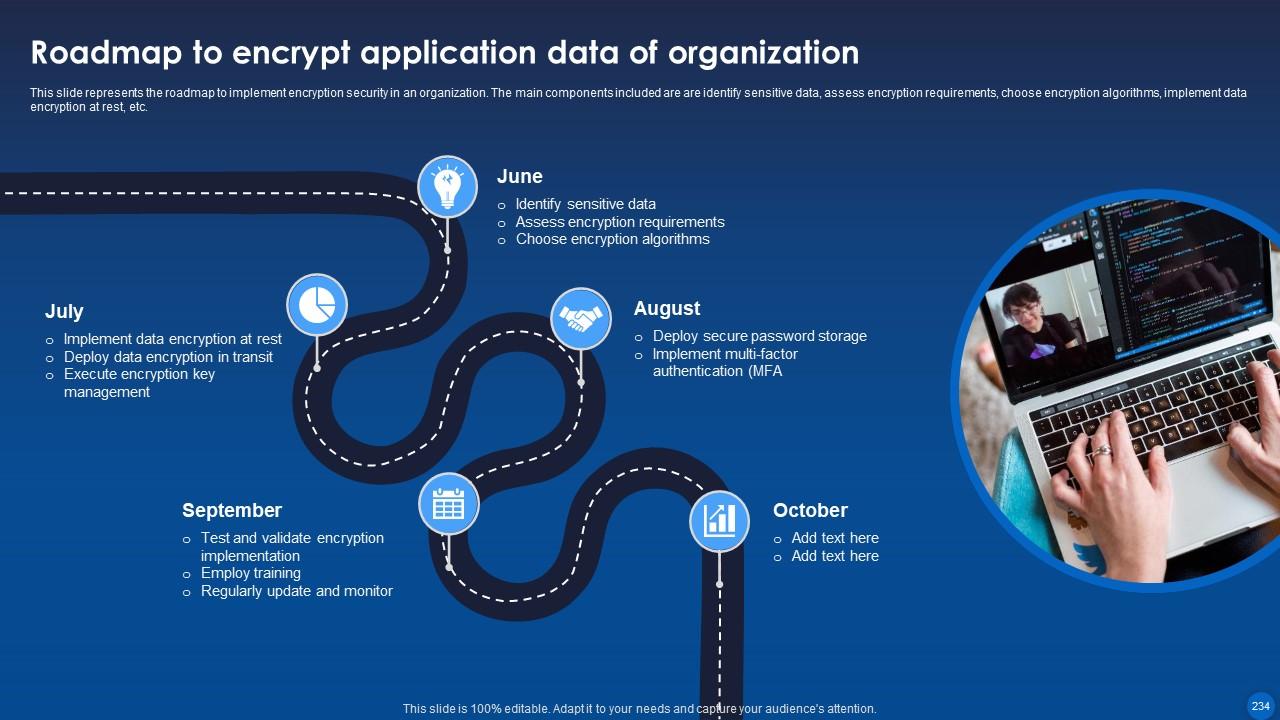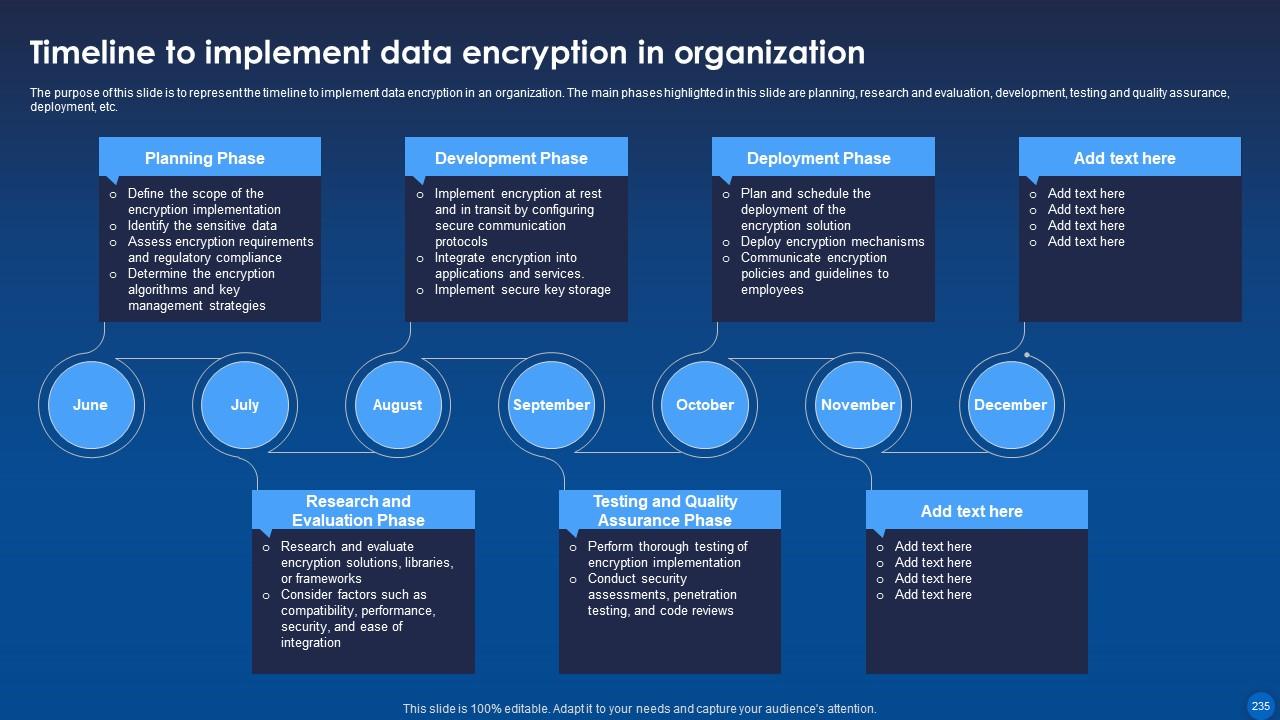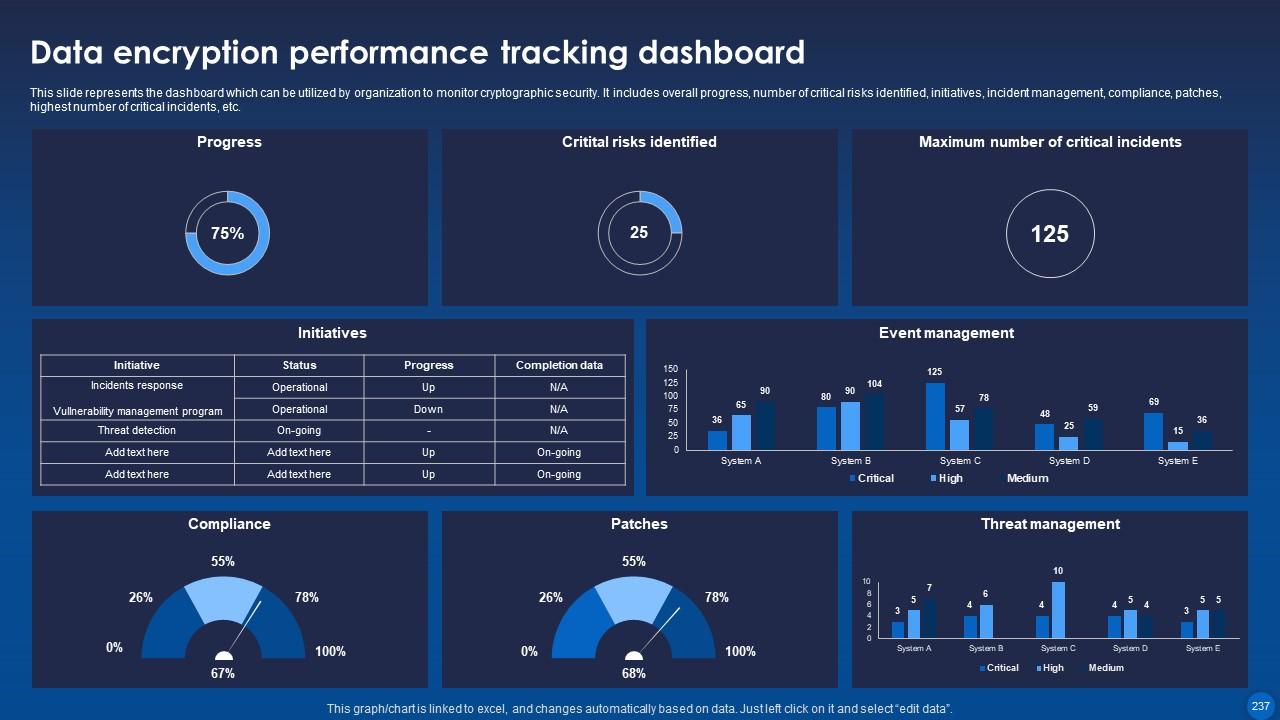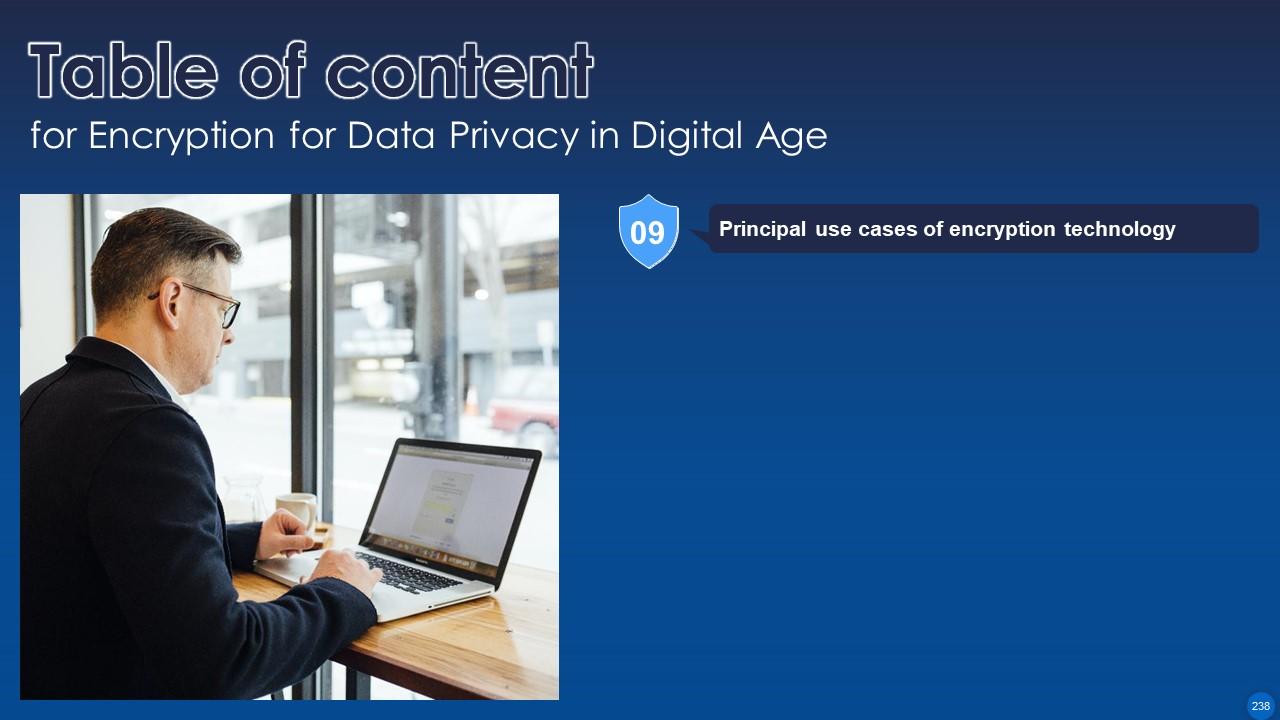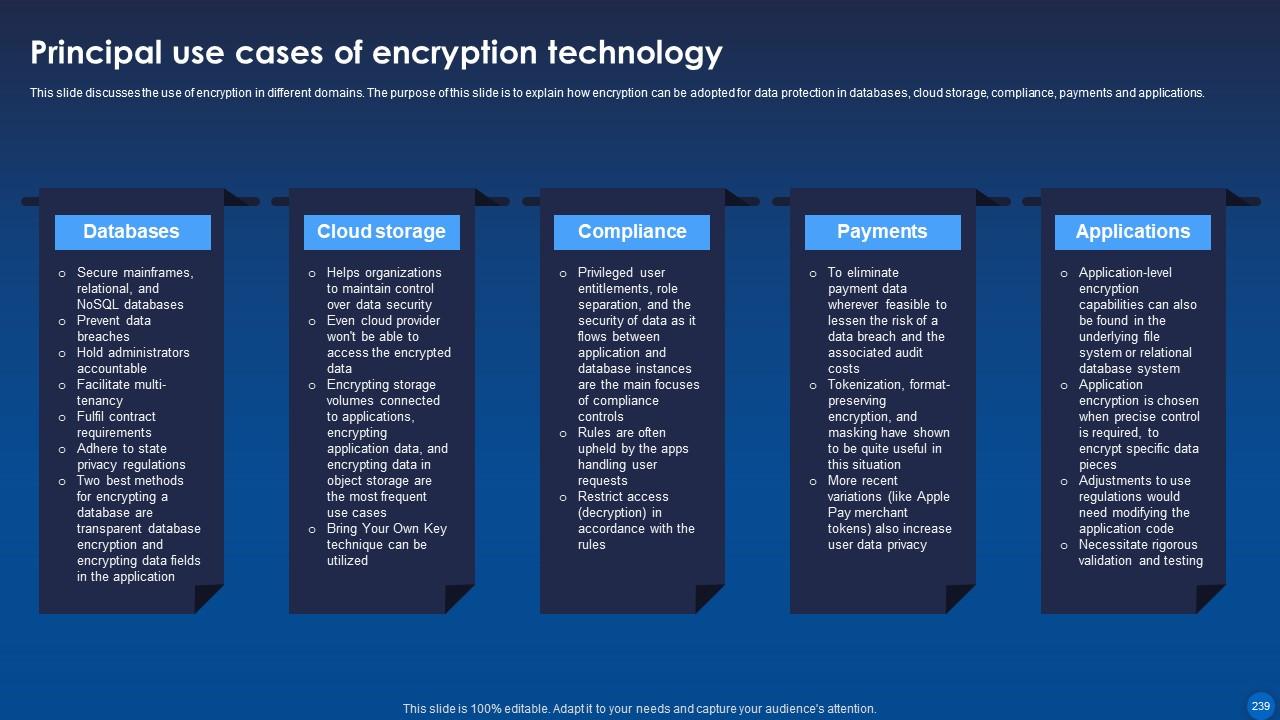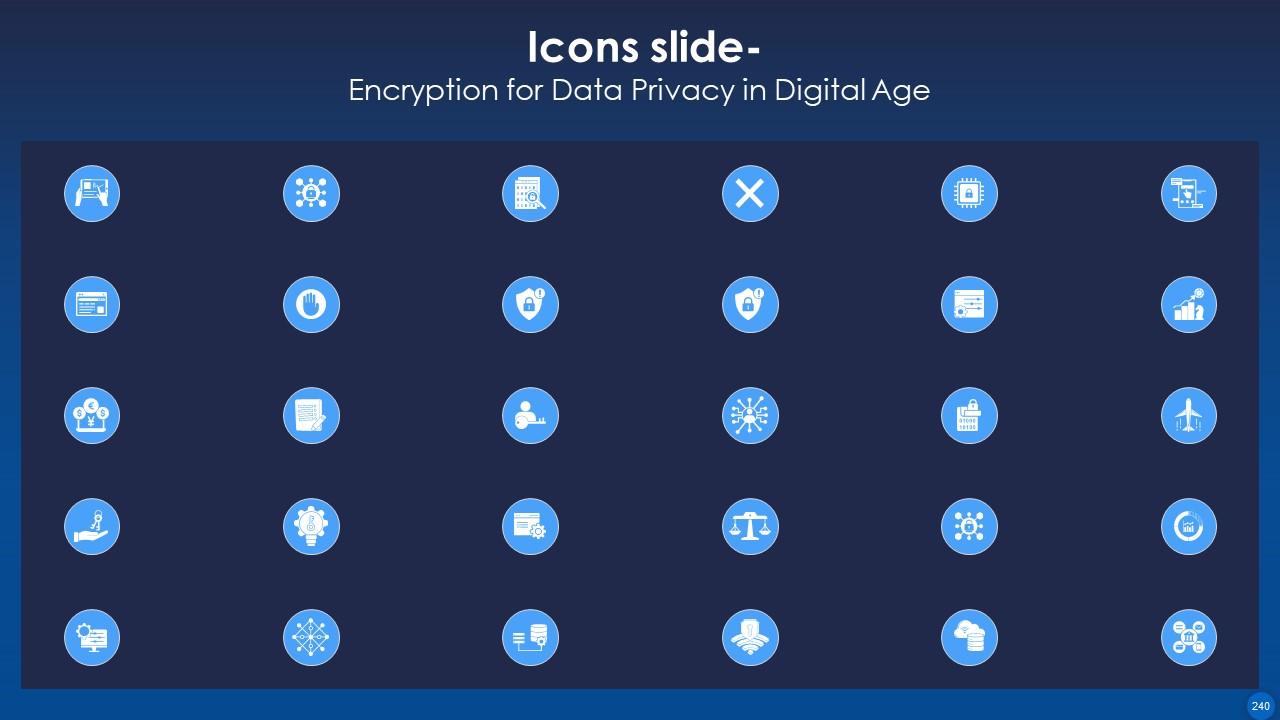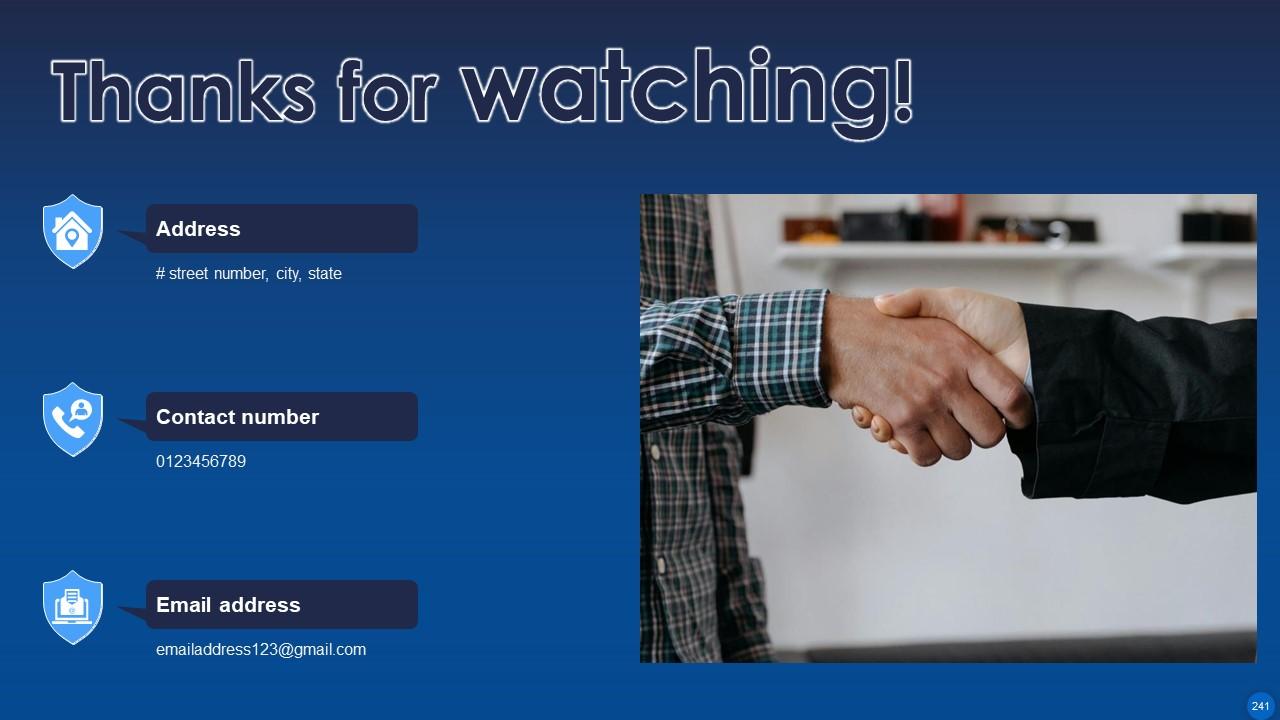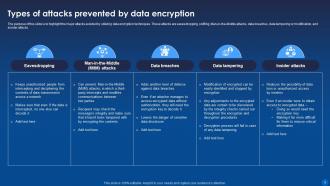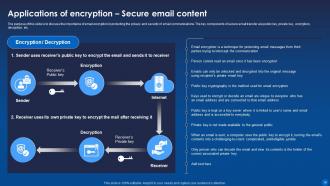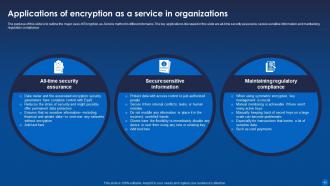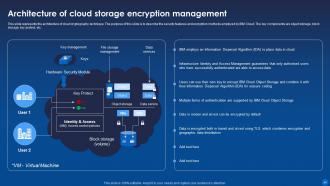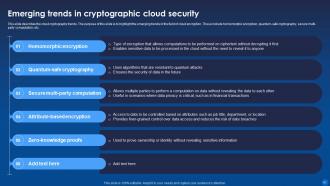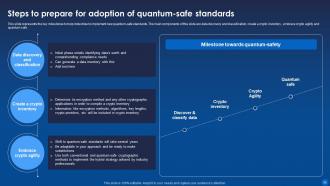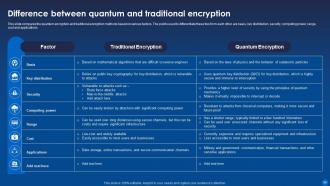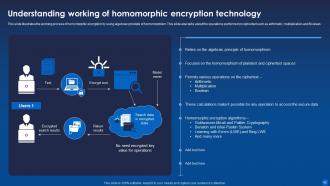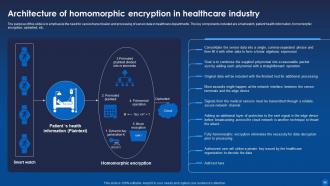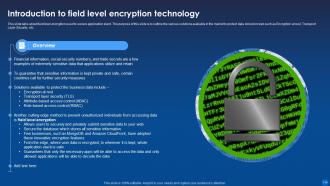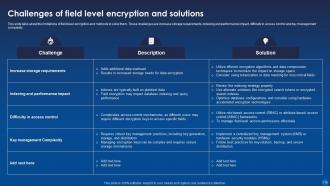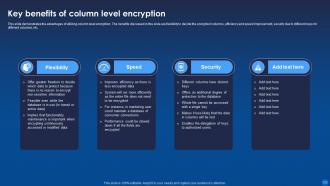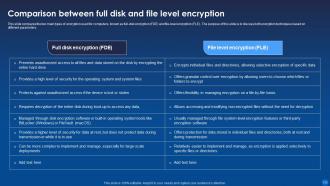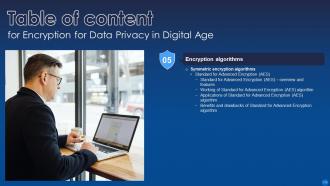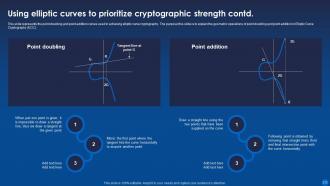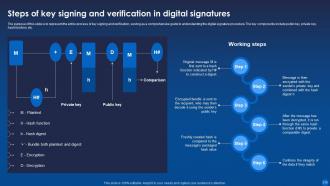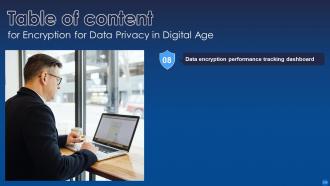Encryption For Data Privacy In Digital Age IT Powerpoint Presentation Slides
Grab our insightfully designed Encryption for Data Privacy in Digital Age IT PowerPoint Presentation. This PPT on data privacy encryption in the digital age provides an overview of securing data transmission to safeguard against internet risks and security threats. It addresses concerns like data breaches, Man-in-the-Middle attacks, and data tampering. Additionally, the cybersecurity PPT explains the role of encryption by detailing the working steps, architecture, benefits, limitations, and implementation of various techniques. These encompass Bring Your Encryption, Encryption as a Service, cloud storage encryption, end-to-end encryption, quantum encryption, homomorphic encryption, HTTPS encryption, and more. The module on cryptography for data protection offers a comprehensive guide on the workings of symmetric and asymmetric encryption algorithms, including Advanced Encryption Standard AES, Triple Data Encryption Algorithm TDEA, Elliptic Curve Cryptography ECC, and Digital Signature Algorithm DSA. Furthermore, the deck compares different encryption approaches, emphasizing best practices, tools, and algorithms related to data encryption in information security. Lastly, the module covers encryption implementation in organizations, providing insights into training, timelines, deployment roadmaps, and performance-tracking dashboards. Download our 100 percent editable and customizable PowerPoint, compatible with Google Slides, to streamline your presentation process.
Grab our insightfully designed Encryption for Data Privacy in Digital Age IT PowerPoint Presentation. This PPT on data priv..
- Google Slides is a new FREE Presentation software from Google.
- All our content is 100% compatible with Google Slides.
- Just download our designs, and upload them to Google Slides and they will work automatically.
- Amaze your audience with SlideTeam and Google Slides.
-
Want Changes to This PPT Slide? Check out our Presentation Design Services
- WideScreen Aspect ratio is becoming a very popular format. When you download this product, the downloaded ZIP will contain this product in both standard and widescreen format.
-

- Some older products that we have may only be in standard format, but they can easily be converted to widescreen.
- To do this, please open the SlideTeam product in Powerpoint, and go to
- Design ( On the top bar) -> Page Setup -> and select "On-screen Show (16:9)” in the drop down for "Slides Sized for".
- The slide or theme will change to widescreen, and all graphics will adjust automatically. You can similarly convert our content to any other desired screen aspect ratio.
Compatible With Google Slides

Get This In WideScreen
You must be logged in to download this presentation.
PowerPoint presentation slides
Enthrall your audience with this Encryption For Data Privacy In Digital Age IT Powerpoint Presentation Slides. Increase your presentation threshold by deploying this well-crafted template. It acts as a great communication tool due to its well-researched content. It also contains stylized icons, graphics, visuals etc, which make it an immediate attention-grabber. Comprising two hundred fourty one slides, this complete deck is all you need to get noticed. All the slides and their content can be altered to suit your unique business setting. Not only that, other components and graphics can also be modified to add personal touches to this prefabricated set.
People who downloaded this PowerPoint presentation also viewed the following :
Content of this Powerpoint Presentation
Slide 1: This slide introduces Encryption for Data Privacy in Digital Age (IT). State your company name and begin.
Slide 2: This is an Agenda slide. State your agendas here.
Slide 3: This slide shows Table of Content for the presentation.
Slide 4: This slide continues showing Table of Content for the presentation.
Slide 5: This slide shows title for topics that are to be covered next in the template.
Slide 6: This slide discusses the process of transforming data into an unreadable format using a cryptographic key. This slide outline various benefits of encryption.
Slide 7: This slide explains the key components and processes involved in data encryption and decryption.
Slide 8: This slide highlights the major attacks avoided by utilizing data encryption techniques. These attacks are eavesdropping, sniffing, Man-in-the-Middle attacks etc.
Slide 9: This slide provides an organized overview of major data breaches that occurred due to a lack of encryption.
Slide 10: This slide shows title for topics that are to be covered next in the template.
Slide 11: This slide demonstrates the need of data encryption in maintaining confidentiality and integrity of stored information.
Slide 12: This slide displays the advantages of employing encryption techniques to secure data. These include complete data security, ensure data integrity etc.
Slide 13: This slide shows title for topics that are to be covered next in the template.
Slide 14: This slide discusses the two crucial uses of encryption and explain how authentication and time stamping can help in confirming the identity of sender and computer.
Slide 15: This slide talks about the developing encryption application known as electronic money.
Slide 16: This slide discusses the importance of email encryption in protecting the privacy and security of email communications.
Slide 17: This slide explains the encryption methods employed by WhatsApp and Instagram. This slide also discusses the use of the 'signal' protocol.
Slide 18: This slide talks about the process of SIM authentication by generating random numbers and discuss encryption methods used in mobile networks.
Slide 19: This slide shows title for topics that are to be covered next in the template.
Slide 20: This slide depicts the market analysis of the global hardware encryption usage and showcases the market analysis based on regions and applications.
Slide 21: This slide displays the market analysis of the global network encryption usage. This slide showcase the market analysis based on regions such as North America, Europe etc.
Slide 22: This slide also presents the market analysis of the global cloud cryptography usage. This slide showcase the market analysis based on regions such as North America, Europe etc.
Slide 23: This slide depicts the market analysis of the global software encryption usage. This slide showcase the market analysis based on application segment view.
Slide 24: This slide shows title for topics that are to be covered next in the template.
Slide 25: This slide discusses about the increasing adoption of encryption to solve current cyber security issues.
Slide 26: This slide demonstrates the recent cryptographic trends in cyber security. This slide represent the current advances in encryption technology.
Slide 27: This slide also demonstrates the recent cryptographic trends in cyber security and represent the current advances in encryption technology.
Slide 28: This slide discusses about the development of data encryption technologies in coming years.
Slide 29: This slide shows title for topics that are to be covered next in the template.
Slide 30: This slide represents the different methods of encrypting information before sending it to the recipient.
Slide 31: This slide also represents the different methods of encrypting information before sending it to the recipient.
Slide 32: This slide shows title for topics that are to be covered next in the template.
Slide 33: This slide discusses about widely used encryption method known as Bring Your Own Encryption (BYOE).
Slide 34: This slide emphasize the need for a Bring Your Own Key (BYOK) model in data encryption. The reasons include risks associated with unauthorized access and more.
Slide 35: This slide explains the working process of Bring Your Own Encryption (BYOE) approach. The key components included are client apps, secured ciphertext etc.
Slide 36: This slide demonstrate the importance of encryption key management (EKM) software. The key components included are encryption algorithm, customer master key etc.
Slide 37: This slide shows title for topics that are to be covered next in the template.
Slide 38: This slide represents a comparative analysis for Bring Your Own Encryption (BYOE) model and native encryption method.
Slide 39: This slide highlight the benefits and capabilities of Hardware Security Modules (HSMs). The key components included are cloud server, private key etc.
Slide 40: This slide shows title for topics that are to be covered next in the template.
Slide 41: This slide talks about the Encryption-as-a-Service model of securing data using cryptographic techniques.
Slide 42: This slide highlights the working components of an encryption as a service system. These are data, encryption engine, key management.
Slide 43: This slide outlines the major uses of Encryption-as-Service method in different domains. The key applications discussed are all-time security assurance and more.
Slide 44: This slide also outlines the major uses of Encryption-as-Service method in different domains.
Slide 45: This slide displays the companies which provide EaaS services to secure data in a network and demonstrate the services and benefits of several EaaS providers.
Slide 46: This slide discusses the advantages of incorporating Encryption-as-a-Service in organizational network.
Slide 47: This slide shows title for topics that are to be covered next in the template.
Slide 48: This slide demonstrates the importance of encrypting data before storing or sending it to the cloud.
Slide 49: This slide outlines the major characteristics of cloud cryptography. This slide explain the main features of encrypted cloud storage.
Slide 50: This slide talks about the role of cryptography in cloud computing. This slide elaborate the importance of cloud cryptography.
Slide 51: This slide talks about the advantages of cloud data encryption. This slide outline the benefits of cloud cryptography.
Slide 52: This slide shows title for topics that are to be covered next in the template.
Slide 53: This slide demonstrates the working process of cloud encryption technique to secure the data being stored in the cloud.
Slide 54: This slide represents the architecture of cloud cryptography technique. This slide describe the security features and encryption methods employed by IBM Cloud.
Slide 55: This slide shows title for topics that are to be covered next in the template.
Slide 56: This slide talks about the cloud encryption methodologies. This slide outline the encryption tools used in cloud cryptography.
Slide 57: This slide explain the various misconceptions and mistakes of organization while integrating cryptographic solutions into cloud.
Slide 58: This slide talks about the steps to be taken for successful cloud cryptography management. The best practices involved are analyse security needs for cloud implementation etc.
Slide 59: This slide represents the key challenges of implementing cryptographic techniques in cloud computing. This slide outline the solutions to such problems.
Slide 60: This slide shows title for topics that are to be covered next in the template.
Slide 61: This slide describes the cloud cryptography trends. This slide highlight the emerging trends in the field of cloud encryption.
Slide 62: This slide demonstrates the benefits and drawbacks of various cloud encryption approaches.
Slide 63: This slide shows title for topics that are to be covered next in the template.
Slide 64: This slide discusses about the end to end encryption methodology. It secures the communication between sender and receiver.
Slide 65: This slide outlines the steps involved in working of end to end encrypted communication between sender and the recipient.
Slide 66: This slide illustrates the use of end to end encryption mechanism to maintain data confidentiality.
Slide 67: This slide discusses the utilization of asymmetric public key encryption technique to provide E2EE.
Slide 68: This slide represents the calculative theory behind key generation in end-to-end encryption and illustrates the working of one-way mathematical function.
Slide 69: This slide shows title for topics that are to be covered next in the template.
Slide 70: This slide represents the various benefits of client side encryption and outlines the benefits of end to end encryption such as security in transit, tamper-proof etc.
Slide 71: This slide presents the various drawbacks of client side encryption. This slide outlines the disadvantages of end to end encryption.
Slide 72: This slide demonstrates different texting apps utilizing end to end encryption to secure data transmission.
Slide 73: This slide displays the challenges faced by client side encryption such as metadata, compromised endpoints and risky intermediaries.
Slide 74: This slide demonstrates the differences between End-to-end encryption (E2EE) and Transport Layer Security (TLS).
Slide 75: This slide shows title for topics that are to be covered next in the template.
Slide 76: This slide discusses the emerging cryptographic technology known as quantum encryption. This slide discuss the meaning of quantum cryptography.
Slide 77: This slide demonstrate the two branches of cryptography derived from quantum mechanics.
Slide 78: This slide describes the steps involved in encrypting and decrypting the keys using quantum cryptography.
Slide 79: This slide explain the process of Quantum Key Distribution (QKD). It shows the process of sending the polarized photons to the receiver through a fiber optic line.
Slide 80: This slide demonstrate the various uses of quantum cryptography in several sectors, such as financial transactions, government and military communication etc.
Slide 81: This slide presents the benefits of quantum encryption technique. The advantages discussed in this slide are provides secure communication, detects eavesdropping etc.
Slide 82: This slide shows title for topics that are to be covered next in the template.
Slide 83: This slide talks about the three quantum-safe certificates. This slide outline the purpose and encryption algorithm behind these digital certificates.
Slide 84: This slide demonstrates the process of replicating the old certificates with quantum-safe certificates. The steps included are Quantum-safe PKI etc.
Slide 85: This slide represents the key milestones to help industries to implement new quantum-safe standards.
Slide 86: This slide shows title for topics that are to be covered next in the template.
Slide 87: This slide talks about the various limitations of quantum cryptography and possible solutions to overcome these problems.
Slide 88: This slide outlines the several drawbacks of using quantum cryptography to secure the data transmission.
Slide 89: This slide compares the quantum encryption and traditional encryption methods based on various factors.
Slide 90: This slide shows title for topics that are to be covered next in the template.
Slide 91: This slide explain the concept of homomorphic encryption. The benefits of this technique are privacy preservation, data security, secure outsourcing etc.
Slide 92: This slide illustrates the working process of homomorphic encryption by using algebraic principle of homomorphism.
Slide 93: This slide explain how data owner can securely delegate mathematical operations or ML tasks to a third party. The key components included are client, secret key etc.
Slide 94: This slide demonstrate the three major types of homomorphic cryptography technique. These are partially homomorphic encryption, somewhat homomorphic encryption etc.
Slide 95: This slide represents the hierarchy of various homomorphic encryption approaches and outline the different techniques.
Slide 96: This slide demonstrate the key uses of homomorphic encryption in different domains. The main business applications of this technology are supply chain security etc.
Slide 97: This slide talks about the benefits of homomorphic cryptography technique. The main advantages of this technology are privacy preservation, data security etc.
Slide 98: This slide emphasize the need for secure transmission and processing of sensor data in healthcare departments.
Slide 99: This slide shows title for topics that are to be covered next in the template.
Slide 100: This slide talks about fully homomorphic encryption. This slide illustrate the working process of fully homomorphic encryption technology.
Slide 101: This slide represent the different uses of homomorphic encryption such as secure cloud data storage, banking and financial organizations, electronic voting, etc.
Slide 102: This slide shows title for topics that are to be covered next in the template.
Slide 103: This slide talks about the limitations of homomorphic cryptography and techniques to overcome them. These challenges are performance impact etc.
Slide 104: This slide compare traditional encryption techniques with homomorphic encryption technology. The factors used to carry out the analysis are functionality etc.
Slide 105: This slide shows title for topics that are to be covered next in the template.
Slide 106: This slide talks about the Hypertext Transfer Protocol Secure (HTTPS), which is an advance version of HTTP.
Slide 107: This slide illustrates the flow of several components in the working of Hypertext Transfer Protocol Secure (HTTPS).
Slide 108: This slide compare the Hypertext Transfer Protocol and Hyper Text Transfer Protocol Secure. The difference is represented on the basis of several factors.
Slide 109: This slide displays the Secure Sockets Layer and Hyper Text Transfer Protocol Secure. The difference is represented on the basis of several factors.
Slide 110: This slide outlines the benefits of utilizing Hypertext Transfer Protocol Secure (HTTPS) for website encryption.
Slide 111: This slide represents the process of website encryption using Hypertext Transfer Protocol Secure (HTTPS).
Slide 112: This slide talks about the challenges of Hypertext Transfer Protocol Secure (HTTPS) and their possible solutions.
Slide 113: This slide shows title for topics that are to be covered next in the template.
Slide 114: This slide talks about field level encryption used to secure application stack and outlines the various solutions available in the market.
Slide 115: This slide discusses about the requirement of field level encryption in securing health department’s data.
Slide 116: This slide demonstrates the advantages of utilizing field level encryption on websites. The FLE benefits discussed in this slide are secure certain fields and documents etc.
Slide 117: This slide illustrates the process of Client-side Field Level Encryption (CSFLE). The key components demonstrated in the working process of CSFLE are app code etc.
Slide 118: This slide represents the process of setting up field level encryption technology. The key steps involved in this procedure are identify sensitive fields and select encryption.
Slide 119: This slide talks about the limitations of field level encryption and methods to solve them. These challenges are increase storage requirements etc.
Slide 120: This slide shows title for topics that are to be covered next in the template.
Slide 121: This slide discusses about column level encryption. This slide explain how column level encryption approach ensures the uniform encryption of data stored in a database.
Slide 122: This slide outline the differences between column level and whole database encryption technologies.
Slide 123: This slide demonstrates the advantages of utilizing column level encryption. The benefits discussed in this slide are flexibility to decide the encrypted columns etc.
Slide 124: This slide discusses the encryption hierarchy in column level data encryption and represents different tiers of encryption hierarchy.
Slide 125: This slide demonstrates the enhanced view of symmetric and asymmetric column level encryption techniques.
Slide 126: This slide talks about the challenges of column level encryption and methods to solve them. These limitations of column level encryption are performance impact etc.
Slide 127: This slide shows title for topics that are to be covered next in the template.
Slide 128: This slide discuss full disk encryption technology to safeguard the data present on disk and outlines the benefits of full disk encryption.
Slide 129: This slide demonstrates the two tools available for full disk encryption. These are hardware based full disk encryption.
Slide 130: This slide explain how full disk encryption operates in computer systems. The key components include bootstrap loader, PGP (Pretty Good Privacy) whole disc encrypted machine etc.
Slide 131: This slide talks about the BitLocker software, a full disk windows encryption technique provided by Microsoft.
Slide 132: This slide displays about the FileVault software, a full disk encryption technique provided by Apple to secure the data of computer disk.
Slide 133: This slide compares the two main types of encryption used for computers, known as full-disk encryption (FDE) and file-level encryption (FLE).
Slide 134: This slide outline the various disadvantages of full disk encryption. This slide also discusses the best security measures to solve several challenges.
Slide 135: This slide shows title for topics that are to be covered next in the template.
Slide 136: This slide discuss link level encryption technology to safeguard the data transmission from one link to another.
Slide 137: This slide demonstrate how link level encryption technology works. This slide also discusses about the determination of min-max values for encryption key size negotiation.
Slide 138: This slide represents the differences between link level encryption and end to end encryption techniques.
Slide 139: This slide shows title for topics that are to be covered next in the template.
Slide 140: This slide talks about a unique concept of cryptography, known as deniable encryption. This slide outline the several benefits of deniable encryption.
Slide 141: This slide demonstrates the possible real-world example of deniable encryption. The purpose of the slide is to illustrate how deniable encryption enables secure communication.
Slide 142: This slide displays the various properties of deniable encryption method. The characteristics outlined in this slide are ambiguity, plausible deniability etc.
Slide 143: This slide demonstrates the various disadvantages of using deniable encryption. The flaws of this technology are increased complexity, potential misuse etc.
Slide 144: This slide shows title for topics that are to be covered next in the template.
Slide 145: This slide talks about the network encryption methods to secure communication between two sites.
Slide 146: This slide represents the various benefits of using network encryption. The advantages of this technology are protection against data Breaches, compliance with security etc.
Slide 147: This slide shows title for topics that are to be covered next in the template.
Slide 148: This slide explain the role and functionality of IPsec (Internet Protocol Security) in securing connections between devices.
Slide 149: This slide demonstrates the various features of Internet Protocol Security (IPsec) mechanism. The properties of IPsec include authentication, privacy etc.
Slide 150: This slide displays the advantages and disadvantages of Internet protocol Security (IPsec) technology.
Slide 151: This slide discuss the main components of Internet Protocol Security (IPsec) architecture. These three components are Encapsulating Security Payload (ESP) etc.
Slide 152: This slide demonstrates the working of Internet Protocol Security. The main components of IPsec architecture are ESP protocol, AH protocol etc.
Slide 153: This slide outline the working steps of Internet Protocol Security connections. These are key exchange, packet headers and trailers, packet authentication etc.
Slide 154: This slide talks about the distinction between the two methods of protecting information transmission. This slide explains the concepts of transport mode and tunnel mode.
Slide 155: This slide demonstrate the role of IPsec protocols in defining network security standards through RFC (Request for Comments).
Slide 156: This slide shows title for topics that are to be covered next in the template.
Slide 157: This slide explain the role of HTTPS in encrypting web communication and use of the Secure Sockets Layer (SSL) protocol for secure connections.
Slide 158: This slide talks about the Secure Sockets Layer (SSL) certificates. This slide discuss the installation process of SSL certificates.
Slide 159: This slide demonstrates the different forms of Secure Sockets Layer certificates such as single domain, wildcard and multi-domain.
Slide 160: This slide shows title for topics that are to be covered next in the template.
Slide 161: This slide outlines the several data encryption algorithms. This slide divide all available cryptographic algorithms into two types of encryption etc.
Slide 162: This slide shows title for topics that are to be covered next in the template.
Slide 163: This slide represents the symmetric data encryption technique used to secure information transmission.
Slide 164: This slide illustrates the steps involved in transferring data using symmetric encryption. This purpose of this slide is to demonstrate how symmetric key encryption works.
Slide 165: This slide discusses the stream cipher type of symmetric algorithm. This slide explain the working of stream algorithms.
Slide 166: This slide represents the block cipher type of symmetric algorithm. This slide explain the working of block cipher algorithms.
Slide 167: This slide demonstrates the different methods of operating block ciphers. This slide outline the working of several block cipher operation modes.
Slide 168: This slide discusses the uses of symmetric encryption in real time scenarios. This slide explain the various applications of symmetric encryption.
Slide 169: This slide outlines the benefits of symmetric cryptography. This slide elaborate the pros of using symmetric encryption techniques.
Slide 170: This slide demonstrates the flaws of existing symmetric encryption techniques. This slide explain the various disadvantages of symmetric cryptography.
Slide 171: This slide illustrates the process of exchanging keys between sender and receiver using custodial method. This slide represent the seven step symmetric key exchange process.
Slide 172: This slide presents the process of exchanging keys between sender and receiver using wrapping method.
Slide 173: This slide shows title for topics that are to be covered next in the template.
Slide 174: This slide demonstrates the various algorithms used to achieve symmetric key encryption to secure data transmission.
Slide 175: This slide shows title for topics that are to be covered next in the template.
Slide 176: This slide talks about the Standard for Advanced Encryption (AES) algorithm. This slide outline the different features of AES algorithm.
Slide 177: This slide demonstrates the functioning of Standard for Advanced Encryption (AES) algorithm and outline the different steps involved in the working of AES algorithm.
Slide 178: This slide represents the uses of Standard for Advanced Encryption (AES) algorithm. This slide explain the various applications of AES technique such as wireless security etc.
Slide 179: This slide demonstrates the advantages and disadvantages of Standard for Advanced Encryption (AES) algorithm.
Slide 180: This slide shows title for topics that are to be covered next in the template.
Slide 181: This slide discusses about Data Encryption Standard (DES) algorithm. This slide demonstrate the various applications of DES algorithm such as secure data transmission etc.
Slide 182: This slide represents the working flow of Data Encryption Standard (DES) algorithm. This slide outline the algorithm steps.
Slide 183: This slide demonstrates the various properties of Data Encryption Standard (DES) algorithm. The characteristics outlined in this slide are block cyphers etc.
Slide 184: This slide displays the advantages and disadvantages of Data Encryption Standard (DES) algorithm. The benefits include secure against brute-force attacks etc.
Slide 185: This slide represents the differences between Standard for Advanced Encryption (AES) and Data Encryption Standard (DES) algorithm.
Slide 186: This slide shows title for topics that are to be covered next in the template.
Slide 187: This slide discusses the Triple data Encryption Algorithm (TDEA) which utilizes three keys. This slide provide simplified illustration of the procedure.
Slide 188: This slide presents the procedure of Triple Data Encryption Algorithm (TDEA). This slide explain the TDES encryption and decryption process using Data Encryption algorithm.
Slide 189: This slide represents the advantages and disadvantages of Triple Data Encryption Standard (TDES) algorithm. The benefits include strong security, compatibility etc.
Slide 190: This slide shows title for topics that are to be covered next in the template.
Slide 191: This slide discusses the three symmetric encryption algorithms. This slide briefly explain the working of three symmetric-key encryption algorithms.
Slide 192: This slide shows title for topics that are to be covered next in the template.
Slide 193: This slide discusses about public key cryptography. This slide outline the steps of asymmetric data encryption.
Slide 194: This slide demonstrates the steps included in working process of asymmetric key cryptography. This slide illustrate the flow diagram of public key encryption.
Slide 195: This slide outlines the benefits of utilizing public key encryption techniques. This slide explain why asymmetric key encryption is useful in data encryption.
Slide 196: This slide demonstrates the characteristics of asymmetric encryption. This slide explain the features of public key cryptography.
Slide 197: This slide discusses the role of asymmetric encryption in authenticating the identity of the users. The several applications employed in this field are digital signatures etc.
Slide 198: This slide talks about the limitations of asymmetric cryptographic algorithms. This slide outline the drawbacks of asymmetric encryption.
Slide 199: This slide presents about the utilization of public key cryptography in SSL/TLS (Secure Sockets Layer And Transport Layer Security) certificates.
Slide 200: This slide demonstrates the utilization of asymmetric encryption for generating digital signatures to authenticate documents.
Slide 201: This slide represents the working flow of sending encrypted messages using asymmetric encryption.
Slide 202: This slide shows title for topics that are to be covered next in the template.
Slide 203: This slide demonstrates the various algorithms used to achieve asymmetric key cryptography to secure data transmission.
Slide 204: This slide shows title for topics that are to be covered next in the template.
Slide 205: This slide discusses the Rivest Shamir Adleman (RSA) asymmetric algorithm. This slide represent the benefits and applications of RSA algorithm.
Slide 206: This slide presents the procedure of RSA asymmetric encryption algorithm. This slide outline the two steps of Rivest Shamir Adleman (RSA) algorithm etc.
Slide 207: This slide outlines the key generation, encryption and decryption of RSA asymmetric encryption algorithm. This slide outline the mathematical steps involved.
Slide 208: This slide demonstrates the benefits of utilizing Rivest Shamir Adleman technique for data encryption. The advantages outlines in this slide are no key sharing etc.
Slide 209: This slide shows title for topics that are to be covered next in the template.
Slide 210: This slide discusses the Elliptic Curve Cryptography algorithm. This slide elaborate the different uses of ECC algorithm.
Slide 211: This slide highlight the fundamental properties and concepts of elliptic curves that serve as the foundation for the Elliptic Curve Cryptography (ECC) algorithm.
Slide 212: This slide represents the point doubling and point addition curves used in achieving elliptic curve cryptography.
Slide 213: This slide displays the advantages of Elliptic Curve Cryptography algorithm (ECC). The benefits discussed in this slide are shorter key lengths etc.
Slide 214: This slide explain the applications of elliptic curve cryptography (ECC) in digital signatures, encryption, and key agreement.
Slide 215: This slide outlines the various fields which employ Elliptic Curve Cryptography algorithm to provide security.
Slide 216: This slide presents the drawbacks of using Elliptic Curve Cryptography (ECC) algorithm. The disadvantages of ECC algorithm are complicated implementation etc.
Slide 217: This slide shows title for topics that are to be covered next in the template.
Slide 218: This slide explains the concept and methods of digital signatures in public key cryptography. This slide also discusses the use of public and private keys etc.
Slide 219: This slide represent the entire process of key signing and verification, serving as a comprehensive guide to understanding the digital signature procedure.
Slide 220: This slide describes the key steps involved in the process of creating and verifying digital signatures using a bock diagram.
Slide 221: This slide shows title for topics that are to be covered next in the template.
Slide 222: This slide demonstrates the working of Digital Signature Algorithm. This slide outline the benefits of DSA asymmetric cryptography.
Slide 223: This slide represents the differences between RSA (Rivest-Shamir-Adleman) and DSA (Digital Signature Algorithm).
Slide 224: This slide shows title for topics that are to be covered next in the template.
Slide 225: This slide outlines the differences between symmetric and asymmetric encryption methods. This slide compare the two main data encryption techniques.
Slide 226: This slide also represents the comparison analysis of symmetric and asymmetric key encryption. This slide differentiate these two encryption techniques.
Slide 227: This slide shows title for topics that are to be covered next in the template.
Slide 228: This slide describes the training program for employees to implement data encryption in an organization.
Slide 229: This slide shows title for topics that are to be covered next in the template.
Slide 230: This slide demonstrates the categories and application fields of various encryption methods, such as Advanced Encryption Standard (AES), Pretty Good Privacy (PGP) etc.
Slide 231: This slide discusses the procedure for implementing encryption in applications. The steps mentioned in this slide are identify sensitive data etc.
Slide 232: This slide presents the procedure for implementing encryption in applications. The steps mentioned in this slide are secure key storage, deploy secure password storage etc.
Slide 233: This slide outlines the steps to be taken to protect the organization’s data using encryption. The key approaches include identify sensitive data etc.
Slide 234: This slide represents the roadmap to implement encryption security in an organization. The main components included are identify sensitive data etc.
Slide 235: This slide displays the timeline to implement data encryption in an organization. The main phases highlighted in this slide are planning, research and evaluation etc.
Slide 236: This slide shows title for topics that are to be covered next in the template.
Slide 237: This slide represents the dashboard which can be utilized by organization to monitor cryptographic security.
Slide 238: This slide shows title for topics that are to be covered next in the template.
Slide 239: This slide discusses the use of encryption in different domains. This slide explain how encryption can be adopted for data protection in databases, cloud storage etc.
Slide 240: This slide shows all the icons included in the presentation.
Slide 241: This is a Thank You slide with address, contact numbers and email address.
Encryption For Data Privacy In Digital Age IT Powerpoint Presentation Slides with all 250 slides:
Use our Encryption For Data Privacy In Digital Age IT Powerpoint Presentation Slides to effectively help you save your valuable time. They are readymade to fit into any presentation structure.
-
“Excellent service from the customer support team when I wanted a slide that was a bit different from those on their standard menu. Super helpful.”
-
A perfect platform for all your presentation needs. Unlimited products at an affordable price.


